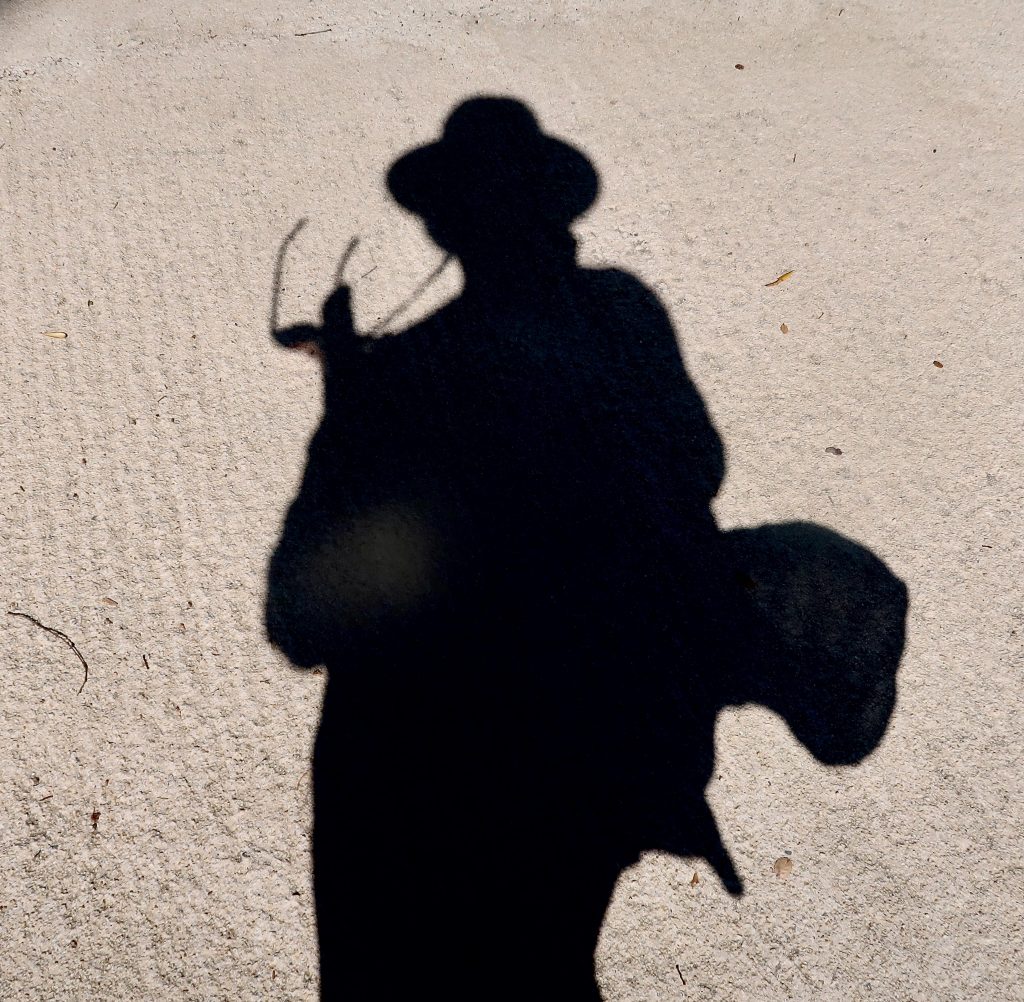In 1970 we drove an old Land Rover from London to Greece and back over two and a half months. We said then that this would be the first of many journeys to Greece – but we never made those journeys. I’m hoping these islands will make up for it …
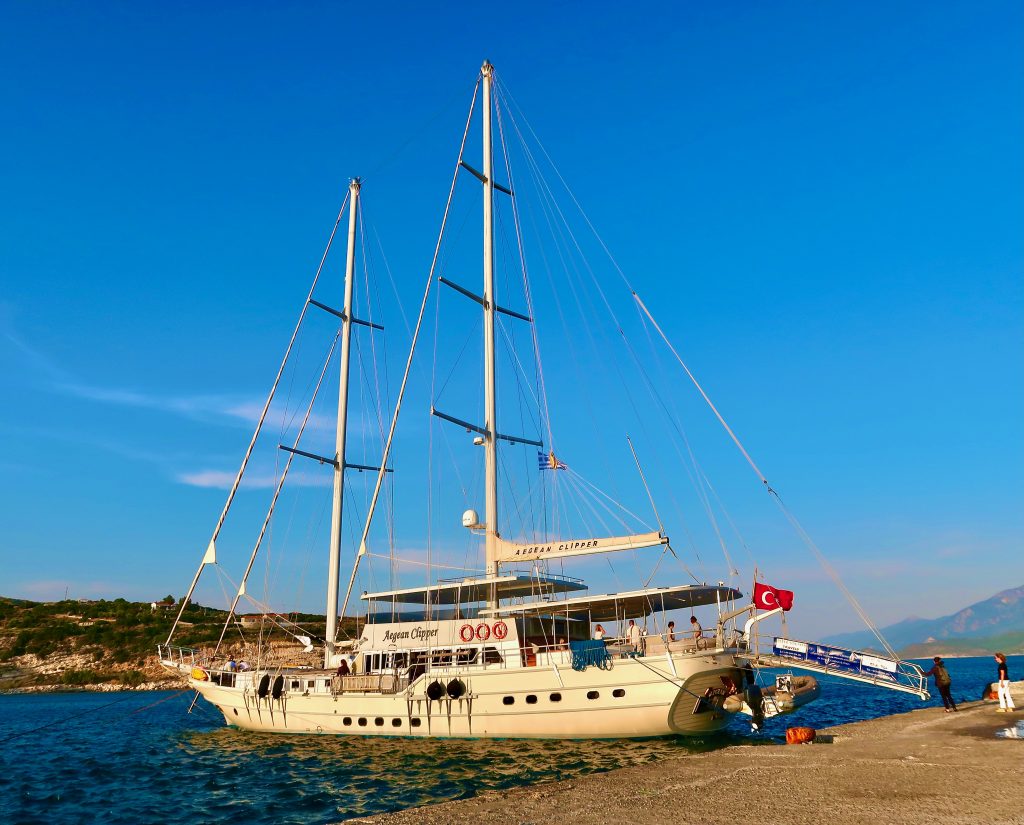
I booked this trip hesitantly during Covid, knowing that it might be postponed, even cancelled. As we got nearer the date I began to have grave doubts, dithering about sailing in a ‘gulet’ with eight (as yet unknown) other people. It just conjured up ‘mal de mer’ on many fronts.
But as the date grew closer, I had to accept the uncertainties that stalked my psyche and – after long and probably Covid ridden queues at chaotic airports – we finally made it safely to Bodrum, where the Aegean Clipper was berthed in the harbour, ready and waiting.
Finding a plane to take us had meant we had had to go two days early (a big thank you here to Dennis and Stan from ‘Dial A Flight’, who saved us not once, but twice).
The Su hotel in Bodrum was a welcome haven – a small, Turkish, hidden paradise, only ten minutes walk from the harbour. A perfect retreat in which to acclimatise ourselves.

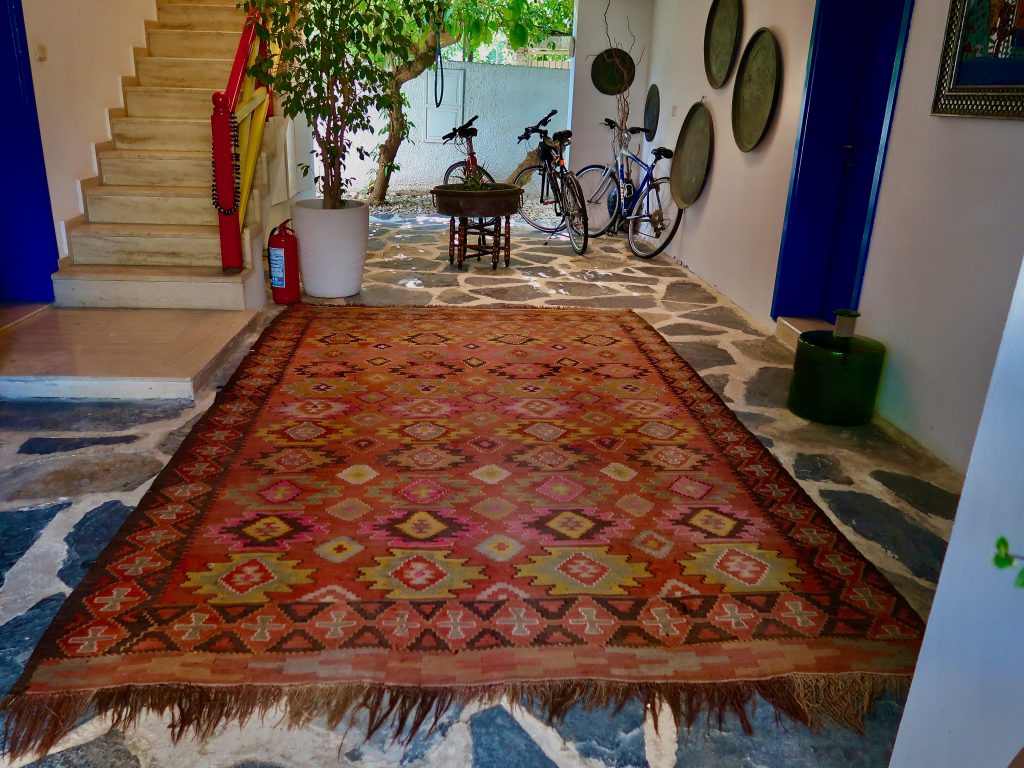
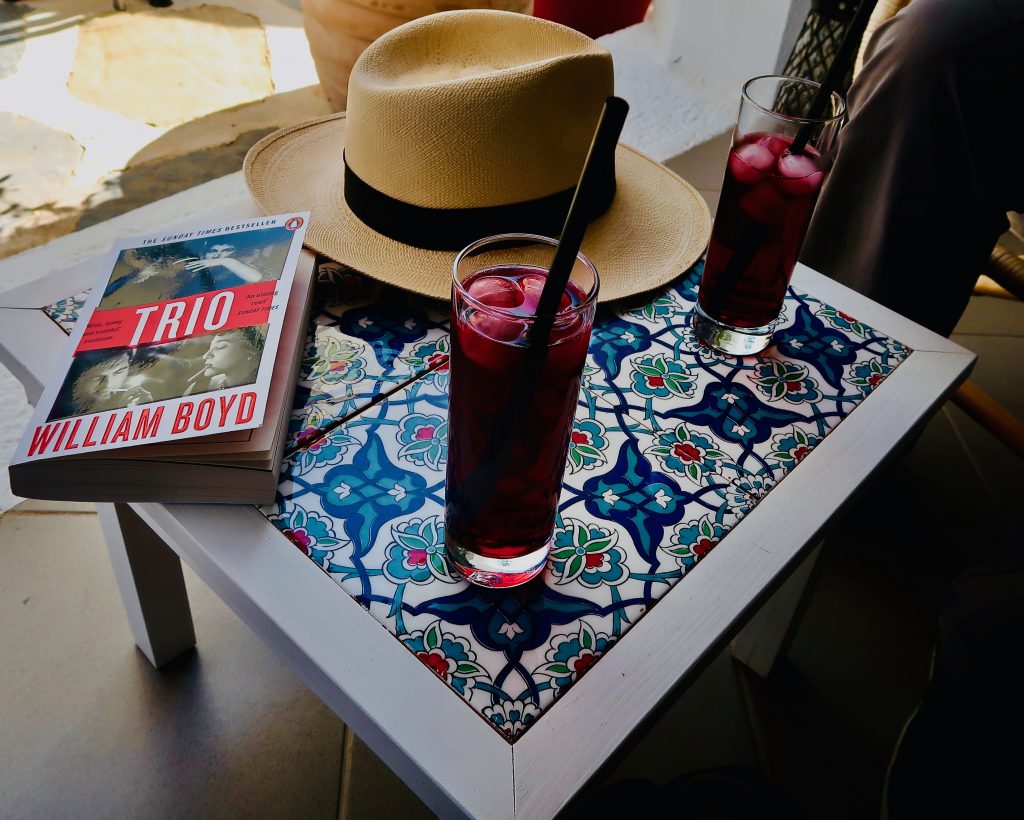
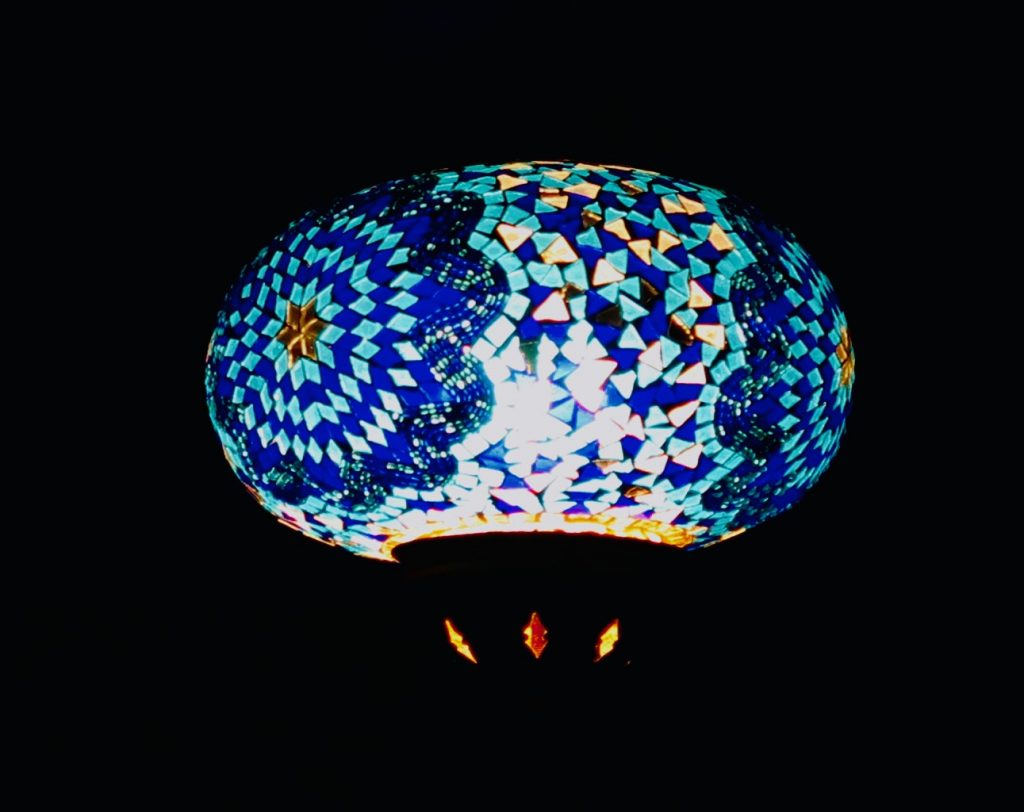

Bodrum castle is a favourite and next day it was a treat to have the chance for a return visit – Turkish ice cream is a treat too …
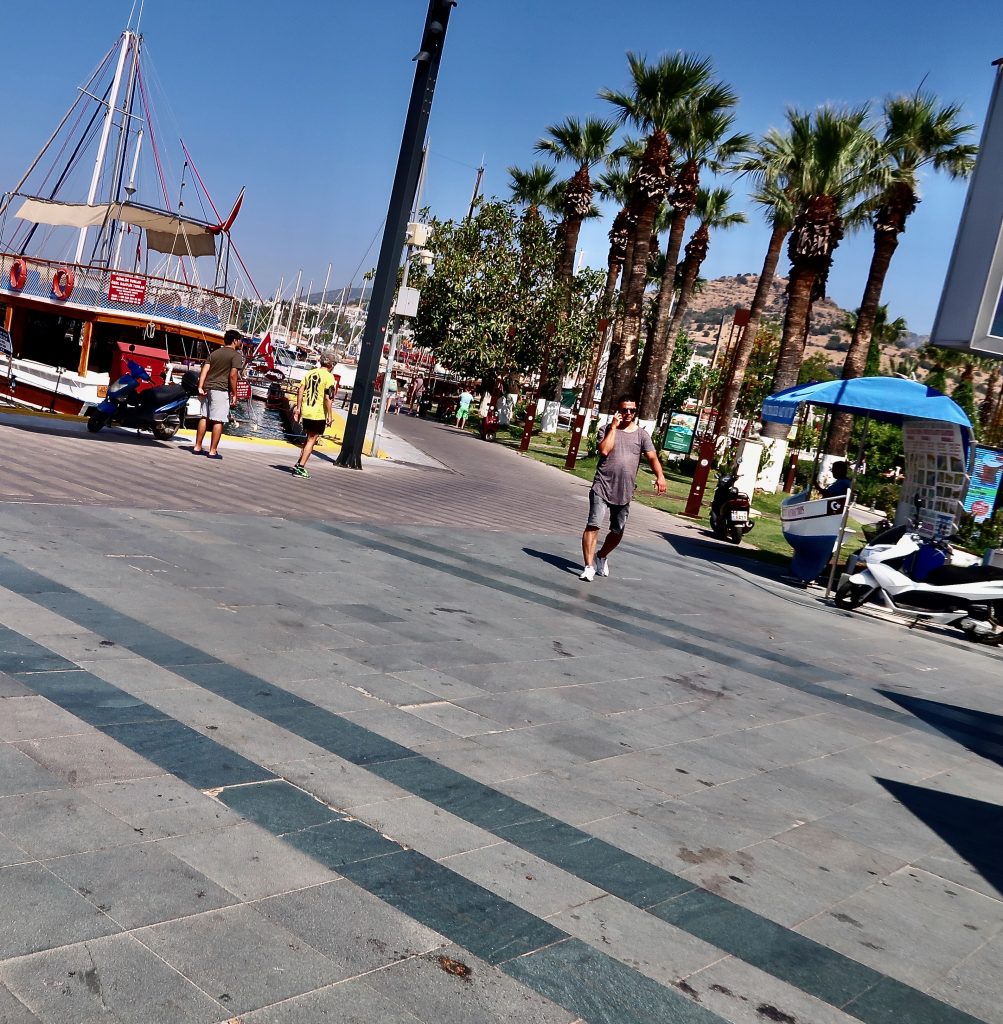
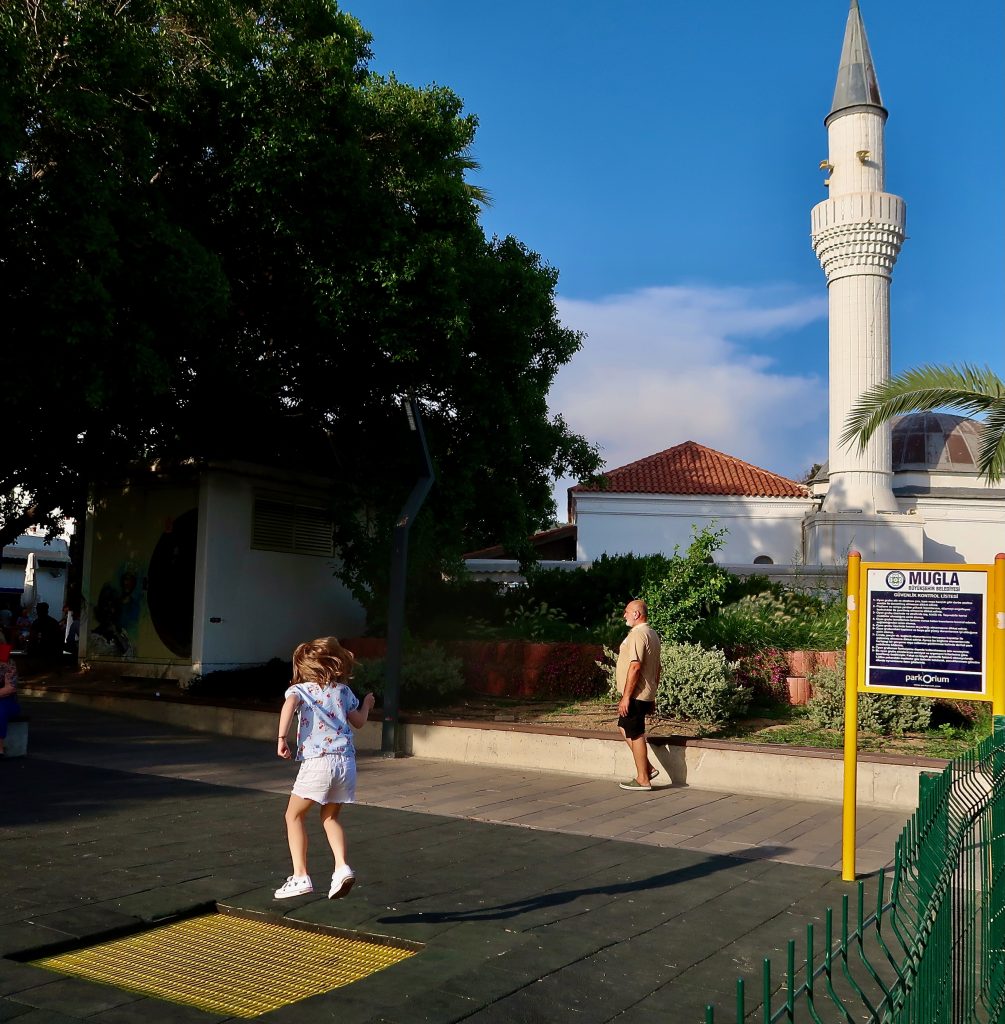
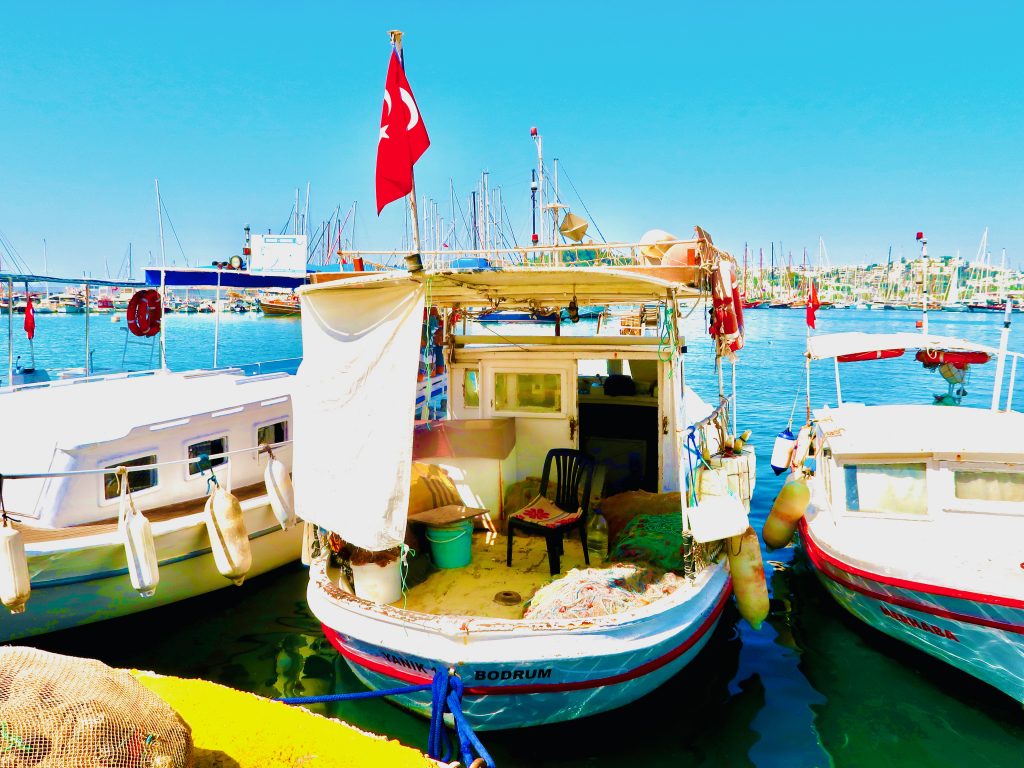
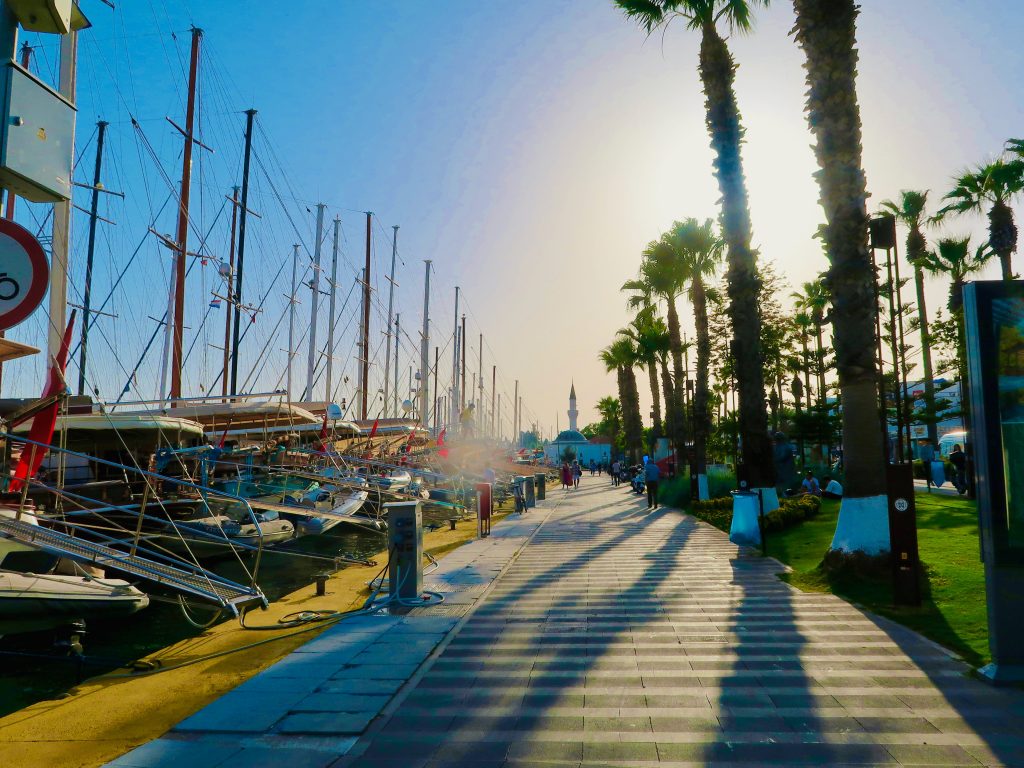
One of these boats is ours – Peter Sommer Travels –
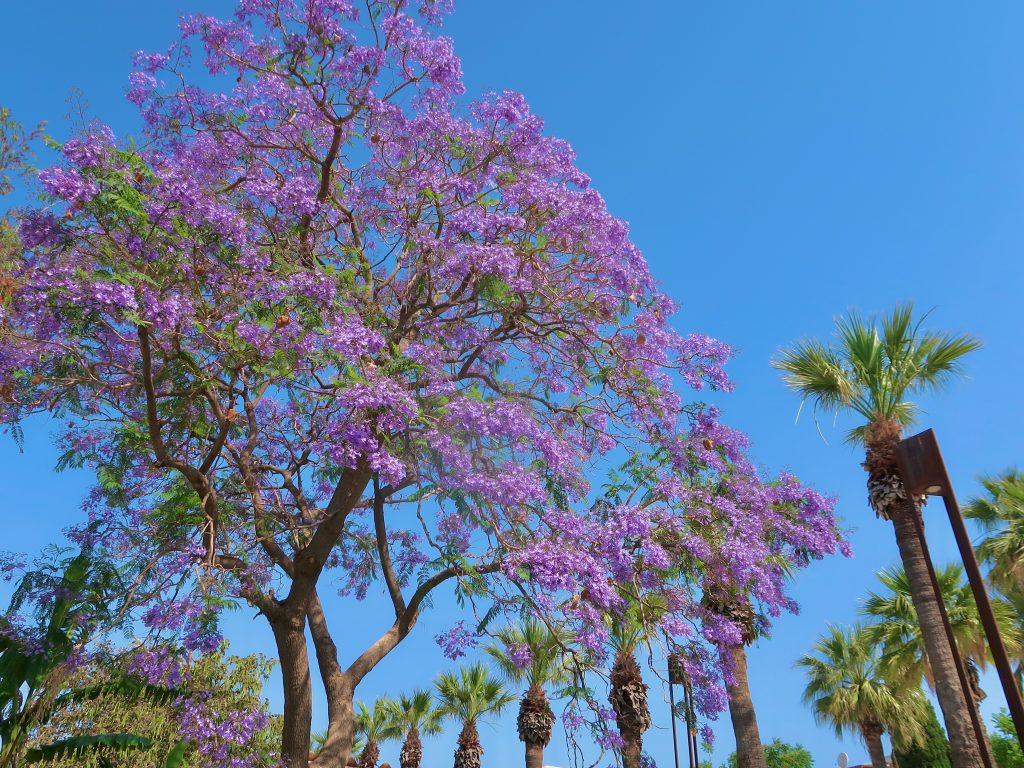
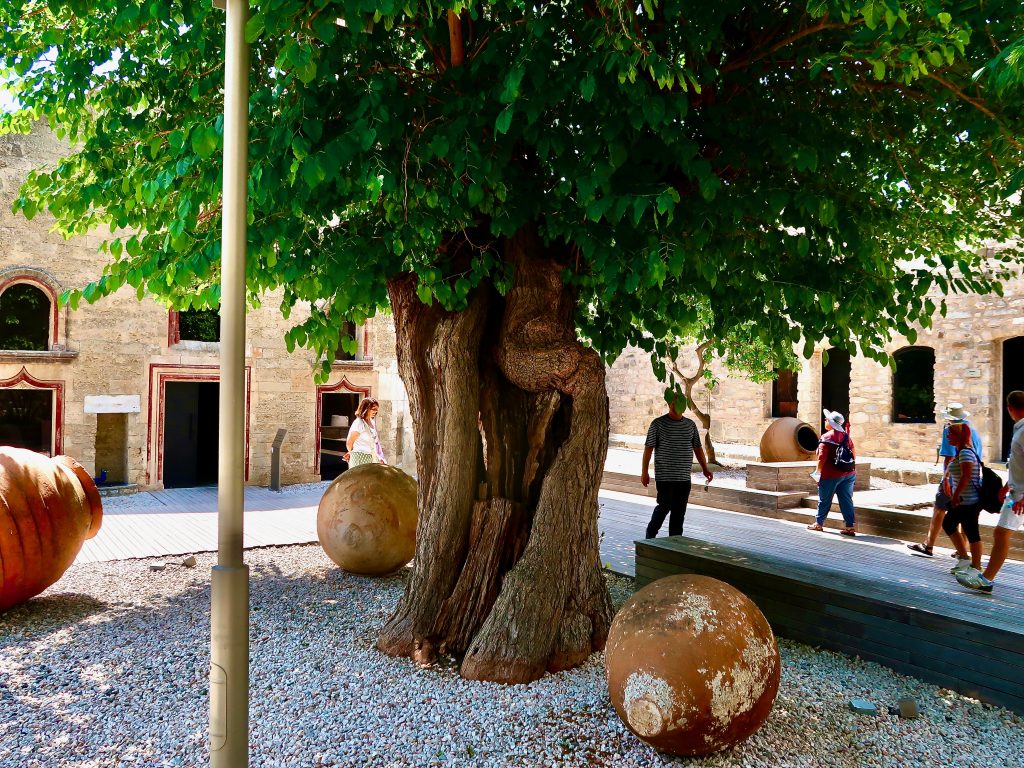
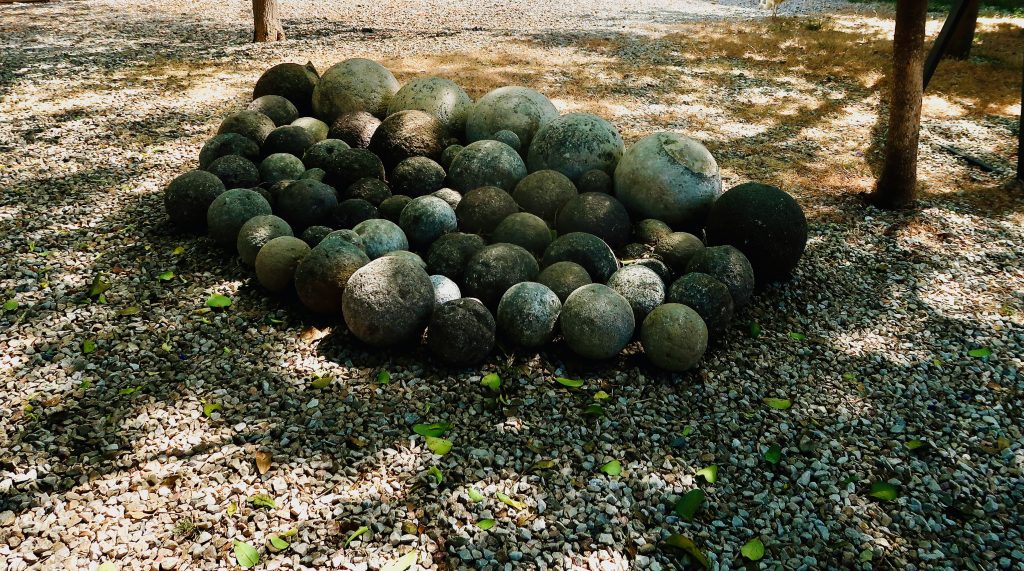
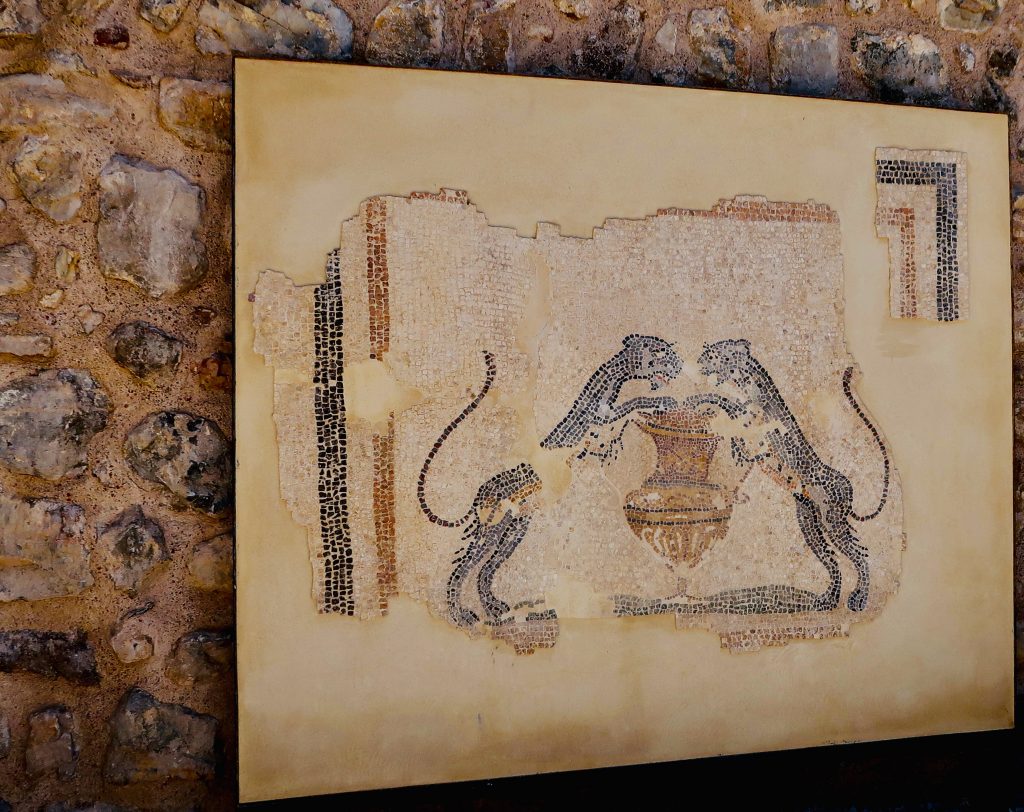
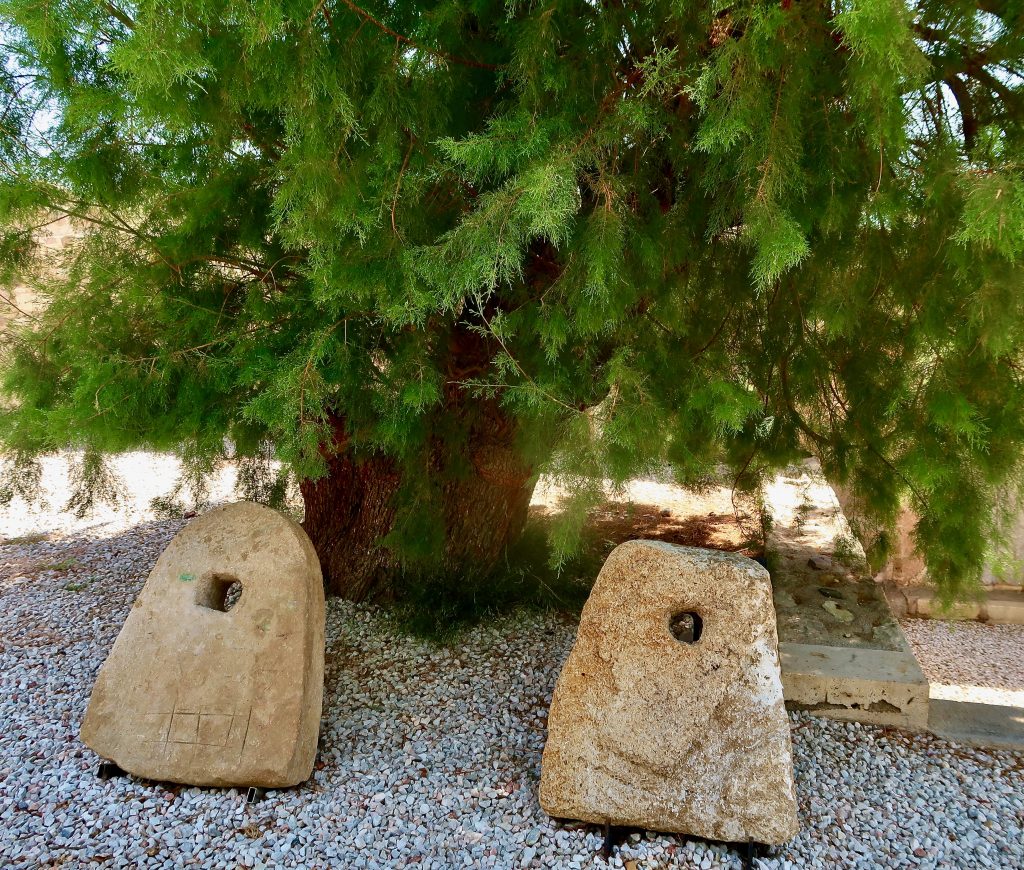
There’s even more to see from the last time we were here. A new room shows another shipwreck, which was full of glass ingots and vases as well as amphorae. I can’t imagine how some of these survived intact, sunk and buried in the sand. Also, how painstakingly other objects have been repaired. The archaeologists have done a magnificent job.

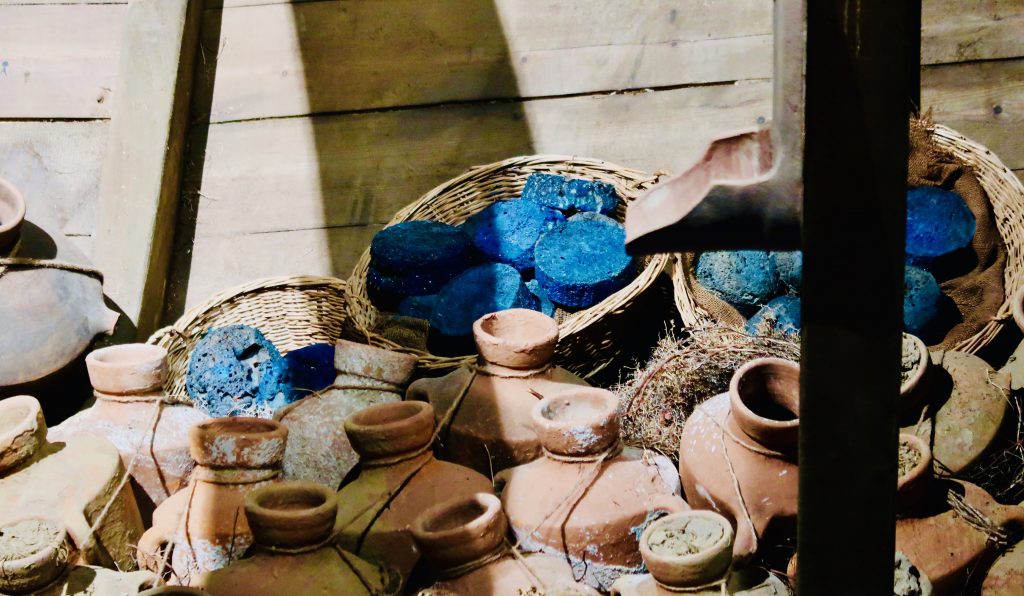
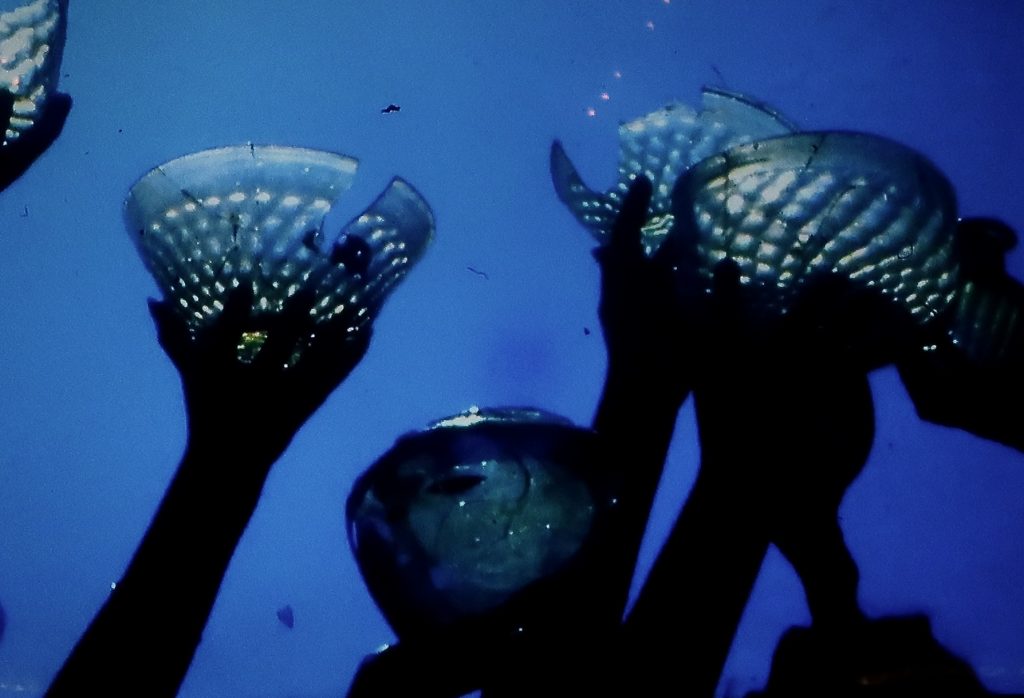
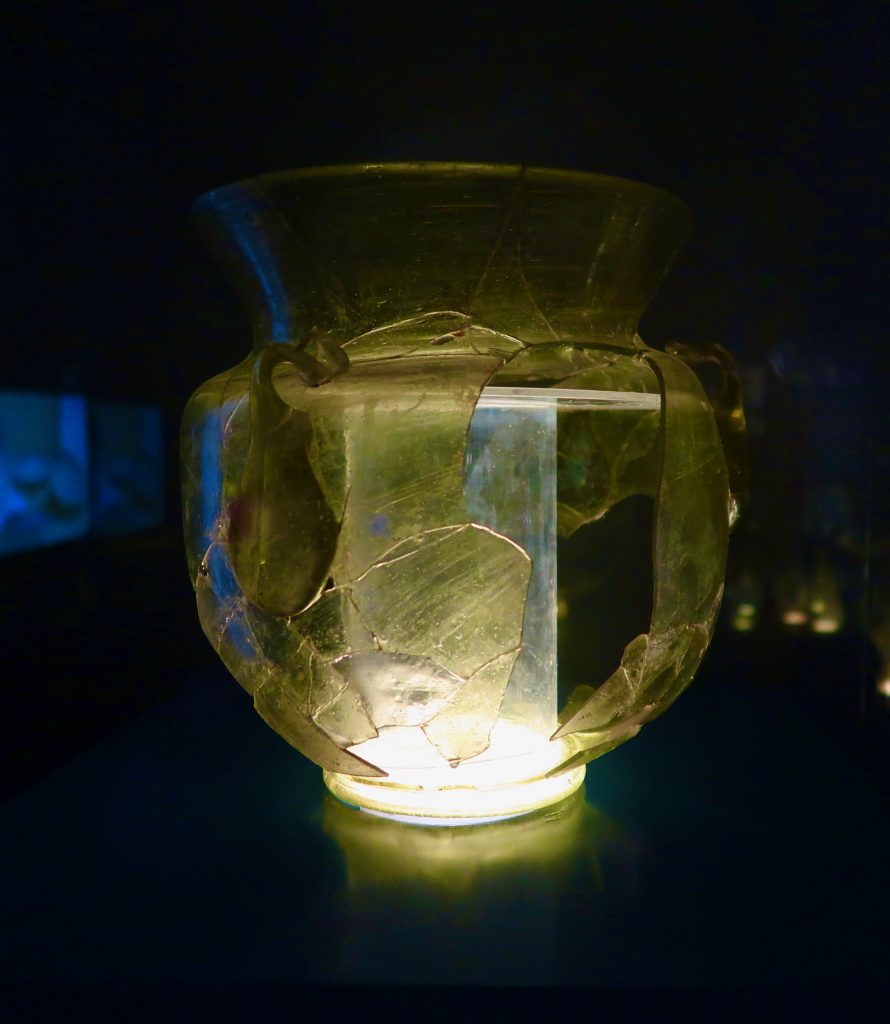
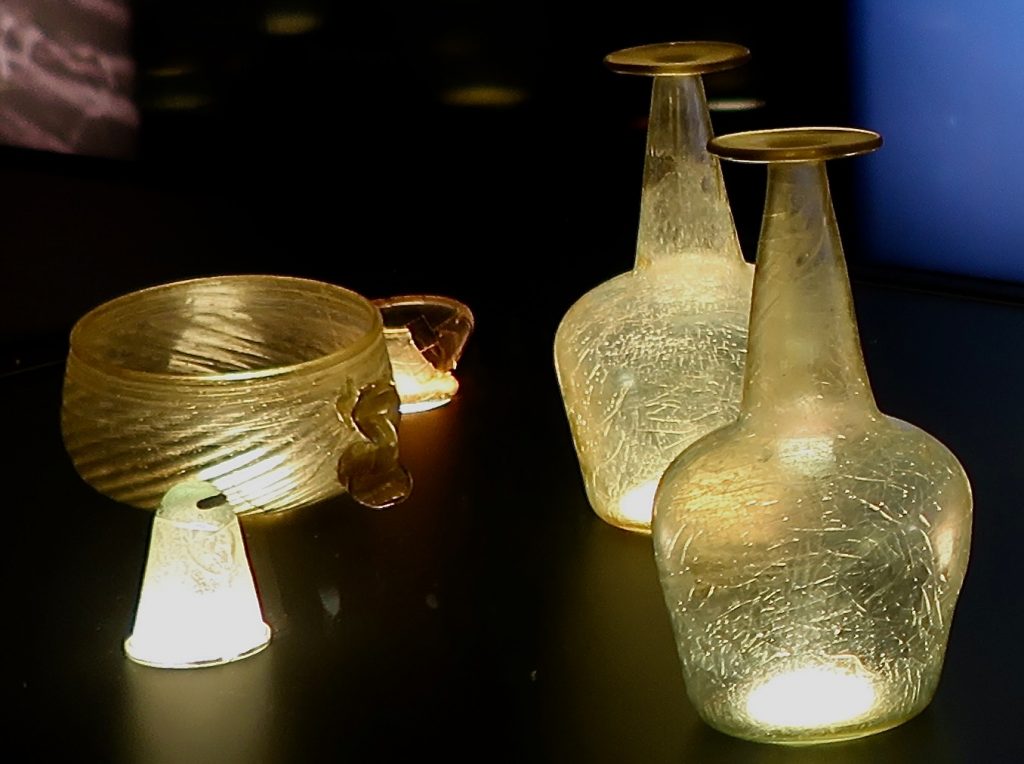
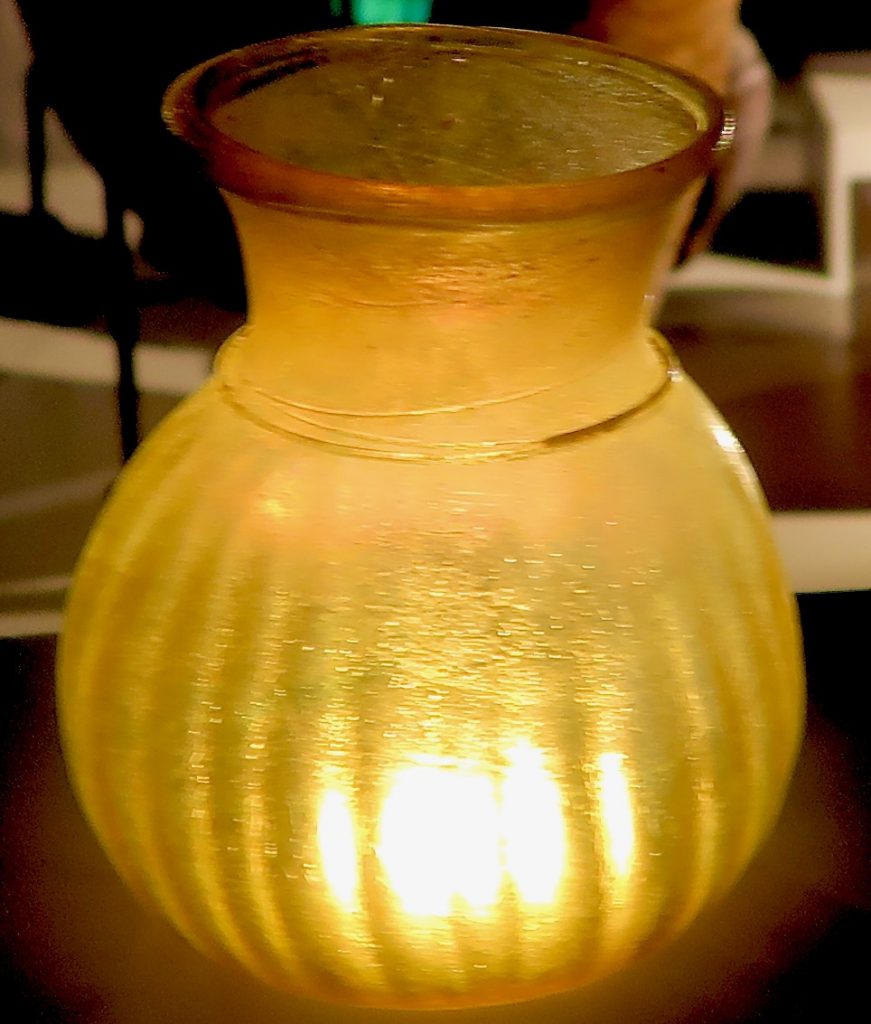
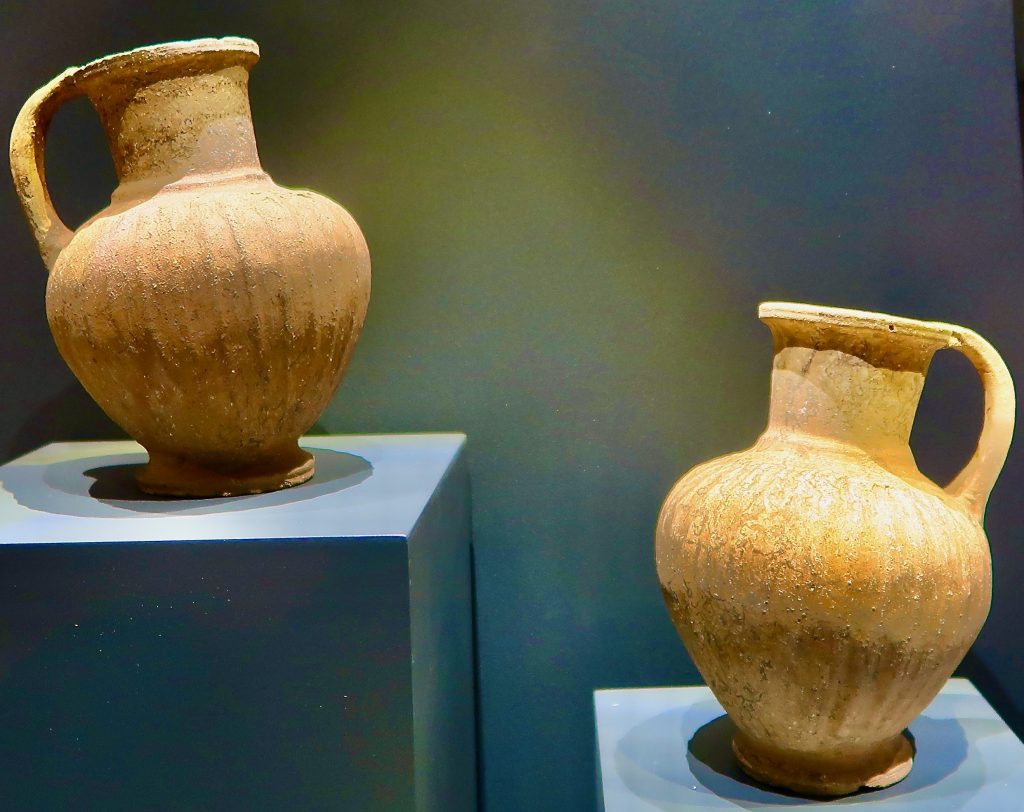

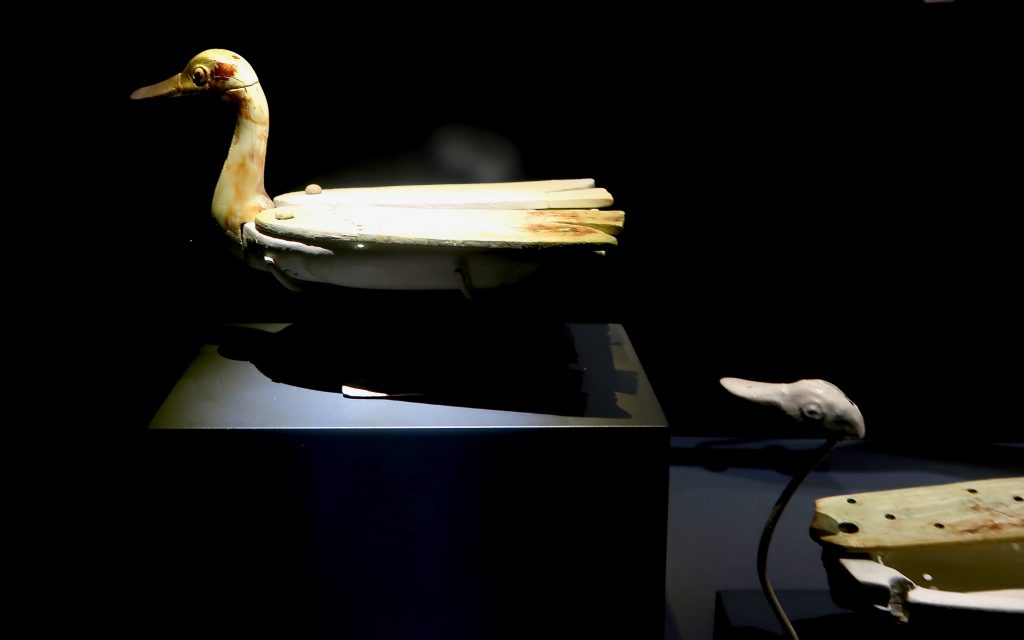
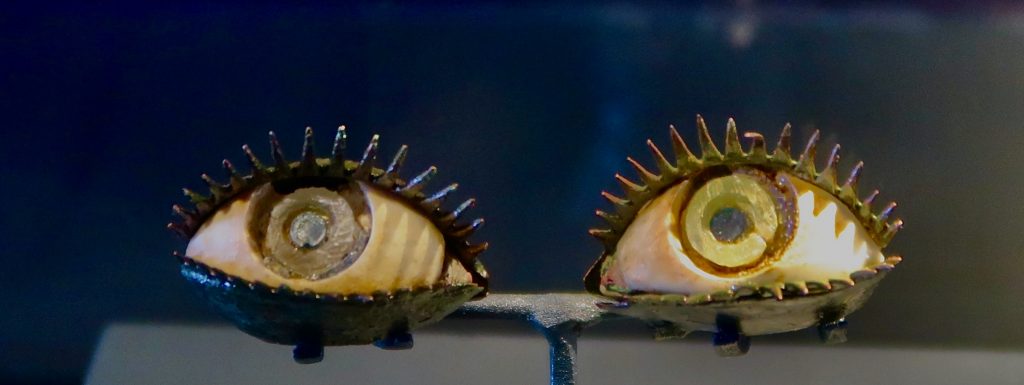

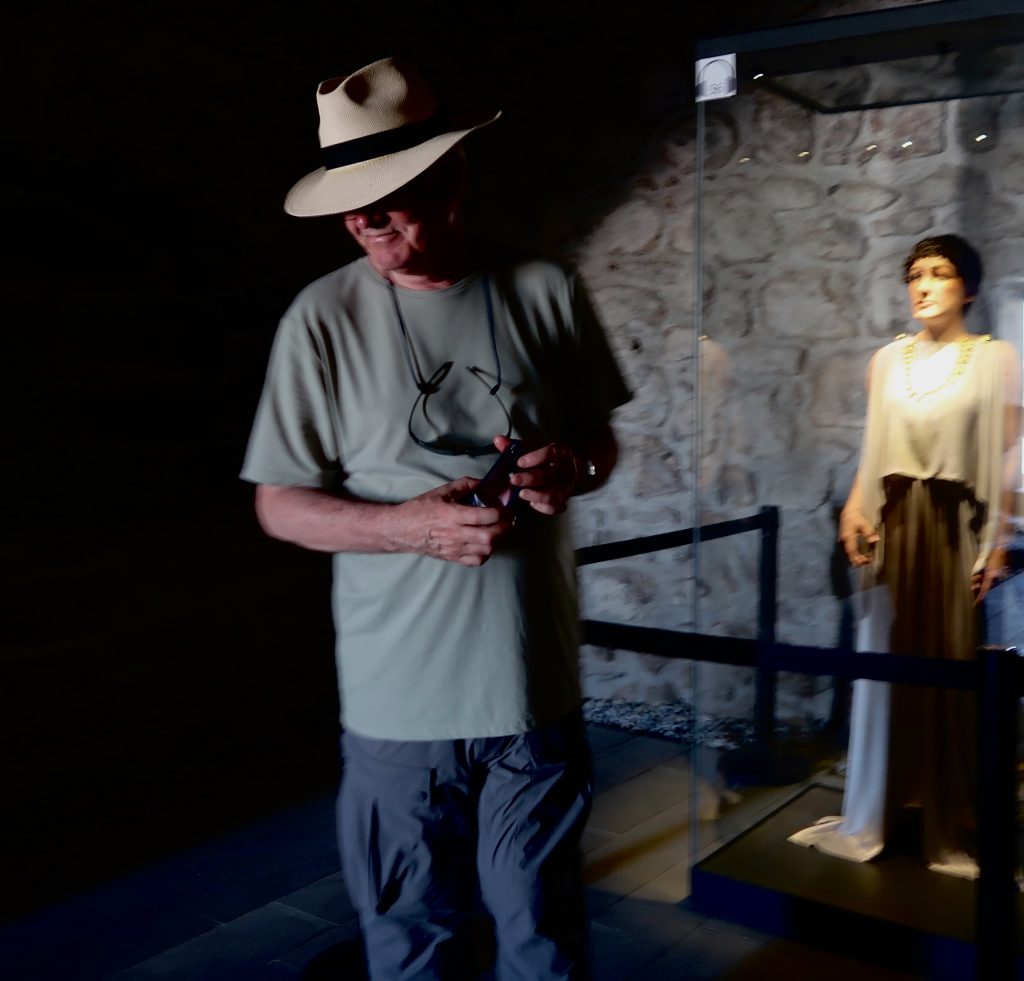

The castle was built by the Knights of St. John from 1402 onwards, although it changed hands many times throughout history. There are four towers – English, French, German and Italian. If you are interested in heraldry, the English tower has a wealth of it to pursue. At some point fourteen cisterns were carved out of the rocks beneath the castle. The location is stunning with great views over the open harbour and sea.
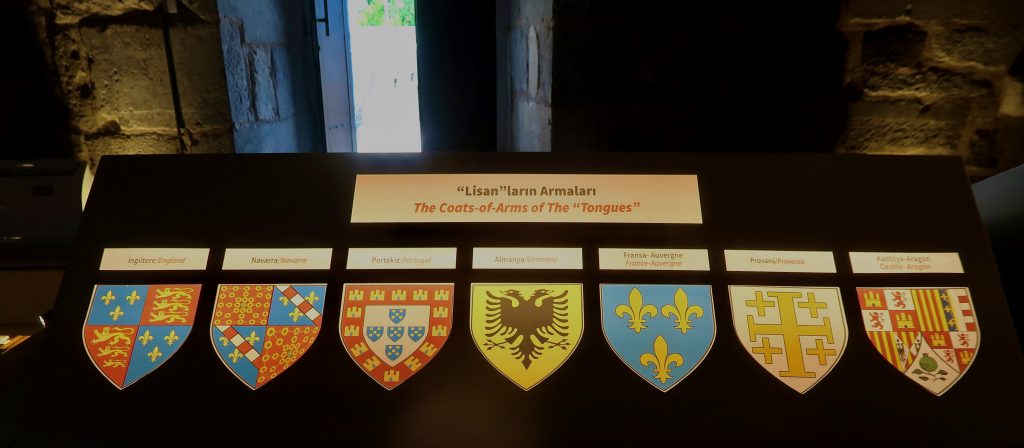
Later on, the castle lay empty but in the early 1960s it became the location for the Bodrum Museum of Underwater Archaeology. The sinister calls of the peacocks which roam the battlements are a fitting backdrop to a violent history.
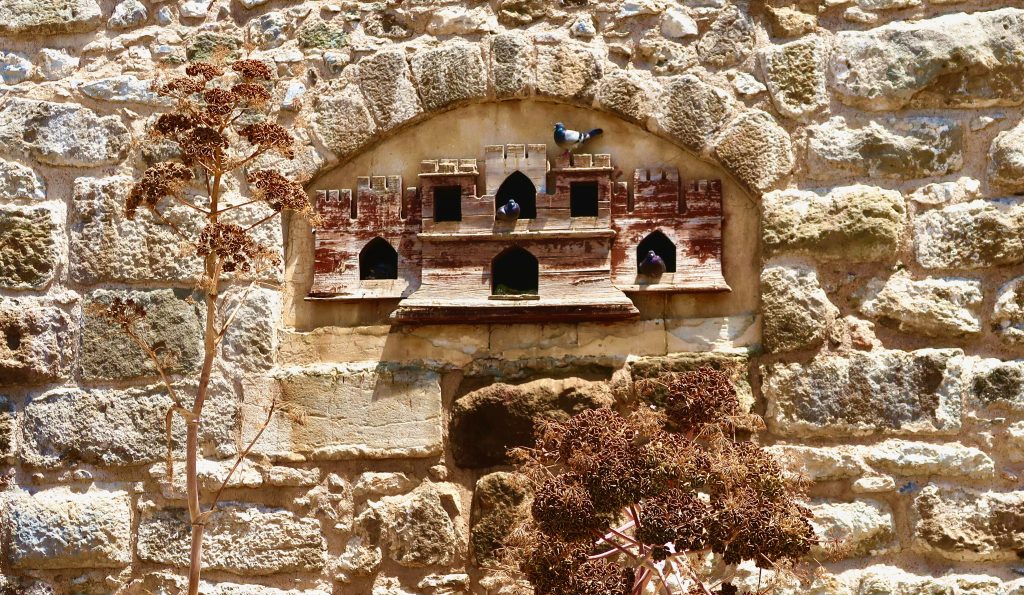
Time for a cup of sage tea which we find at the Maritime café, looking out over the water. With a little lemon and some sugar or honey, it makes a very refreshing drink.

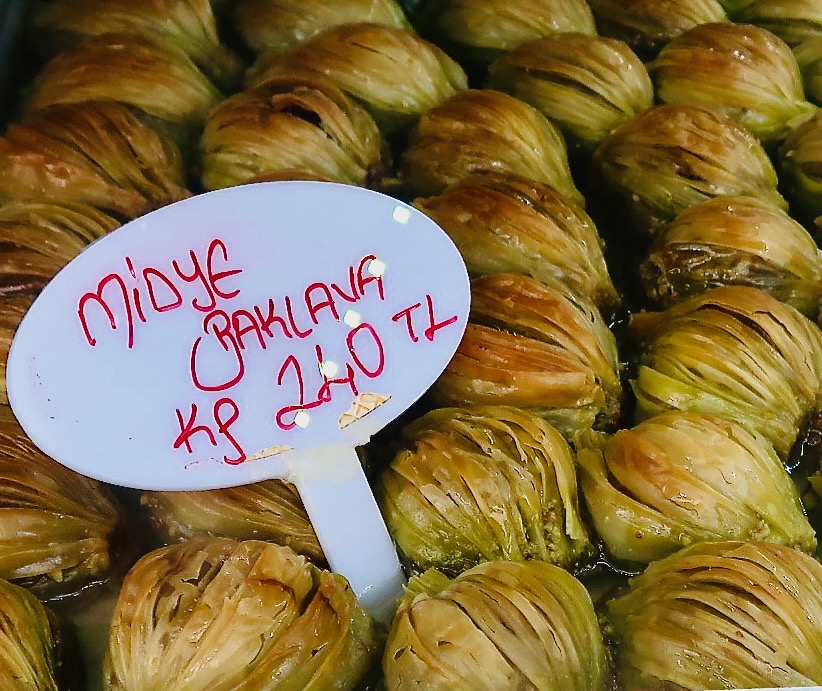
A concatenation of cats prowl around town in the hopes of sharing whatever you’re eating. They are bold and a law unto themselves.
You can skip this section if you don’t like cats. I don’t have a cat but was curious to see how many different types there were in Bodrum and among the islands.
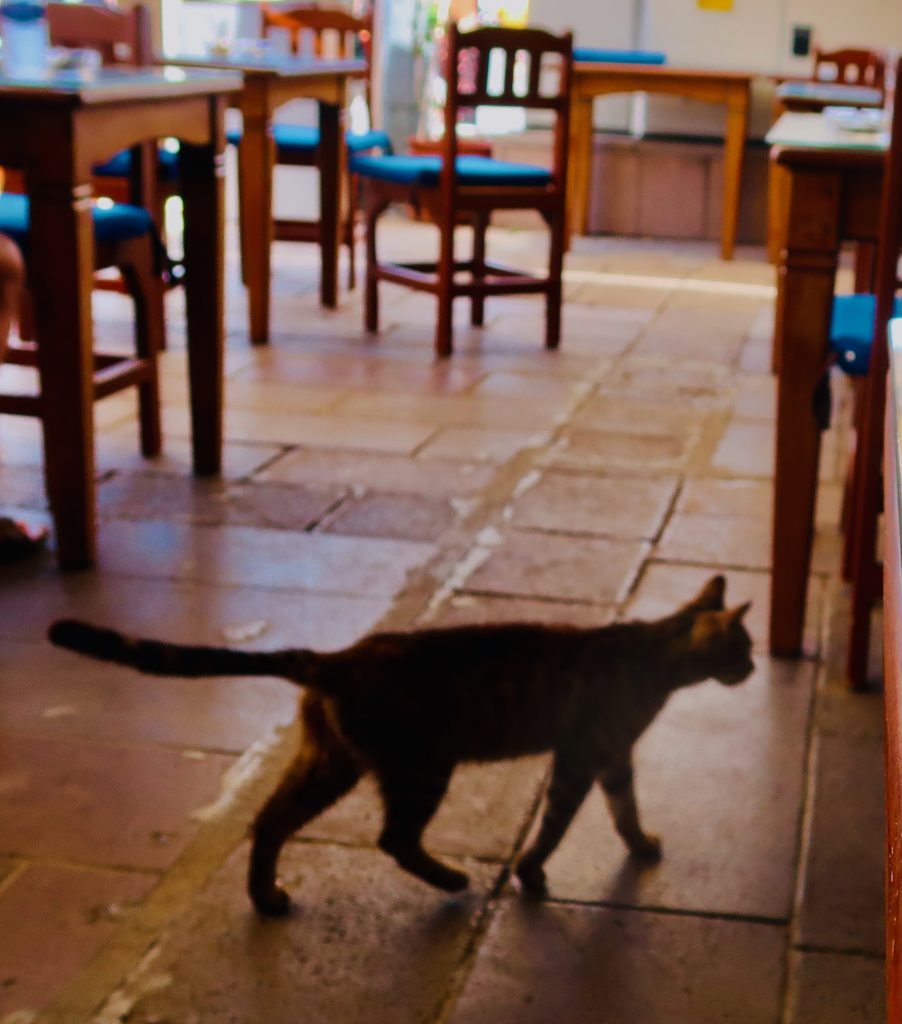
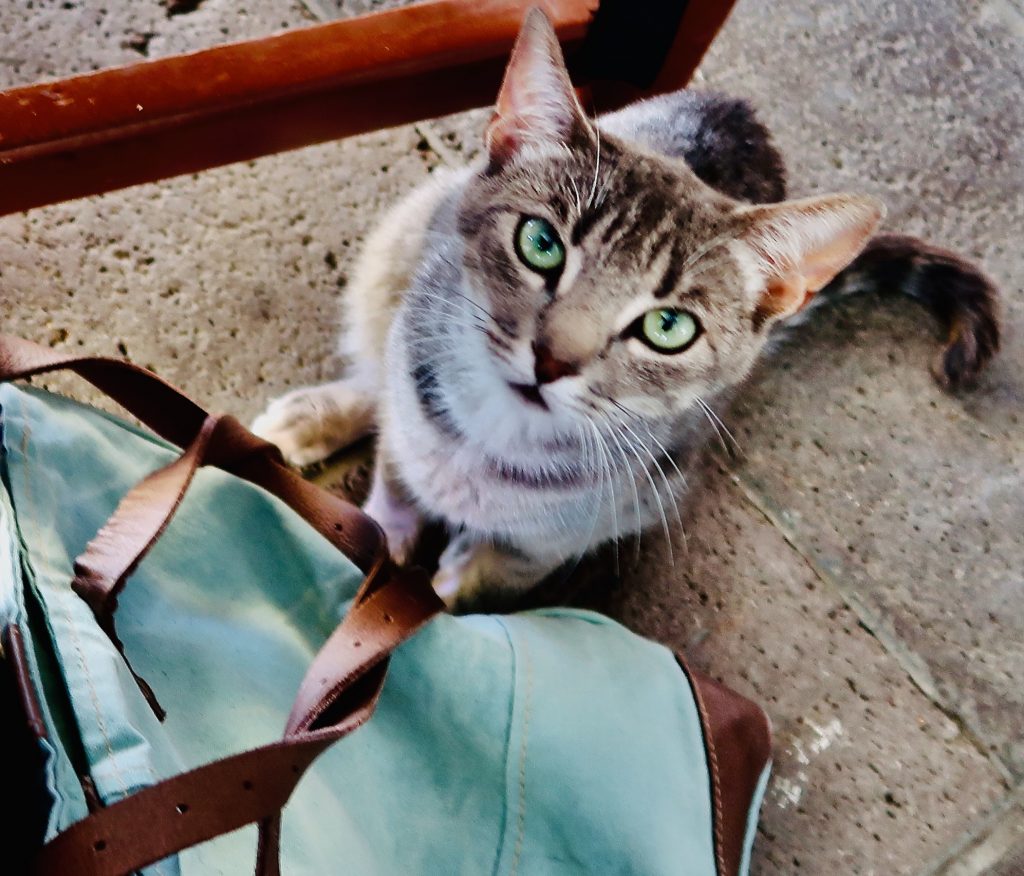
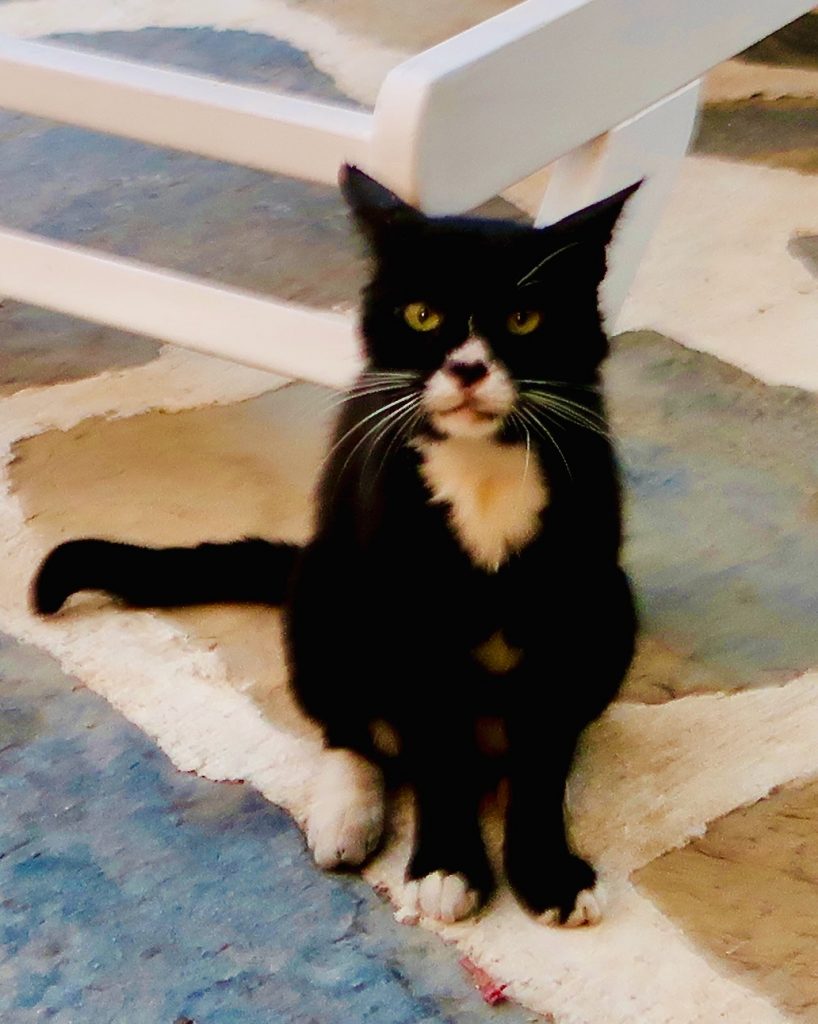
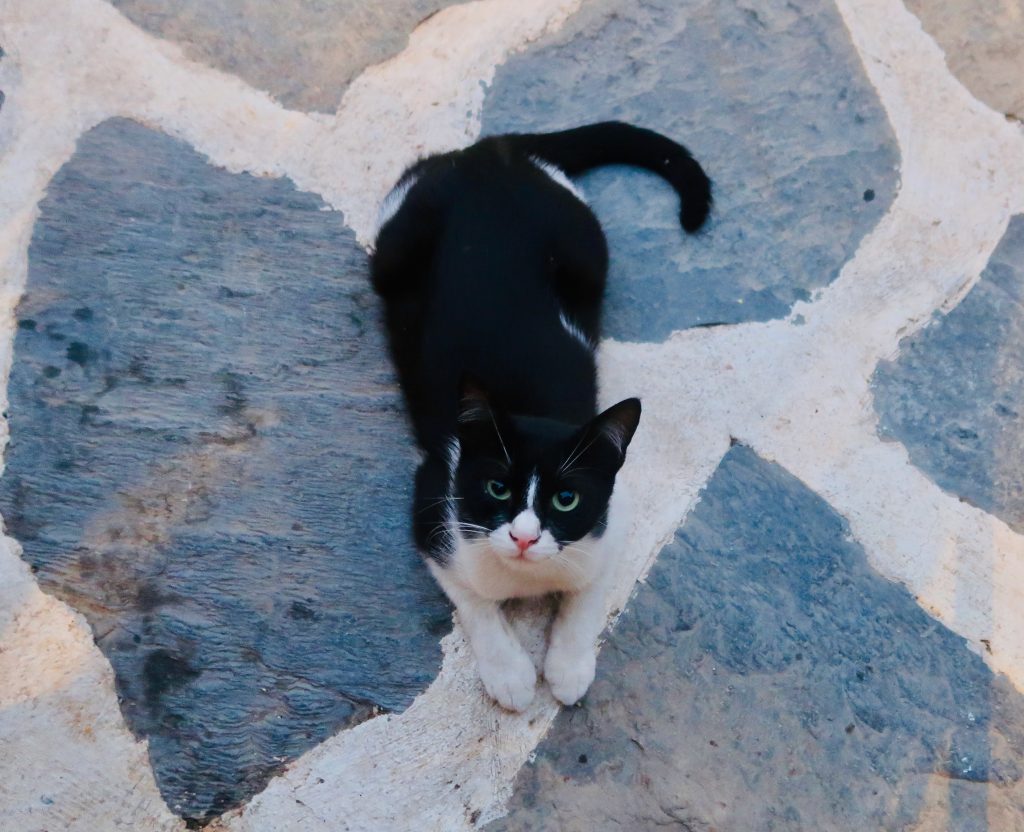
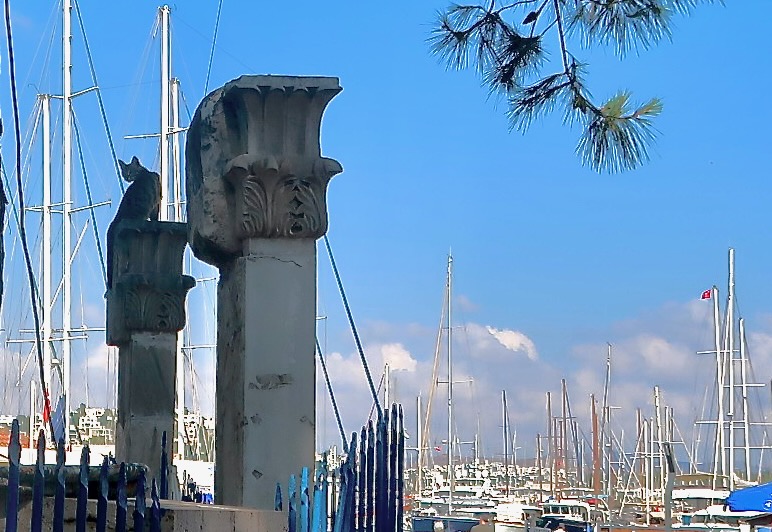

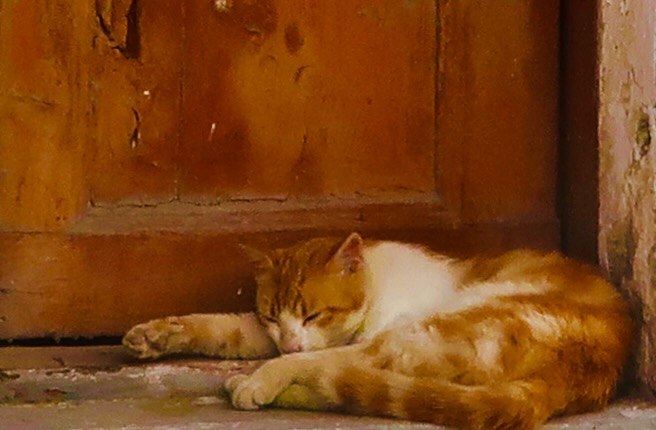
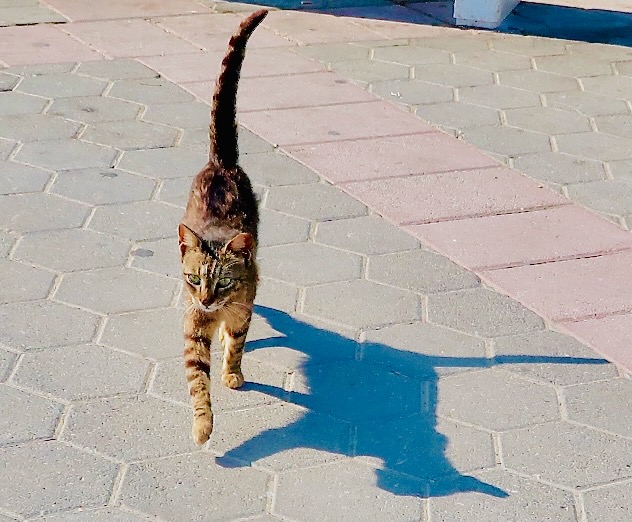

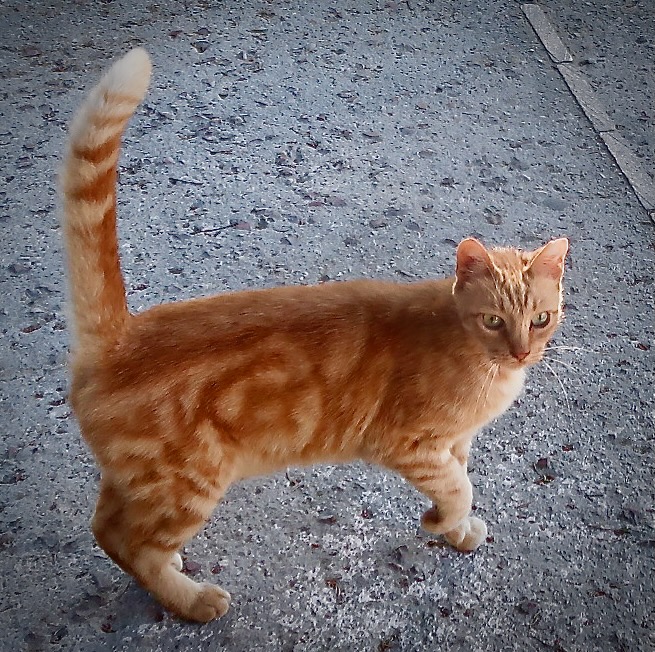
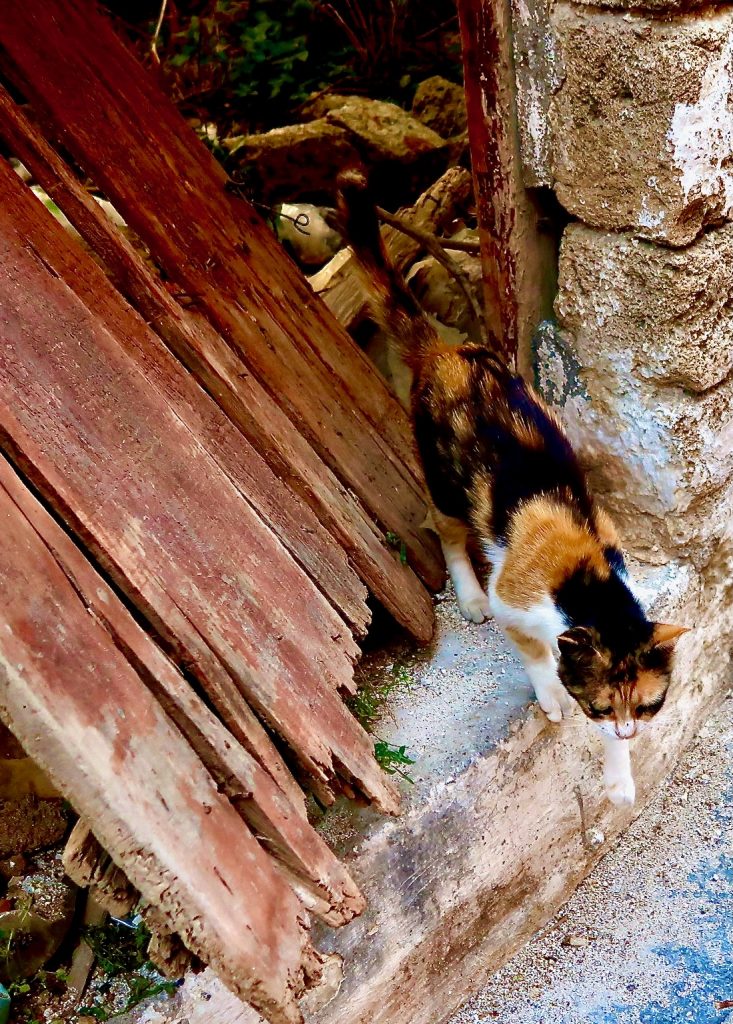
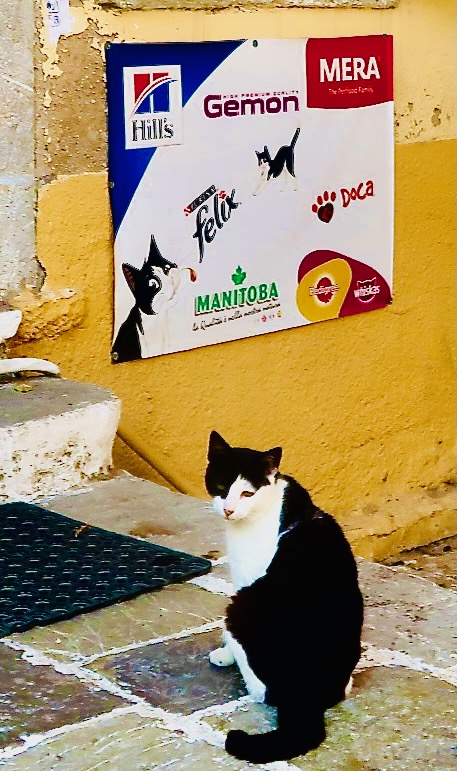
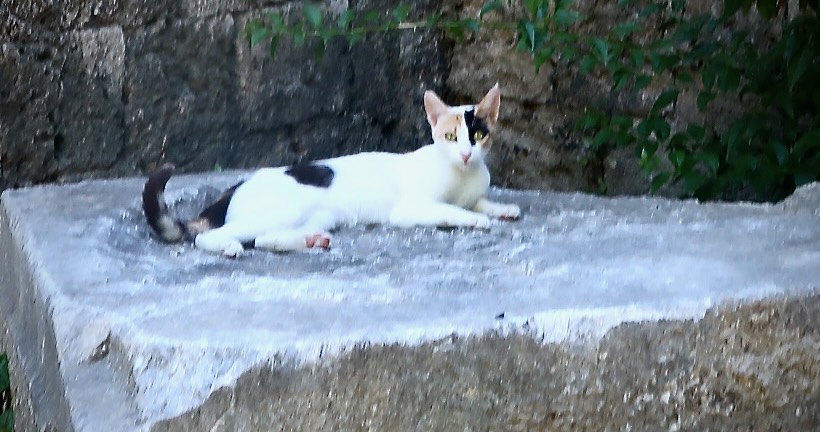
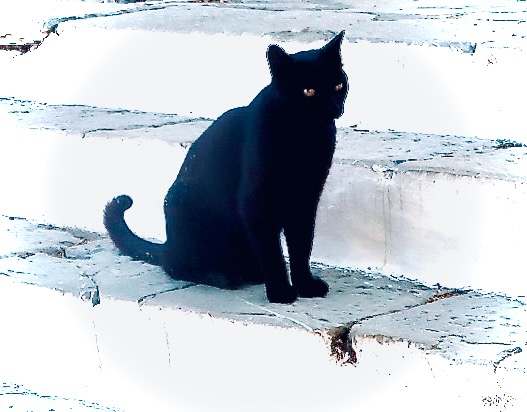

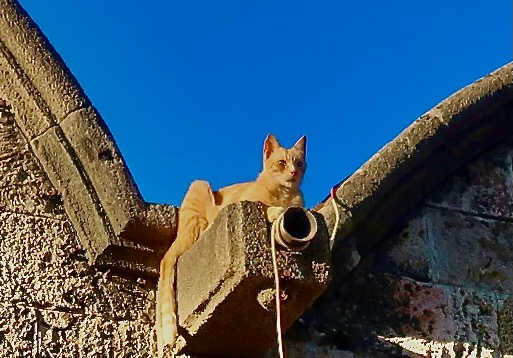
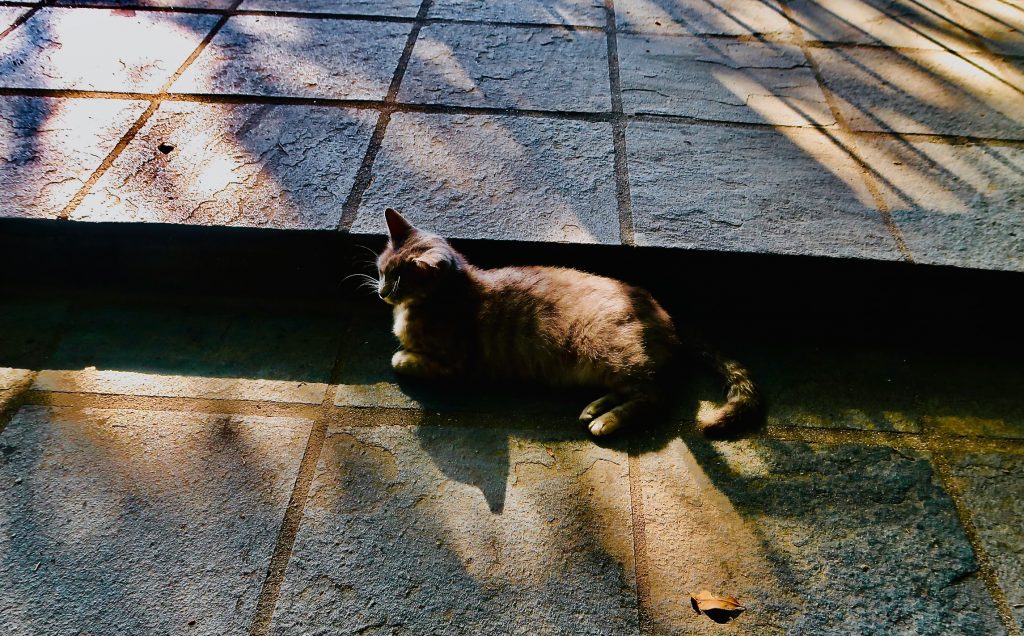

We’re now on board the Aegean Clipper, meeting our fellow travellers, captain and crew with our two guides, Michael and Nota. Setting sail for Kalymnos – island of sponge diving.
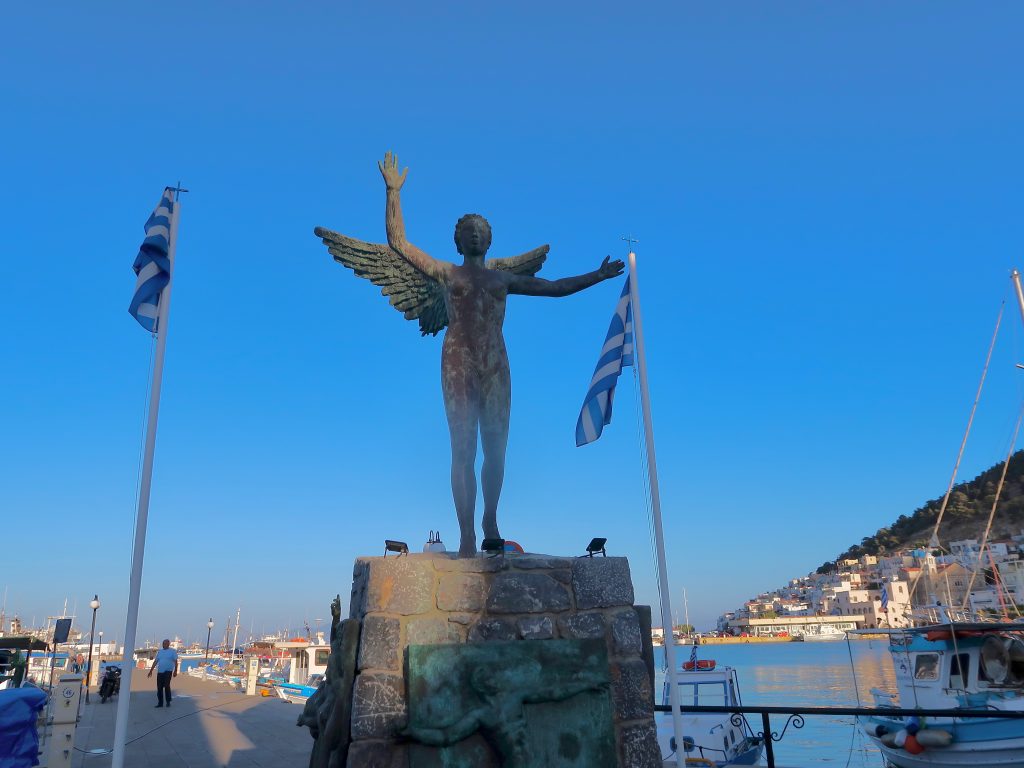
We’ve arrived in Greek waters, where the bronze statue of The Lady of Kalymnos (4th or 3rd century B.C.) was dragged up in the nets of local fishermen in 1995 and is now displayed in the archaeological museum here. She looks sensational, even if on the very heavy side! There must be other statues on the sea bed waiting to be discovered and hauled up …
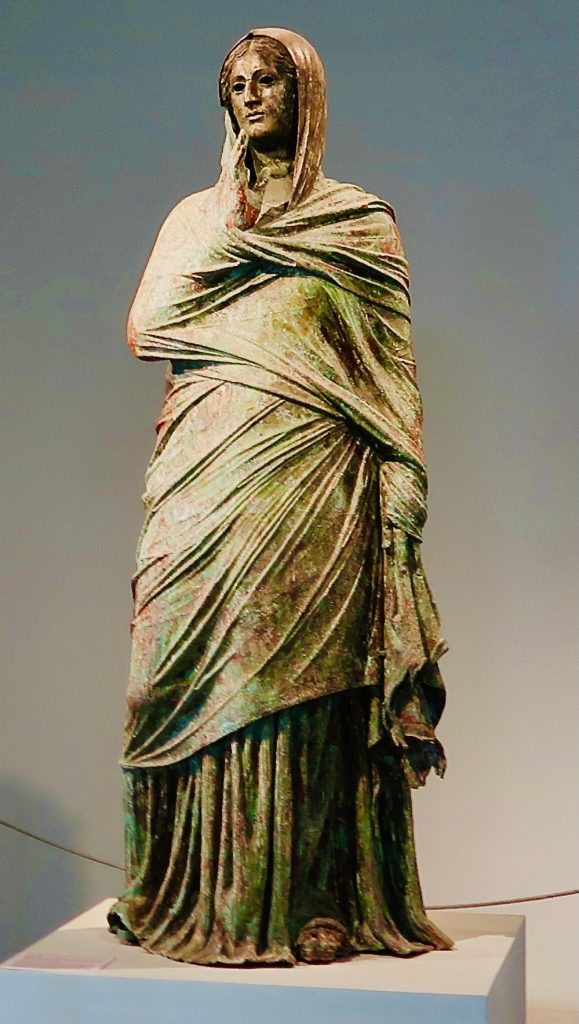
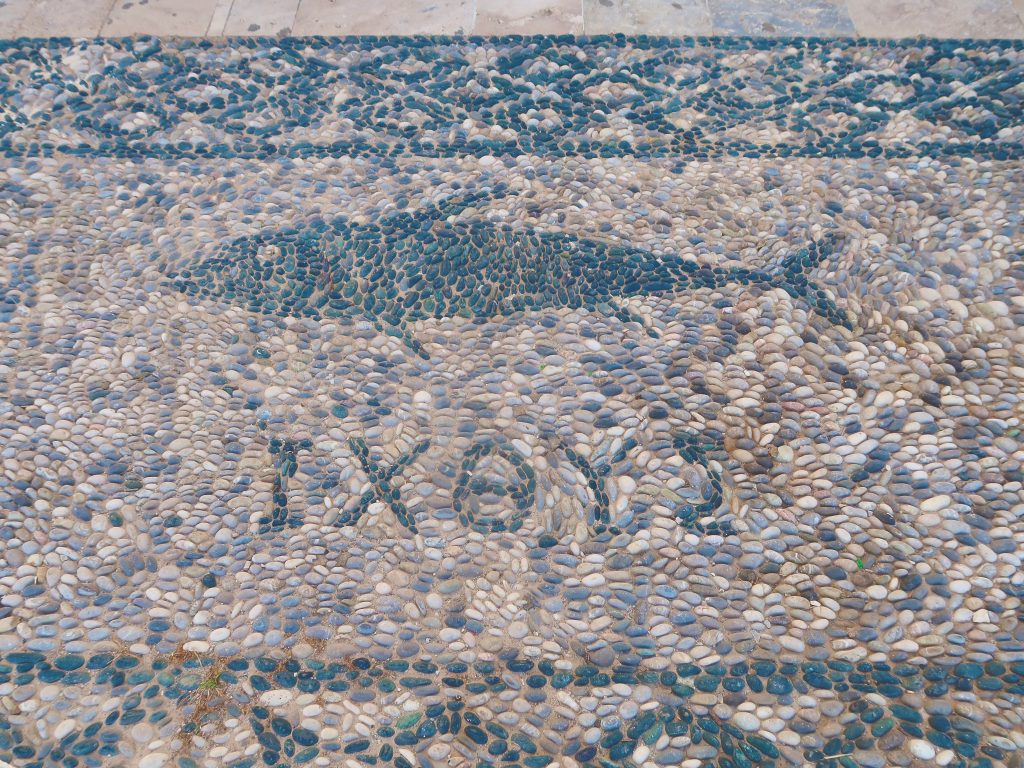
These attractive pebble mosaics can be found throughout the Dodecanese islands and in other parts of Greece. They were to be seen both in public places and private houses. Some are black and white, but coloured pebbles were introduced later on. Where did all those pebbles of a similar size come from I wonder?
We had docked in the main port of Pothia and since this is the last Greek island which still has a sponge diving fleet, we were shown a warehouse by the harbour to see the different types of sponges and how they are treated to make them ready for market. They are cut off the rocks and what is left continues to grow again. There’s one called an elephant ear sponge – unmistakable. I bought two very fine ones for washing your face, which are known as ‘silk’ sponges.
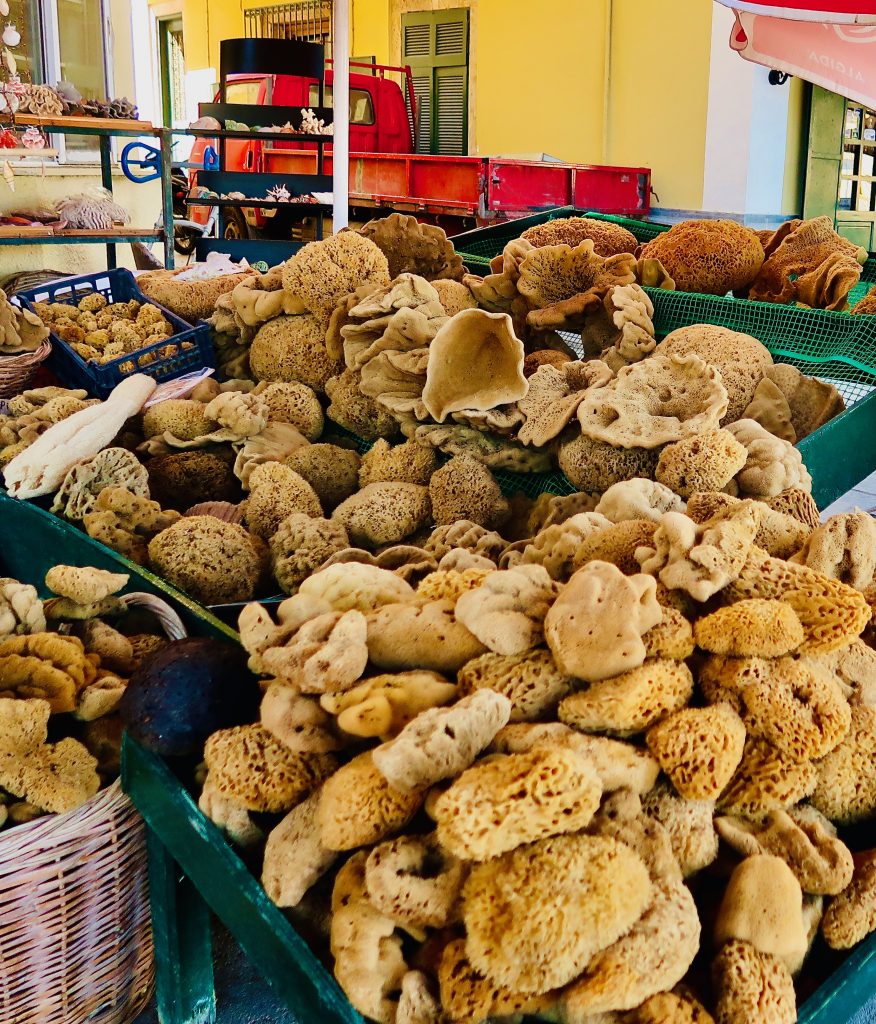
I was rather charmed by a man who has a shop nearby. He told me that he’d been diving for sponges his whole life. I had to buy some from him as well as from the warehouse so as to remember this delightful encounter!

We have a fish dinner on board, cooked by the captain and tomorrow morning we leave early for Patmos and its famous monastery of St. John.
I wish I had brought less to wear as the cabins are small and John is not very tidy – but the shower and the loo work very well and that’s really what matters. There’s a stash for books at the bottom of the bed. I finished ‘Trio’ by William Boyd, which is very entertaining. John has kindly lent me ‘What Strange Paradise’ by Omar El Akkad. Worth a try … I wonder what we will have for breakfast…

The monastery of St. John on Patmos attracts both pilgrims and tourists. It’s a long, meandering walk uphill to The Cave where Saint John is said to have had his vision of The Apocalypse. A painting is pointed out, said to be by El Greco – but looking at it doesn’t convince me.


Some parts of the monastery are closed due to Covid, which makes Nota frustrated. However, she takes us to the museum, where there are a number of paintings.
One stands out primarily because it’s a portrait which looks 3D rather than the usual flat way of painting portraits at that time. In fact, this person (angel) looks to me very like Pierce Brosnan of James Bond fame!
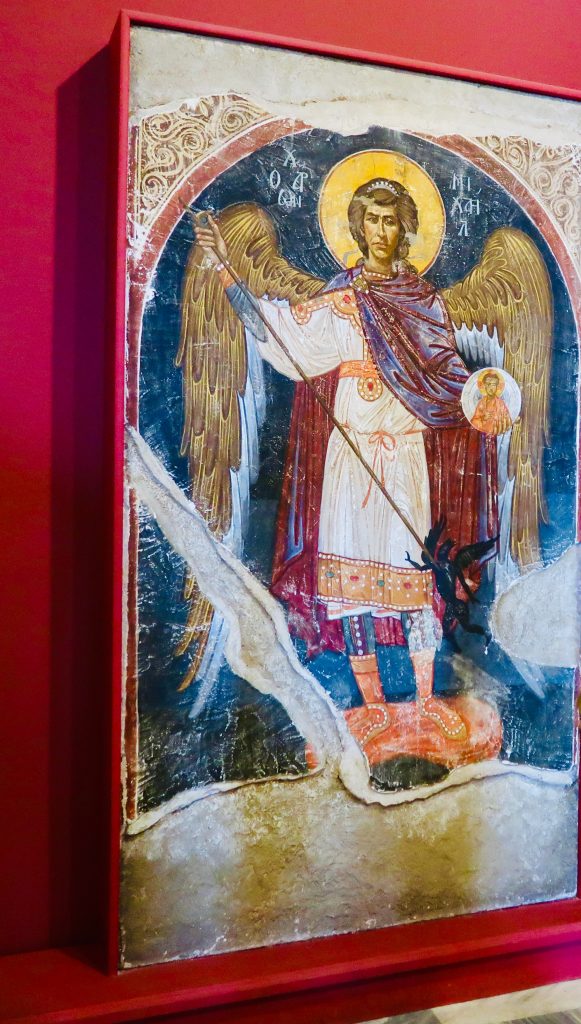
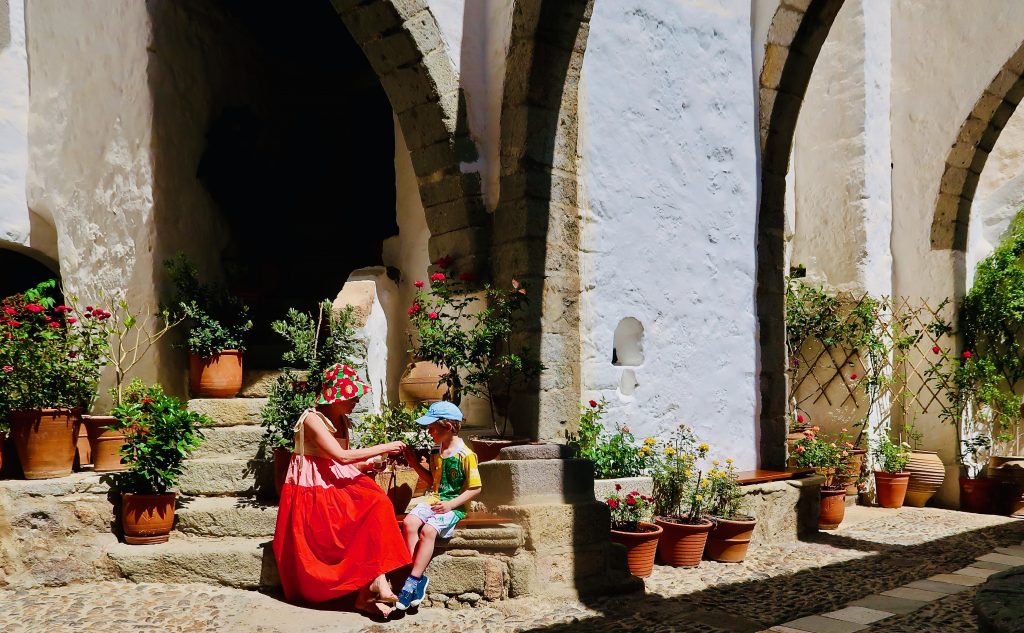
We were waiting for the others to come down from the museum and I thought this made a lovely picture by the entrance.
There are a number of tempting small galleries and cafés on the way up to the monastery. I nearly bought an octopus plate but decided to be sensible. I already have no room in my case and it could easily break if I stuffed it in. Here’s a photo of what I didn’t buy!
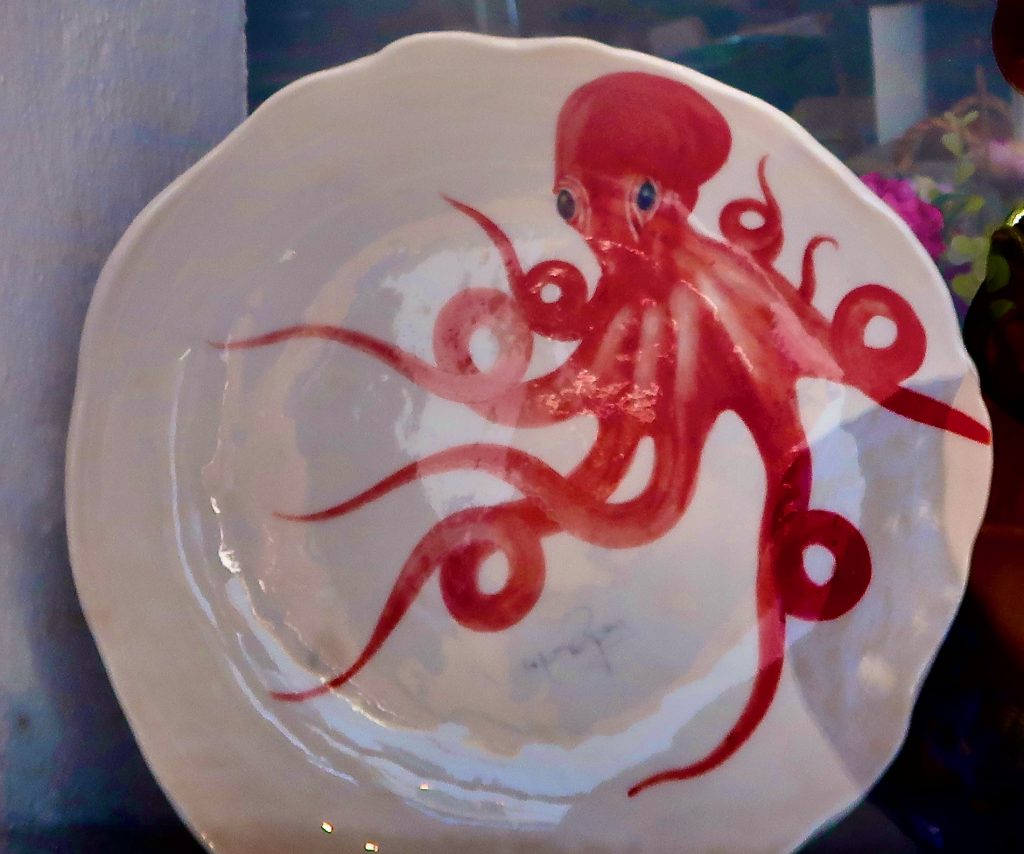
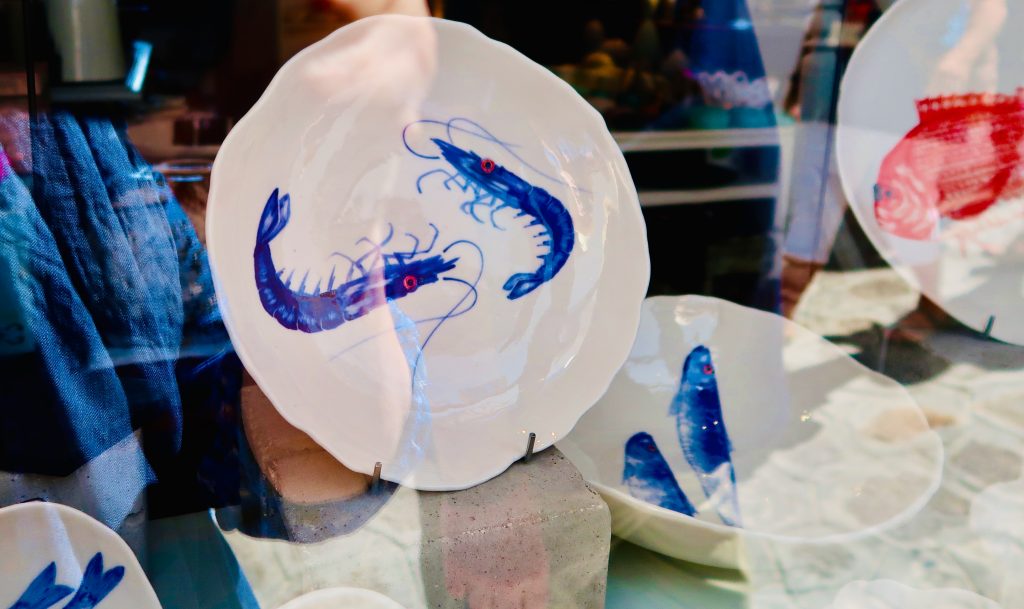
I do like them!
Walking back down the hill to the boat these colours in the window with that delicate pattern appealed. I get a ‘high’ looking at intense colours.
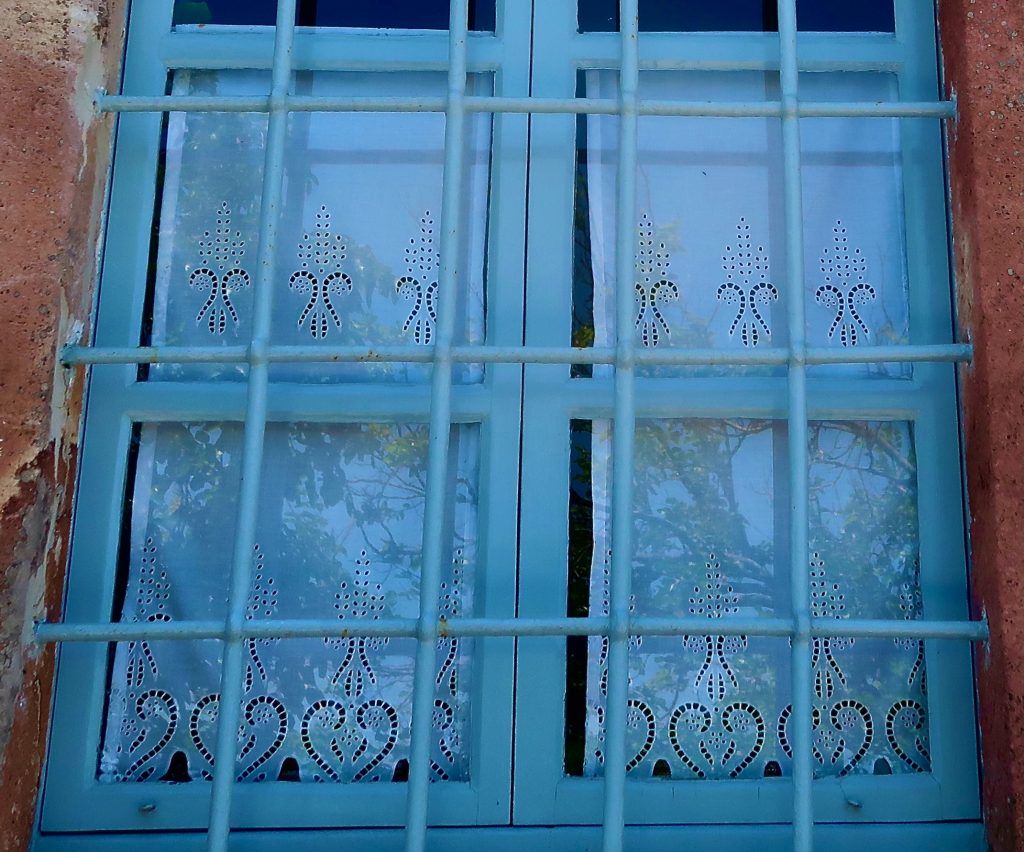
At the harbour I came upon this tiny car – I think it’s a Messerschmitt. My friend had one in the sixties/seventies called Roger Radish. I wonder who this one belongs to?
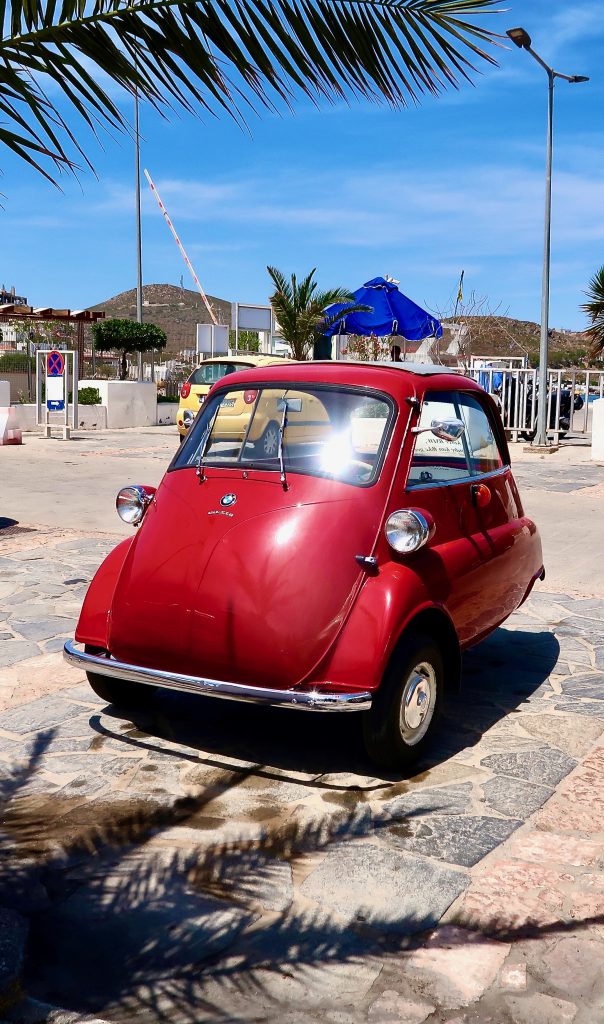
I’d like to come back and do a bit more exploring here. John managed to get a great photo of the library, which is a boon for researchers of ancient Greek manuscripts.
We now have a long crossing ahead of us to Samos, which I’m looking forward to.
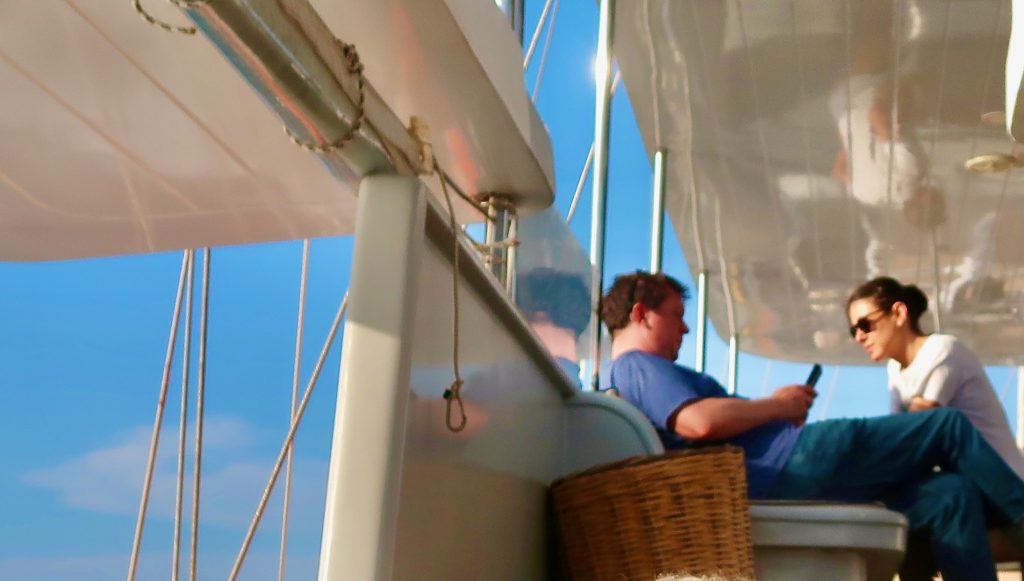
A slightly blurry photo which I can blame on some lively wave power …
Gaye arrives with tea and something very delicious.

I feel very cosseted and it’s a joy to be cooked for. And to learn new things every day with Michael and Nota. I’m sitting reading in a corner, watching the blue of the sea and the white foam as the boat surges onwards. I also appreciate just having time to think and collect one’s thoughts together without being interrupted by domestic chores – none of that to be seen. Somebody else is doing it all!
I think I made a good choice after all to come on this trip. I’m beginning to feel the ‘pull’ of Greece again very strongly – the way I felt for the first time when we came in 1970.
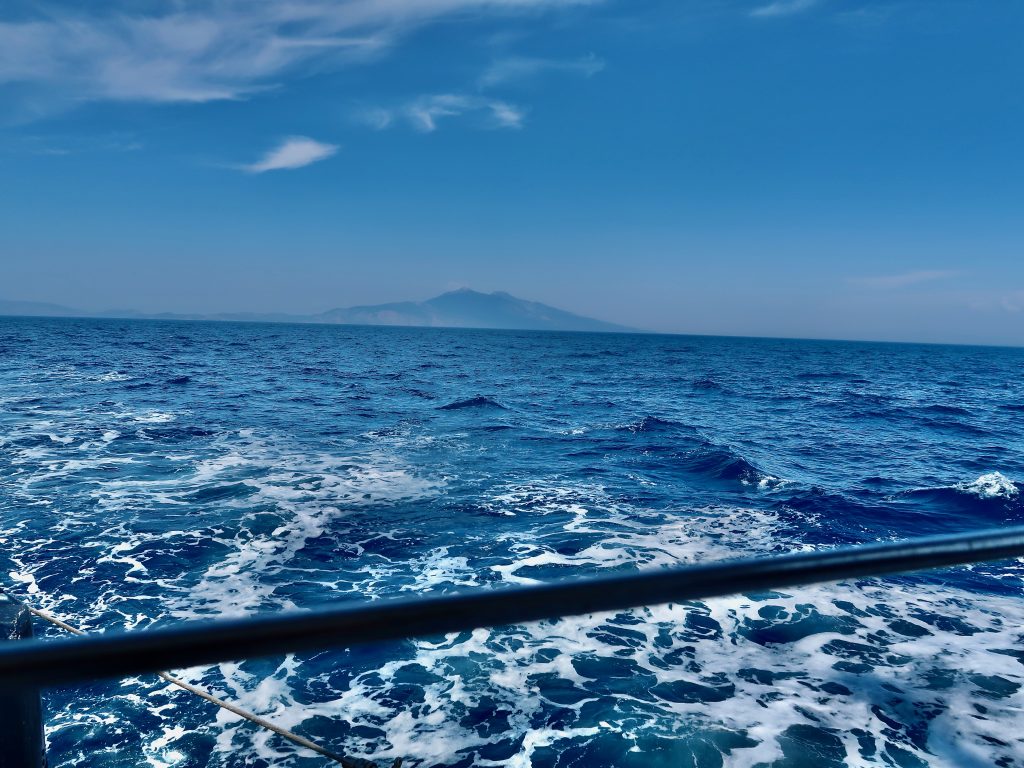
SAMOS
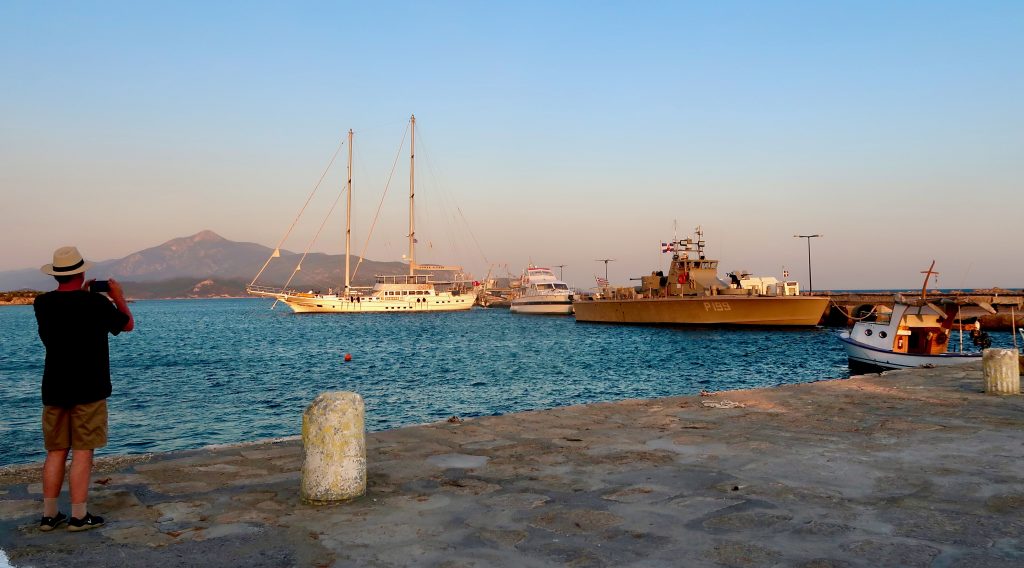
We are sharing space with a coastguard protection vessel.
There is time to do a bit of exploring before making our way back to the boat for supper.
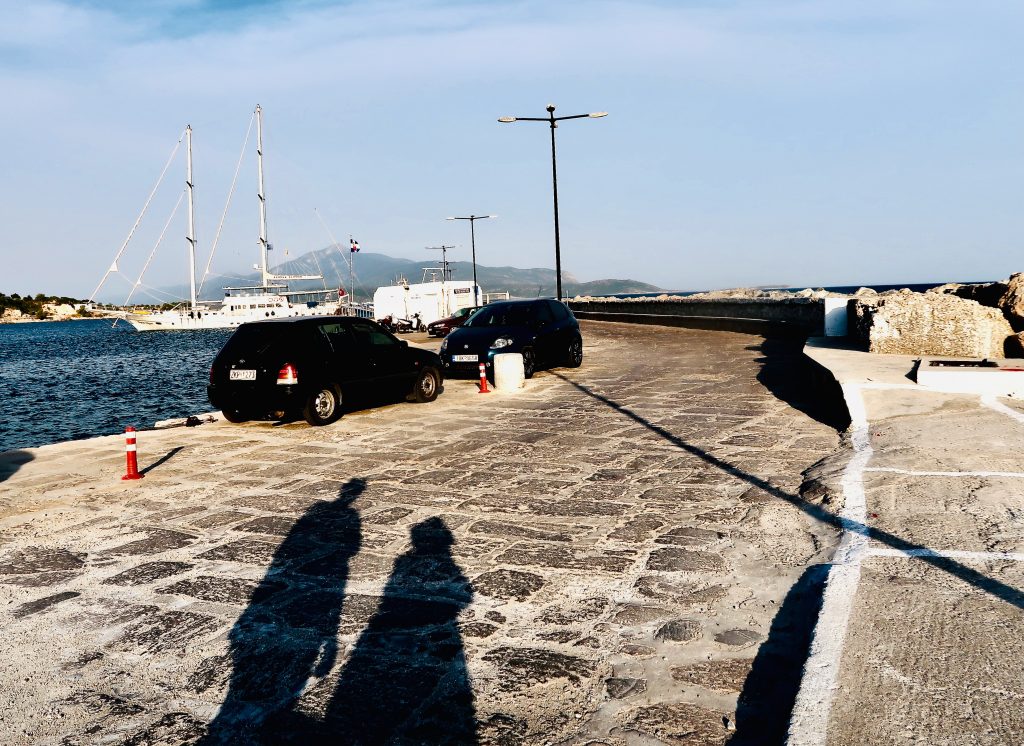
Next morning we make our way to the site of Heraion, where Hera is meant to have been born and to which she returned for her marriage to Zeus. The pilgrimage to her shrine every year by the populace was an important event..
Unfortunately, although the site was magnificent with temples supported by huge pillars, the ground they were built on was very marshy and the pillars kept sinking, which meant buildings kept having to be renewed.
One lonely pillar remains, which looks slightly wobbly. Shades of Ozymandias. But the site is very atmospheric, preparing us for the immense surprise in the museum later on.
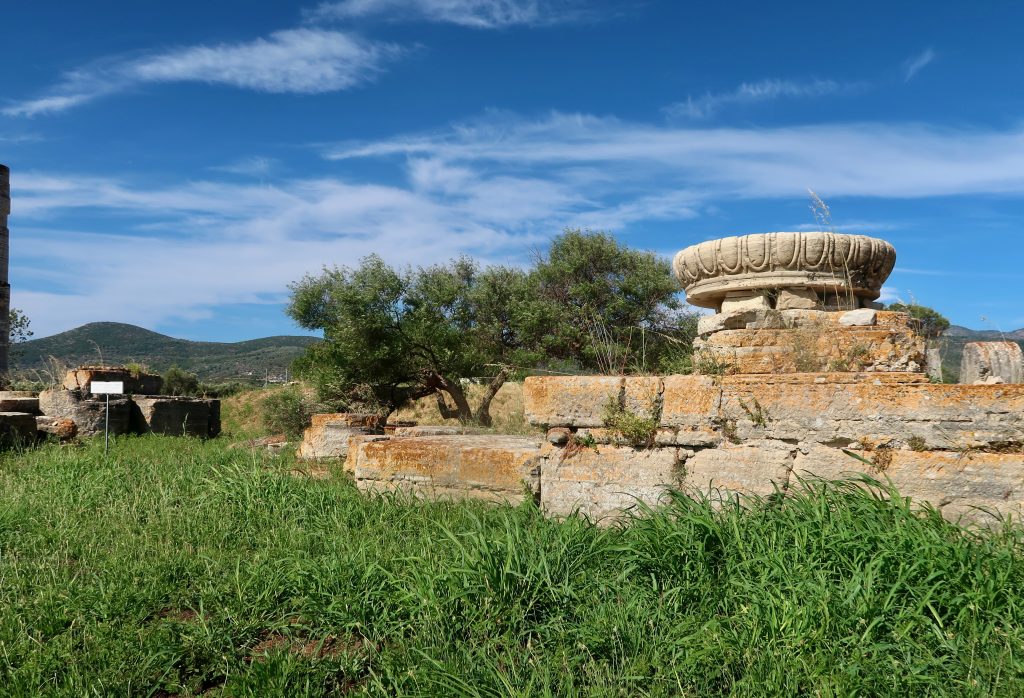
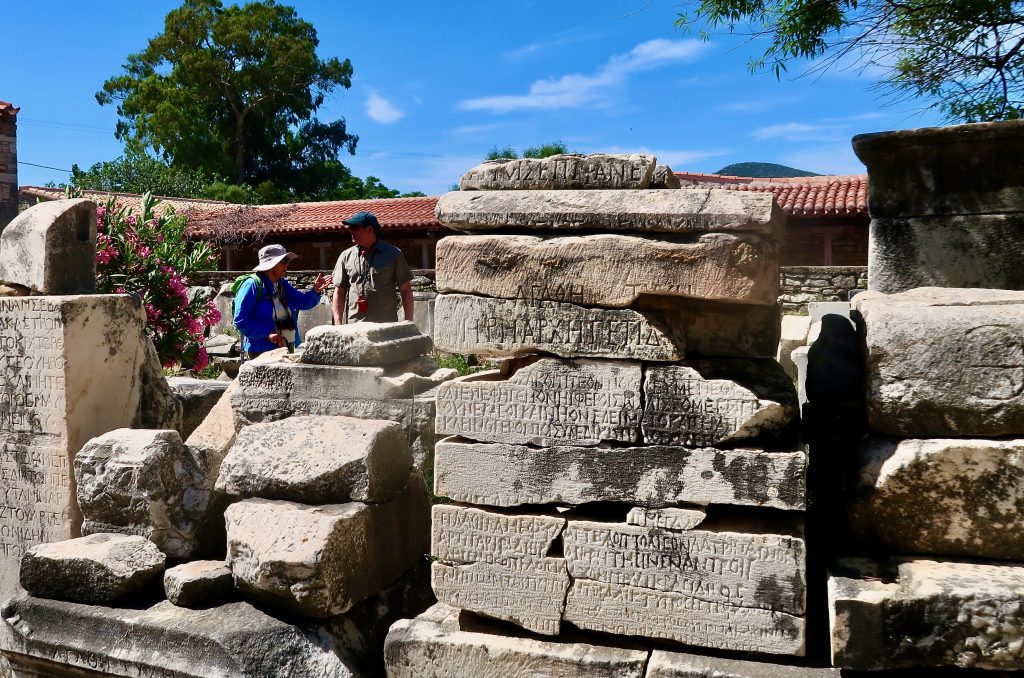
The museum is in Vathi, the modern capital of Samos. We have to remember to wear masks and to bring our audio sets, which are a very good idea. You can ramble around at your own pace and still hear Michael and/or Nota cramming our brains with Greek history. I like this way of learning.
A few seconds later I’m ‘bouleversée’ as we enter the museum and and see a giant 5.25 metre statue of a ‘kouros’ which was discovered when excavating the Sacred Way at Heraion.
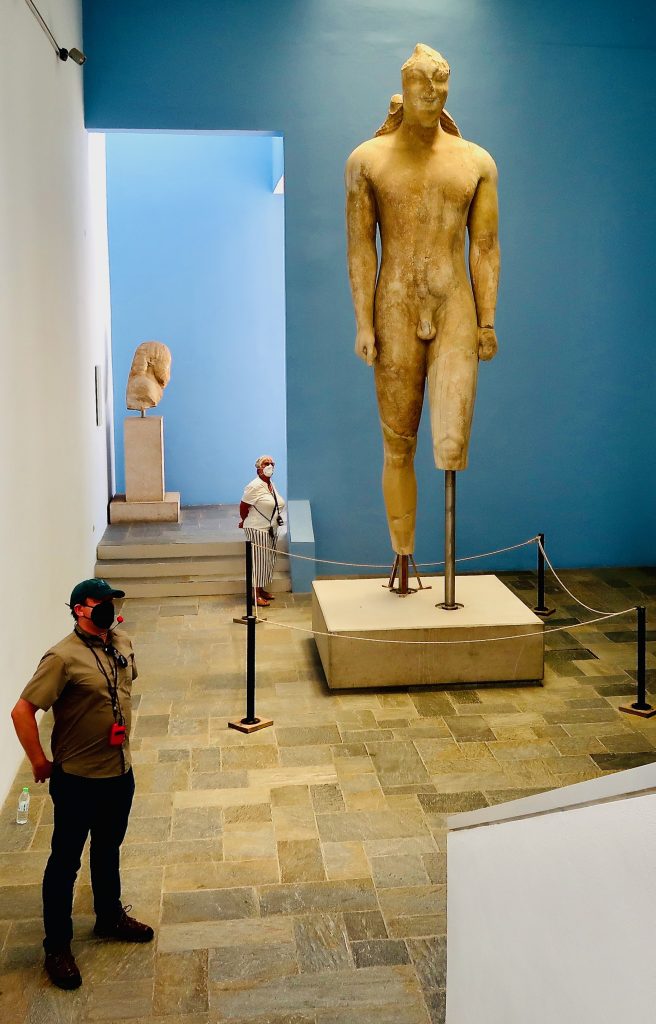
‘Kouros’ was the name given to free standing, ancient Greek sculptures that depict nude males, glorifying youth. This is one of the tallest ones found. The museum has lots of interesting objects; people came to Heraion bringing votive offerings and bearing gifts and many of these have been found at the site and preserved in the museum.

These feet reminded me of the trip six of us made in an old Land Rover from London to Greece in 1970. We were approaching Nafplion as darkness fell. Somebody said ‘Let’s pull off the road into this field’, which we duly did. The Land Rover had a tail gate which made it possible to lie down flat in the back to sleep – the canvas top covered us except for our feet.
I was woken early following a nightmare where someone had chopped off my feet with an axe. I lifted up the canvas and saw a man standing there, an axe in his hand. My feet still seemed to be attached but it was a mighty shock.
The field was part of an open prison and the man was chopping wood. John found out that he had murdered his wife but was sorry about it and still loved her. He didn’t plan on having another wife when he was set free… the feet in the museum are prettier than mine.
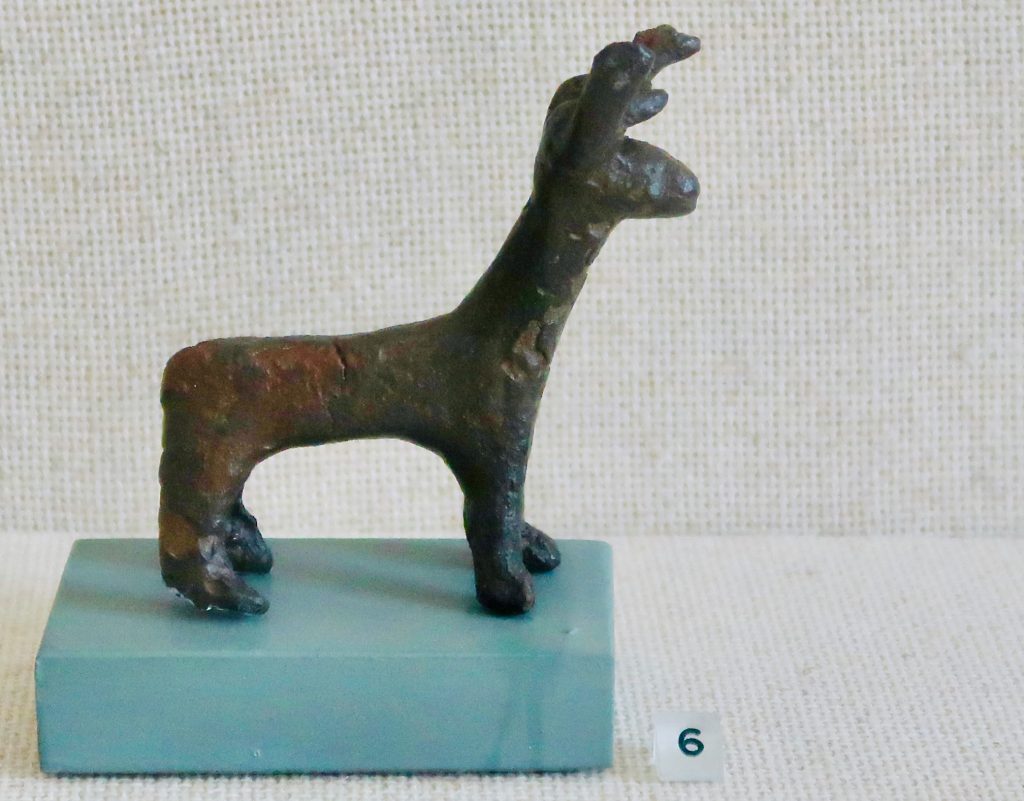
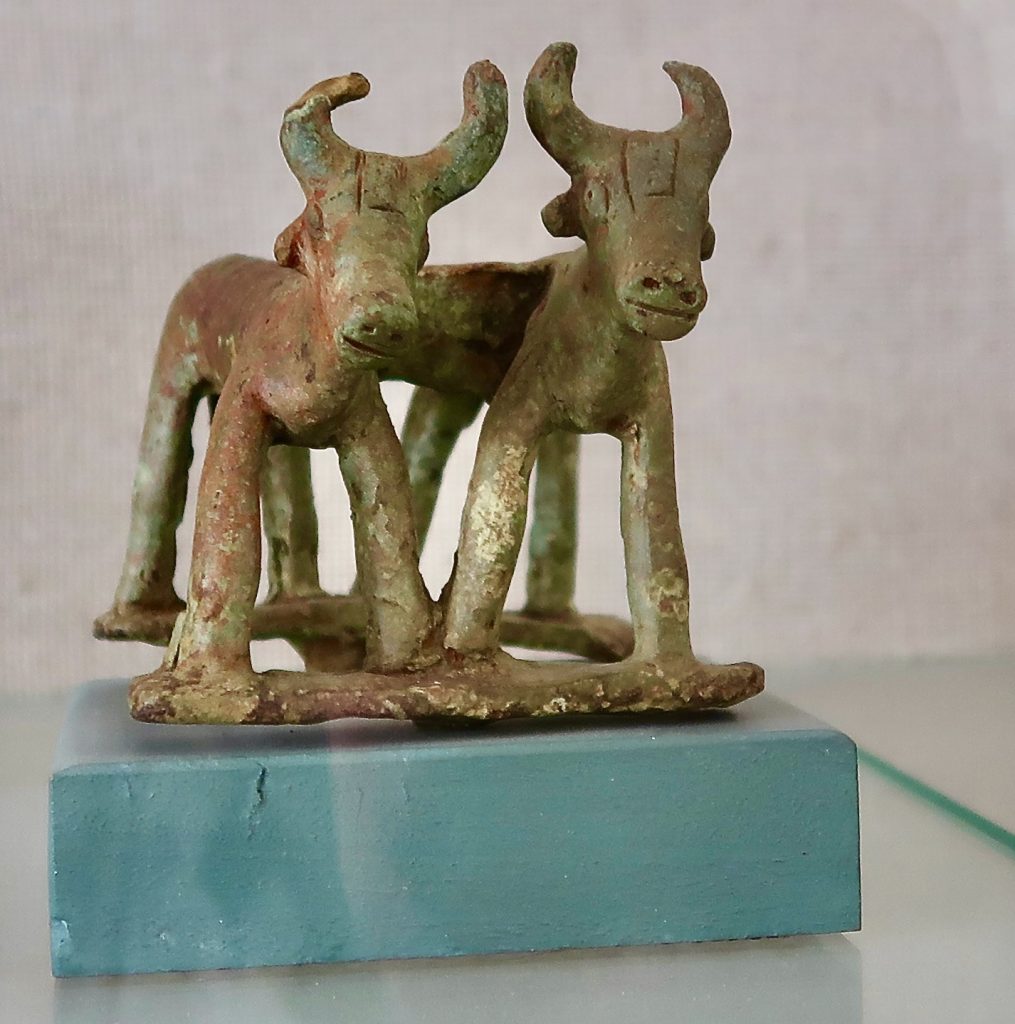
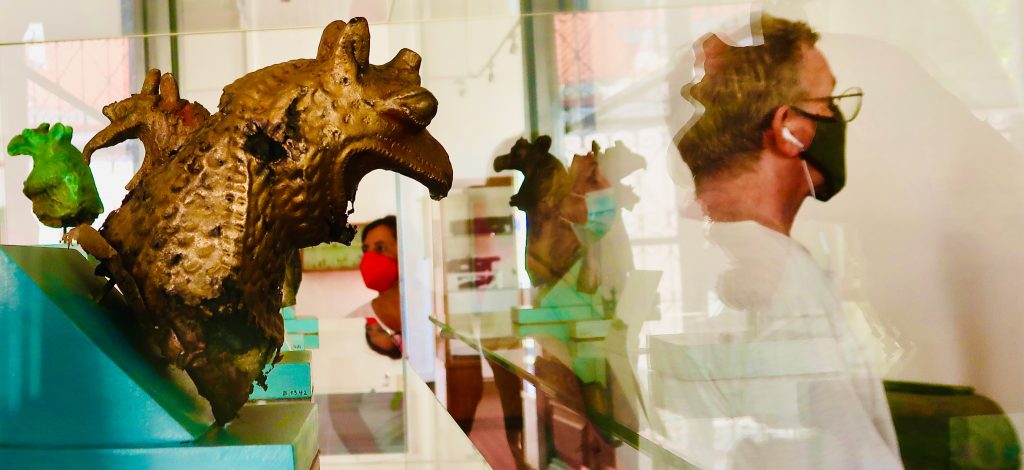

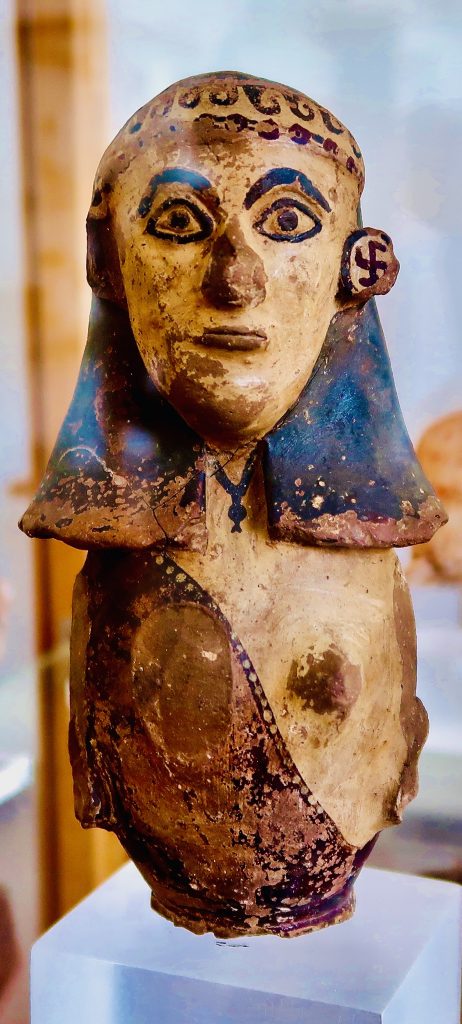
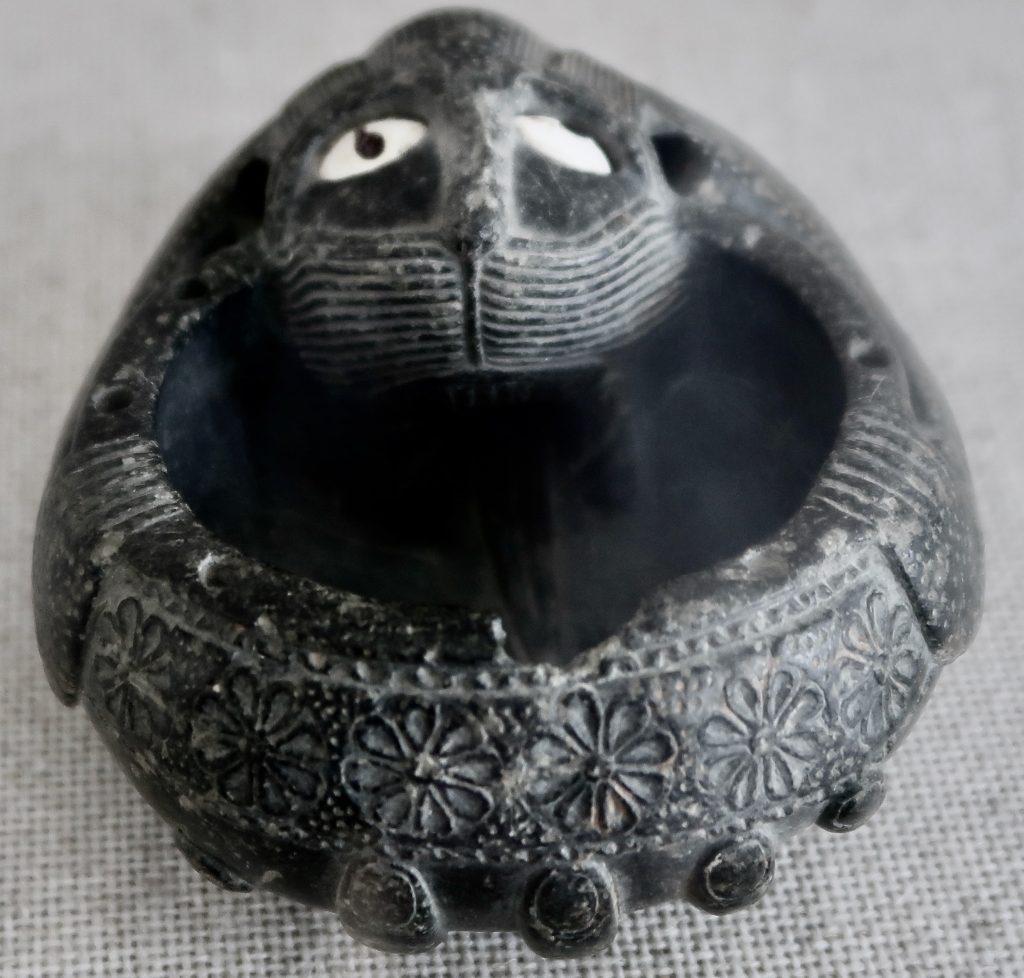
This was a great museum to spend time in. It warrants a return visit.
We had the most delicious seafood lunch in a taverna by the water’s edge. I should have taken a photo of all these delicious fish dishes but I’d eaten them before I thought about it. Greedy genes … vegetables and salads in Greece are very tasty too.
It was extremely hot and although hats helped, John needed a scarf around his neck to stop getting burnt. There are some attractive shops here and a scarf was duly found. I think he should wear one all the time – reminds me of Monty Don wearing his while exploring gardens in Italy. Or Richard E. Grant looking glamorous, telling stories as he wends his way around the Côte d’Azur.
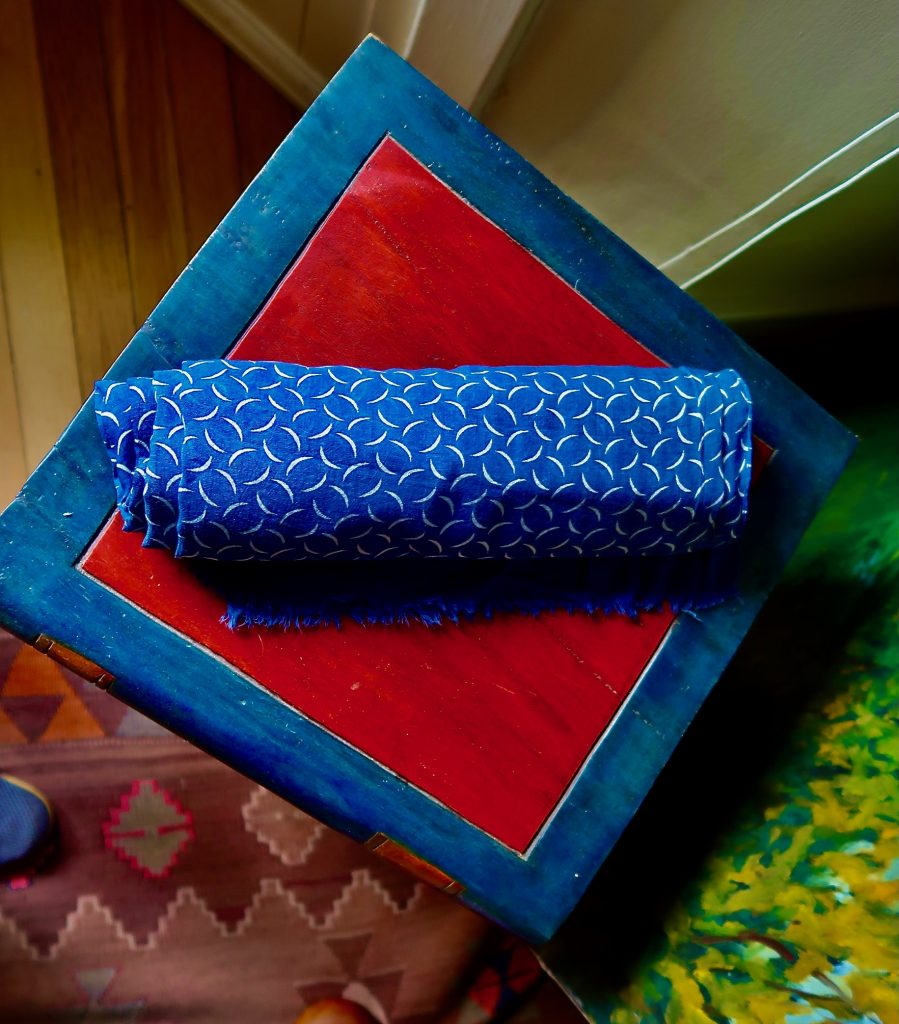
It was time to return to the boat. In the bus we passed a roadside shrine at speed. There are lots of these shrines along the way. Do they wish drivers godspeed or do they mark accidents?
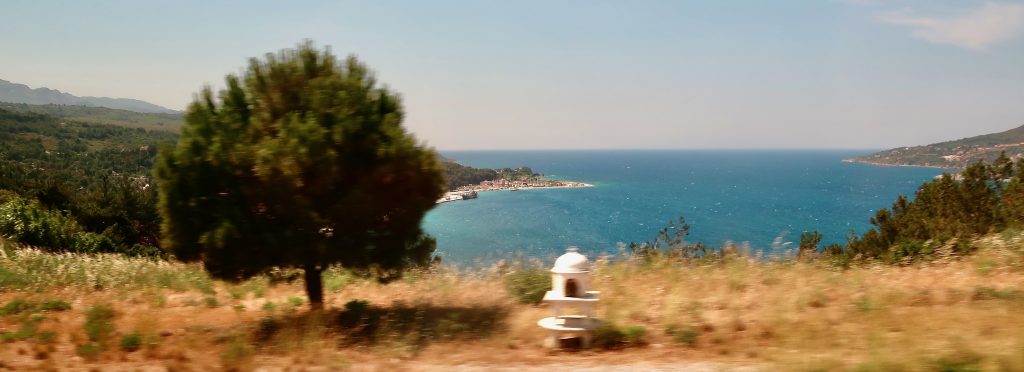
Now we are back to Pythagoreio with time to explore the village before supper. More inviting shops but I was chivvied along by John and we finally arrived at the church which overlooks the sea.
Adjacent to the church and graveyard is an archaeological site which needs more investigation but funds are needed.

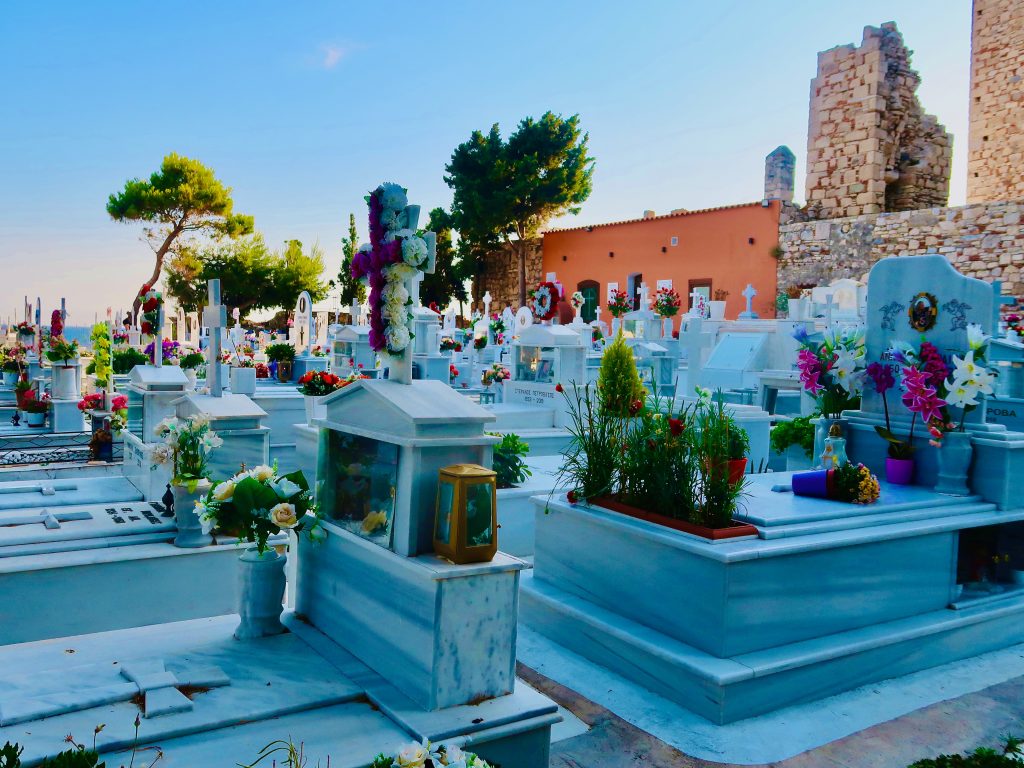
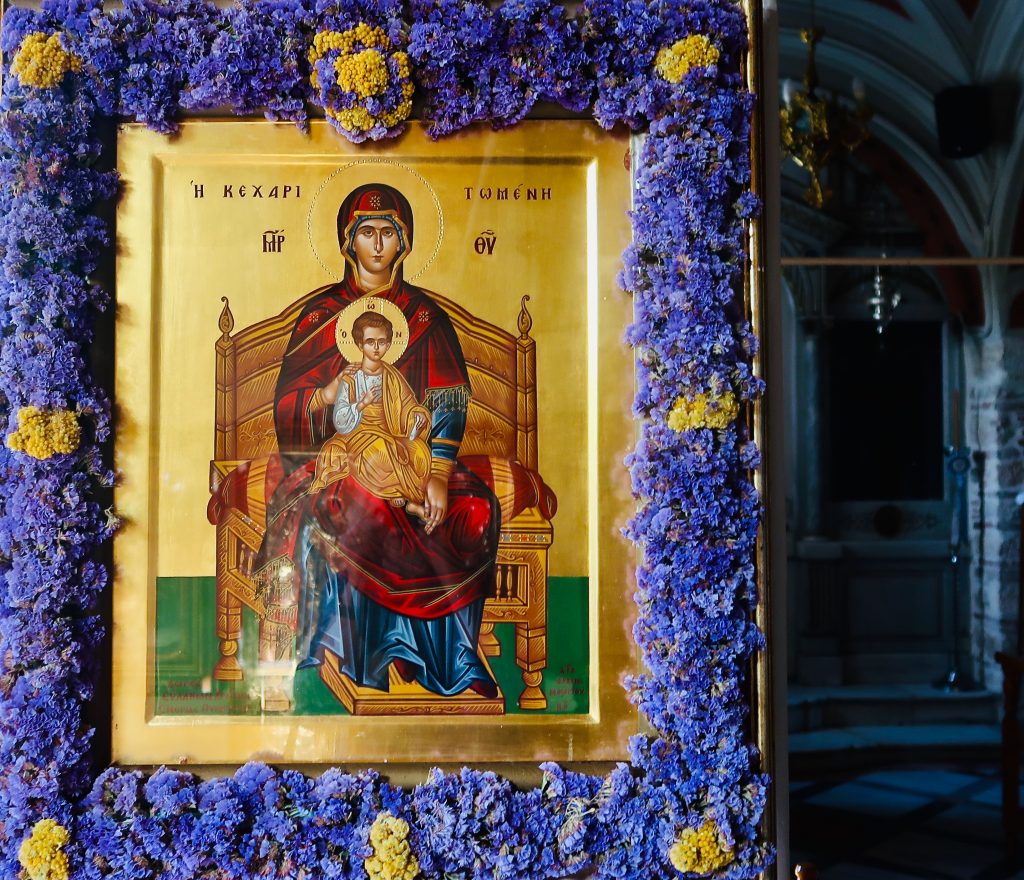
I love Greek Orthodox churches. We lit two long, thin beeswax candles before leaving, along with a wish … although world peace is probably too big an ask …
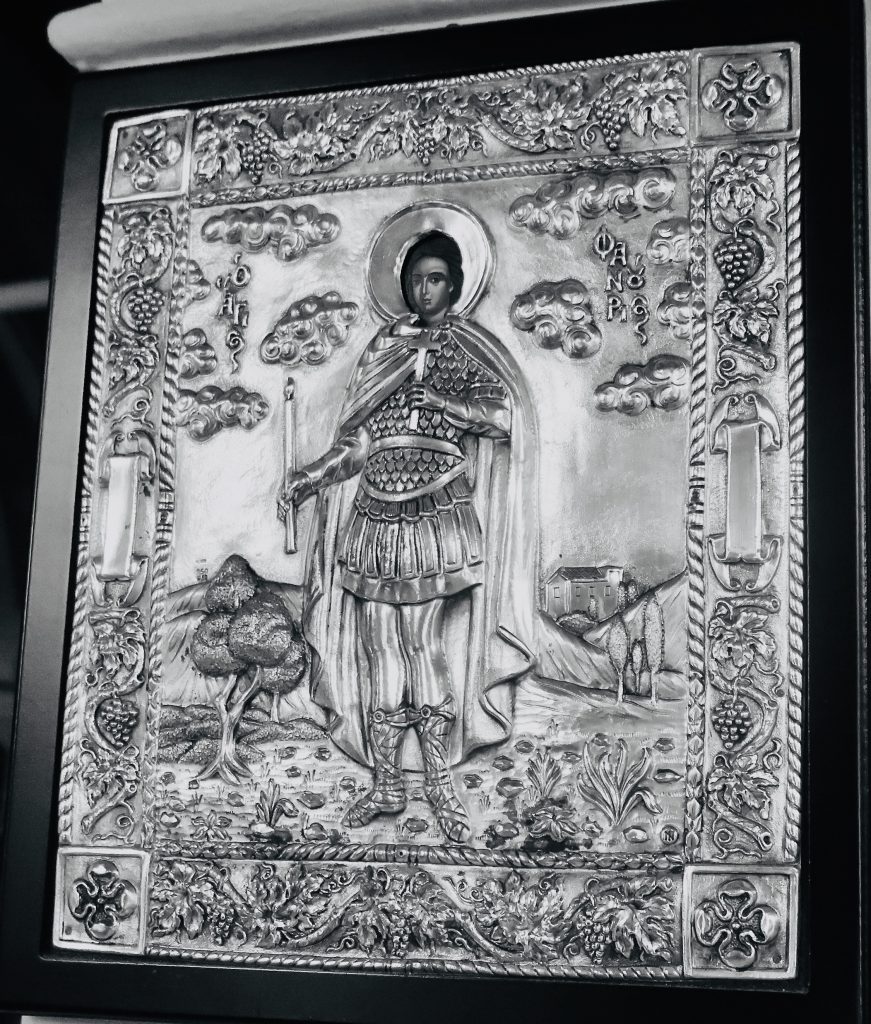
This church reminds me of the one in Arachova in the Peloponnese which we visited just before Covid hit in early 2020. I don’t know what all the icons mean but they seem to create some sort of stability in a chaotic world. Perhaps this is wishful thinking …
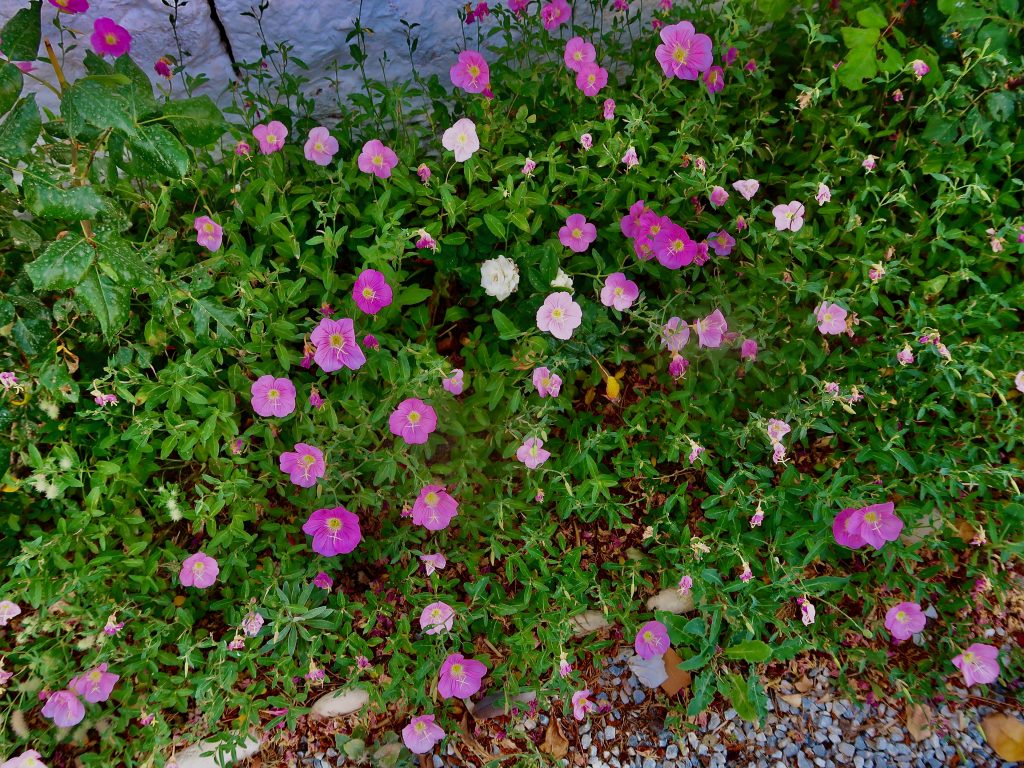
Next morning we take a trip up the mountain to the famous Tunnel of Eupalinos. This was cut through the rock for over a kilometre in the 6th century BC so as to supply the city secretly with fresh water. It’s an amazing feat of both endurance and perfection, the two ends meeting in the middle. Very well worth looking up more about this and a definite must for a visit if you go to Samos.
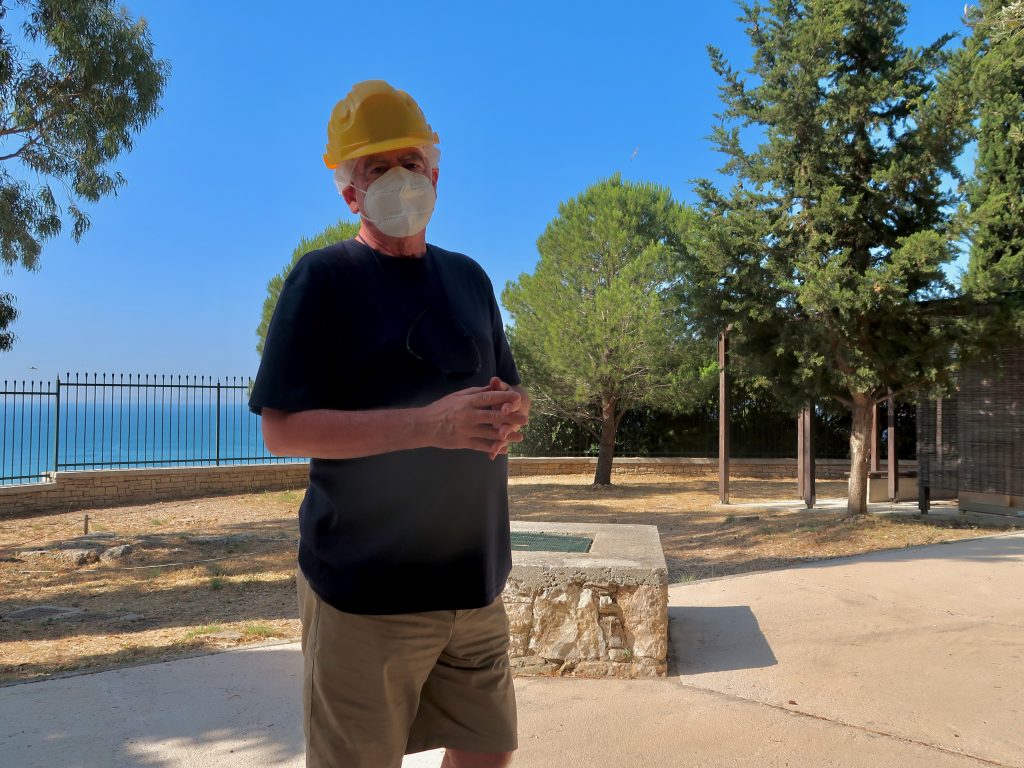
In the end, I didn’t go because there’s a ladder to contend with and I was feeling somewhat unbalanced that morning. I wish now that I’d done it … bof !
In the afternoon we were taken to the local archaeological museum, showing artefacts from the time that Pythagoreio was the ancient capital – Samos.


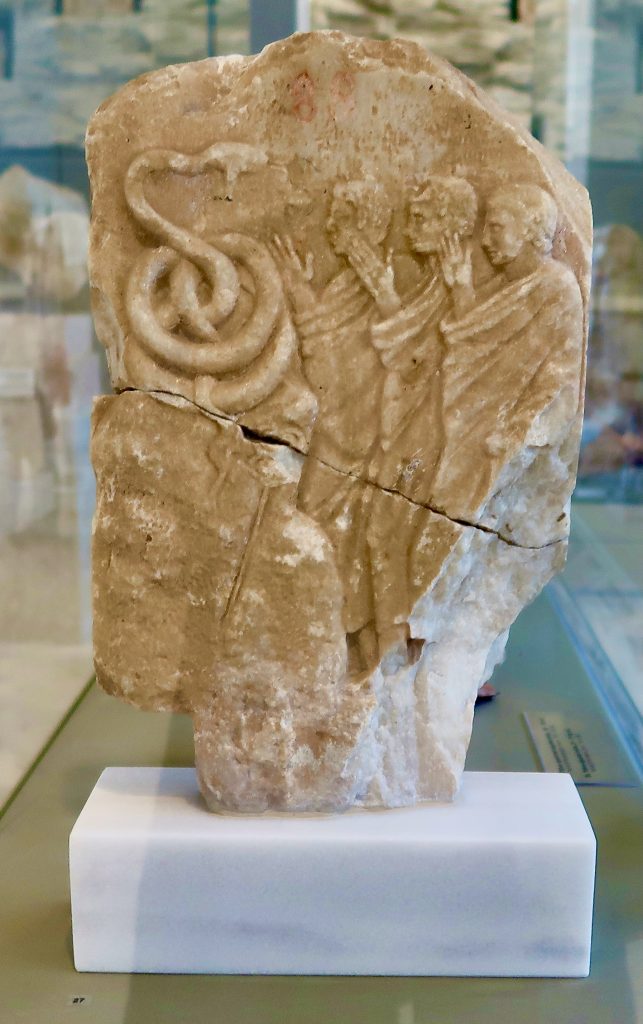

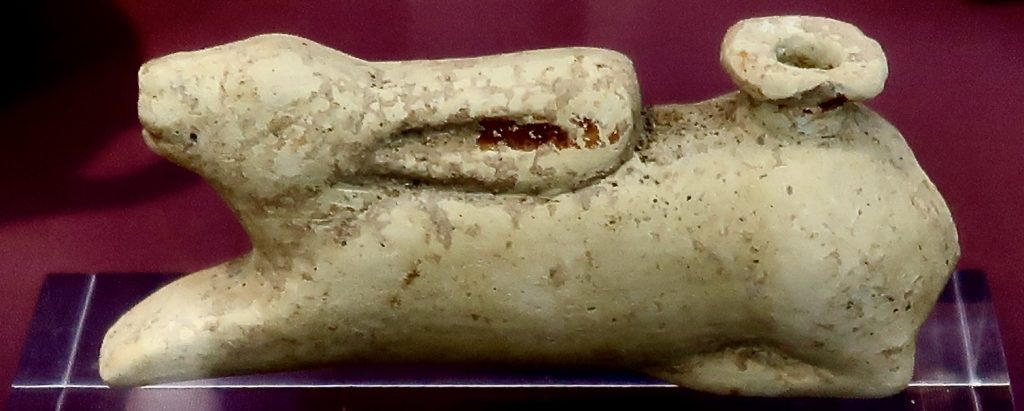
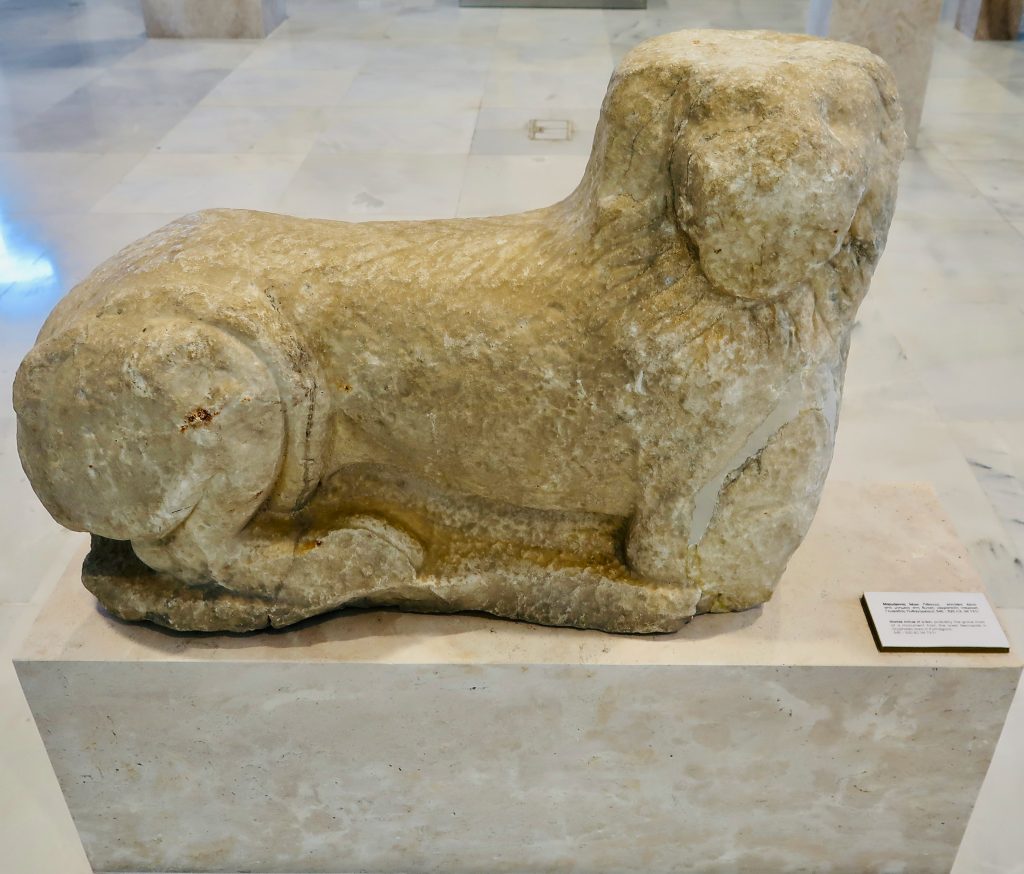
I’ve put in this lion because it reminds me of the massive Lion of Knidos, a place we are bound for later. Knidos is an astonishing site except for the fact that the massive lion now greets you at the entry to the British Museum, rather than looking out to sea from its original mountain top.

Ancient Samos had connections with Egypt and at some point the Egyptian ruler sent this to Samos as a gift.
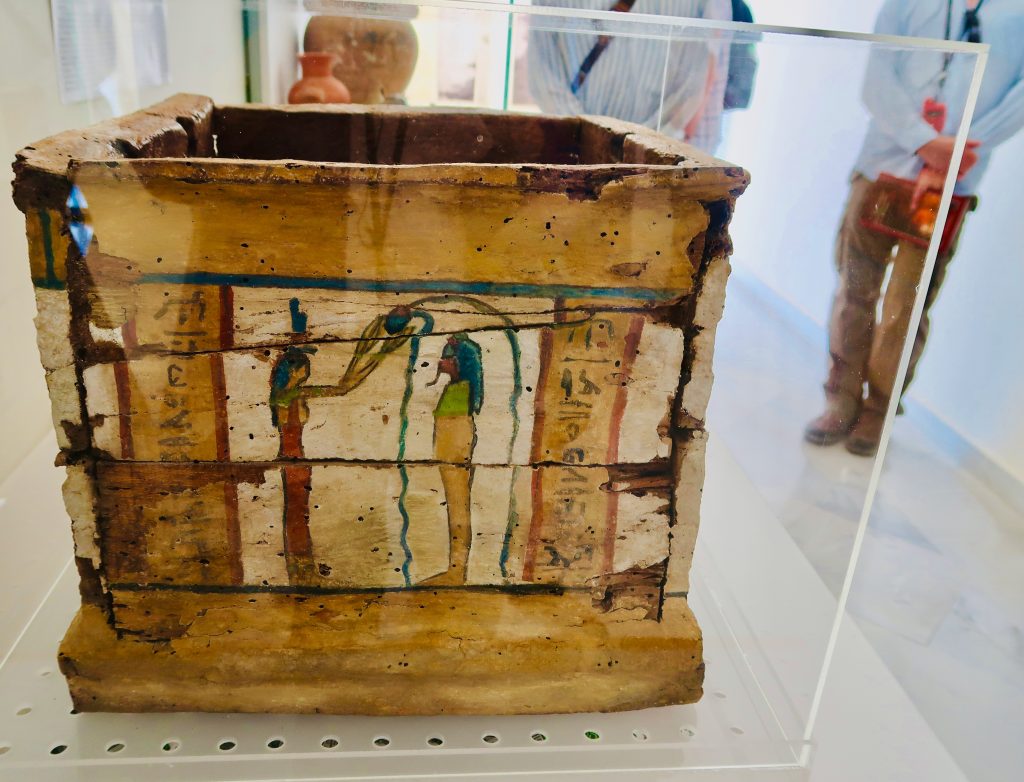
The next island is flagged up as Léros but we make a short stop at tiny Lipsi, which looks inviting.
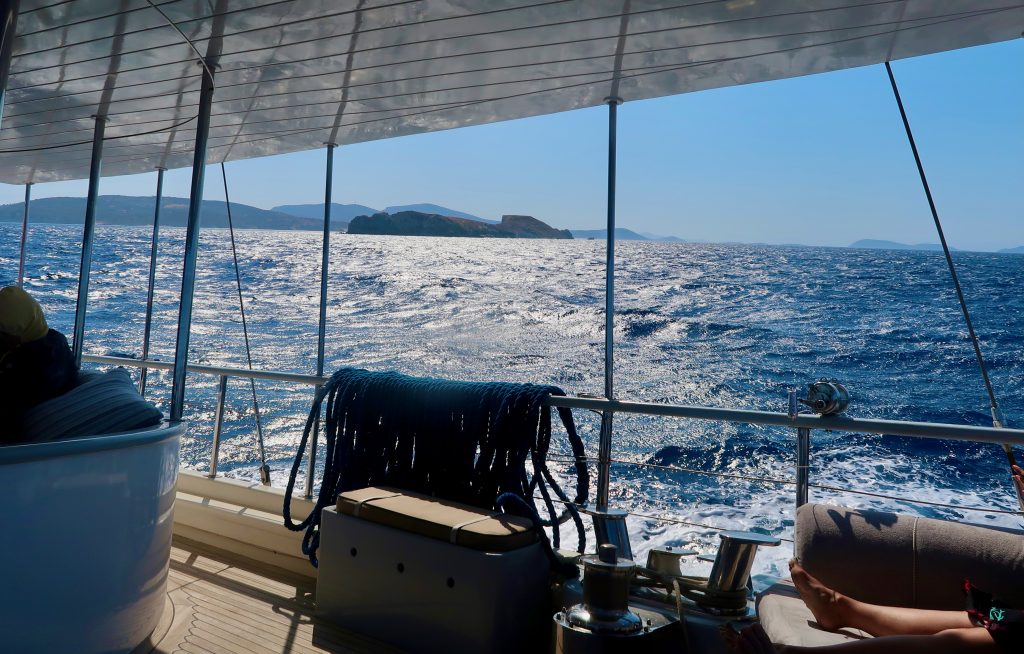
Lipsi is only four square miles in area and quite green. The wine it produces is meant to be good – also cheeses. Officially it is owned by the monastery at Patmos, a day excursion away. It is also a good island for swimming, with many sandy beaches. A small haven.
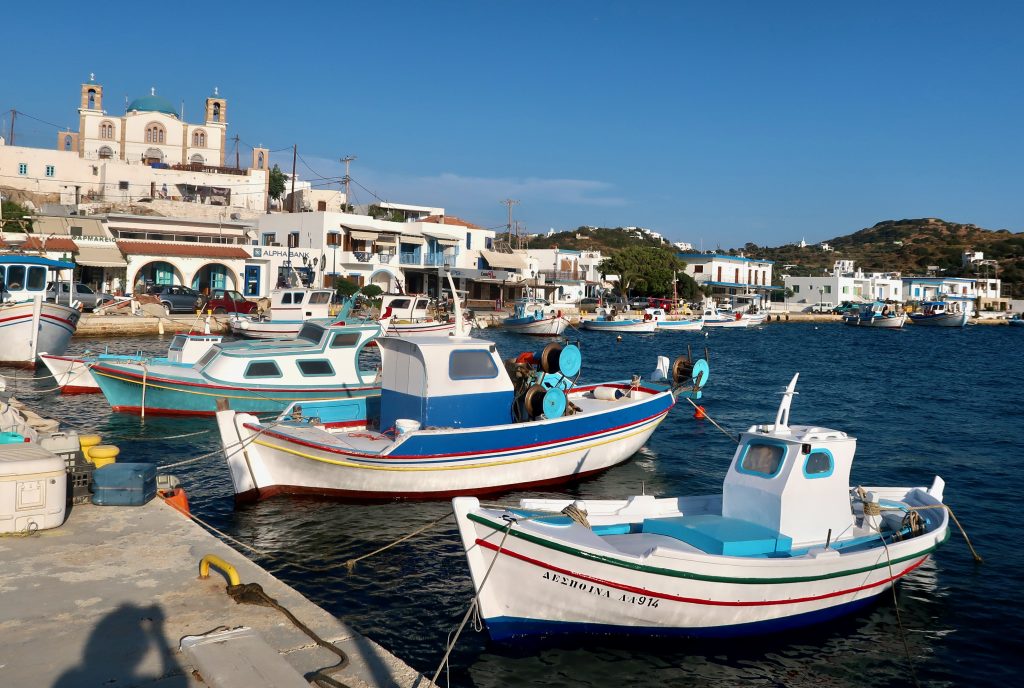
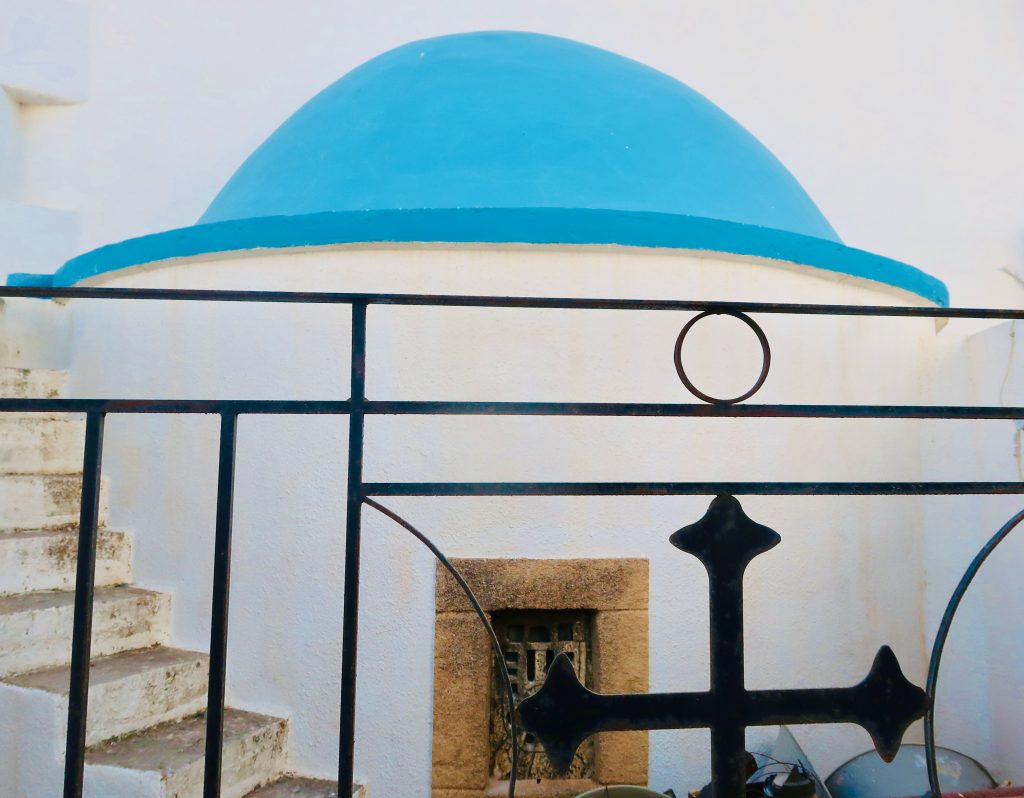
We climbed up to the church but sadly it was closed. I wanted to see the icon of Panagia Hárou known for its lilies, which apparently bloom within the frame on 23 August each year. (Info from DK Eyewitness book on Greek Islands – much recommended).
On the way back we pass an art gallery (closed) and a small chapel.
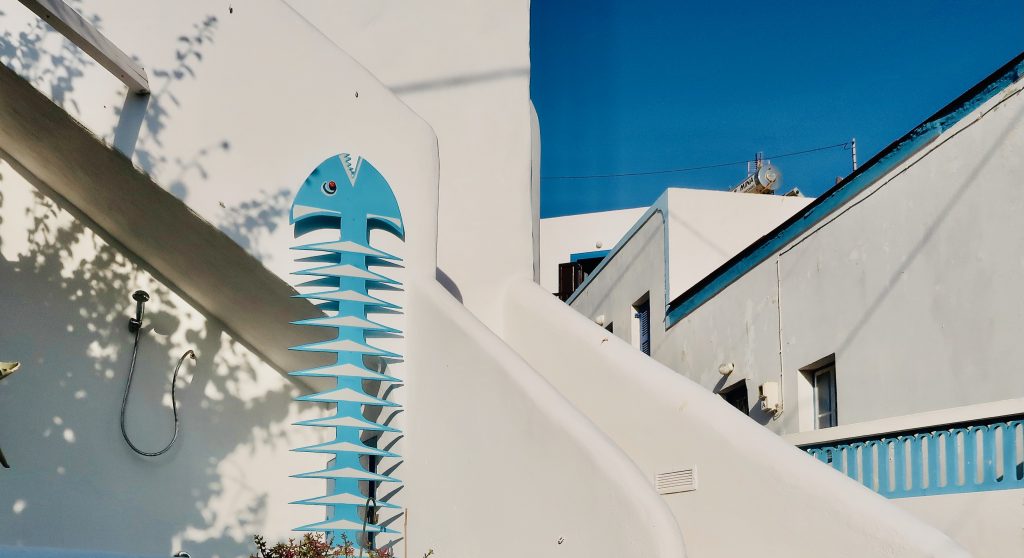

We sit watching boys playing with a giant chess set by the harbour, kicking a football inbetween moves. I really like the feel of this small island …
I’m thinking that we are almost half way through the trip. The only downside to date is that if you wash any clothes they have to be hung on deck and can be at risk of an early grave if you don’t attach them firmly.
The upside is that the sea is calm this evening and I’m all for an early bed with my book on the Greek islands.
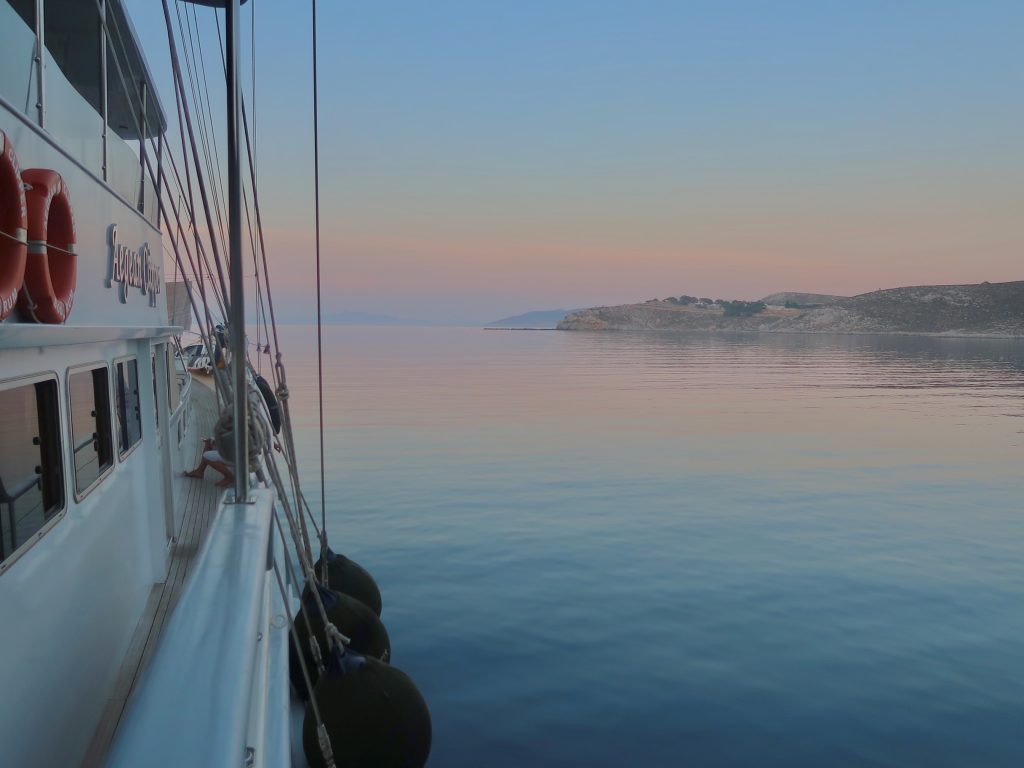
I wake up hungry, have a quick shower and make my way on deck. It isn’t long to wait for breakfast, which looks very tasty. Nota has bought a jar of pistachios in mastic which I find very moorish (more-ish). She is very good at bringing all kinds of delicacies as an extra treat to the table. Much appreciated.
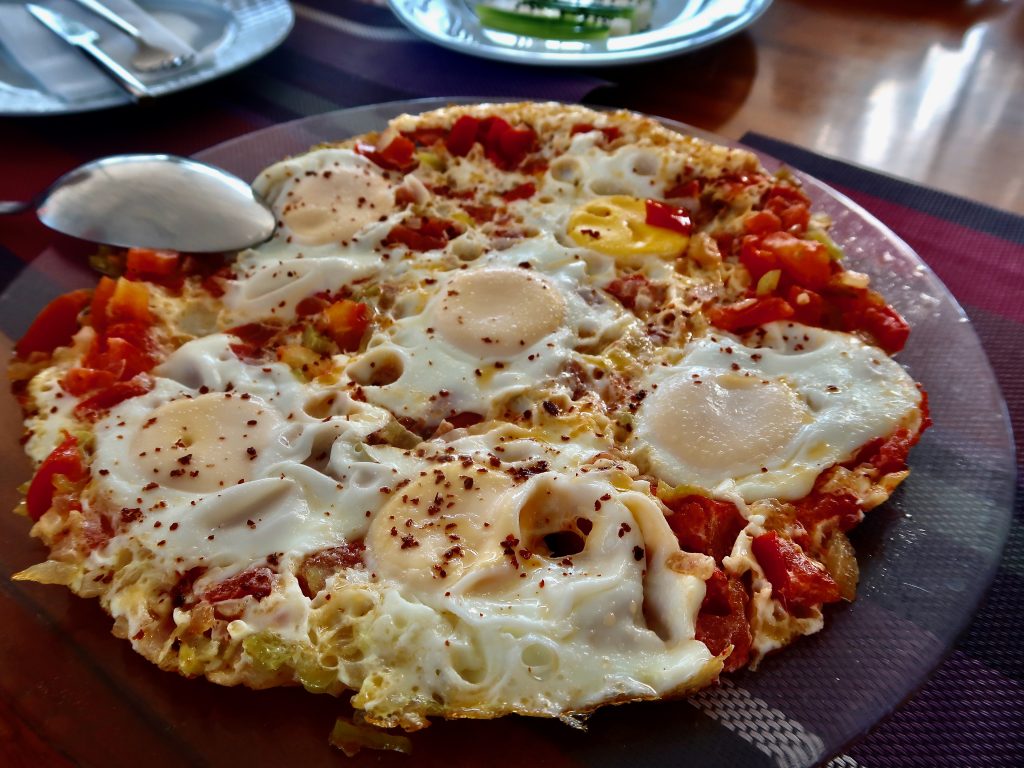
Our next stop, the island of Léros, has a strange atmosphere, unlike the other islands we have been to. Lakki, the main port, was occupied by the Italians from 1912 to 1943, when it was taken over by the Germans.
Blocky, fascist architecture, Bauhaus modernism and Art Deco lie uncomfortably together. The town could be a film set for a dystopian vision of the future. We visit a circular building open to the air, which used to be a busy fish market. It would have looked very picturesque with all the stalls laid out but is now completely empty and dilapidated, except for a few scrawny pigeons. The town feels empty of people and a little melancholy.
As we walked along the harbour I saw lots of black sea urchins in the clear shallows and remember being shown how to eat them by two grizzled fishermen when we were travelling around in 1970.
Our main reason for being here is to explore the castle which means walking up many steps to the top of a mountain, overlooking the sea. It’s impressive.
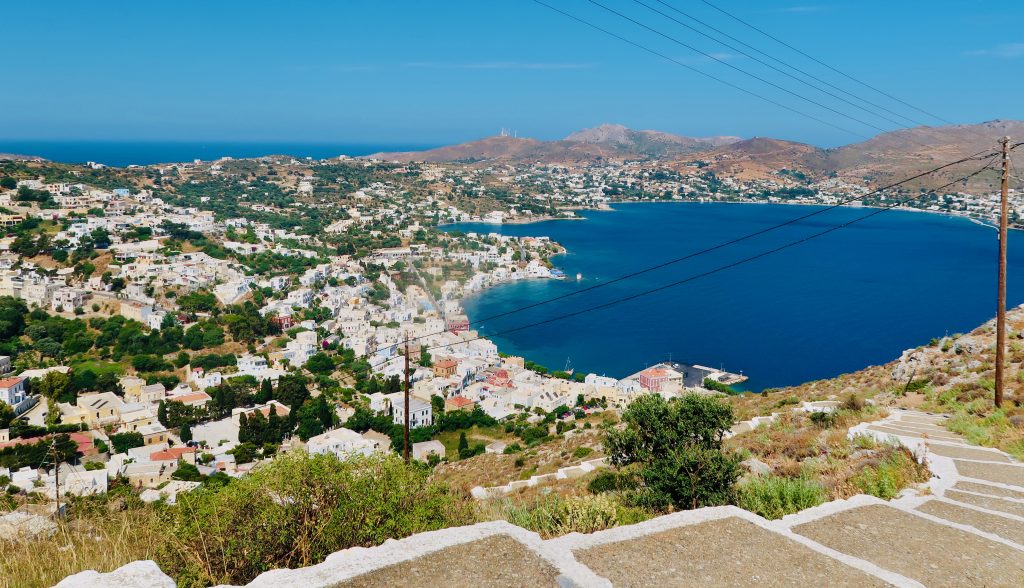
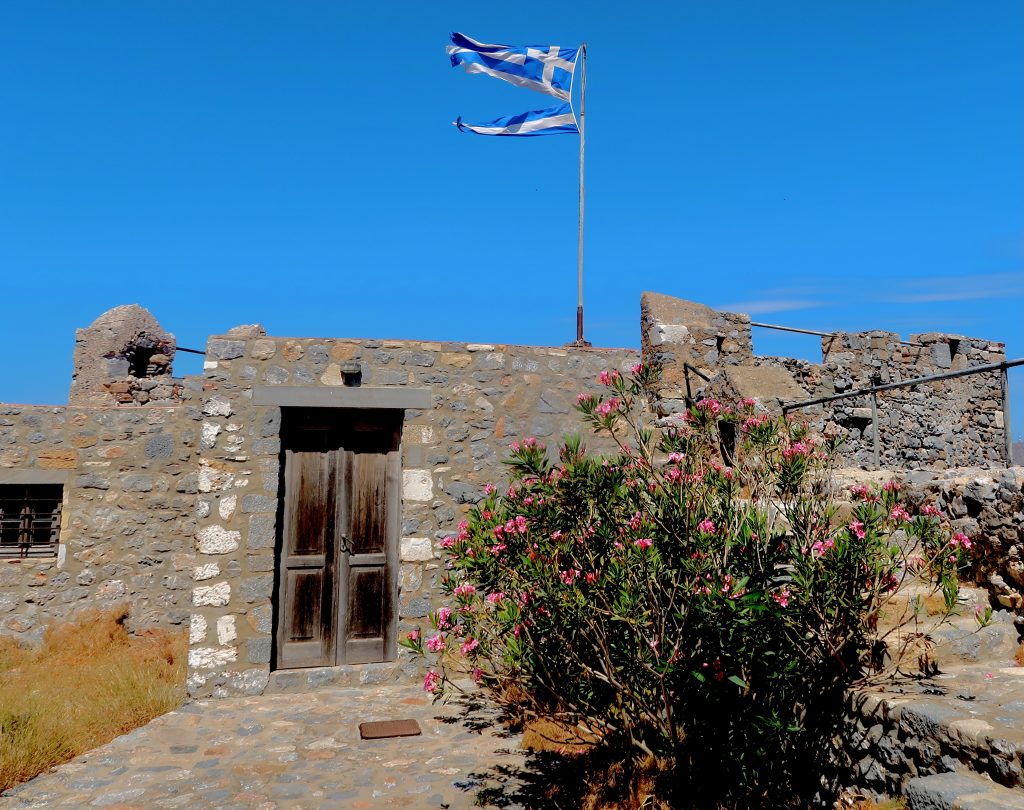
The castle has gone through various changes, from Byzantine (11th century fortification) to the Knights of St. John in the 14th and then 15th centuries and it does look very cobbled together in parts and somewhat run down. A caretaker arrives and complains to Michael about lack of funding.
Michael, whose knowledge of military history is vast, gives us a virtuoso soliloquy of how these islands have fared throughout the ages – taking us right up to the end of the Second World War. ‘Awesome’, as our American companions might put it. Michael is a great guide, always to hand with answers to our questions. And offering support up the steep bits of castles too.
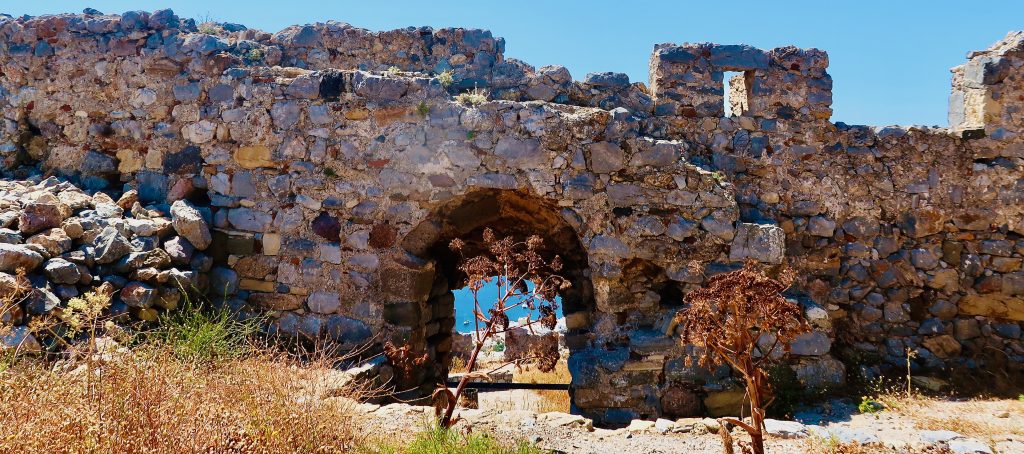
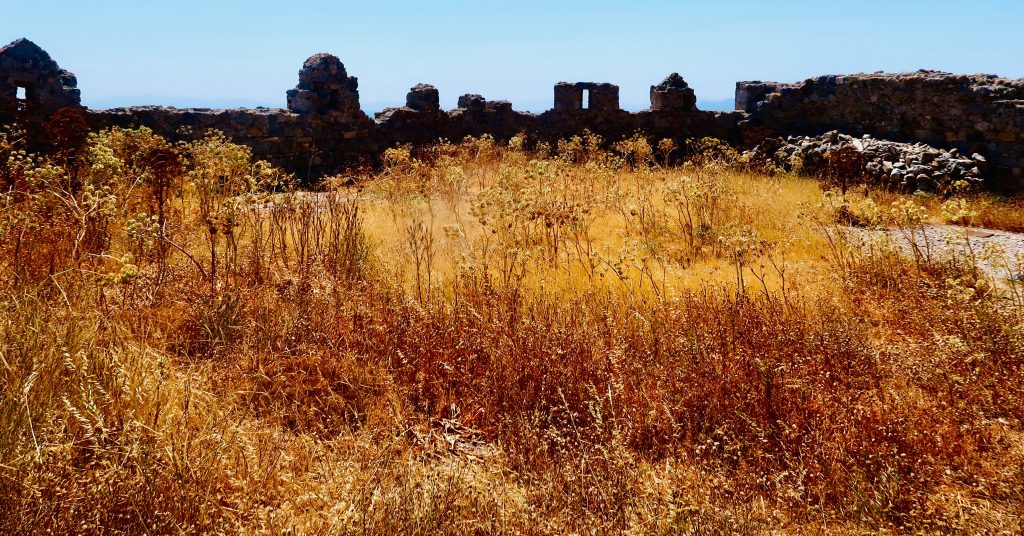
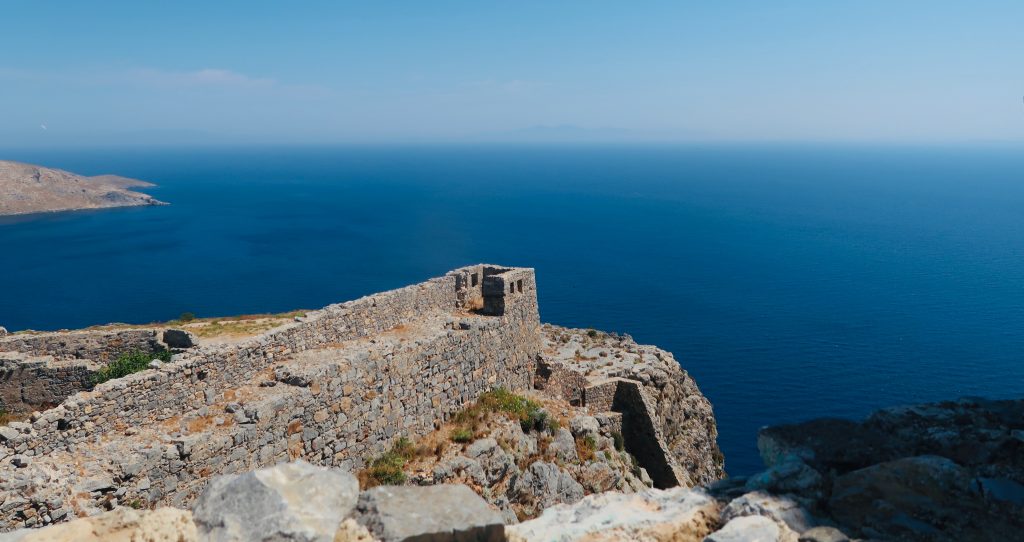
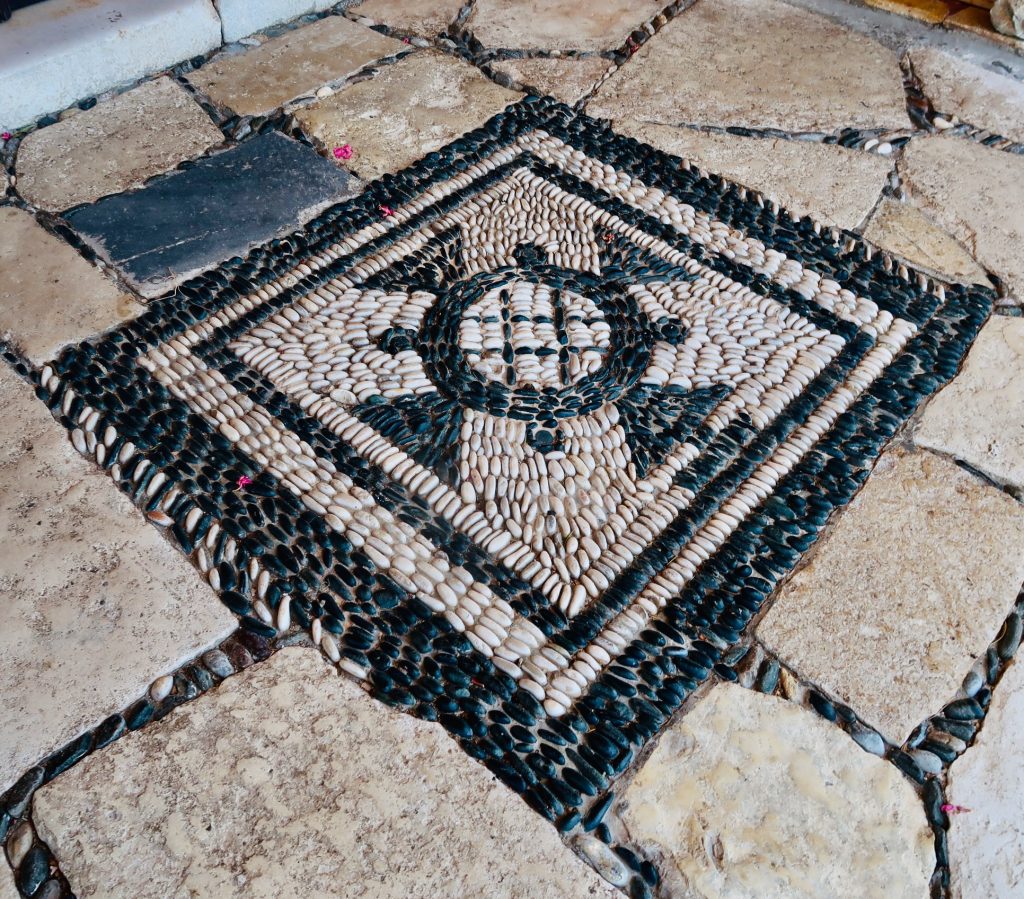
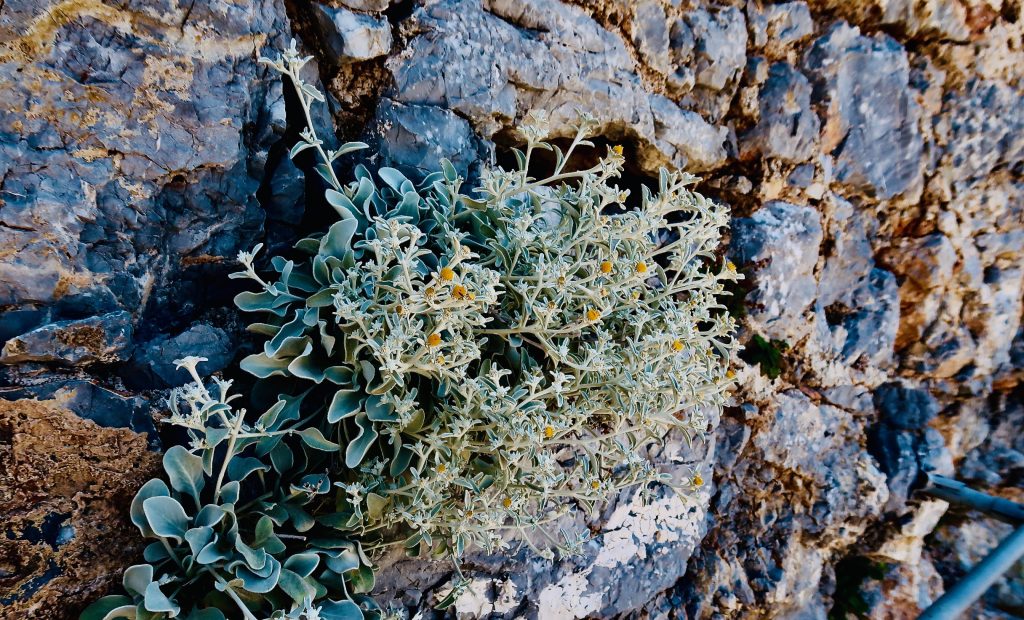
We are back in the bus which takes off along the shoreline. And then we stop. Michael and Nota shepherd us into a graveyard for so many British young soldiers that died out here in World War II. It’s a sobering experience and I can’t help but shed some tears. A swathe of youth whose lives and hopes were brutally cut short. The gravestones look out to sea.
When I complain about things I must remember how lucky I am to have had a long and interesting and rewarding life, (well, mostly!) – much of it owed to these young men. We spend about half an hour here – I’m glad to have had this time to reflect.
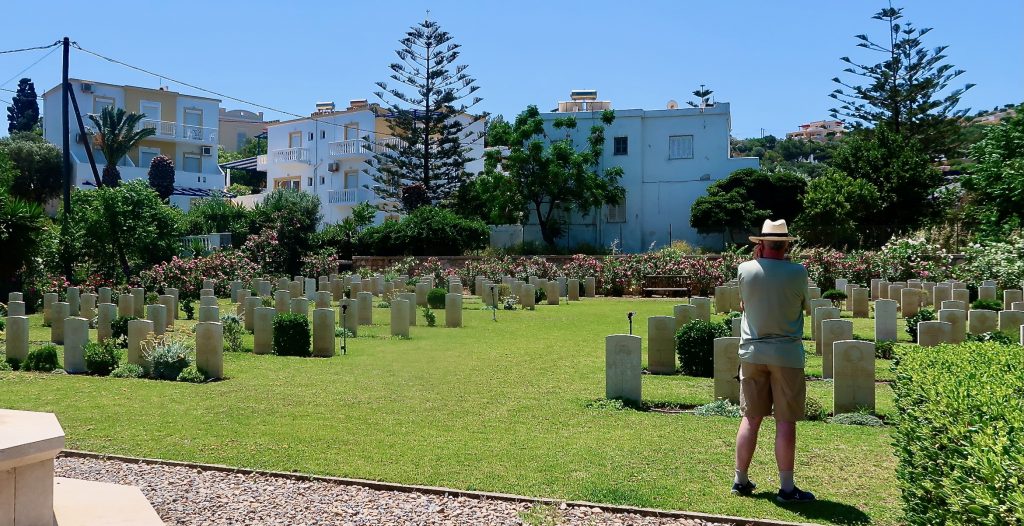
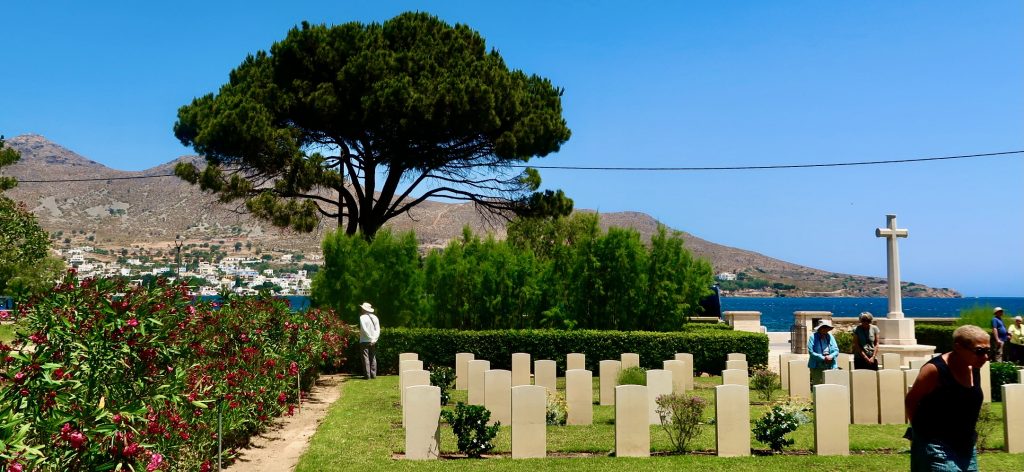
I was hungry but had no idea that we were about to have the best lunch ever, sitting on a terrace in a vineyard run by a delightful family. This was a different side of Léros – a delicious side.
Michael and Nota have a wealth of knowledge about where to eat among these islands and we are just the happy recipients of this. Many plates appear and much is consumed.
The white wine they make here is excellent – so much so that we bought two bottles. I think we’ll have to quaff them before going home.
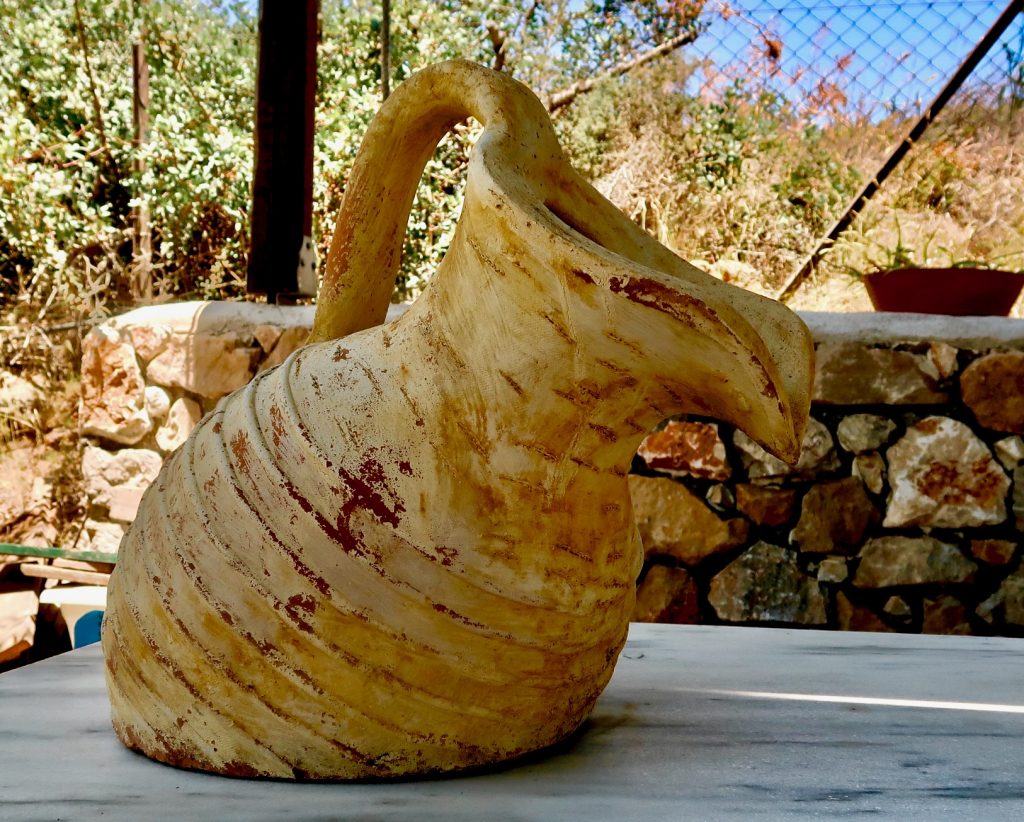
If you find yourself in Léros, track down ‘iokallis’ – Chatzidakis wines … and enjoy lunch on their terrace.
Our next stop is the island of Kos, so time on board now to read, chat, have a siesta … a drink … cake …

I’ve just read ‘Skios’ by Michael Frayn, which is about what happens when two identical cases are mixed up when taken off the carousel at the airport. I’m mentioning this because that is what happened to us at Bodrum.
My case is quite distinctive – Samsonite – grey, furnished with a noticeable pink taffeta ribbon. John took the case off the carousel and put another bag on top of it, so the ribbon was covered. I then joined him, vaguely thinking that my case looked bigger than I remembered. I’ve never seen another case like mine and it’s fairly old and easy to pick out.
Everyone had now left. I was waiting for John who had been ‘caught short’ when a Turkish man came up to me and indicated that my case was his. I was suspicious. However, I lifted up the small bag on top of said case – alarm bells – there was no pink ribbon underneath. The man then pointed to the carousel. Oh no, perkily pink ribboned and jauntily making its way round and round on its own was my lonesome case.
The two cases were exactly the same, except his was a bit bigger. Disaster was averted at the last minute – I clutched the man’s arm in grateful thanks, and we both looked relieved and happy as we went our separate ways.
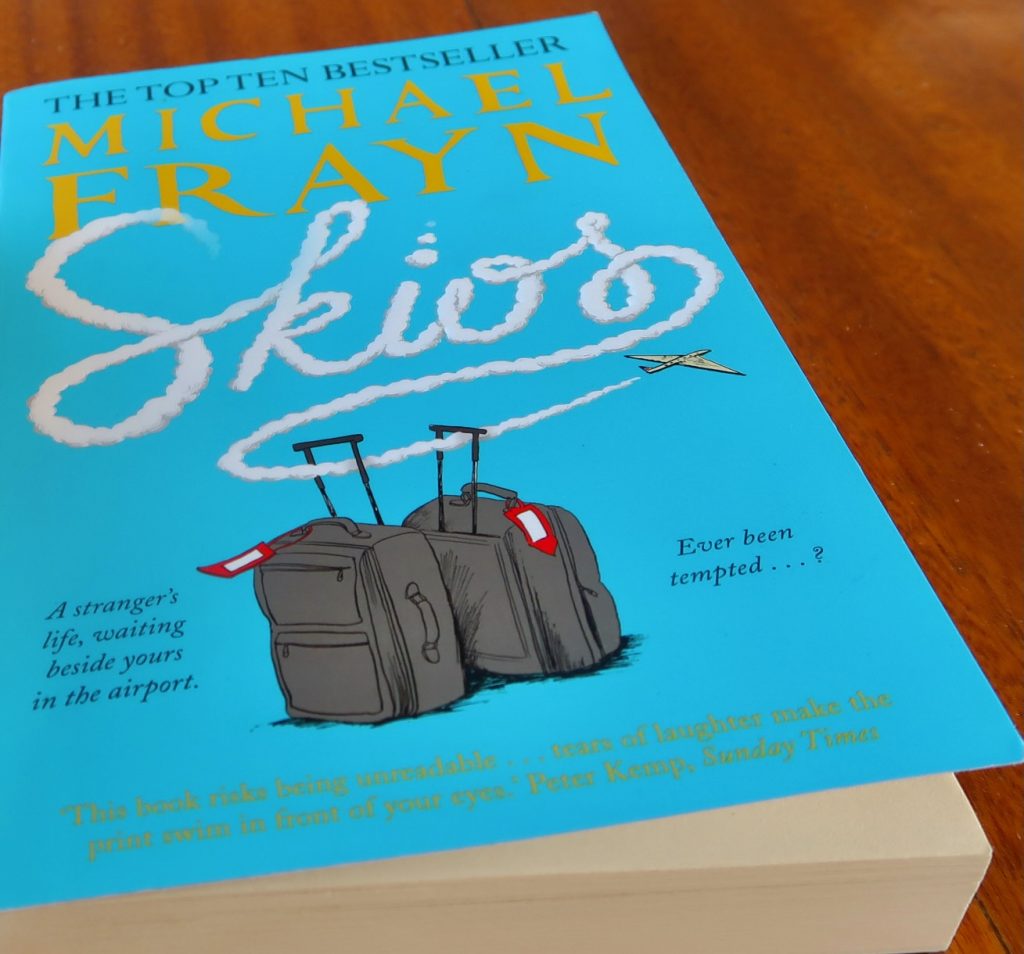
Kos is a large island with a lot of tourists and it was a bit of a shock when we manoeuvred into the packed harbour.
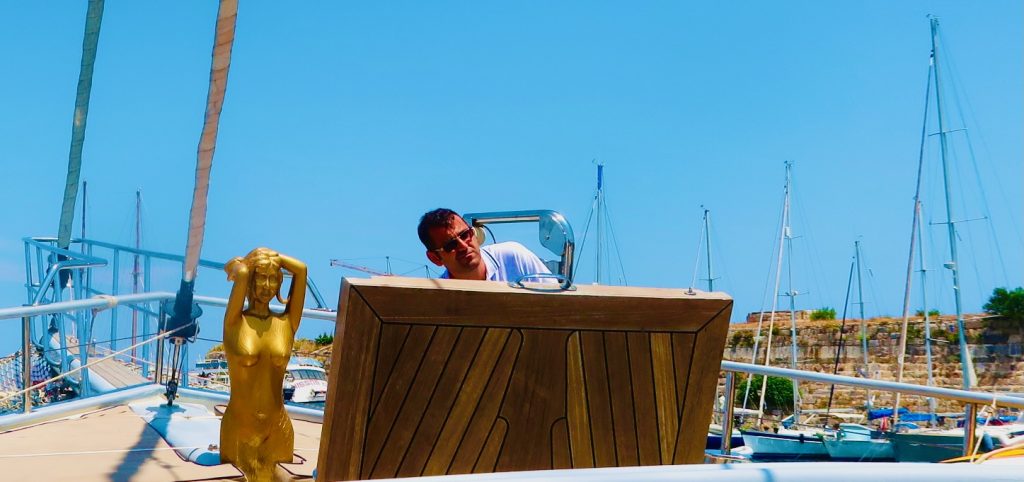
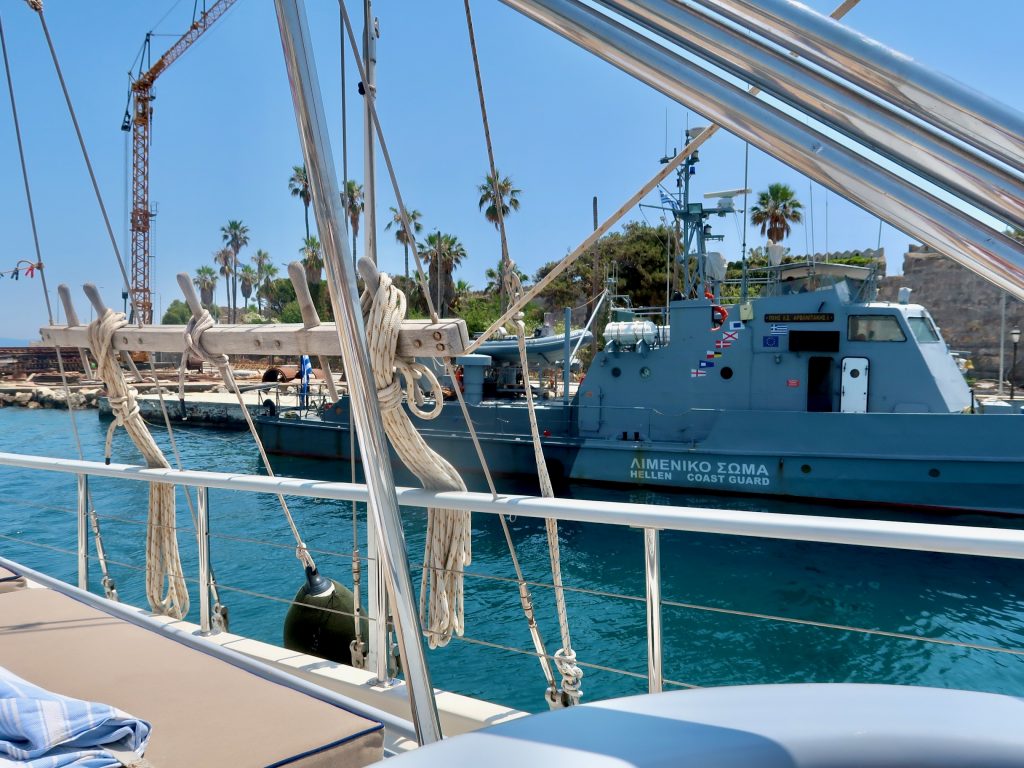
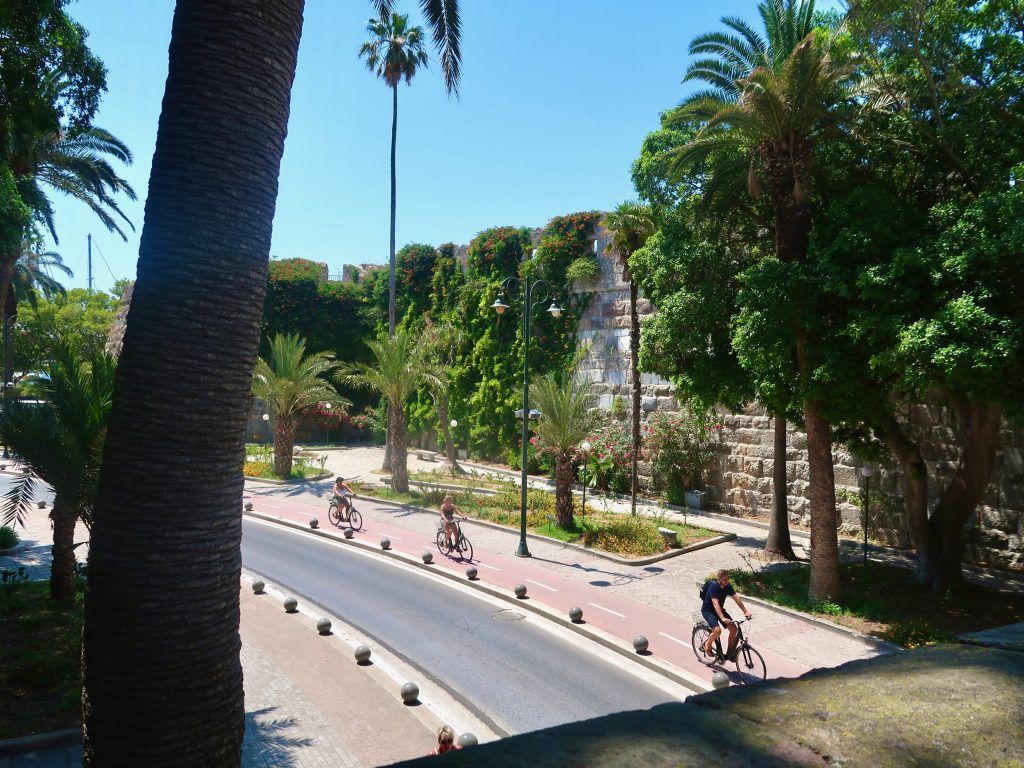

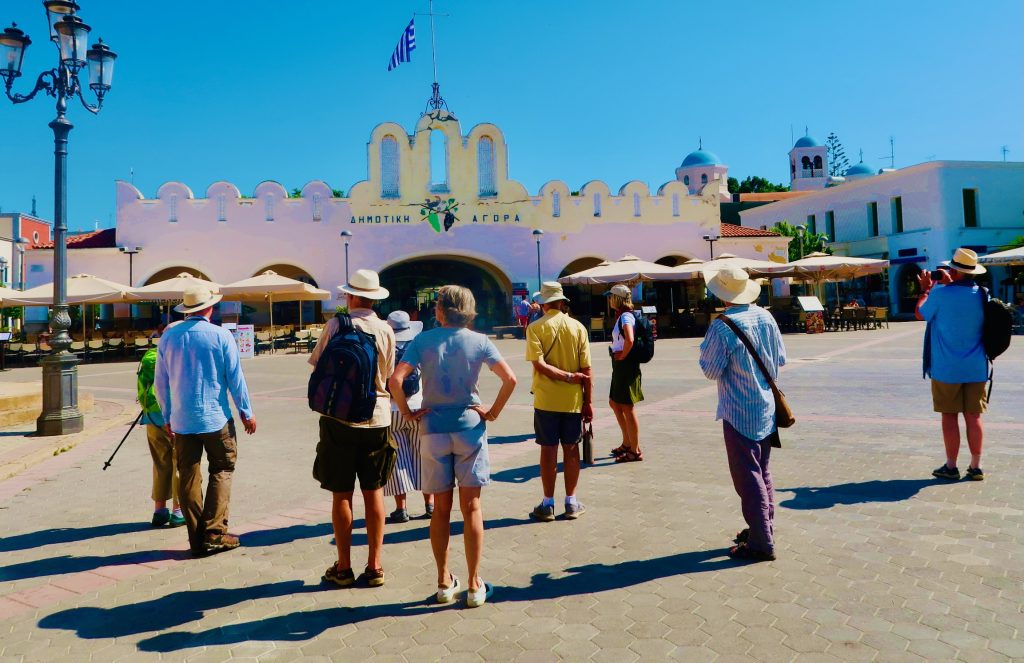
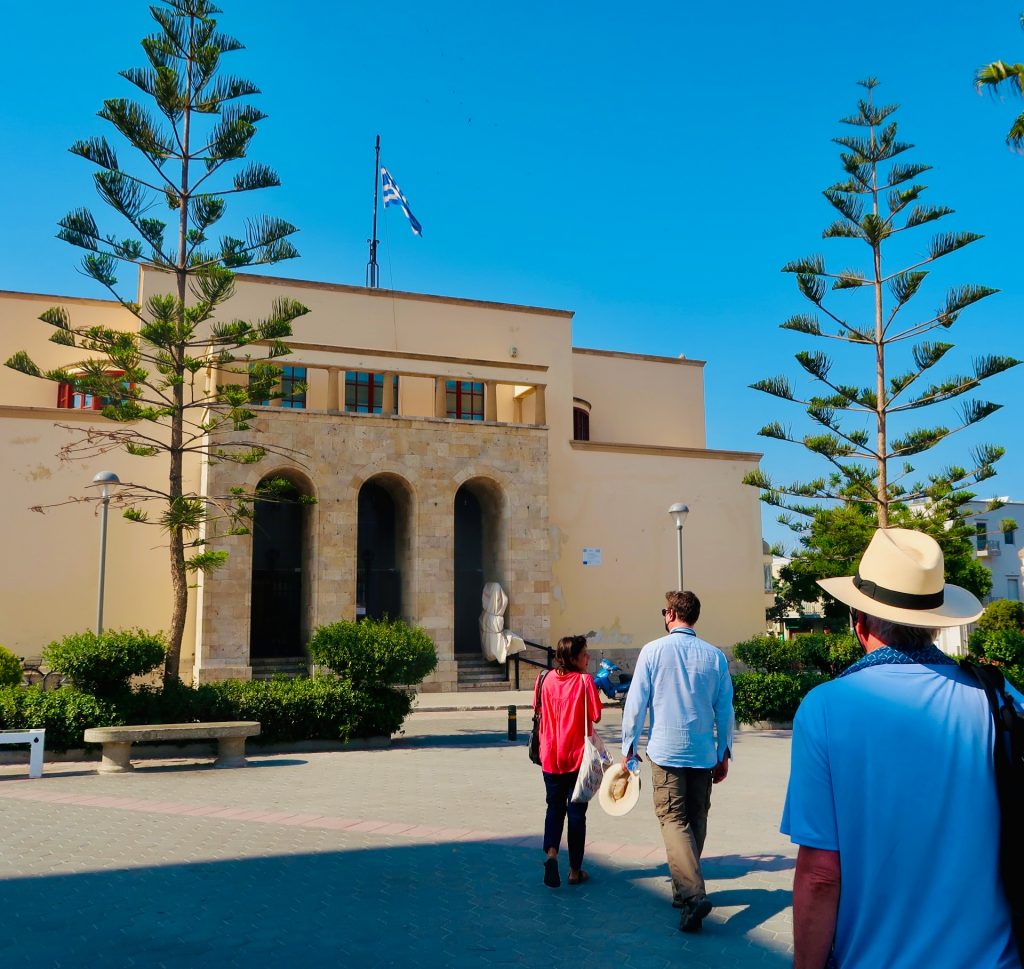

This island is prone to earthquakes. The 1933 quake uncovered many ancient ruins, many of which have been restored. However, there was another worrying tremor in 2017 and some sites are still temporarily closed.
The Archaeological Museum has many treasures and we got to see them …

I would love to know who or what is being embraced here!
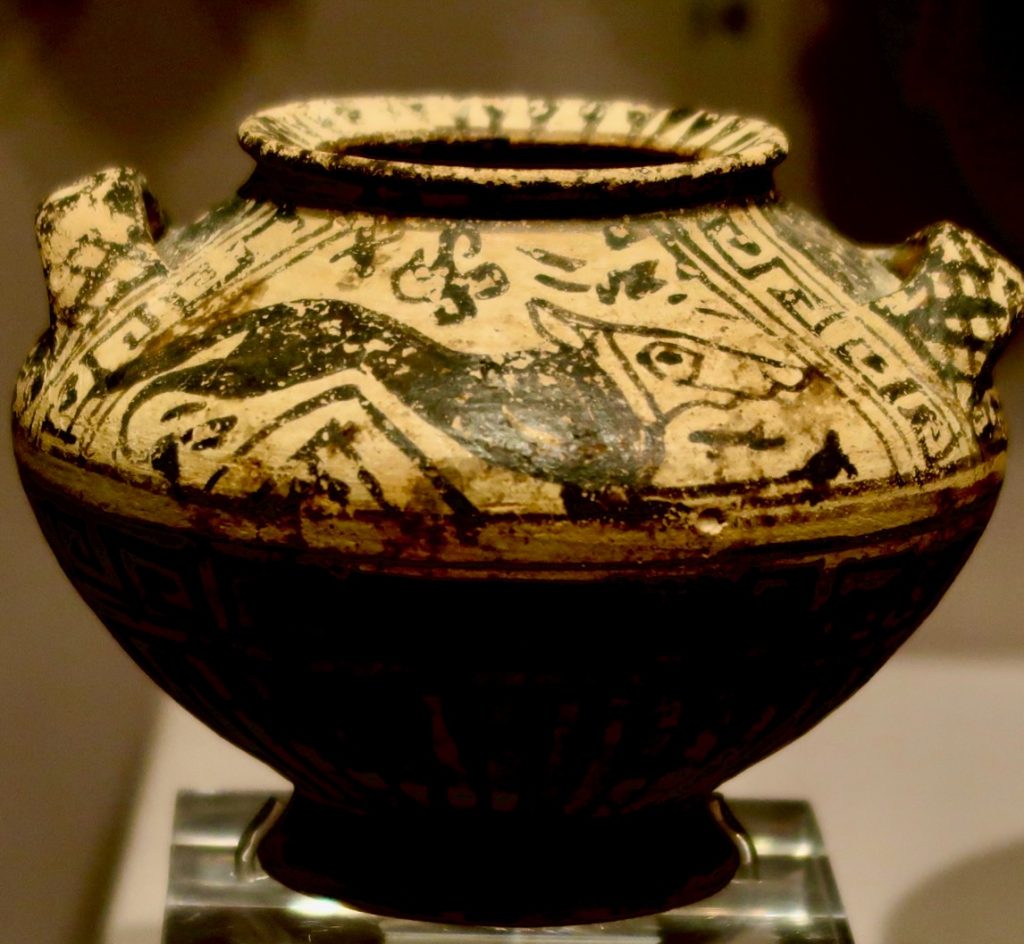
The Greeks loved to portray animals on their pots. I don’t know what this animal is but whoever painted it had a sense of humour!
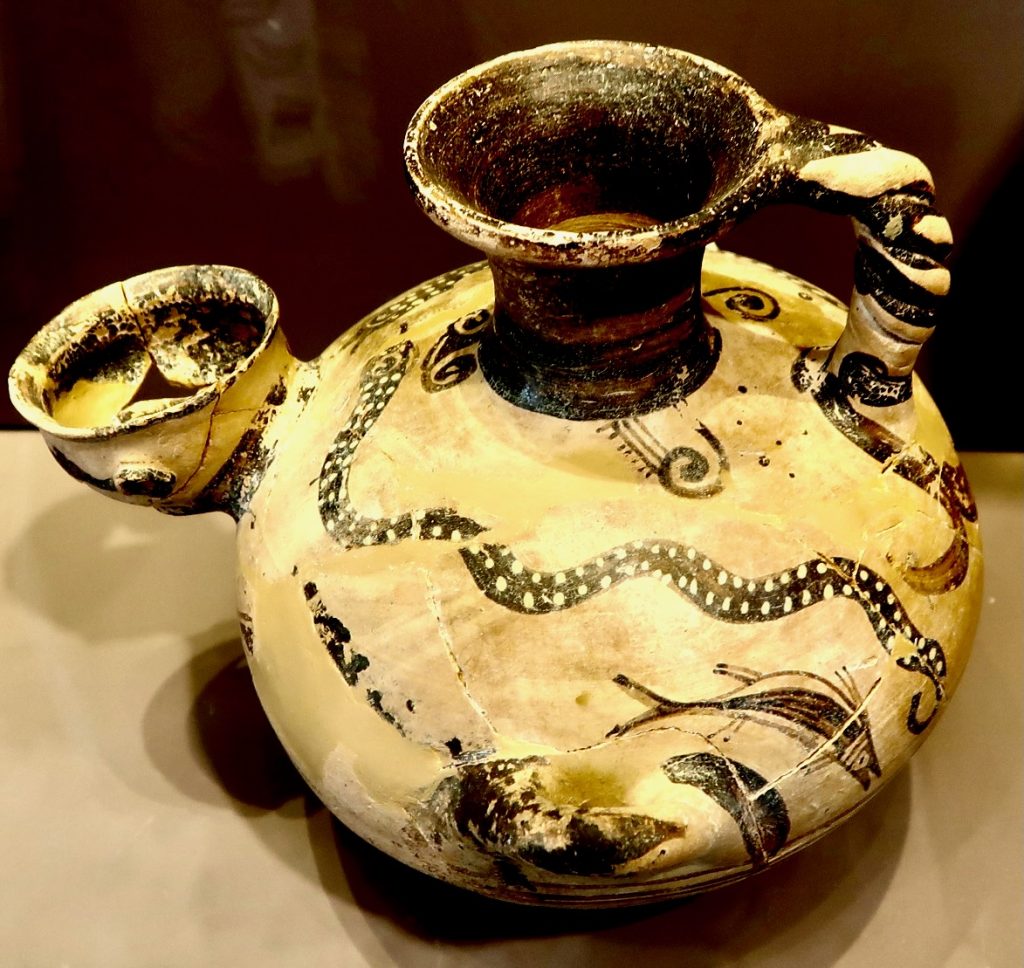

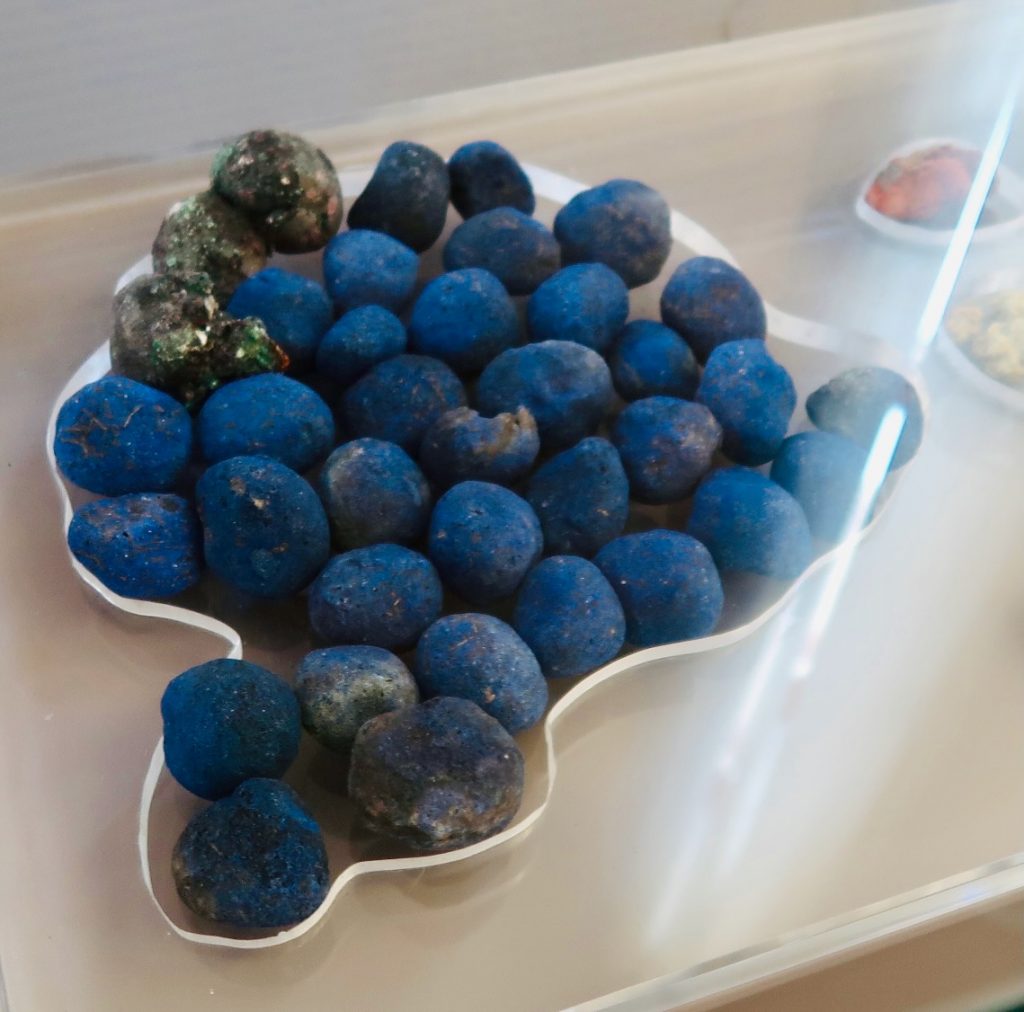
Blue black figs masquerading as a bunch of grapes – ?

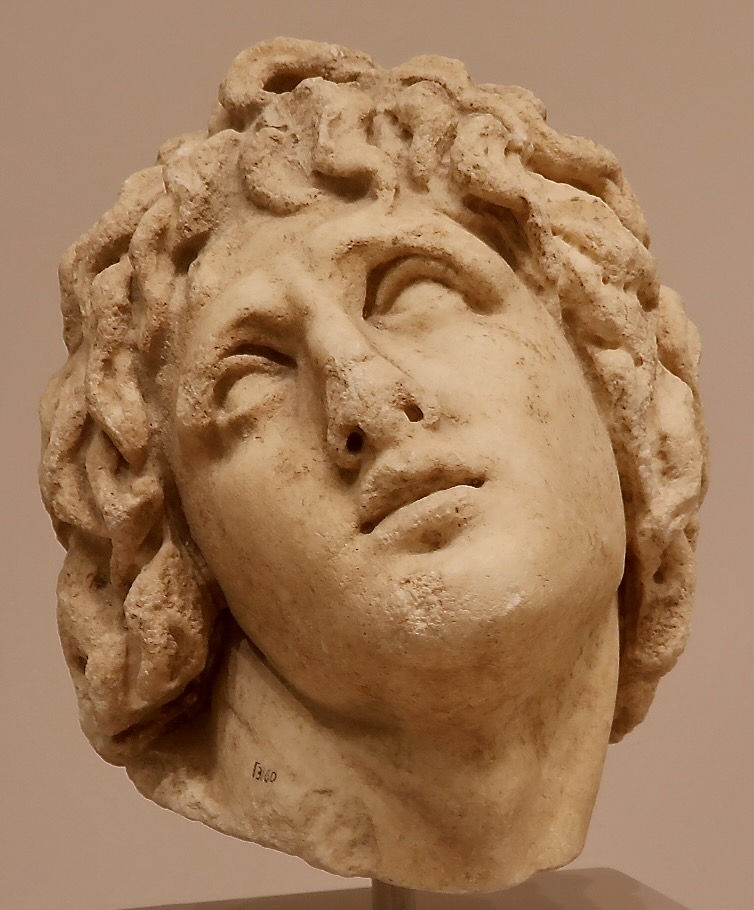
This was a great day and there’s lots more to see tomorrow.
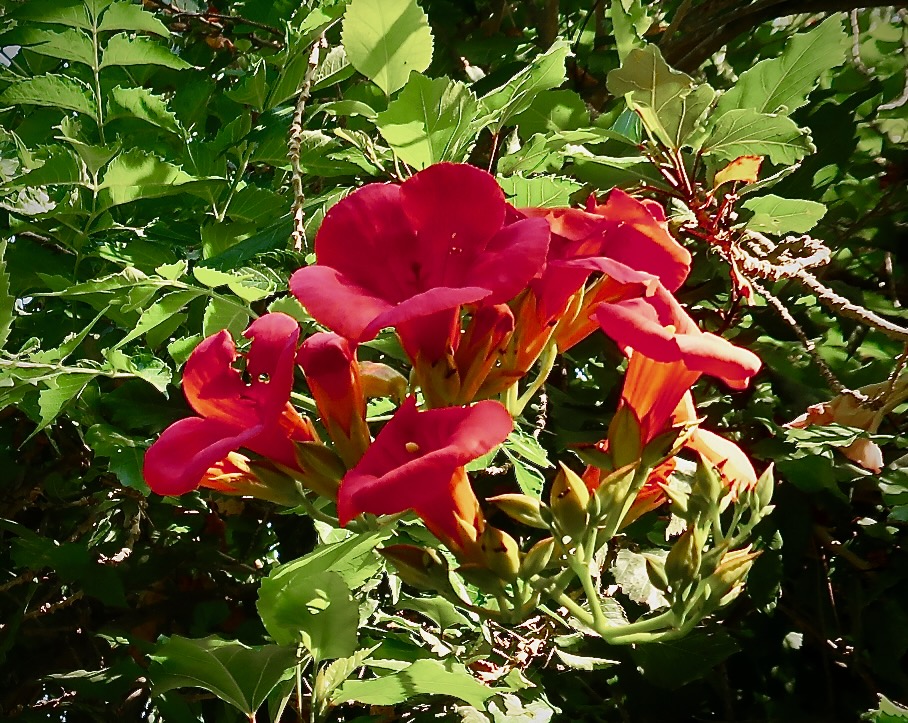
Next morning we make an early start to a site a little way out of town, built in the 4th century BC, after the death of Hippocrates, (who was born in Kos) and is known today as the legendary ‘father of medicine’.
It is set on a slope, with three levels, served by flights of steps and surrounded by pine trees with a view out to sea from the top. Asklepios was the god of healing and this location was chosen to encourage rest and recuperation after illness in beautiful, natural surroundings.
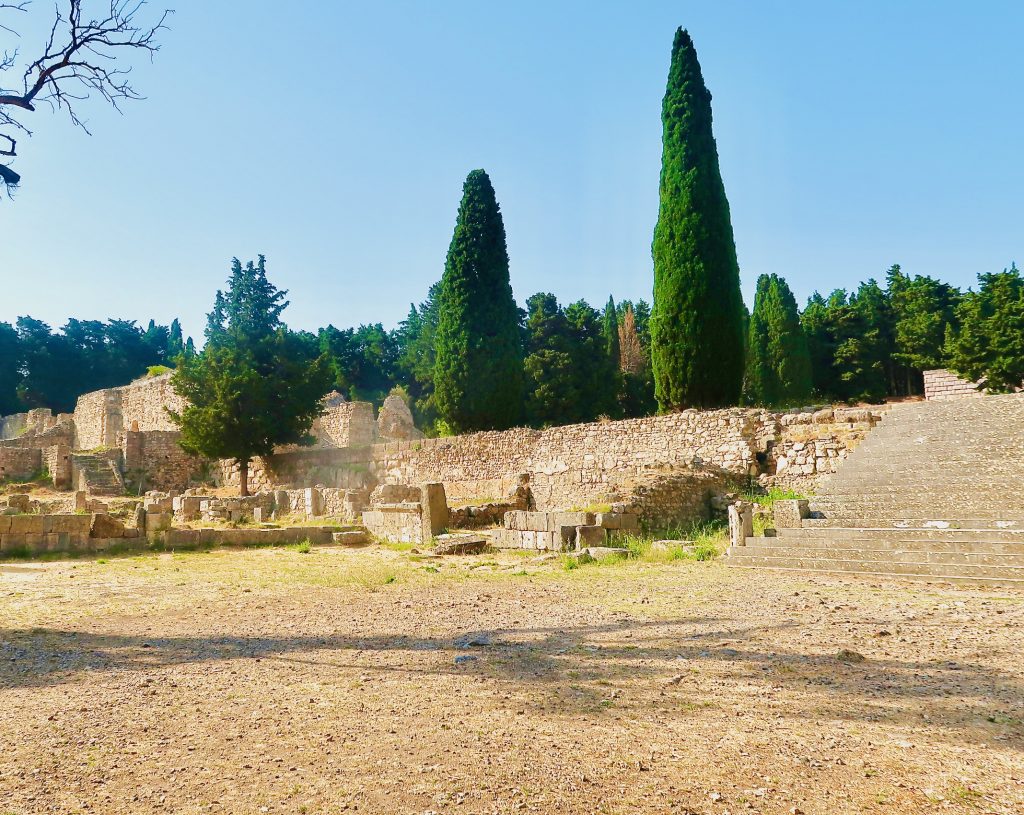
You feel a sense of calm and tranquillity as you enter the site – a sanctuary from the busy world. Many more of these ‘asklepieia’ can be found all over Greece, a famous one being Epidauros in the northern Peloponnese.

Hippocrates was first to proffer the philosophy that illness was not a punishment from the gods but happened from natural causes – for example, environmental factors, diet and living habits. Doctors should only prescribe beneficial treatments and the Hippocratic Oath, symbolised in Western medicine even today has the message ‘Do No Harm’. The symbol is of a snake wound around a rod. I wondered whether that is why so many snakes are portrayed, painted on the pottery we have seen? There is more to find out here … snakes were powerful in some way …
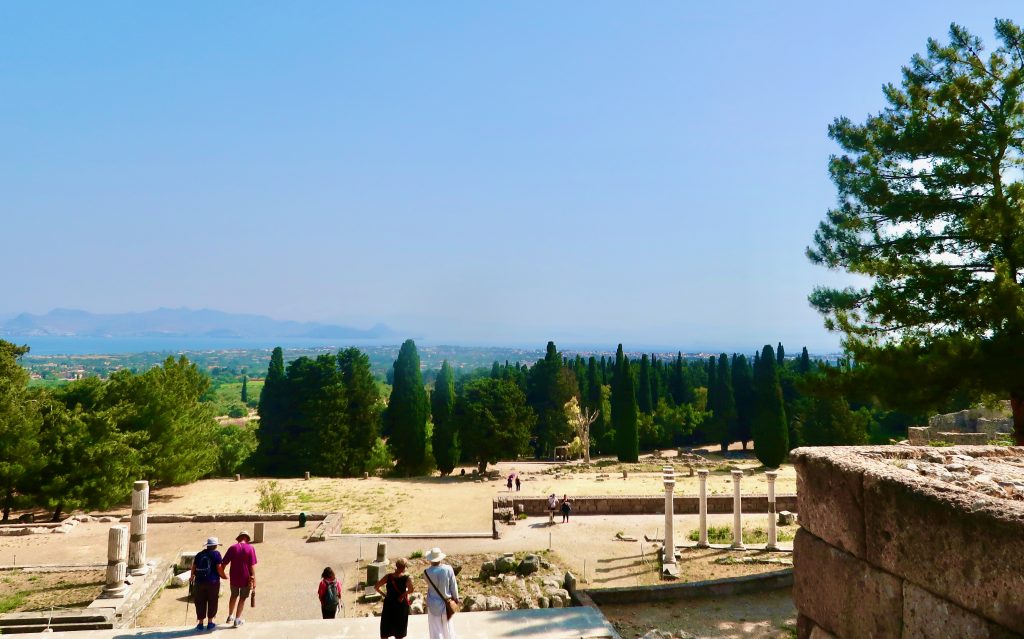
This setting is glorious and stirred something dormant deep inside me. My father was a doctor and I’ ve always been interested in the history of medicine, preventative medicine and how to stay well and healthy. I wish I could have brought Dad here.
We’re in the busy harbour of Kos again tonight but the captain is planning to take us to the islet of Giali for a welcome swim en route to our next island.
On the way we pass a place where obsidian is mined. Obsidian is black and shiny – natural volcanic glass – which, for example, is used to make jewellery. We are on our way to explore the crater of a massive volcano on the island of Nisyros, which spewed out obsidian and pumice amongst other things at its last eruption. I hope it continues dormant during the next twenty four hours – you never can tell! There were strong earthquakes here last in 1997 …
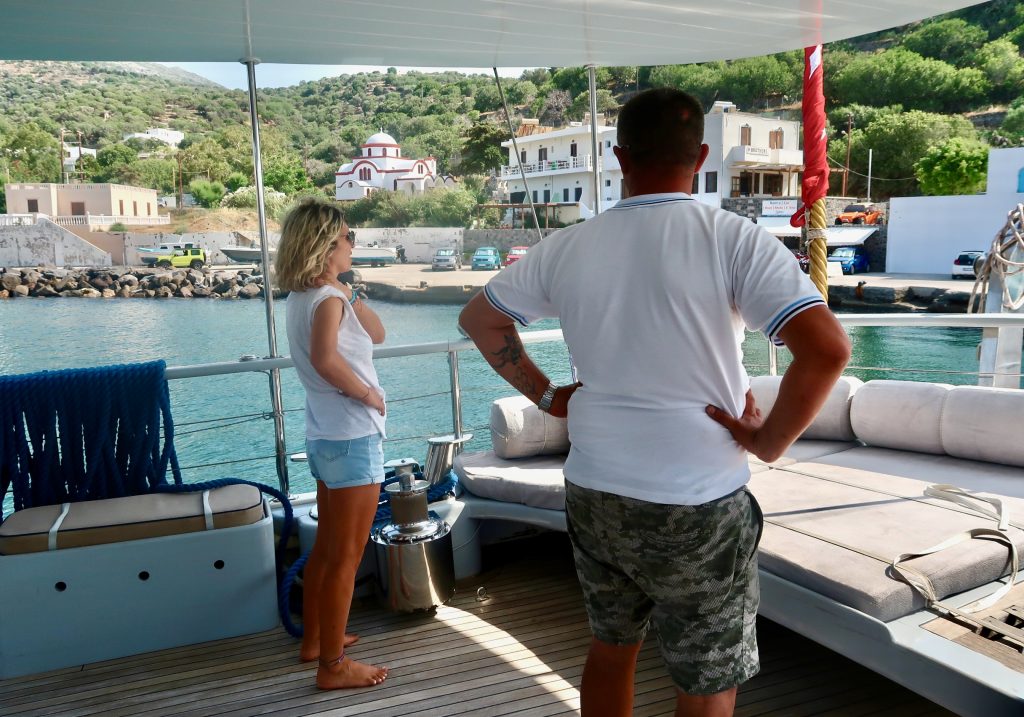
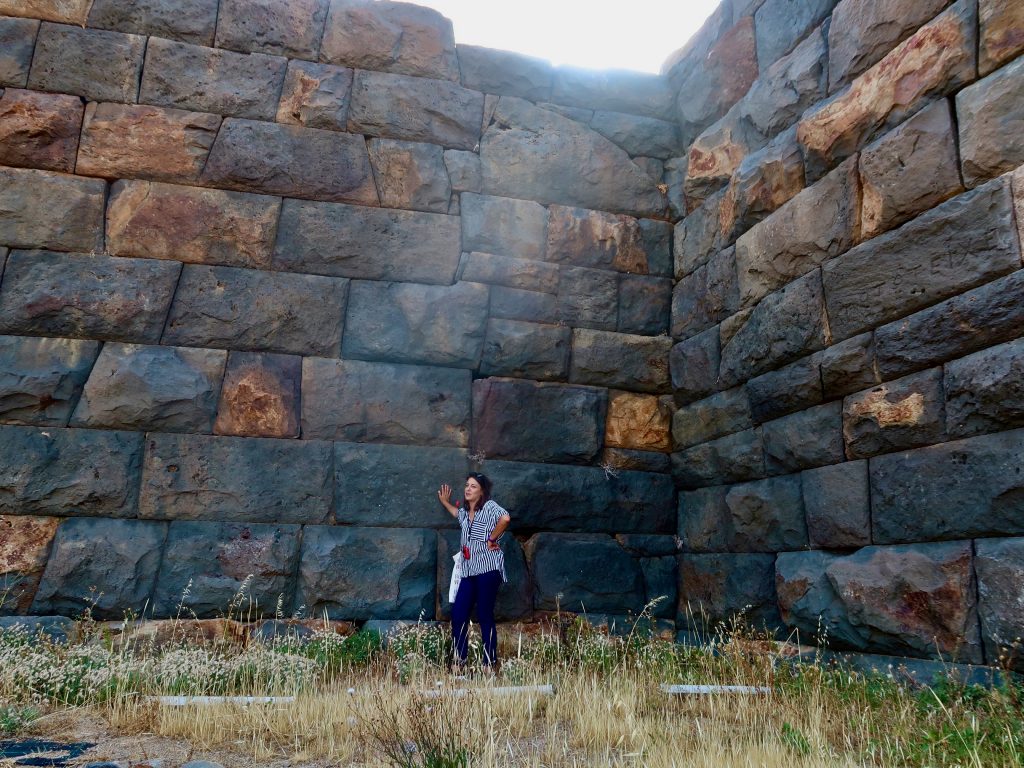
These massive, tightly hewn together blocks of stone (how did they manage this?) are extraordinary. Sort of unbelievable in a way, as if they were slotted together by giants. And Nota’s knowledge of Hellenistic history is just as amazing. Both our guides are terrific.


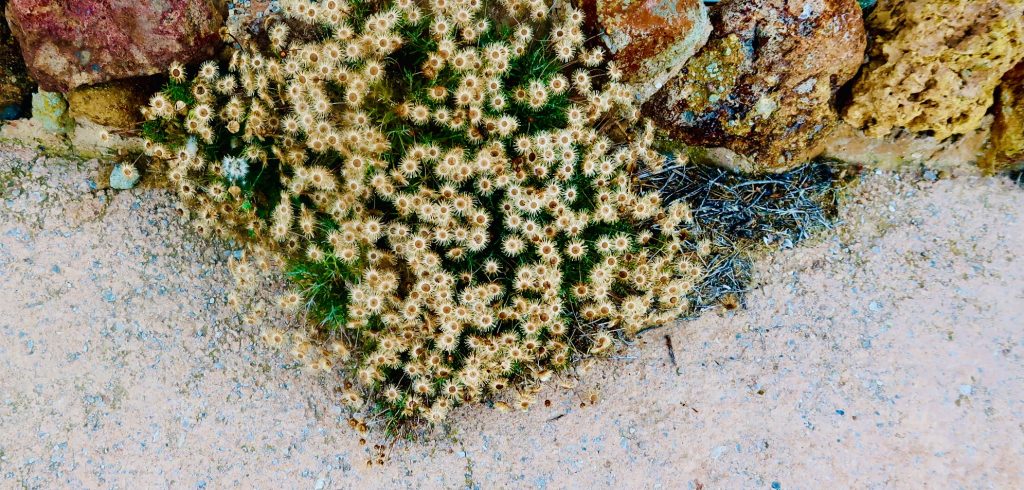

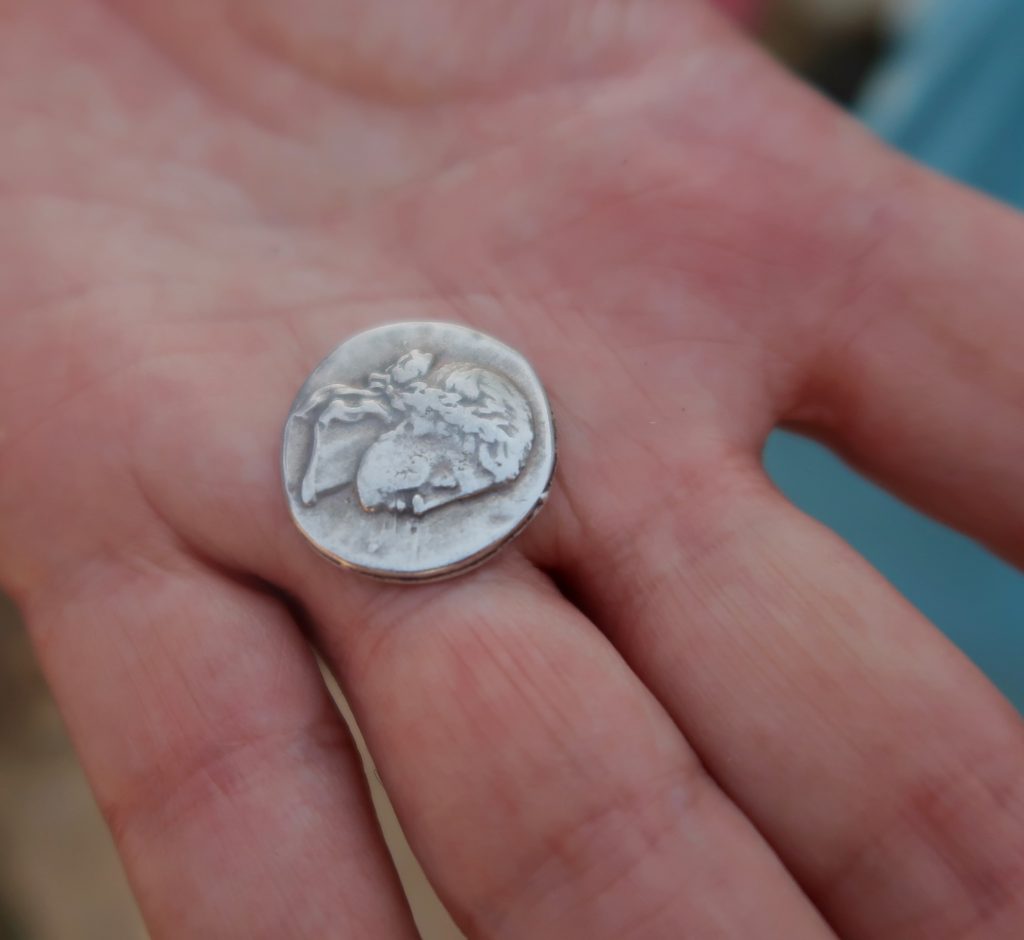
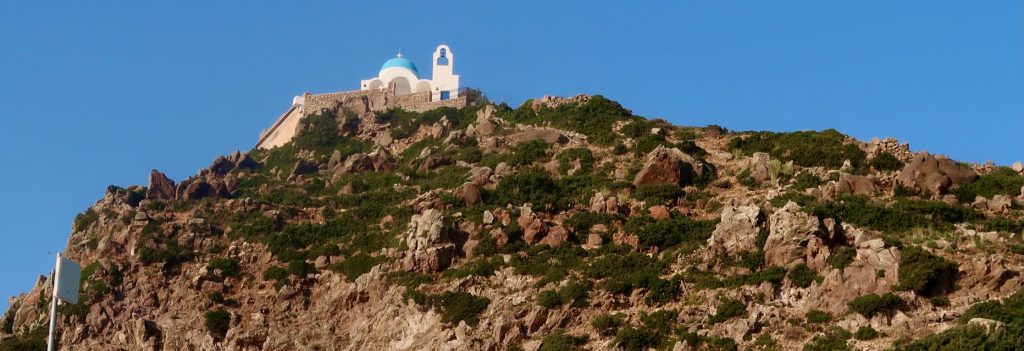
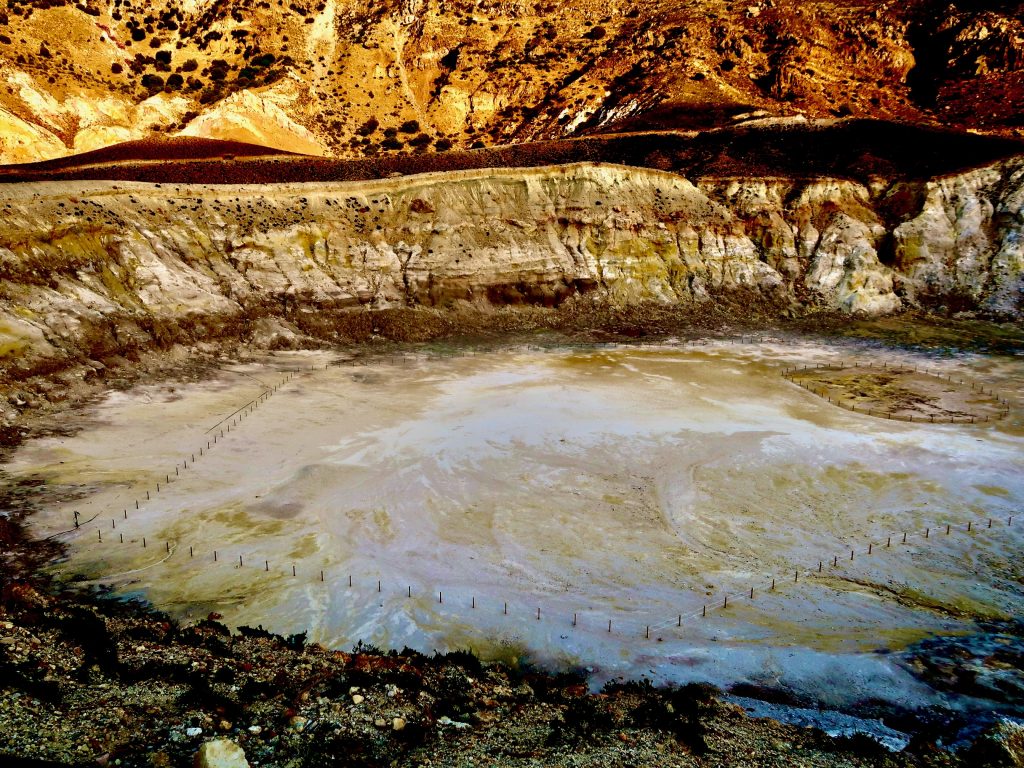
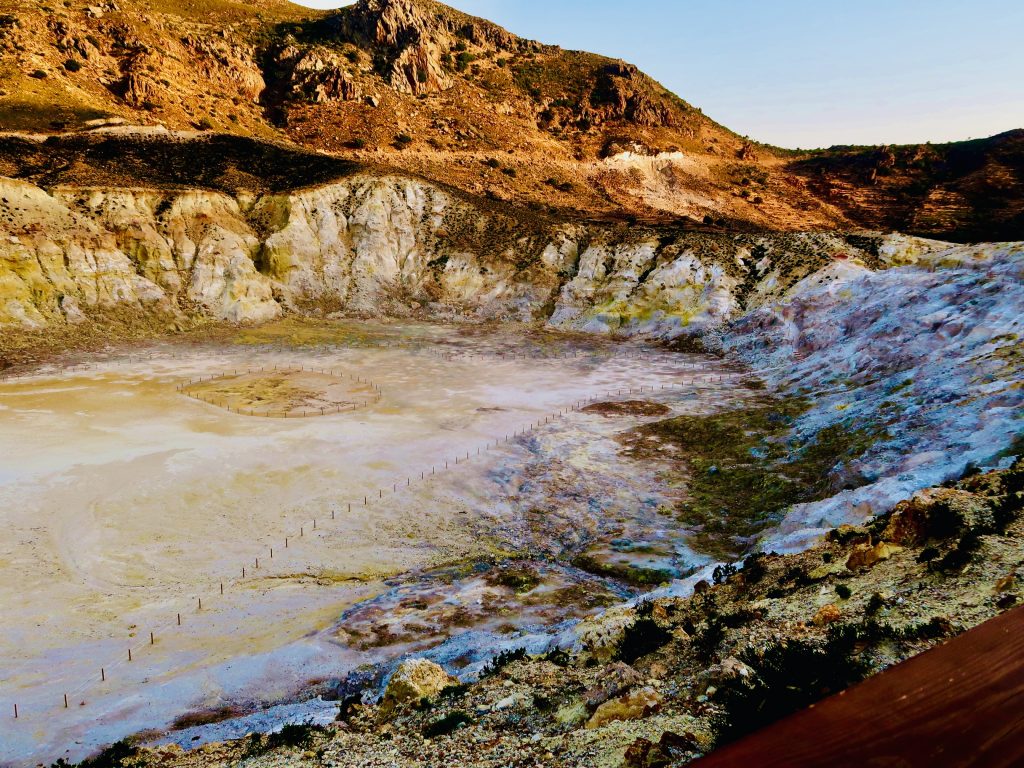
The crater (caldera) is 260 metres across at its widest. Michael said that it used to be possible to walk across it but a fence has stopped that now. Maybe it claimed a victim … Mud bubbles just underneath the surface. The threat of eruption or perhaps the equivalent of ‘hot’ quicksands lies in wait for the unwary explorer …

The yellow colour in the crater is sulphur.The smell comes out of vents in the crater floor, and the stink of sulphur is so strong that I feel quite nauseous – but the view standing on the edge of the caldera is magnificent.
There’s a small café and a stall selling pieces of pumice stone and obsidian, which this sleeping monster has scattered around. I have to buy some of course. I’m also thinking of Mount Etna, where ladybirds live amongst the ash and black lava – I’m very lucky to have been so close up to both volcanoes in their dormant state. Like being in a lunar landscape without having to travel to the moon!
Glasses of a kind of local nut milk are provided – delicious – as we sit under blossoming eucalyptus trees, vibrating with the buzz of honey bees above our heads. In heaven, on the edge of hell. I am totally happy!

This volcano visit has been utterly fascinating. There’s a television programme, presented by Iain Stewart (a geologist) on Eurasia – he shows how all the continents have moved so much in the past and continue to do so now and explains the parts played by volcanoes and earthquakes. A violent and fragile planet lies beneath our feet.
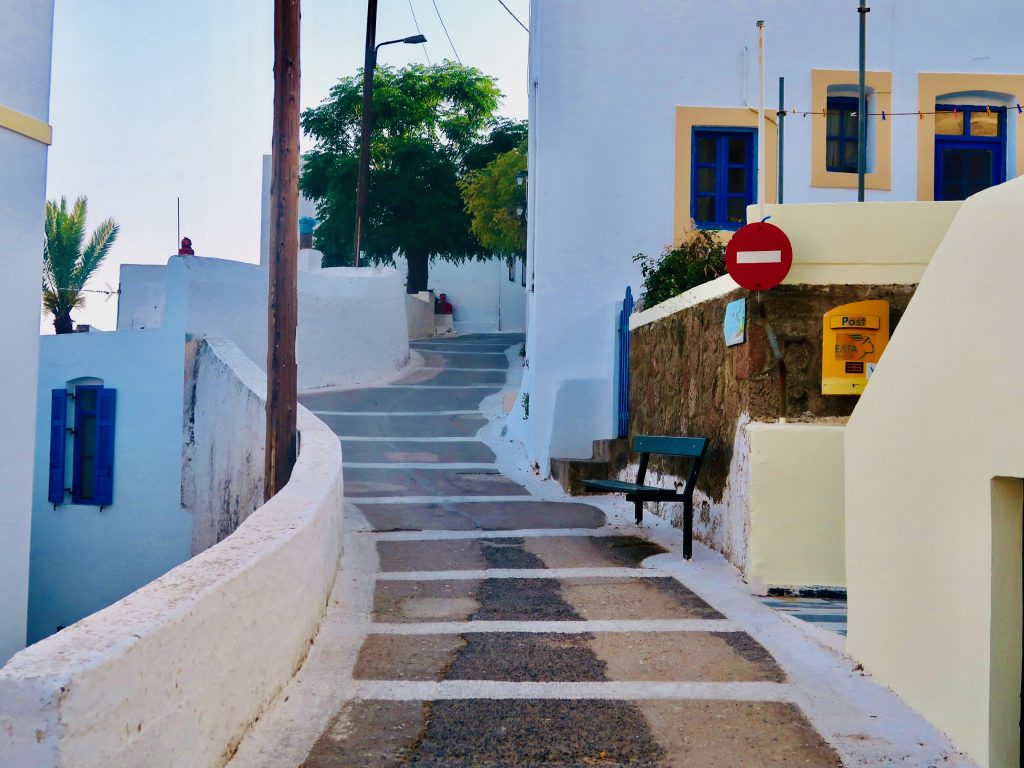


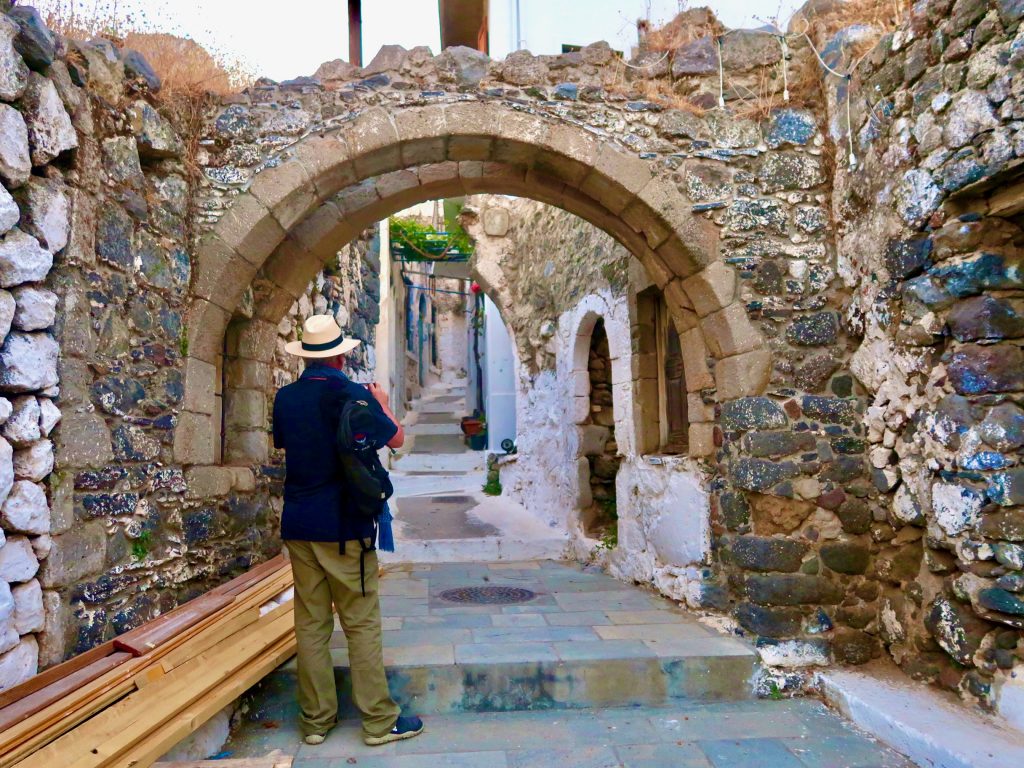
The restaurant has a beautiful terrace at the back with a breathtaking view over the Stephanos crater. As we went in for supper I noticed a shattered mirror and an old photograph of a military man.
The story is that the Germans came here in WWII and a Greek captain was shot. The original shattered mirror is still on the wall along with the captain’s photograph. I took a (rather blurry) photo, which shows the current owner of the restaurant reflected in the mirror. A sad occasion but important to keep the memory.
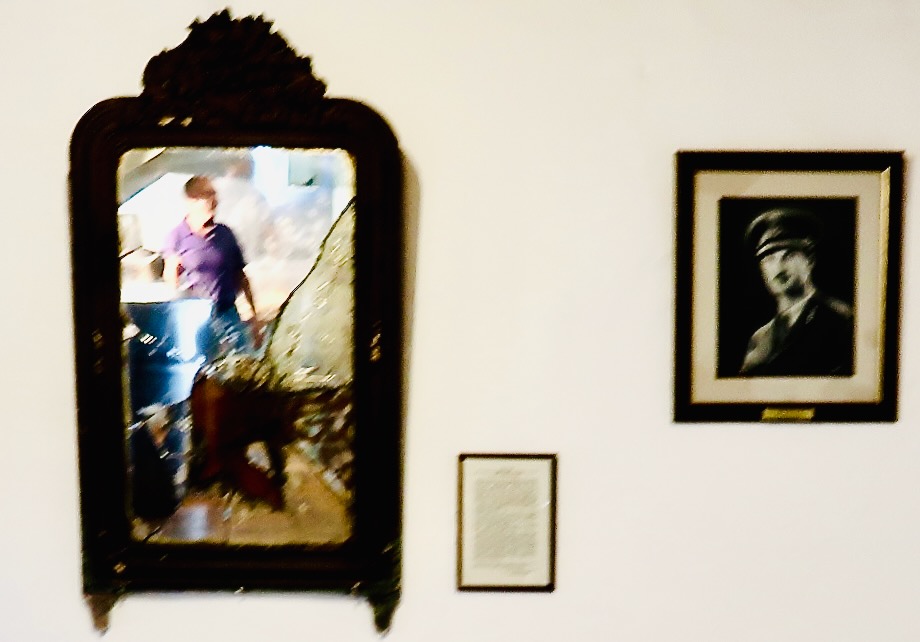
The restaurant pulled out all the stops for us this evening and gave us a delicious meal, full of fresh produce. This day has been so rewarding on so many fronts. It’s now ‘Goodnight’ from me, the underlying movement of the waves rocking me into sweet oblivion …

I’ve rather fallen for Nisyros. It’s so original – with the massive volcano and yet the peace and quiet of this little port with its flags from many countries fluttering along the jetty.
Next morning we have a short time to explore the village – Mandraki – by ourselves before setting off for the ‘green’ island of Tilos. I always enjoy some time on my own to find things out, say hello to the locals, potter about and do a little shopping. Perfect! John is staying on the boat to read. He doesn’t like pottering.
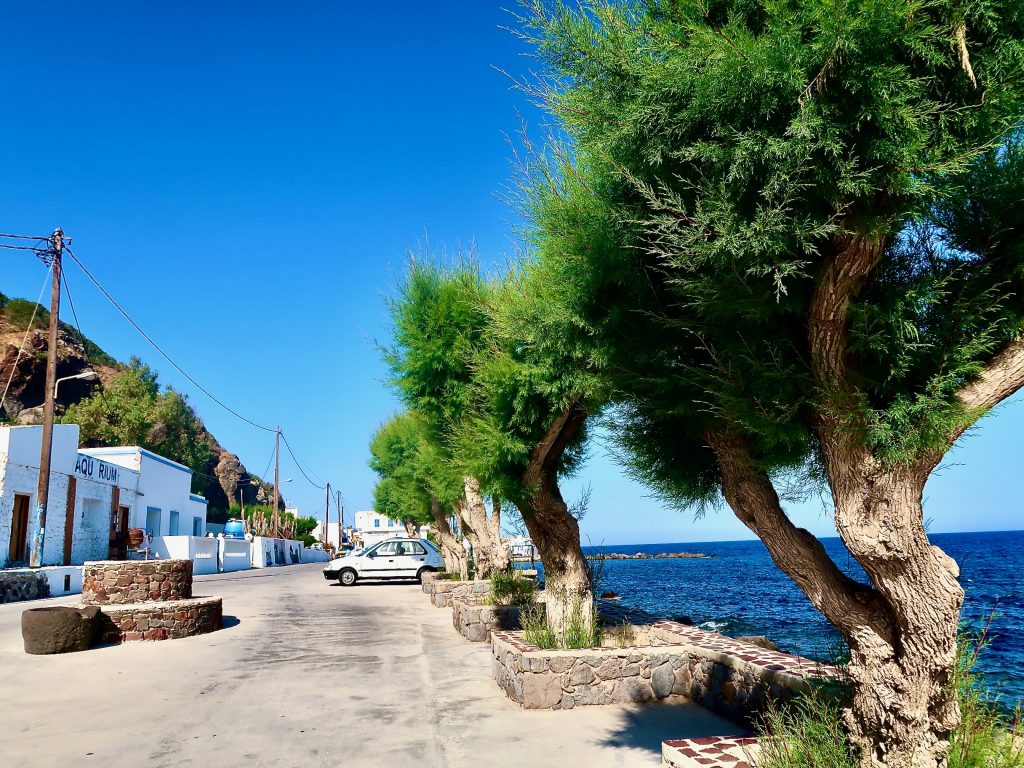
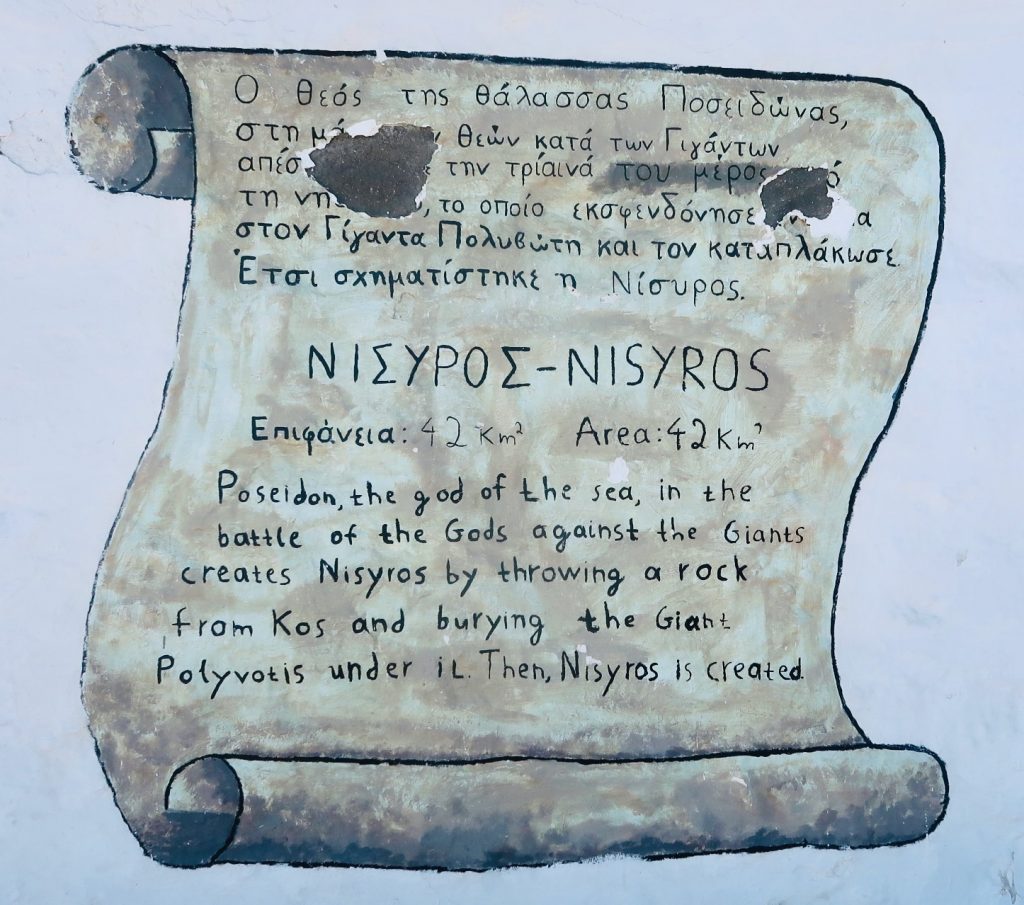
This scroll was painted on a wall. Glad I wasn’t here when it was happening. I look out to sea to check that Poseidon doesn’t have his eye on me!
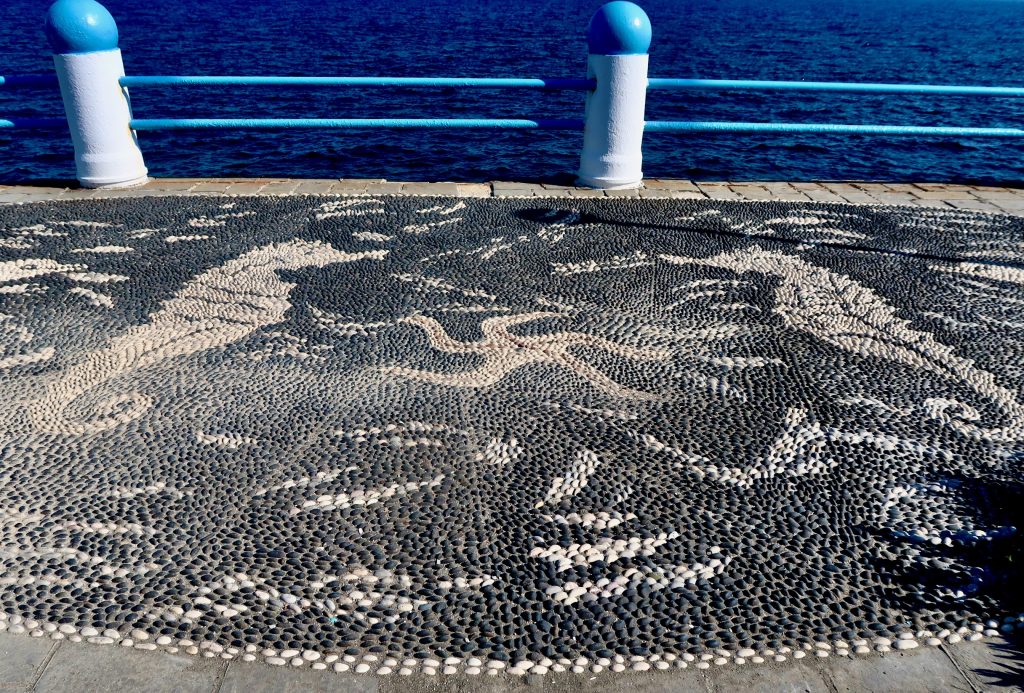
Sea horse, starfish, dolphins – I’m just sorry my camera couldn’t fit in the whole mosaic. It’s very impressive and very beautiful.
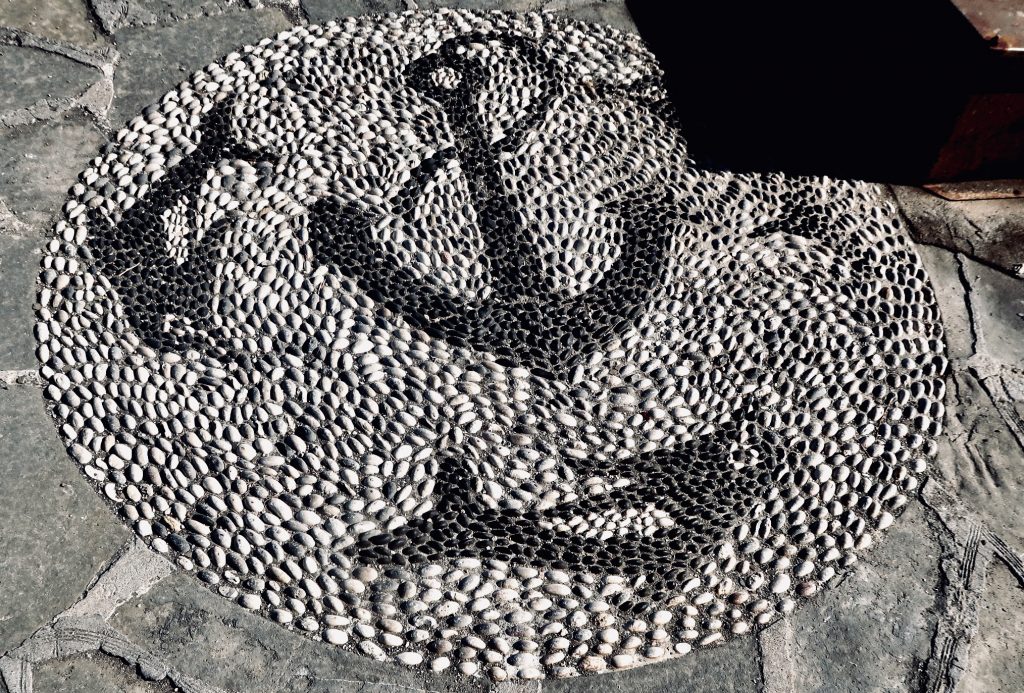
This is a smaller version but I thought I’d just squeeze it in – these pebble mosaics are special and can be found in different areas of Greece from the fifth century onwards. I must find out more about who did them and how they found the stones.
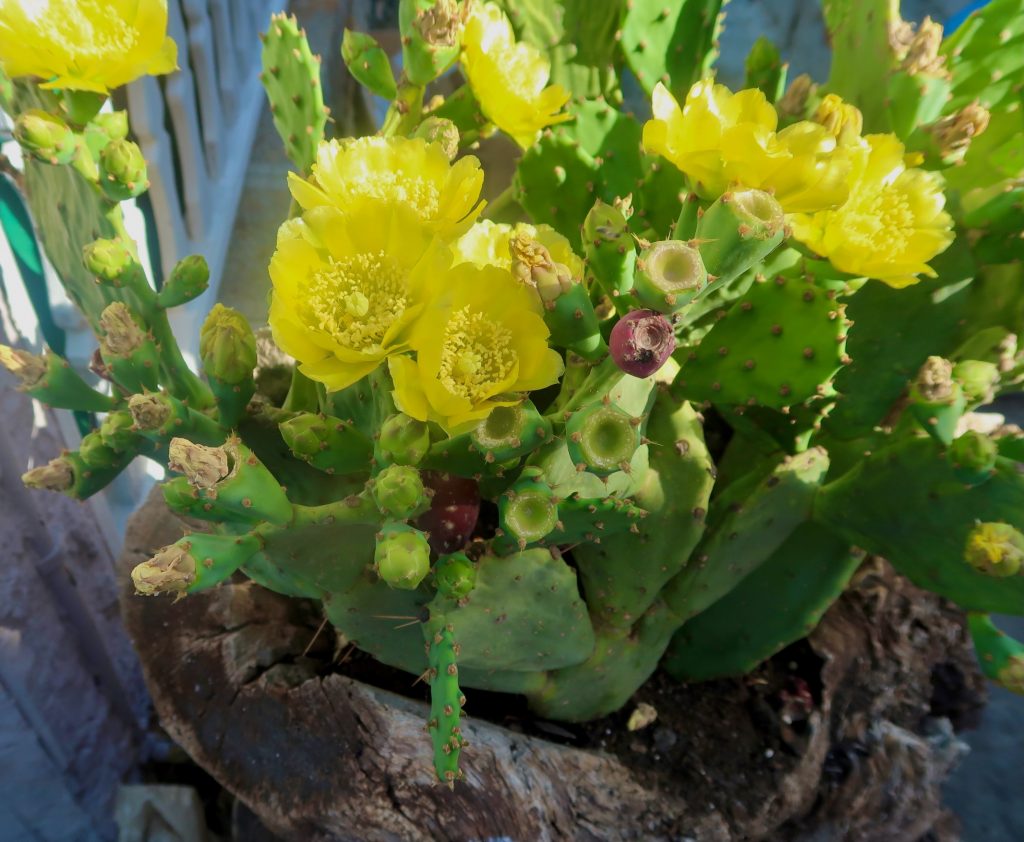

This is a most delightful seaside village . I need more time to explore. However, I did buy olive oil soap, some mixed with seaweed, some with honey. Small Greek cookery books for friends – I could have gone on but ‘tempus fugit’ and I must make my way back to the harbour.

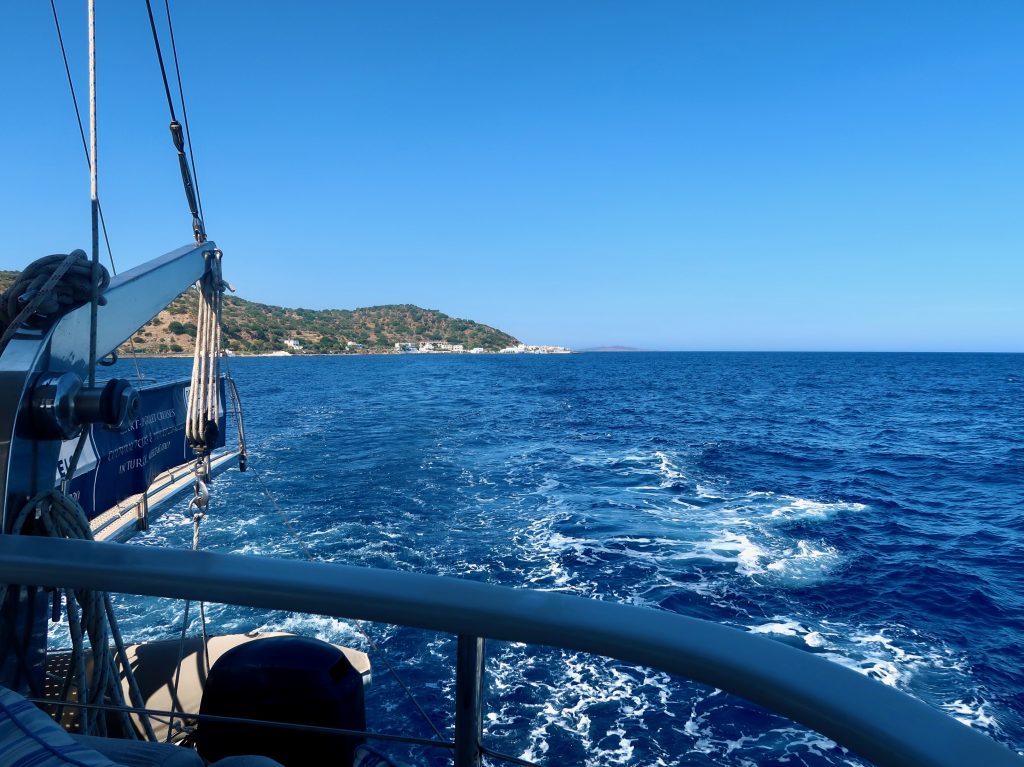
Our first week seemed to go quite slowly as we familiarised ourselves with living on the boat and getting to know our companions. The captain has found small coves for swimming along the way and there’s a special one coming up, he says. I love climbing down the ladder into the water which is very clear even twenty feet down. Swimming here is a joy.
Meanwhile, Tilos is the next island on our itinerary. It’s the first Aegean island to rely entirely on renewable energy and the only island to ban bird hunting.
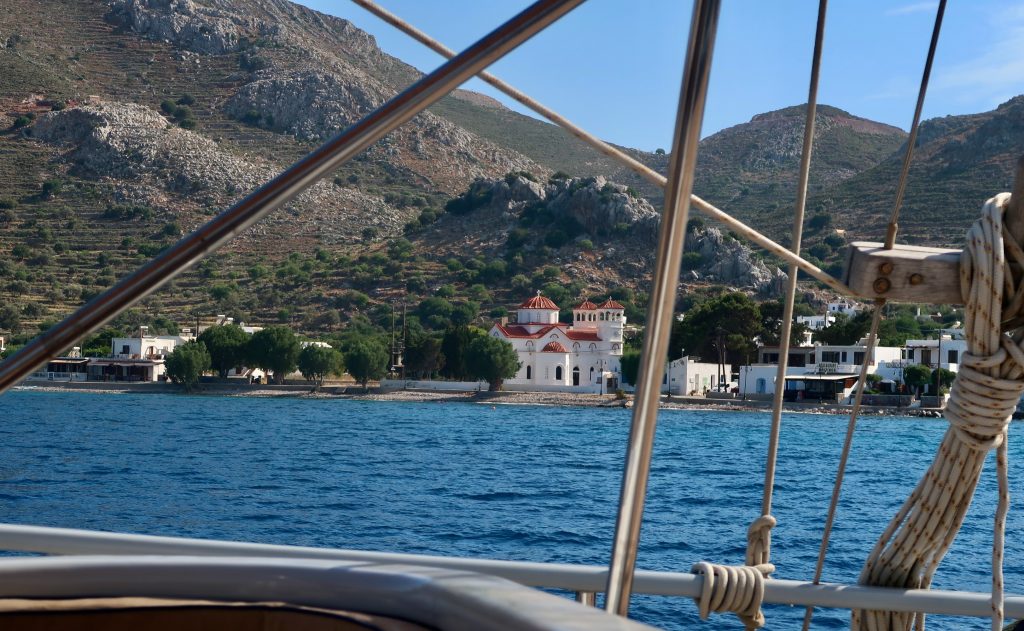
This island is very fertile, growing citrus and almond trees. I can’t help but buy two jars of Tilos honey. They will have to be wrapped up in the laundry – fingers crossed. My case is getting heavier …
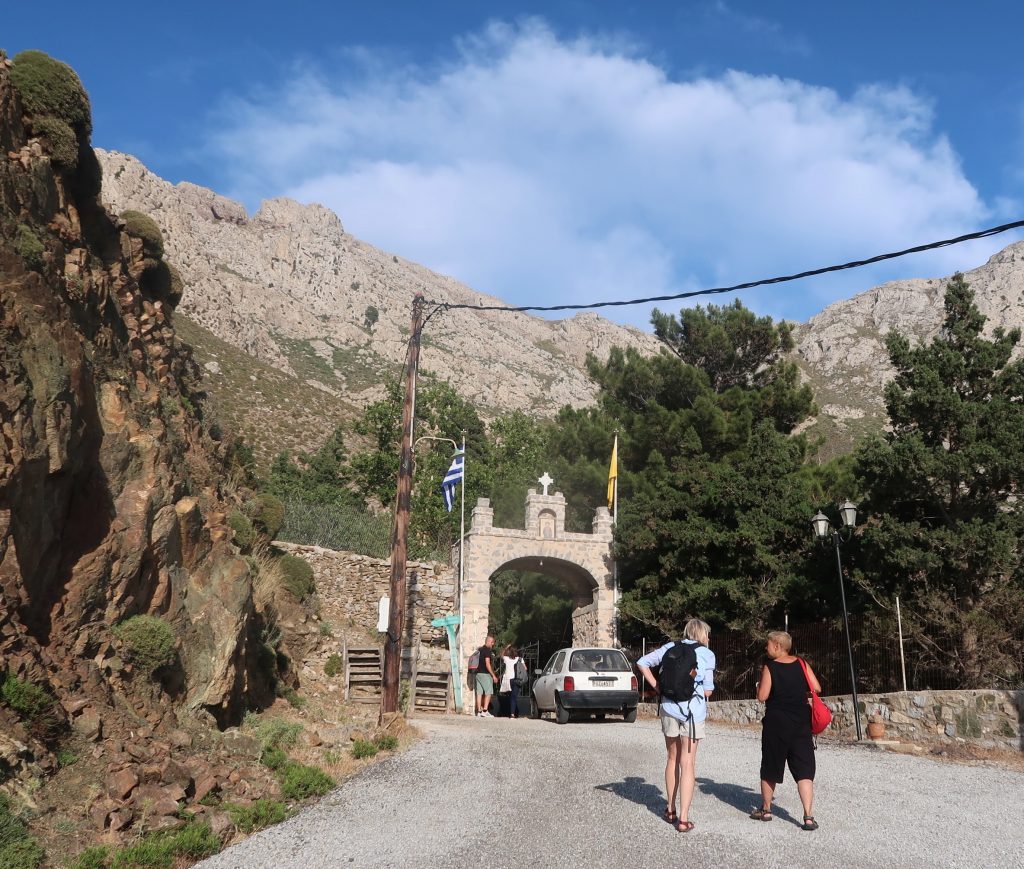
The star turn is a visit to the monastery of Agios Panteleimon. A long, winding road leads ever upwards on the edge of cliffs beside the sea to a dramatic location where the isolated monastery is tucked into a ravine between high mountains with sheer drops to the sea far below.

We are greeted by the priest, a youngish man with dark hair who is very welcoming, offering us a drink from the cold water spring. The views from the top of the monastery out to sea make you want to take off like a bird. The air is pure and fresh and the atmosphere of this sacred place is of peaceful solitude. I light a candle. I’m glad places like these still exist.
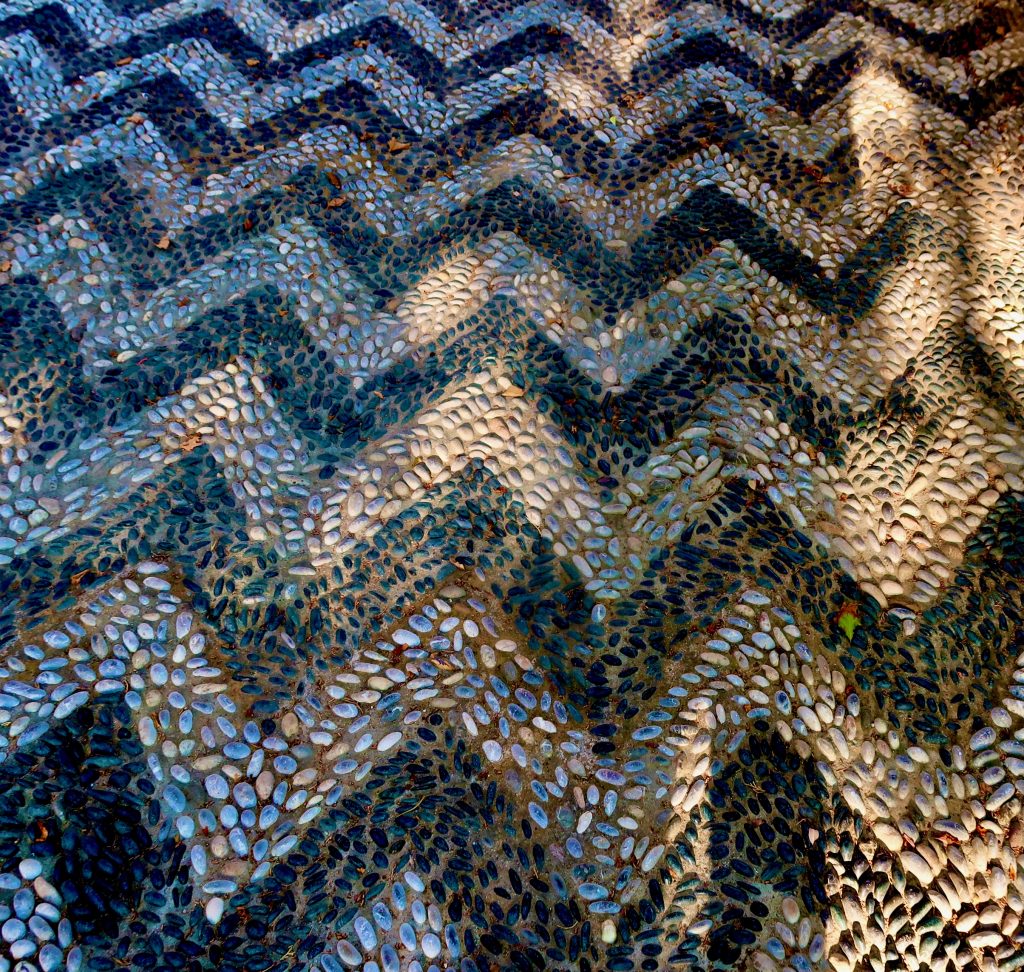
I didn’t manage to take many photos as the camera’s battery ran out. But John took some good ones for his journal. Apparently, Eleonora falcons have been seen, plunging down the cliff faces, enjoying the air thermals.
Tilos also has a strange story to tell of pygmy elephants, whose remains have been found here. We didn’t have time to visit the elephant museum at Megalo Chorio but apparently these creatures lived here until 6,000 years ago, survivors from an ice age, who became smaller and smaller as they were trapped.
Tilos doesn’t attract tourists who come for sea and sand and night life. Here you can walk, go birdwatching, and enjoy good Greek food and hospitality – time slows down away from the busy world.
It’s a short hop to Hálki with a stop for a swim from the boat on the way.
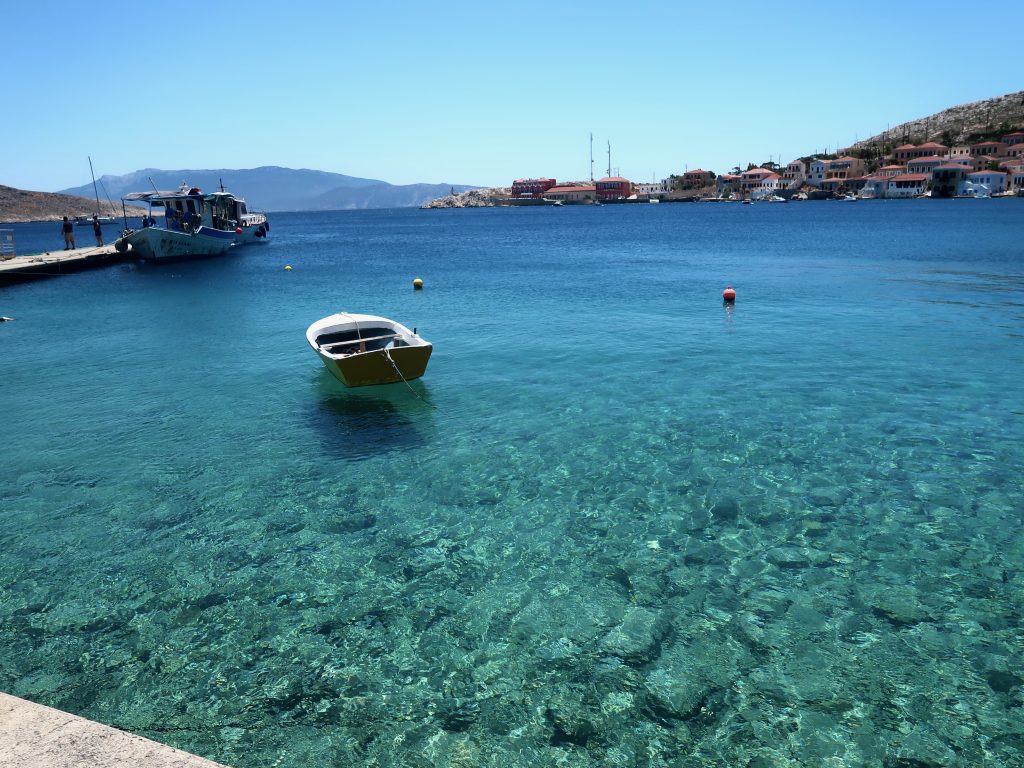
Hálki has a very picturesque waterfront. There are many cafés and restaurants to choose from and an Italianate clocktower and some fine villas. I’m tempted to sit here all day and just look at the comings and goings with a drink to hand.
The flâneur part of me is insidiously taking over but Michael and Nota have other ideas and we’re soon all in the bus making our way to the highest crusader castle we’ve visited to date.
High in the sky, overlooking the sea, was our goal. Would I manage to make it to the top? Perhaps not but it was worth a try. Step by step, slowly but surely, with a little help from Michael here and there, the castle was finally in my grasp. And it was glorious … spectacular.

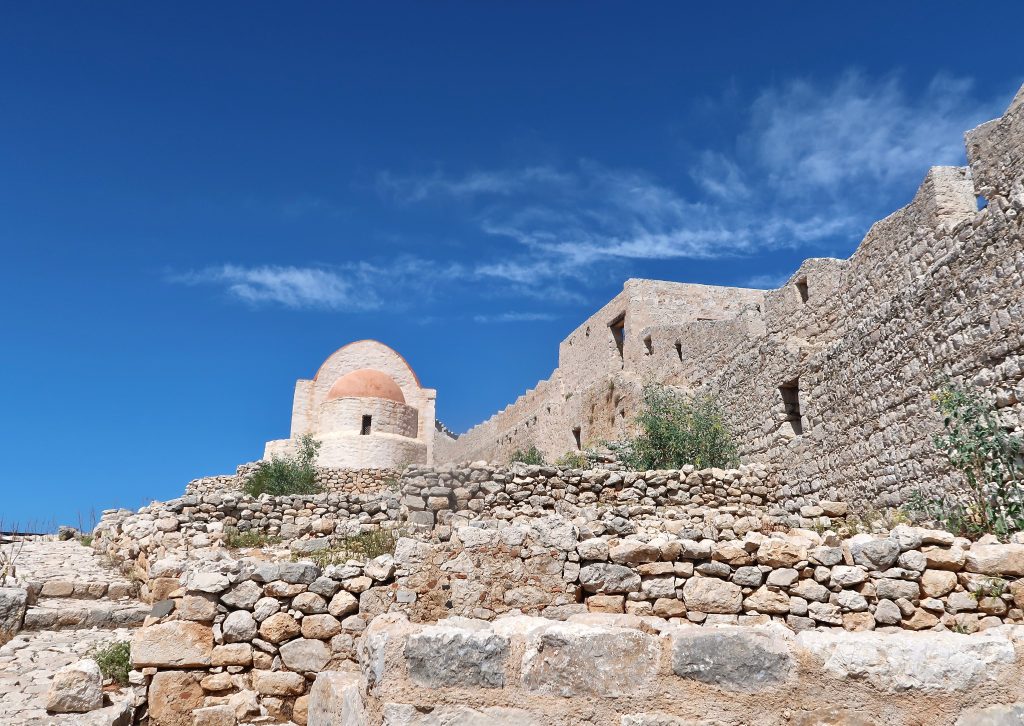
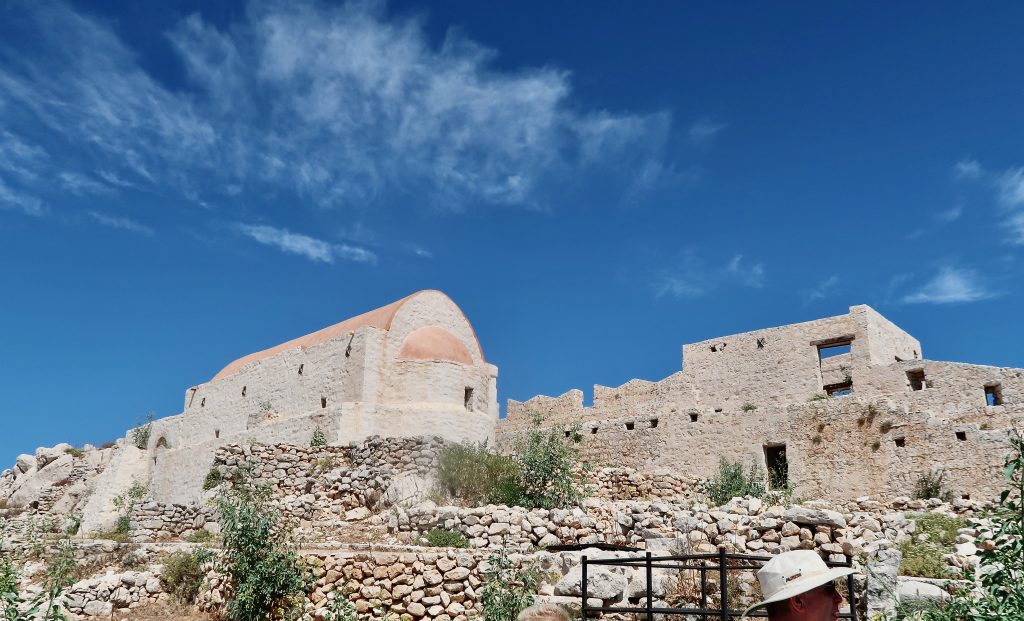
The views out to sea are just fabulous …
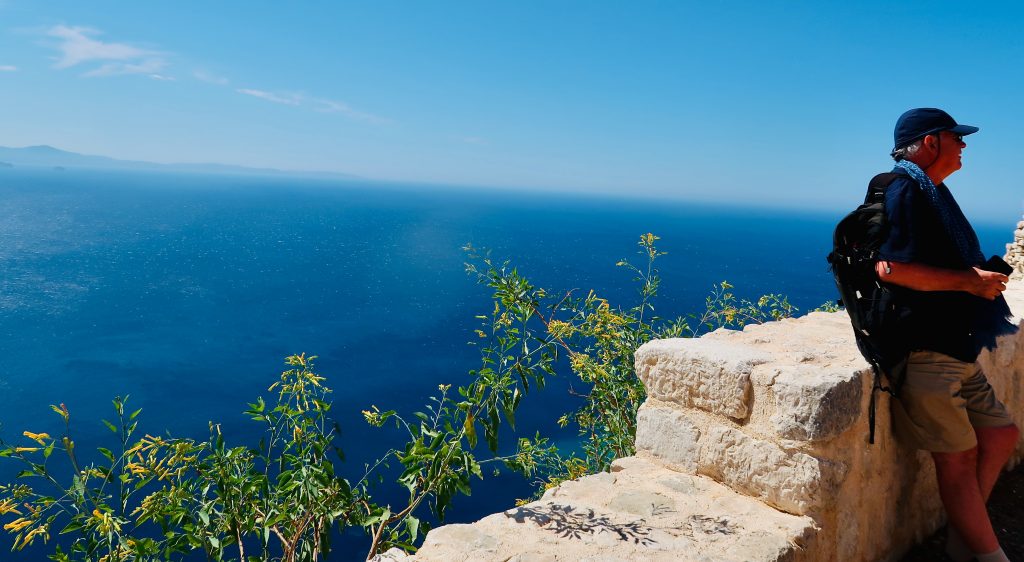

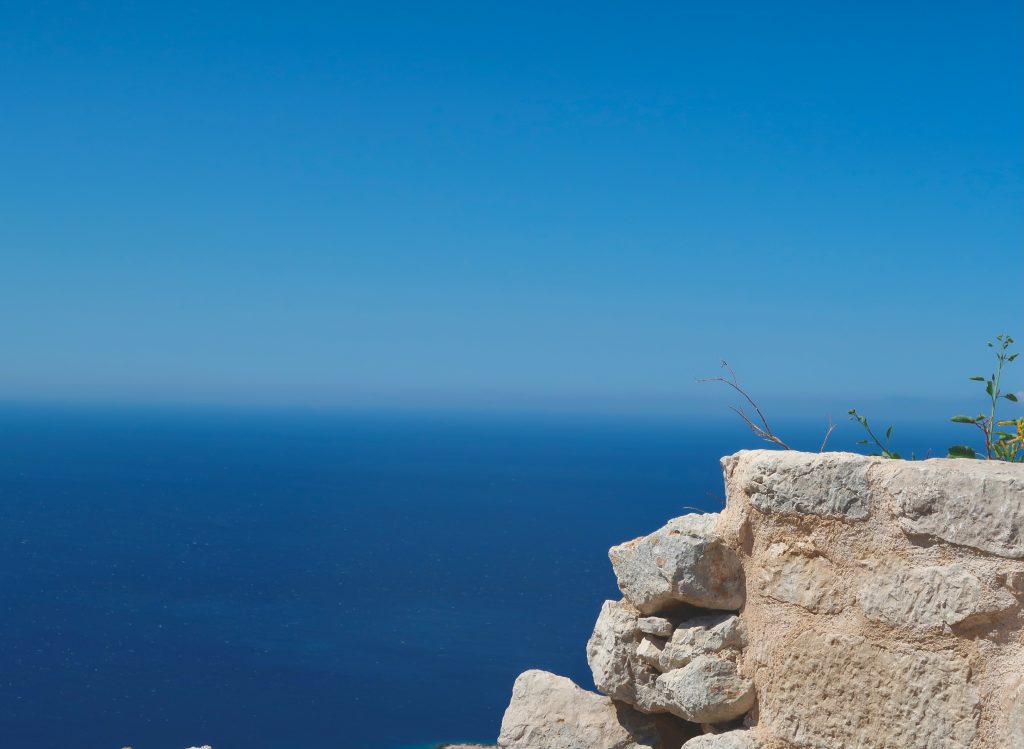
This reminds me of paintings by Mark Rothko. They are contemplative and in the same way I am drawn to the meeting of sky and sea – the mystery of infinity.
Reality bursts into my musings as I gingerly pick my way down, avoiding loose boulders on the path. It’s a long haul.
Two of our group opted to stay behind this time and we went to chat to them on a small bridge, where they were waiting for us to return. John said he would take my bag – he can be forgetful, so I was reluctant to hand it over – passport, money, the lot. But for some contrary reason, I did.
Everyone was now assembled and we got back into the minibus. I was in the front, John in the back. Ah, my bag. I asked John to pass it over and he looked puzzled. ‘I don’t have it’, he said. Panic stations. ‘But you took it from me on the bridge’. I didn’t wait for an answer – I raced back. Abandoned but still there, it was propped up against the wall. Phew! (Grrr!)
We were back at the harbour, looking at the astonishing teeny police car. I wonder how much it’s used. The café was inviting but after a long drink I couldn’t help but do a little exploring and found a white nightdress. Soft, luxurious cotton – rather too large but edged in very pretty lace. Twenty five euros. I am content …
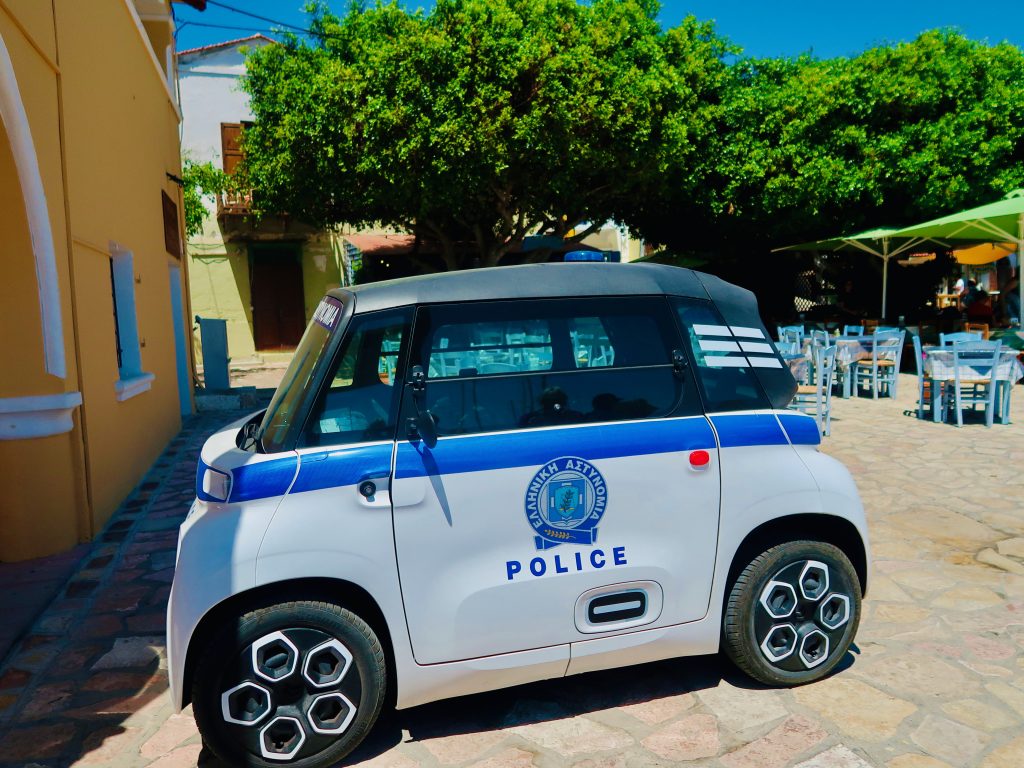
I think I’ve managed to buy at least one thing on each island to date. The Greeks have been through a bad time these last years and I hope the tourists will put some money into their pockets this summer.
Time to move on again. The next stop is Rhodes. There will be a lot to see and I sort out the cushions on deck to read up about it with my DK Eyewitness book on the Greek islands, which is well written (with illustrations).
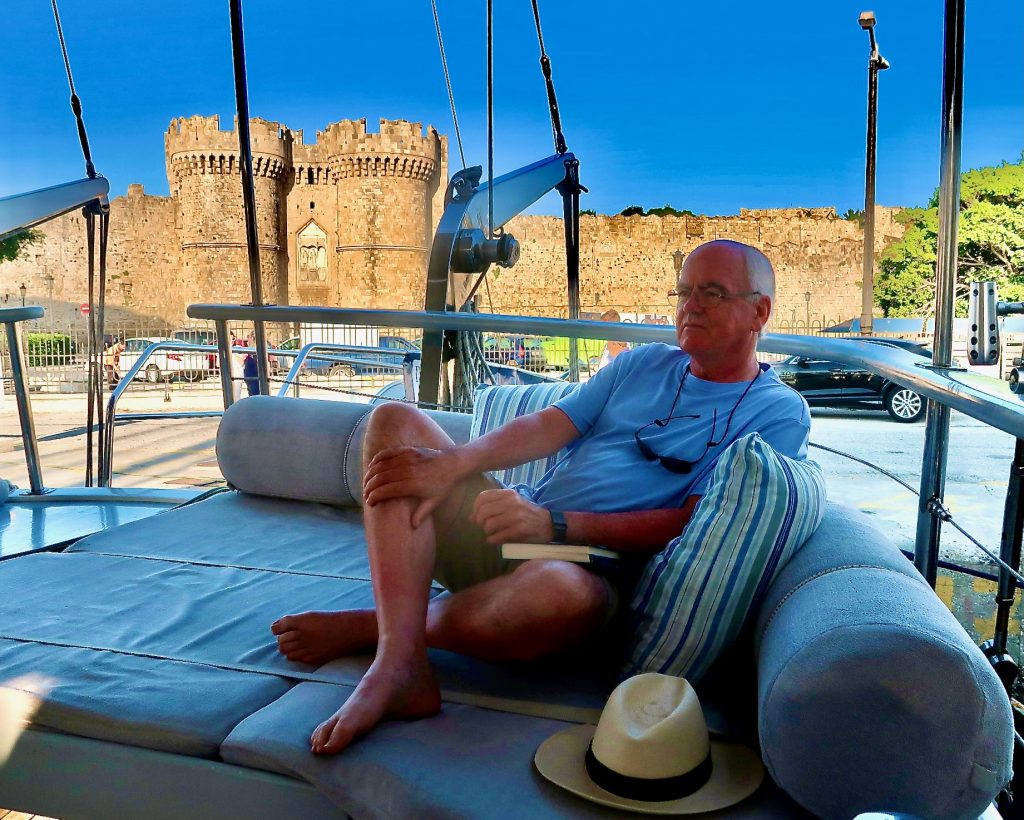
There is the old town and the new town. I am rather shocked to see a ribbon of concrete hotels and beach sunshades as we approach Rhodes via the new town. But we don’t stop there. The boat comes into harbour and moors next to the old, medieval city, surrounded by castle walls. There’s a bird’s eye/drone view of the old town in my book, which proves useful.

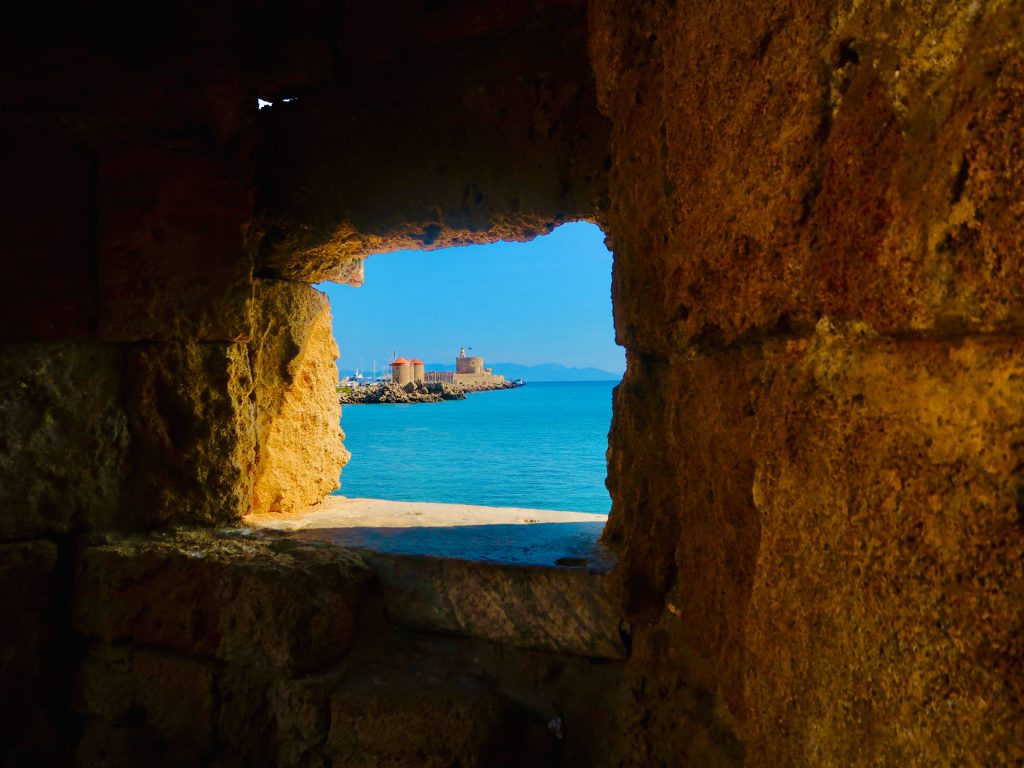
Michael and Nota suggest we go out to look around the fortified medieval city on our own for a while after giving us some of the history.
The city is enclosed by walls and what was a moat, where you can walk. In 1988 it became a UNESCO World Heritage site. The city was founded in 408 BC and has gone through many changes of ownership from Classical, Roman, Byzantine, and from 1310 taken over by the Knights of St. John (Knights Hospitallers) followed by the Ottoman Empire, then the Italians right up to WWII.
The Knights Hospitallers built over thirty fortified castles throughout the Dodecanese islands and owned the island of Rhodes for over two centuries.
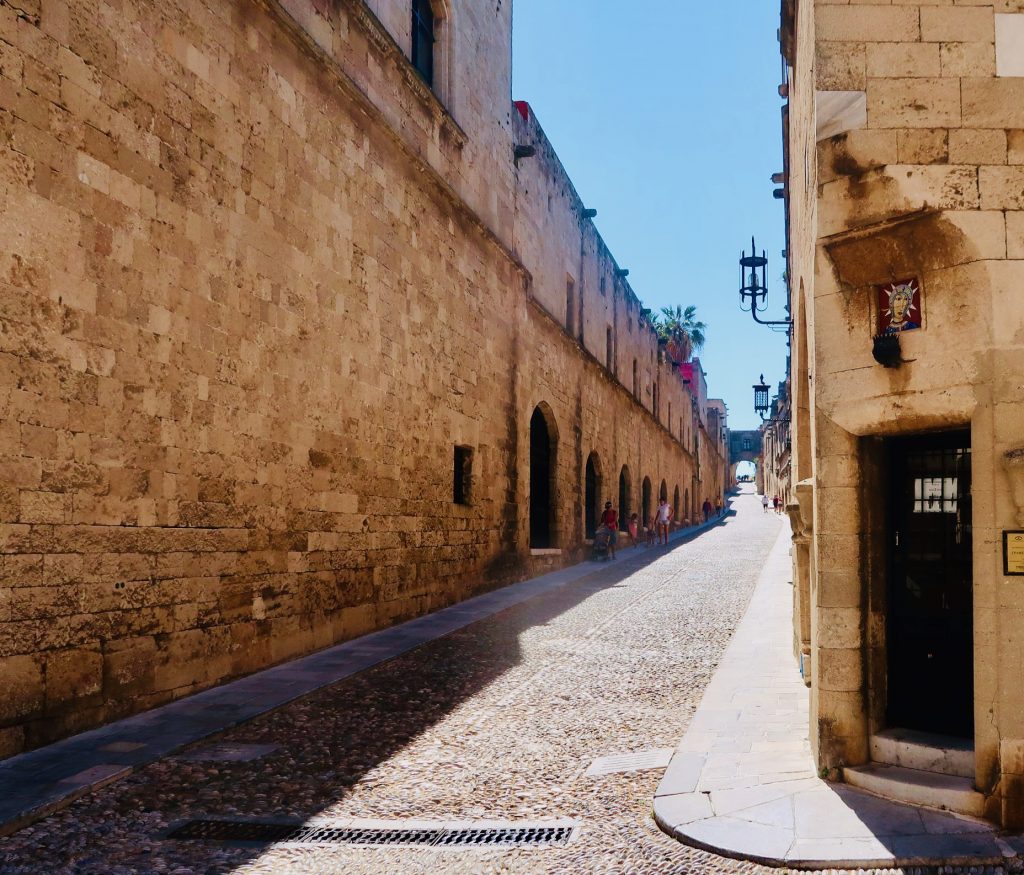
Maybe I should mention the Colossus of Rhodes as it still intrigues even though it isn’t there! It was a thirty three metre high bronze statue of the Greek sun god Helios, erected in 280 BC to celebrate the island defending itself successfully against the enemy. There were many enemies!
In 226 BC an earthquake destroyed the statue. It was never rebuilt. The remains lay on the ground for eight hundred years and were finally sold to the Arabs. The bronze would probably have been melted down and maybe made into coins or tools.

It’s fascinating to immerse yourself in this enclosed walled city, which includes a mosque, a library and a Grand Palace. Walking around at your leisure makes you motivated to learn about all the different peoples that have made it their own through its complex history.
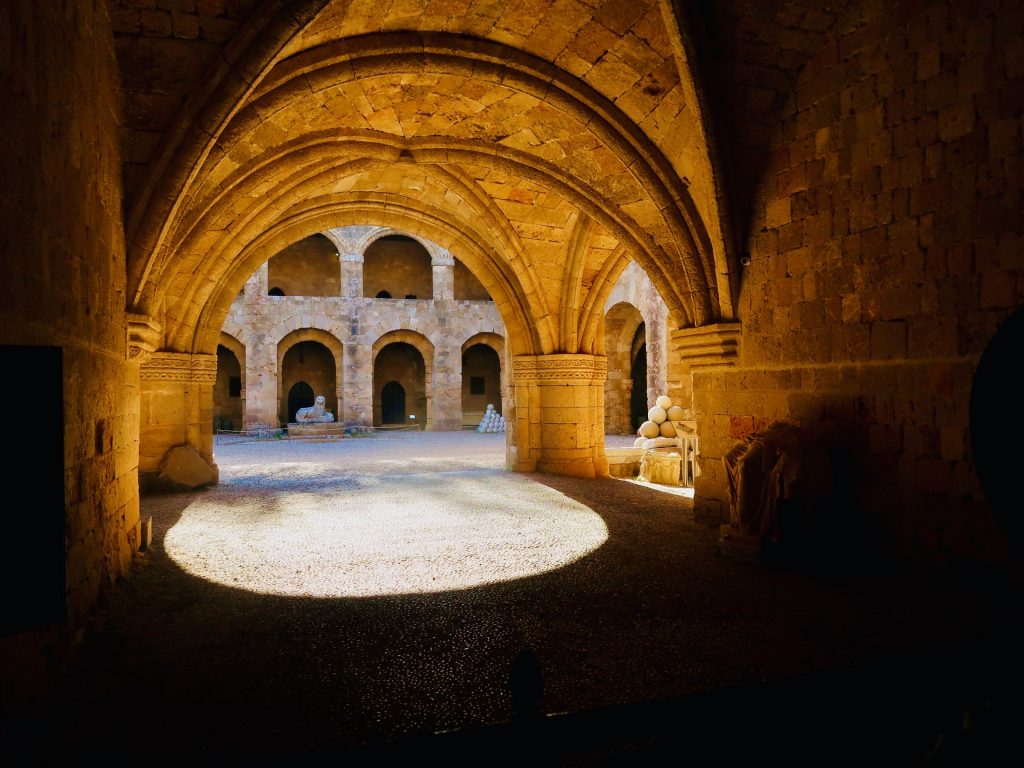
Besides the grander buildings there’s a plethora of market stalls, places to eat and drink, narrow alley ways and houses where people live.
Ancient buildings vibrate to the sound of buzzing velos and motor bikes. It is somewhat like a beehive, except that it’s full of exquisite architecture. These walls can’t talk but they are steeped in blood, sweat and tears – a cliché but a very apt one here!
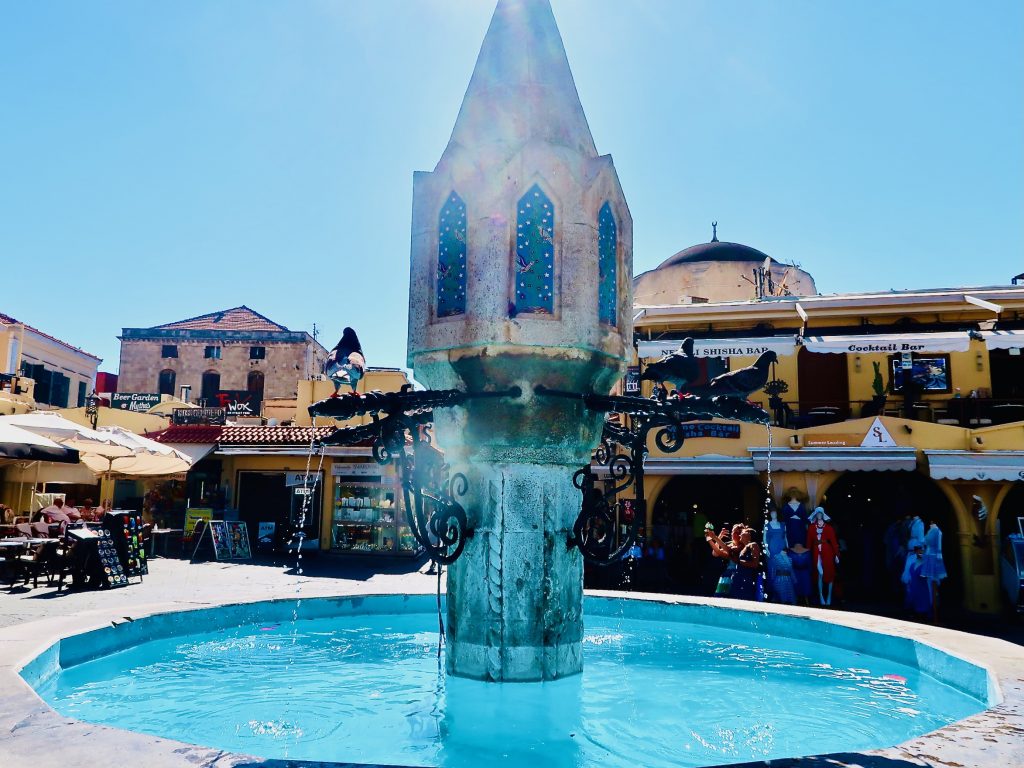

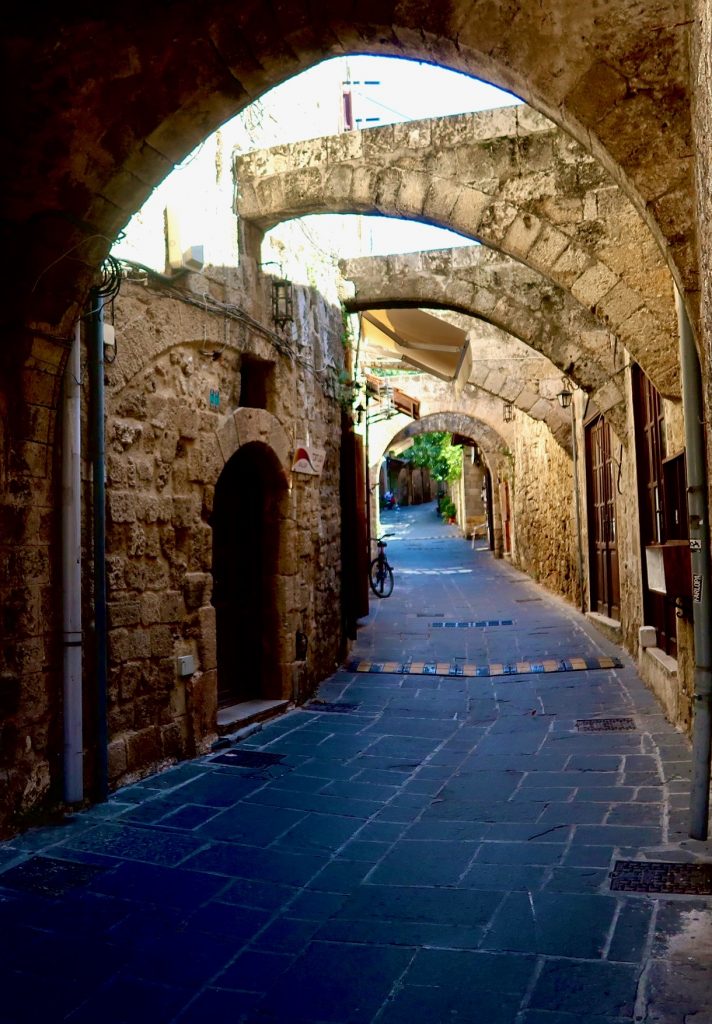
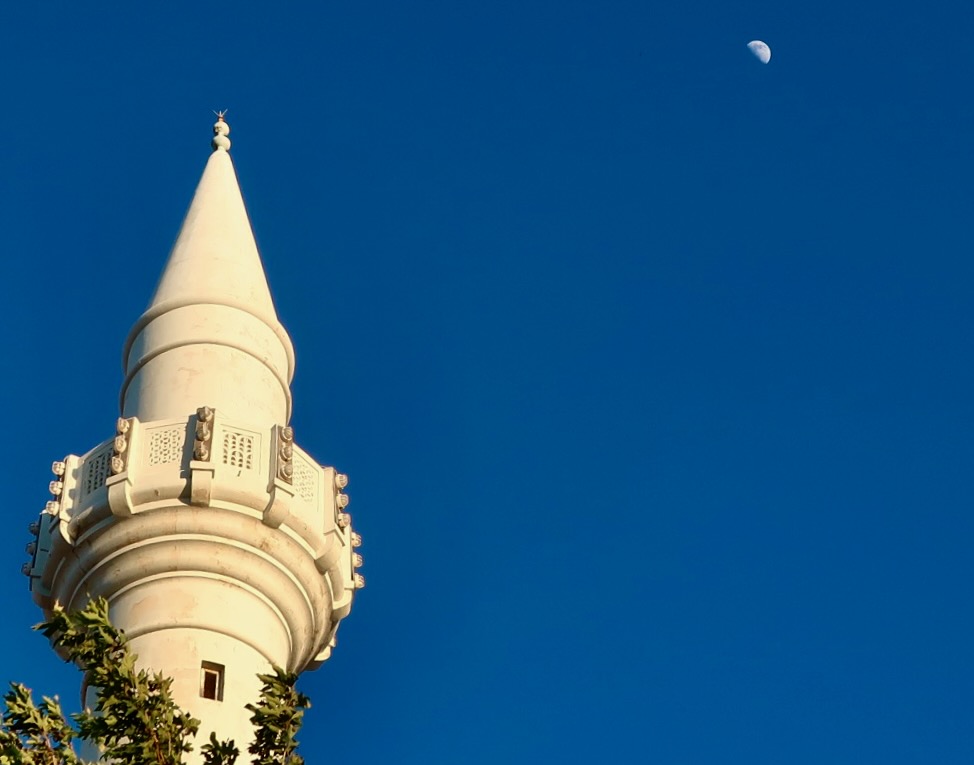
I’d now completely lost any sense of where we were and a long drink was top of my list of things to do next. We finally muddled through to the main gate. Nearby was an entrance to a secret garden with a huge tree spreading shade – a mysterious white statue glimmered through the leaves.
‘Let’s go in here’, I said. It turned out to be the most enchanting garden café called the ‘Auvergne’. The best place! It’s such a great feeling when you come upon somewhere special by chance! My strong tendency to be a flâneur was sated as we sat down to fresh orange juice and sweetmeats. Heaven – or its equivalent …

We had a great time exploring the Old Town by ourselves but next morning Michael and Nota gathered us up early and off we went, audio sets at the ready. This is the type of travel which suits me best. Interactive learning with Michael and Nota about the history of places we visit, time to explore on our own, taking photos, looking forward to convivial meals, being looked after so I don’t need to organise every day and, of course, a bit of shopping thrown into the mix, like icing on the cake.
I love these islands and this is a great way to visit them by boat. Lovely crew too!
I’m just putting in a few photos of what I enjoyed looking at and to give a window into what Rhodes has to offer in the Old Town. I’d love to go back.


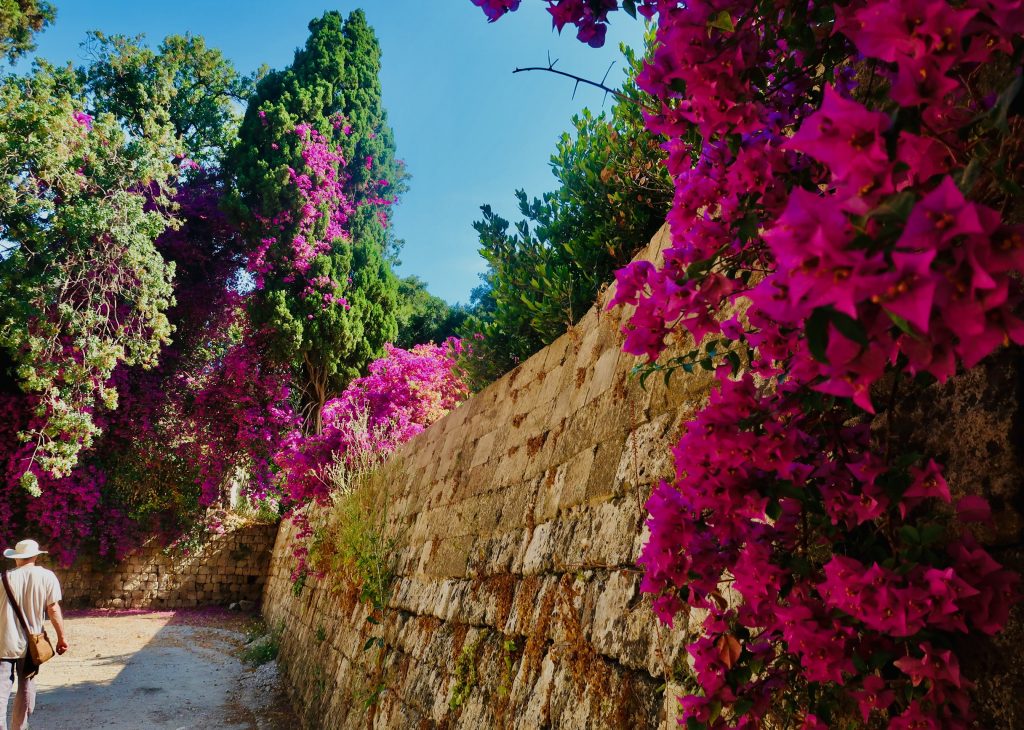
INSIDE THE GRAND PALACE AND THE ARCHAEOLOGICAL MUSEUM
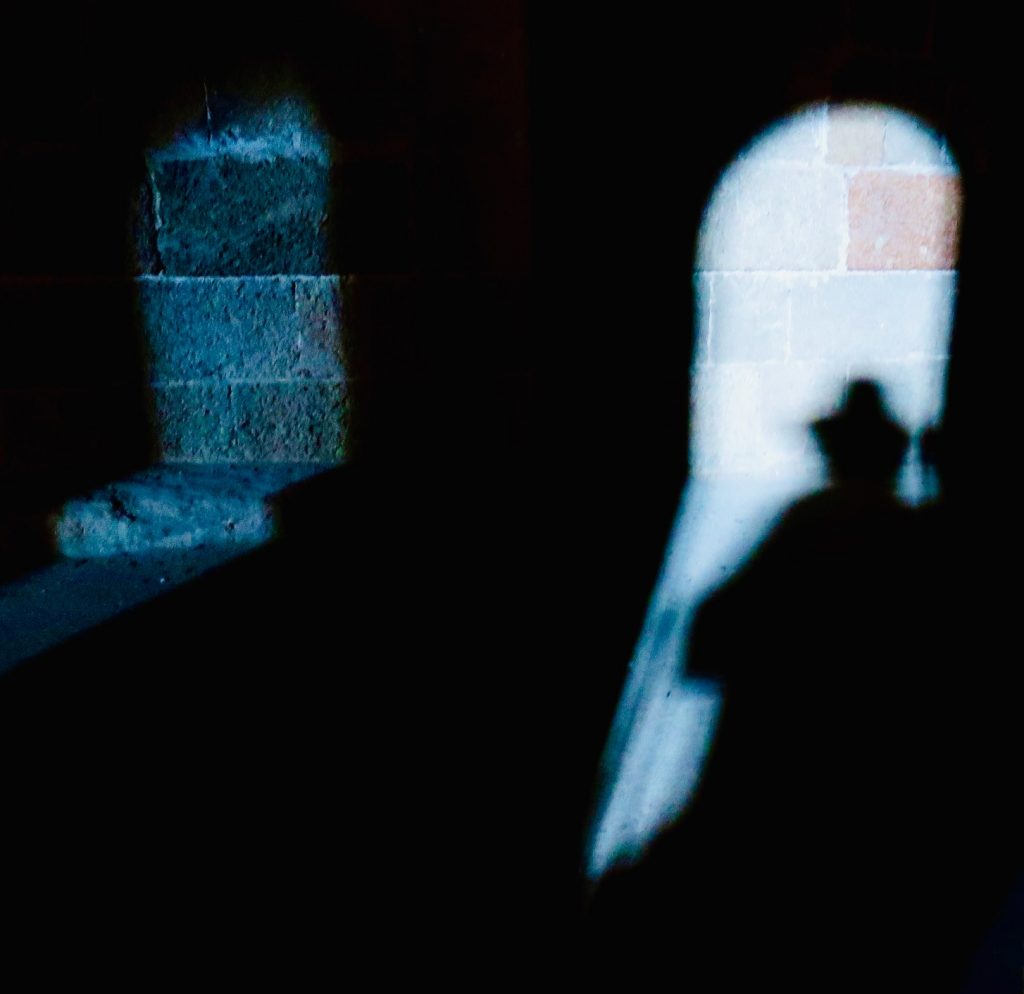

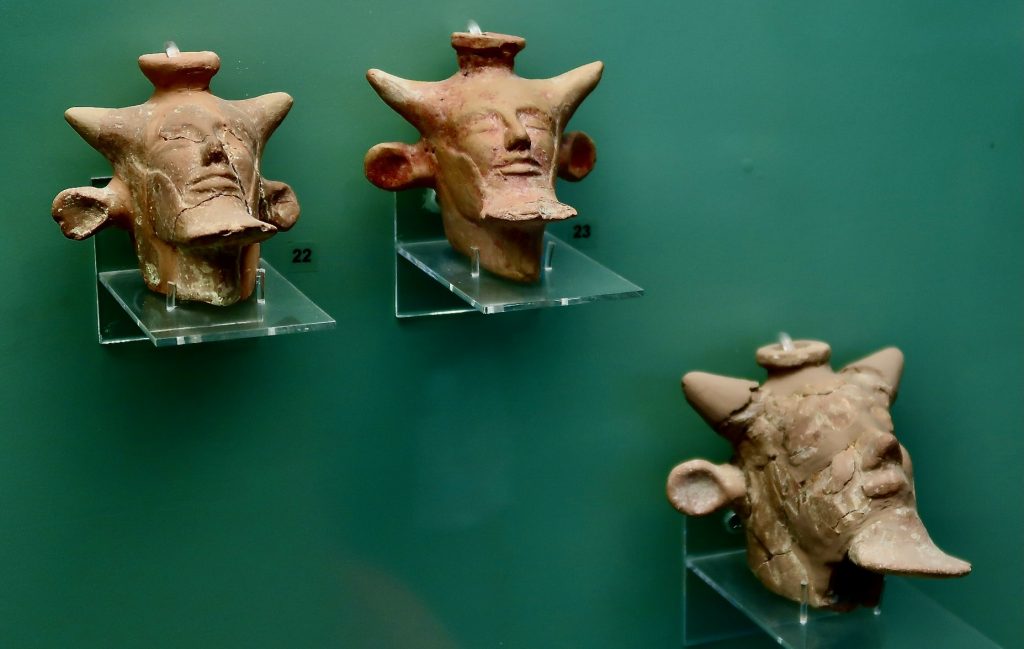
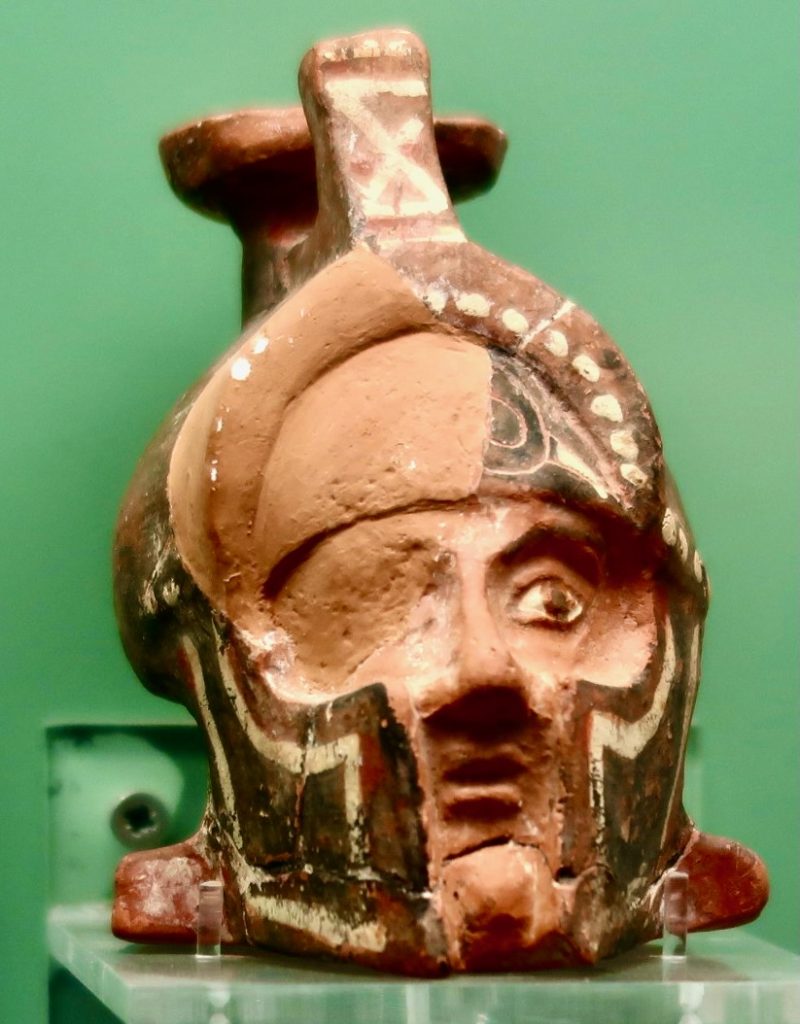
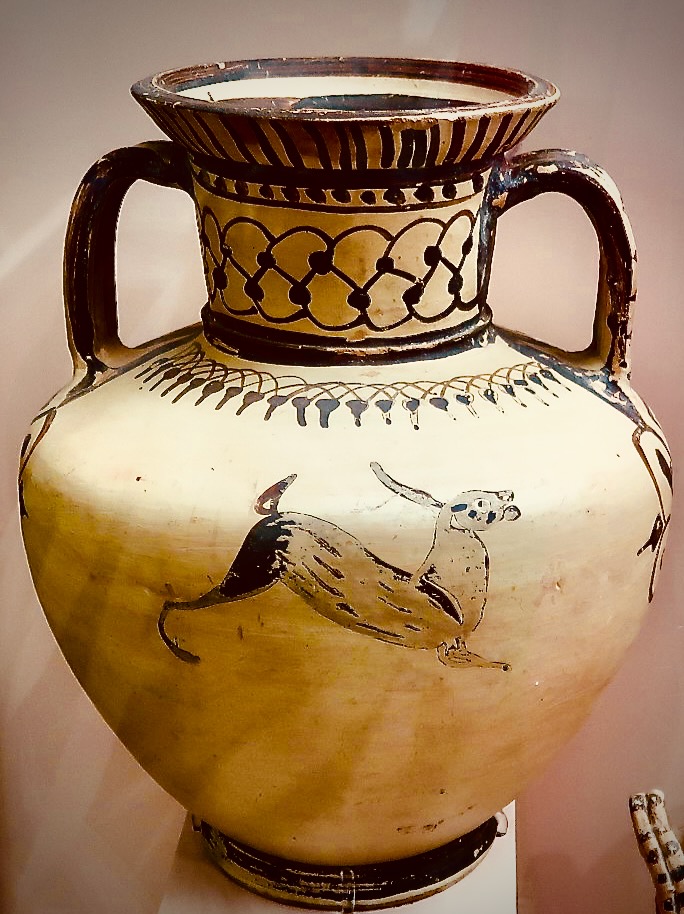

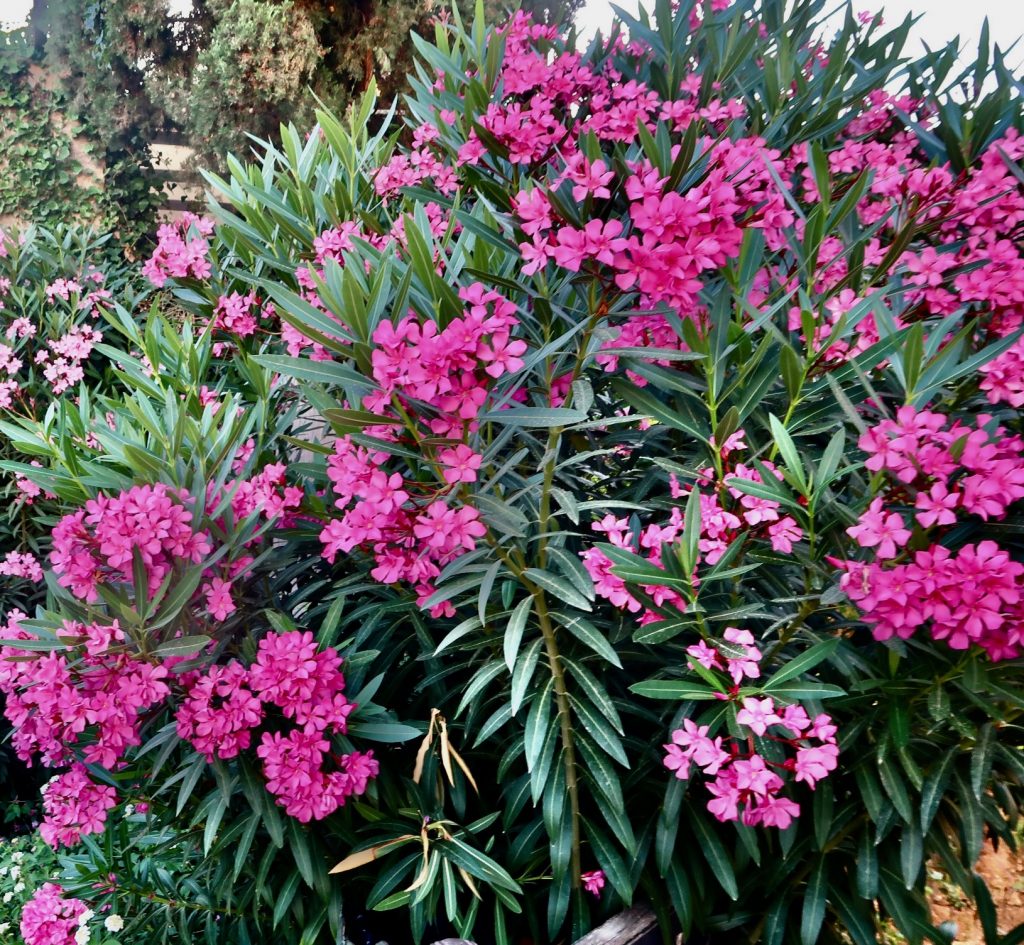
These are a few of the things that caught my eye but you could spend so long here. My history of it all needs much improving but I hope I’m giving you a flavour of what is on offer that may whet your appetite for more …
We then came upon the mosaics, which are truly wonderful. This was a day to remember.
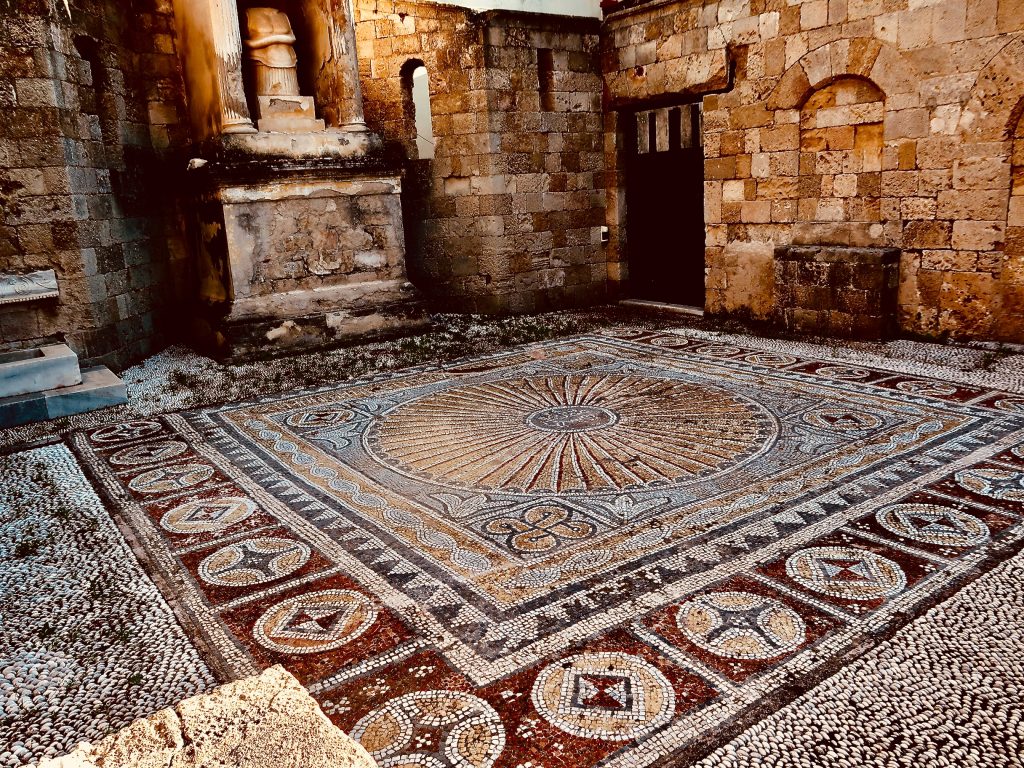
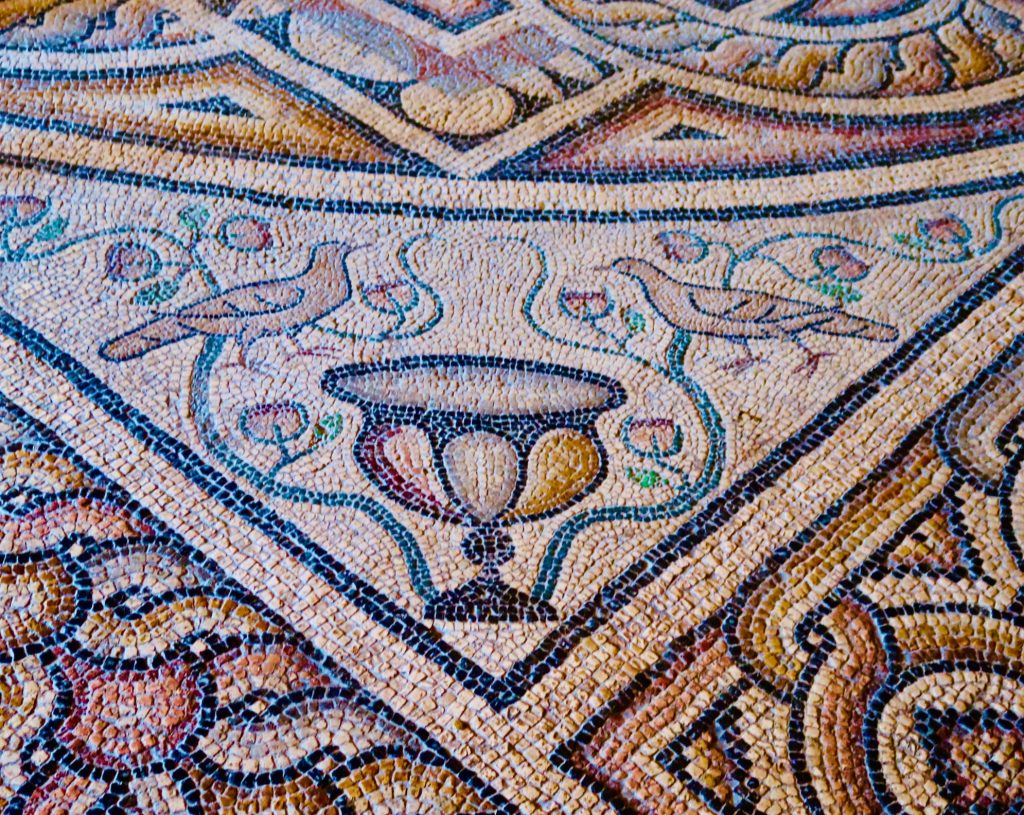
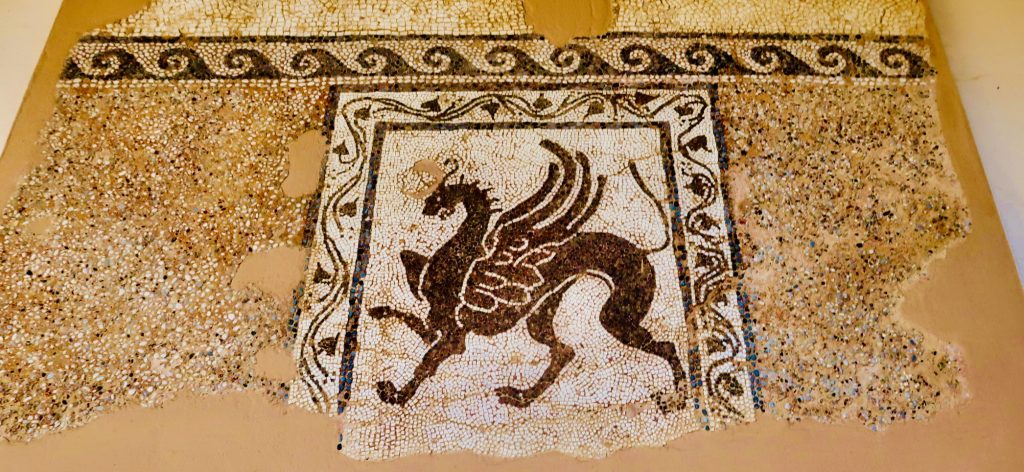
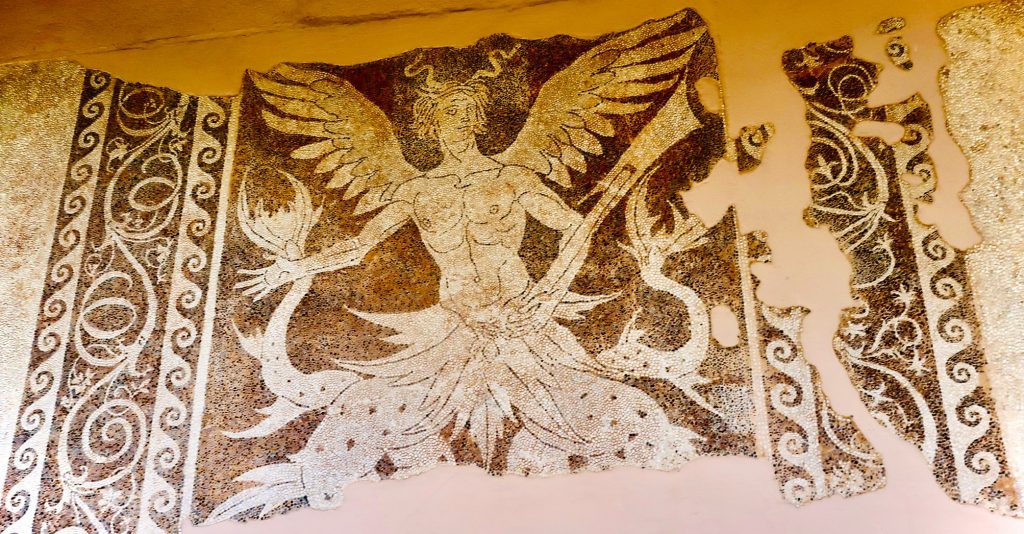
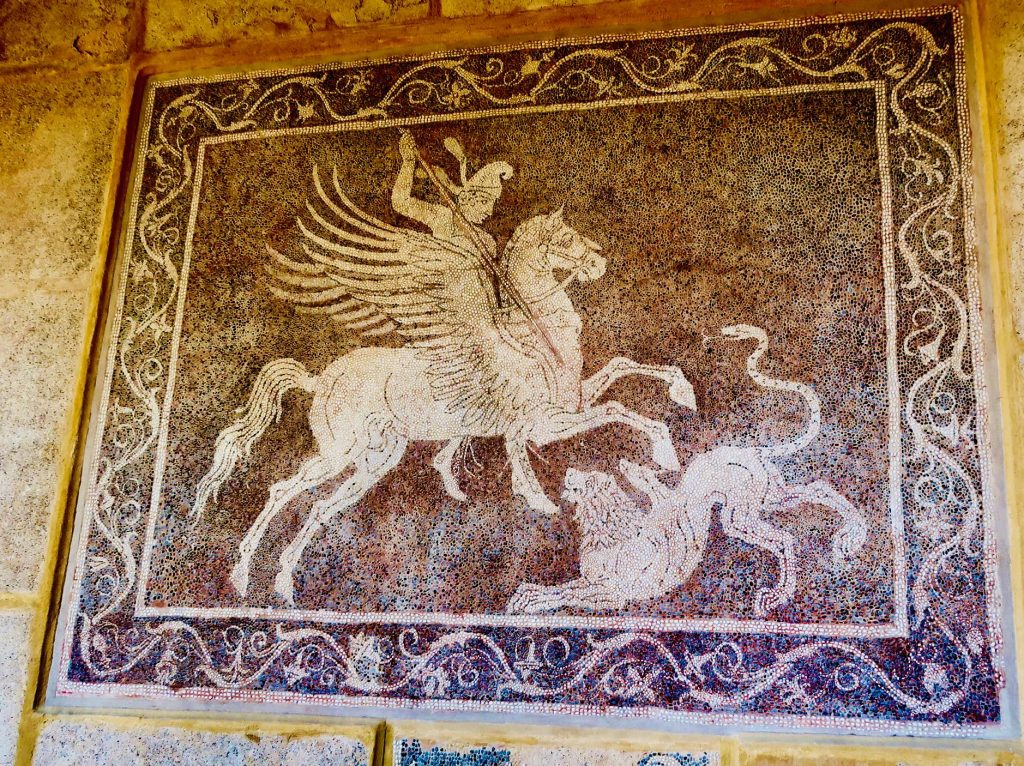
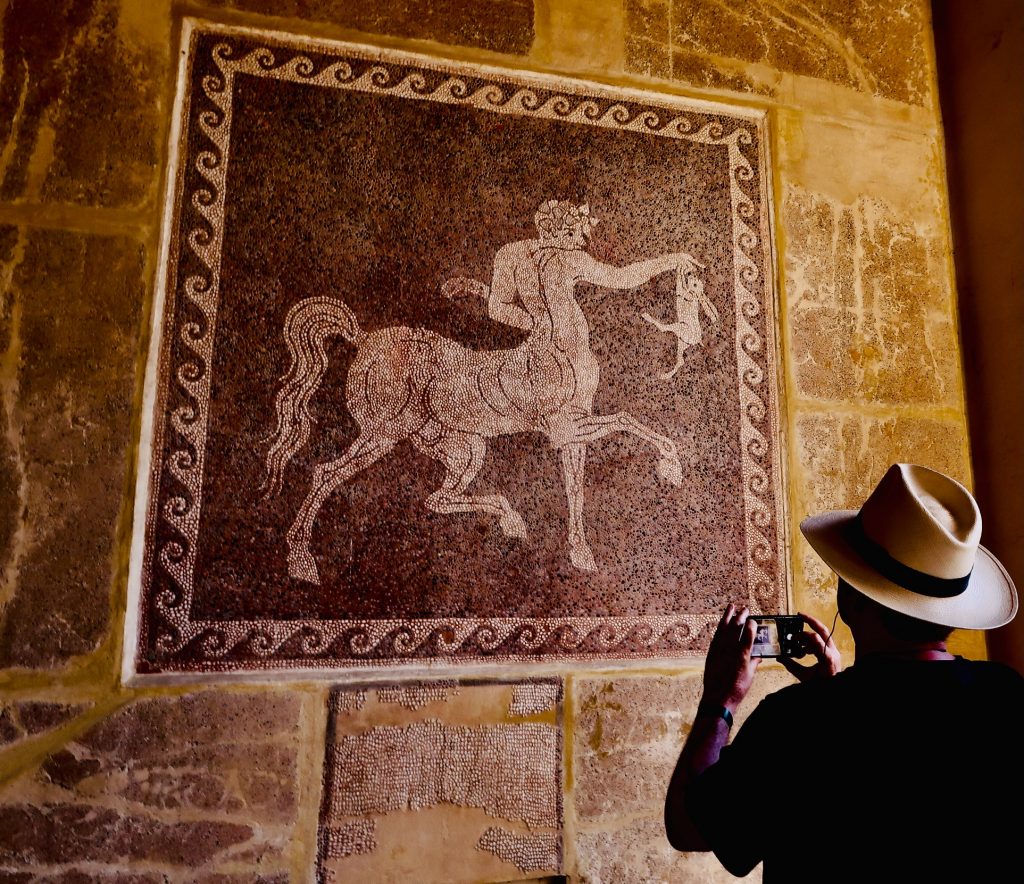
All the same, poor bunny!
I’ve gone a bit mad showing the mosaics but I find them fabulous – just one more, a favourite …
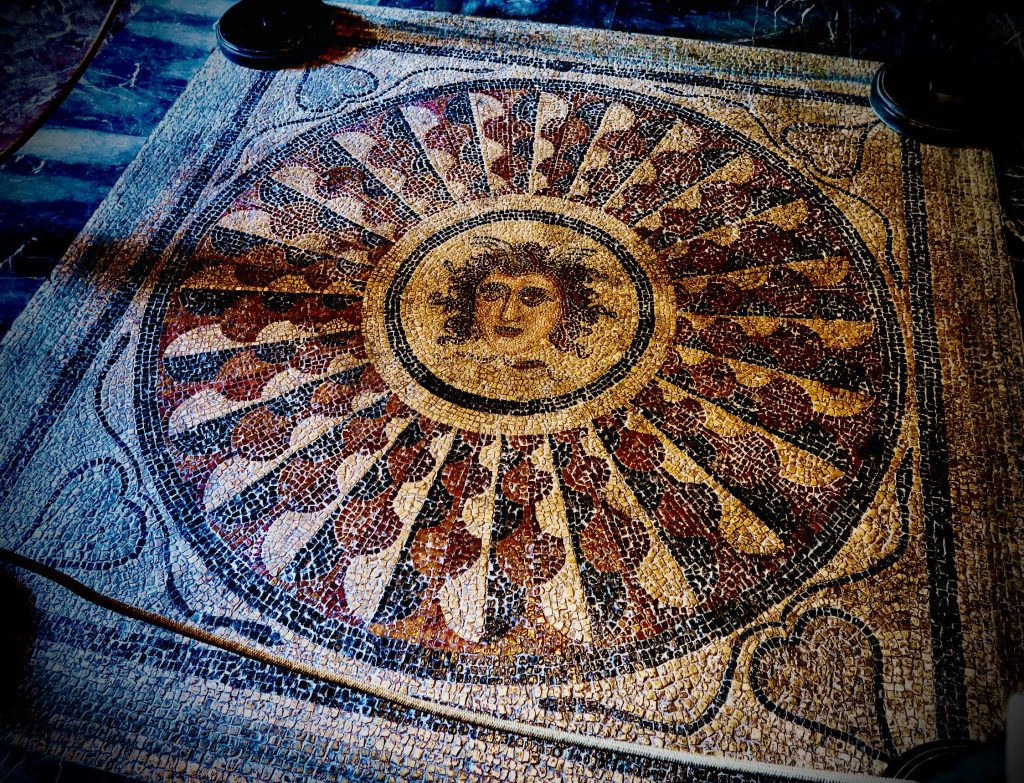
I’ve always been both fascinated and repelled by Medusa with her wriggling snakes for hair ever since I read the Greek myths as a child. There was a picture of Perseus escaping her clutches in my book. If you looked at her face to face you would be changed to stone. Perseus had a very well polished shield and was able to chop off her head by looking at her reflection. I found this both clever and terrifying.
The book I was given as a child on the Greek myths was called ‘Once Upon A Time’, published by Ward Lock with memorable illustrations, many in colour. It was a well loved bedtime read and unknowingly shaped my future love of Greece.

Rather violent – but it was him or her – I expect the snakes died too … she has rattlesnake eyes …
When we were in the Peloponnese just before lockdown, we stopped at a petrol station, where there was a gift shop. I came upon a roughly made ceramic head of Medusa. I so wanted to buy it but how would I have got it home in one piece … also, it did fill me with horror – children’s memories live on … where did that story originate?
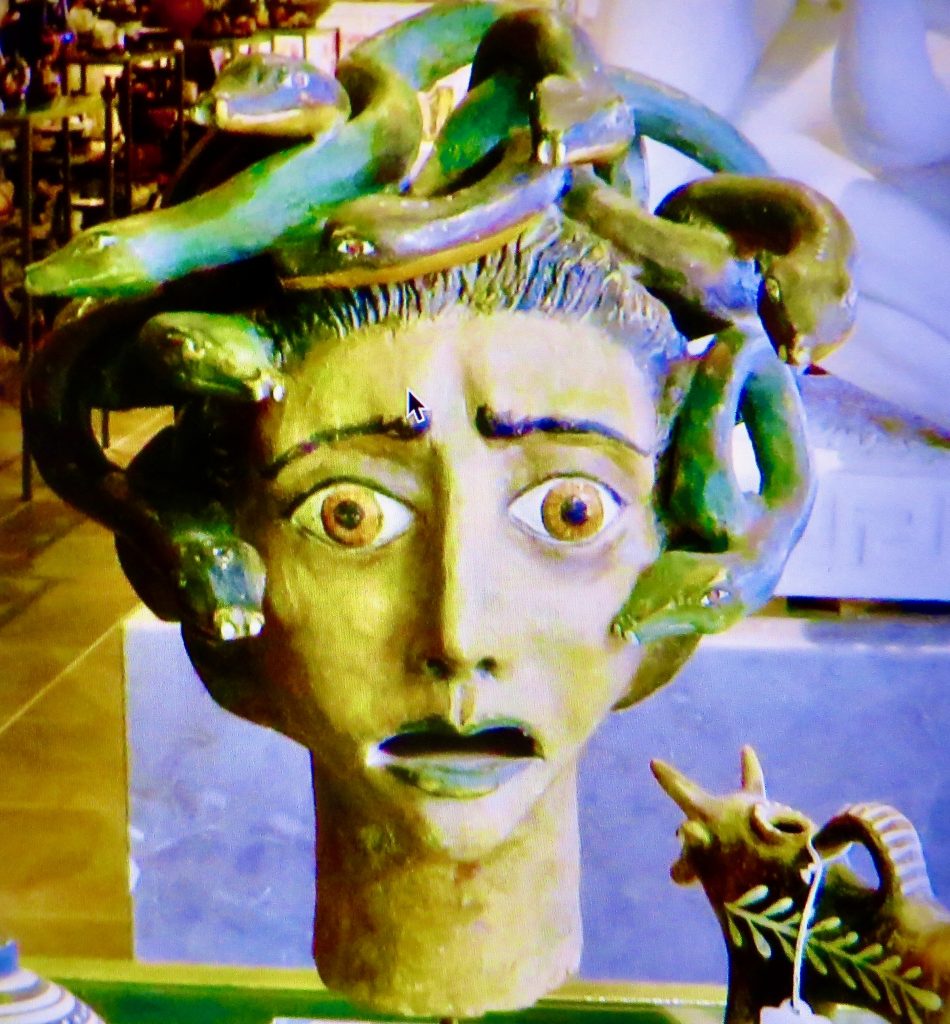
And that reminds me of other Greek myths – Narcissus and the water nymph, Echo, Icarus flying too near the sun on his wings made of wax, Jason, Medea and the Golden Fleece, Andromeda and the Sea Monster, Atalanta and the Golden Apples, Pan Pipes, Midas, Hero and Leander … they were all there. And of course, all the gods!
I must pass this book on to our grandson …
On that note, we say farewell to Rhodes. The captain is taking us to a secret cove for swimming.
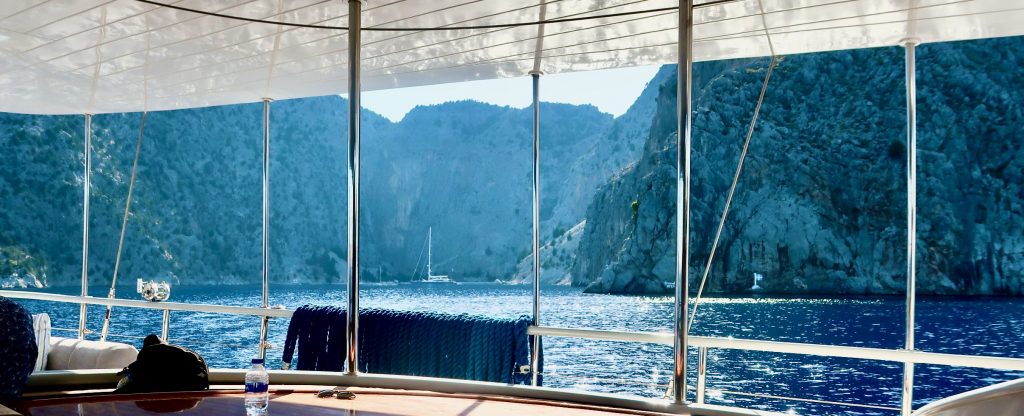
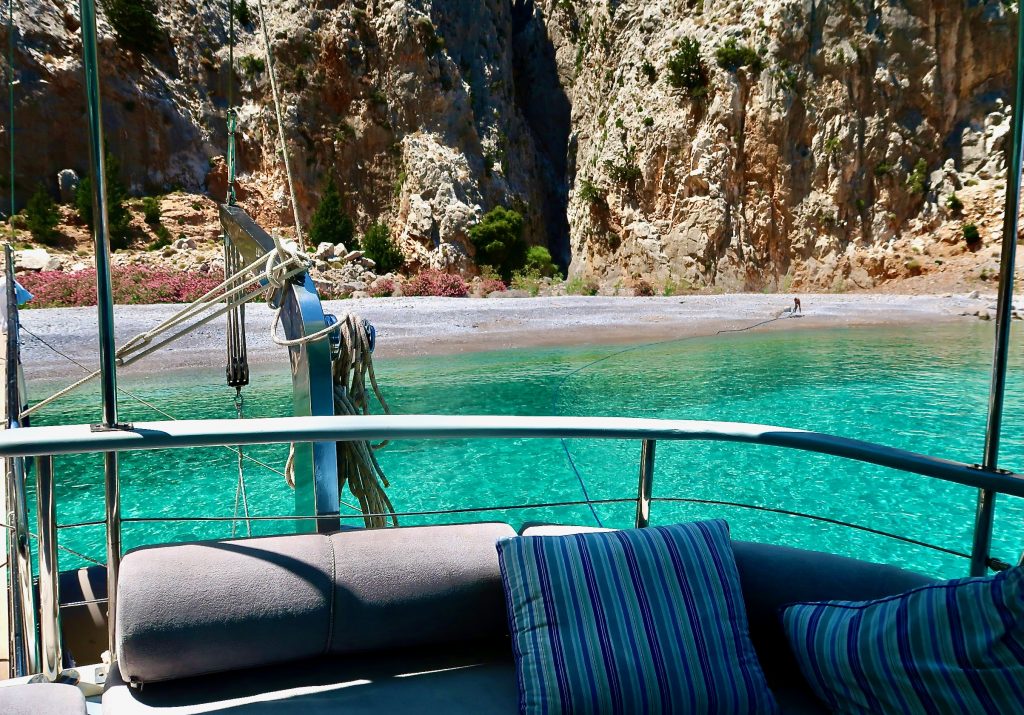
It’s actually a member of our crew, attaching the boat to a large boulder for safety – you can see the rope in the water.
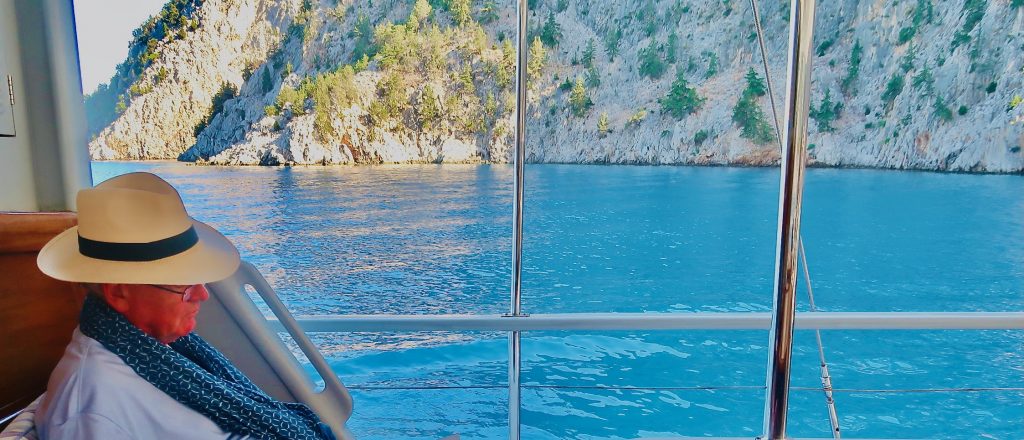
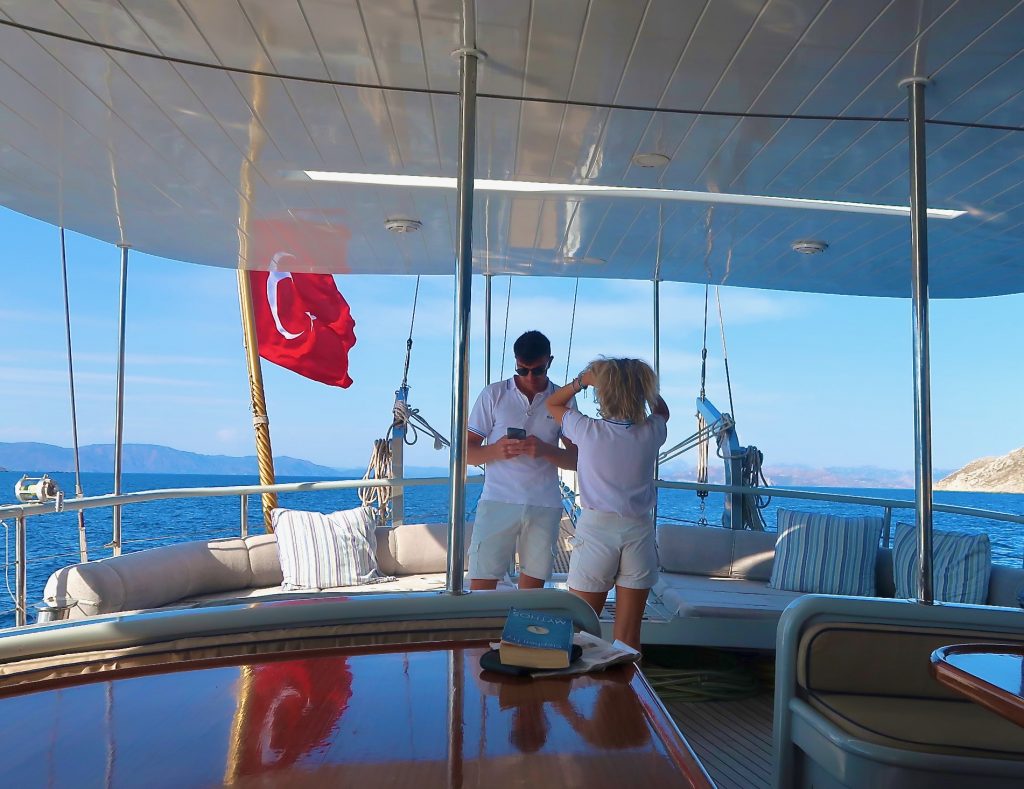
After a peaceful night we are feeling in good shape – Nota has more pistachios in mastic in a jar at breakfast and I must ask her where I can find some. I don’t want to appear greedy but they just hit the spot!

We are making for the island of Symi – not too far away. I am making the best of these glorious moments as we plough on through the swell of indigo seas. To be here is to be without a care in the world – of course it can’t last … but it is lasting right now …
Sailing into Symi harbour is like sailing into a picture postcard. It is so unbelievably pretty. This island was once very rich because of sponge diving and shipbuilding and there are many beautiful neoclassical villas cascading down the steep hillsides. I can’t helping thinking about which one I would choose to live in. Oh, forget it, any one would do!
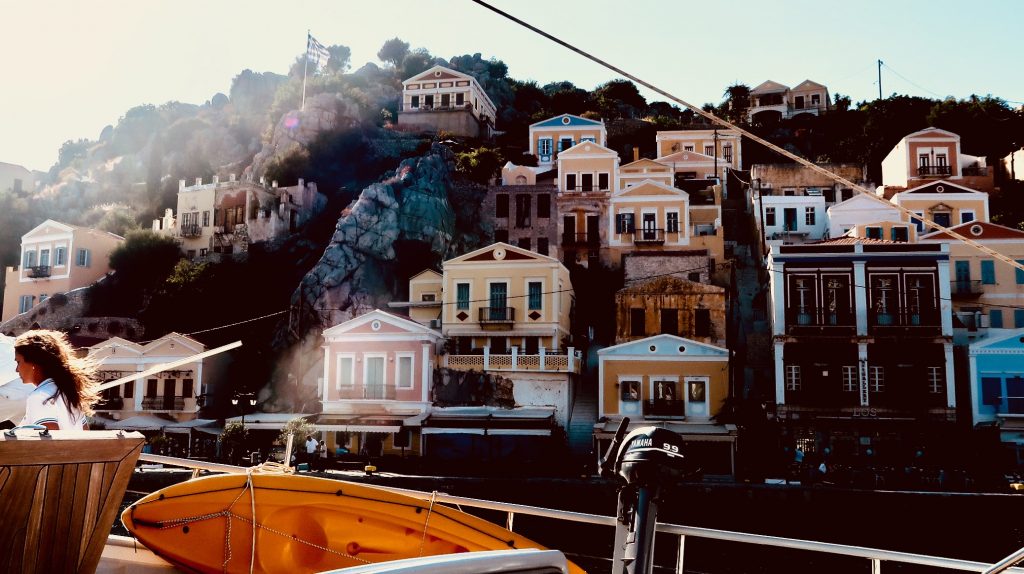
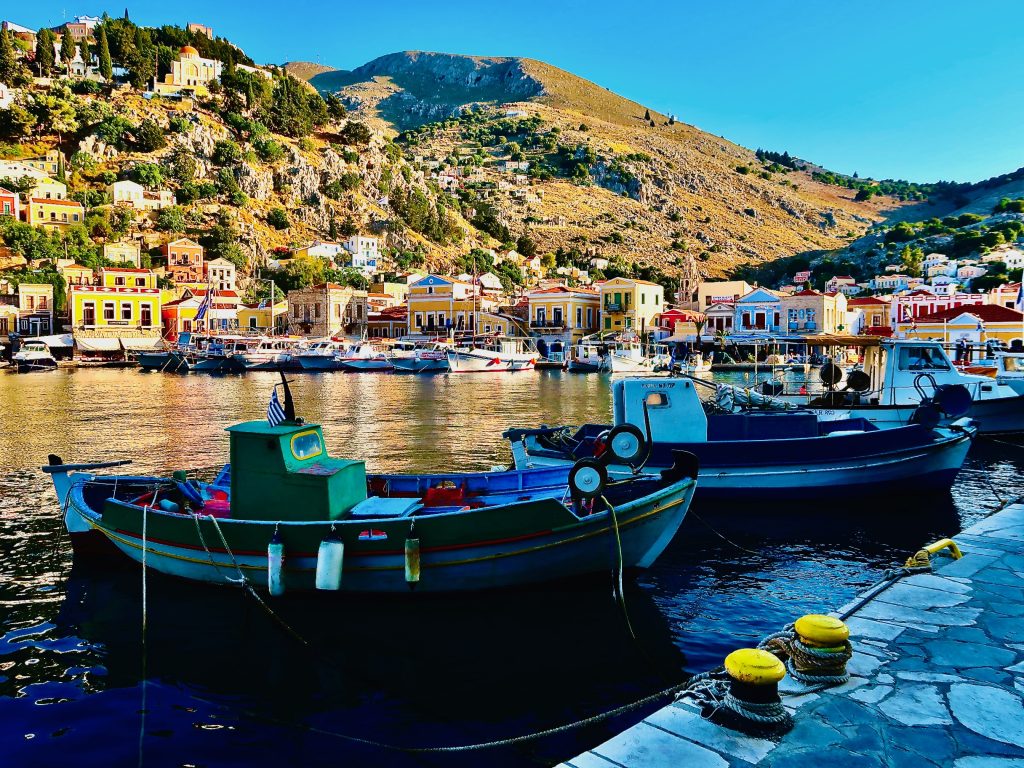
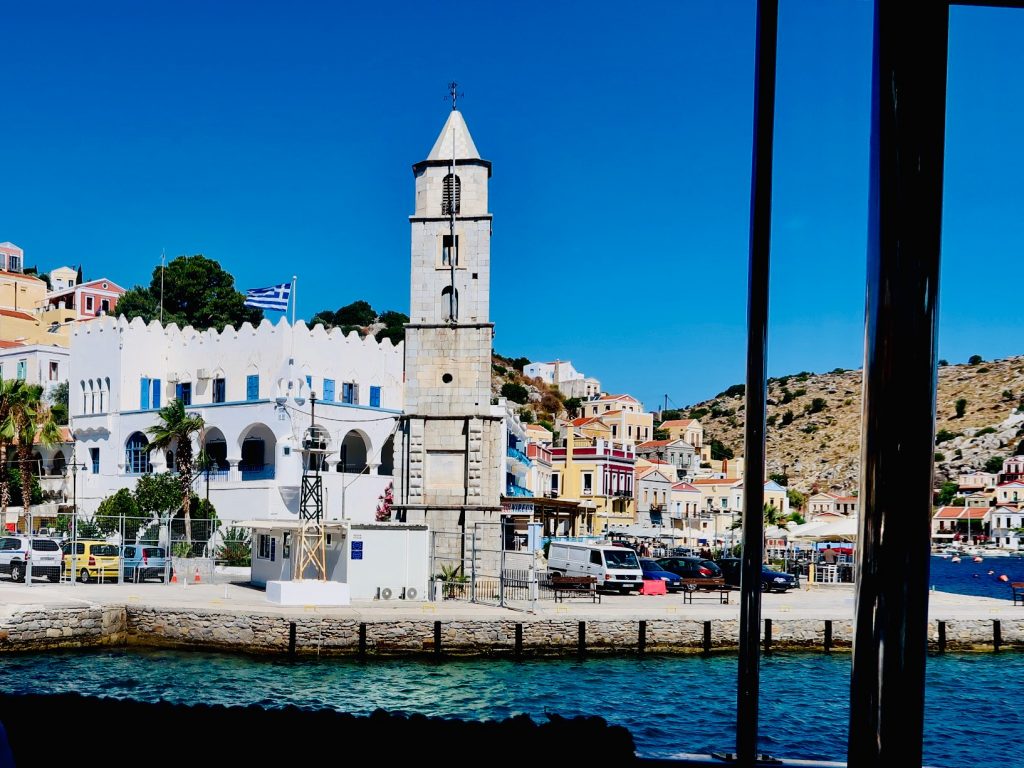
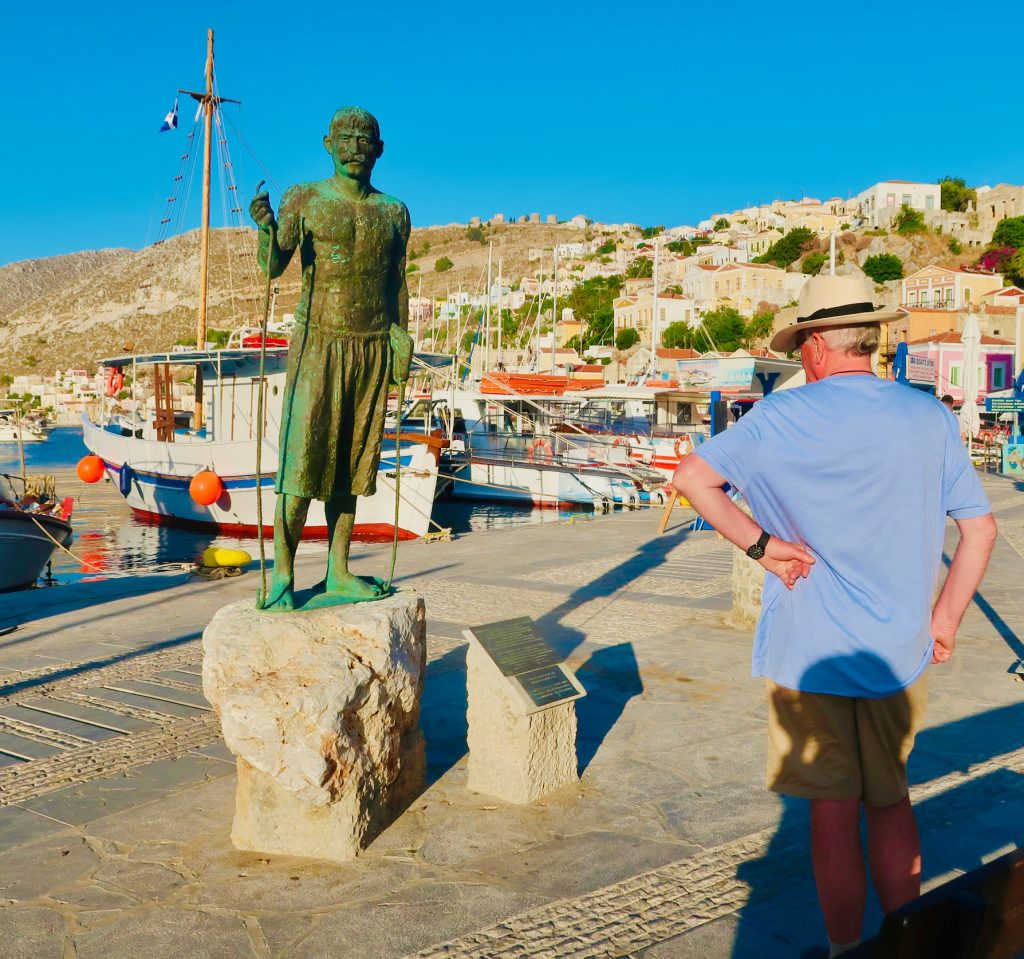
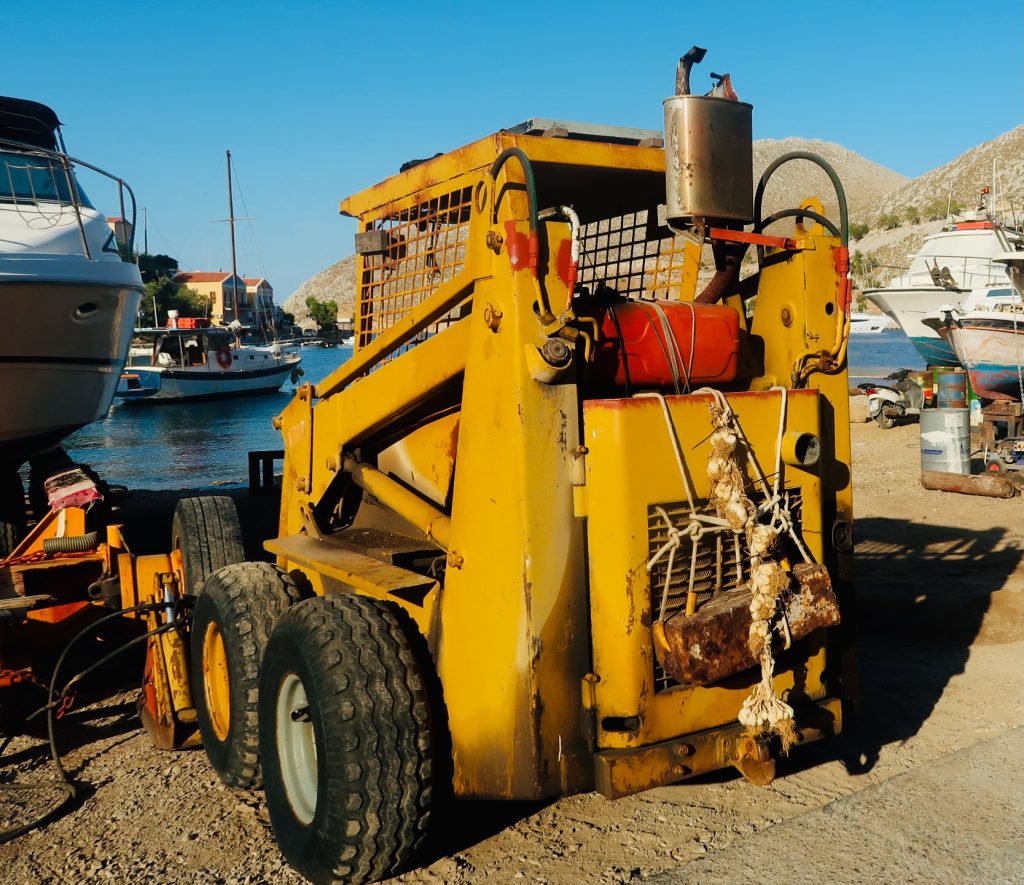


We explored winding alleys, up and down, until we all met up for dinner in a taverna by the harbour.
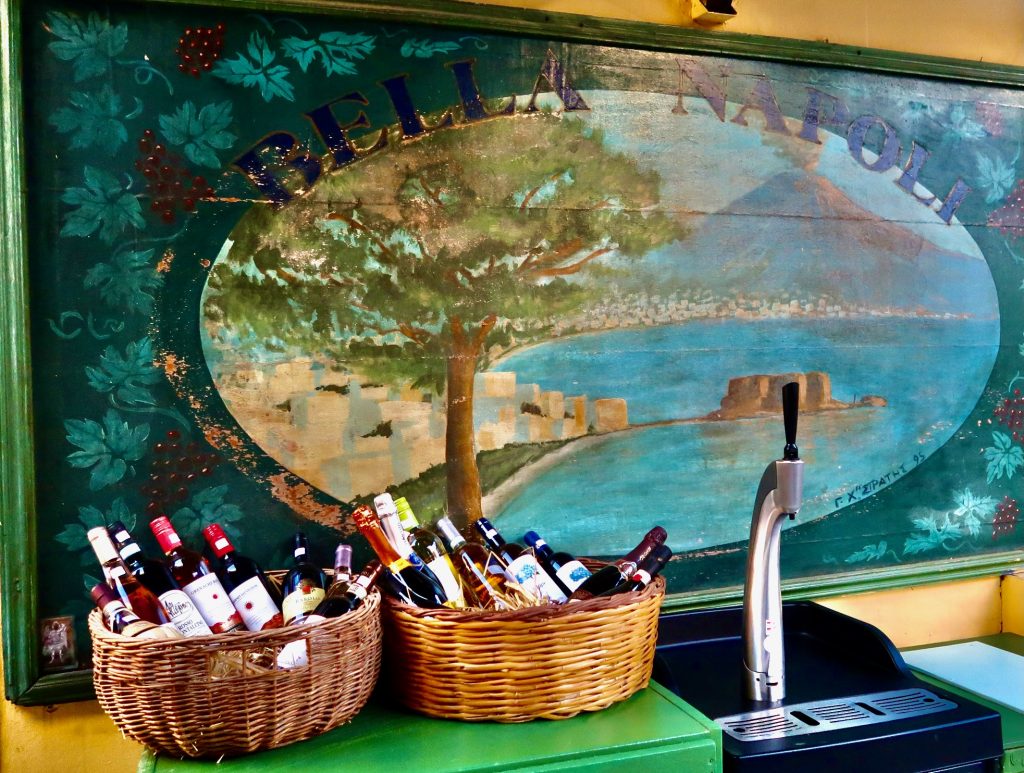
Later, having drunk a wee bit too much I’m careful not to go too near the water’s edge. Arrived back safely at the boat, just time to look up into the hills of Symi at night before bed.

Another sunny day and after breakfast Michael and Nota take us on a trip up the hill to see how people live here – beautiful mansions often cheek by jowl with neglected ones, ready to be rehabilitated. I think there are quite a lot of expats living here permanently – somebody mentioned British and Italians. Luckily, Symi doesn’t seem to have attracted too much of the noisy nightlife – I hope it stays that way.
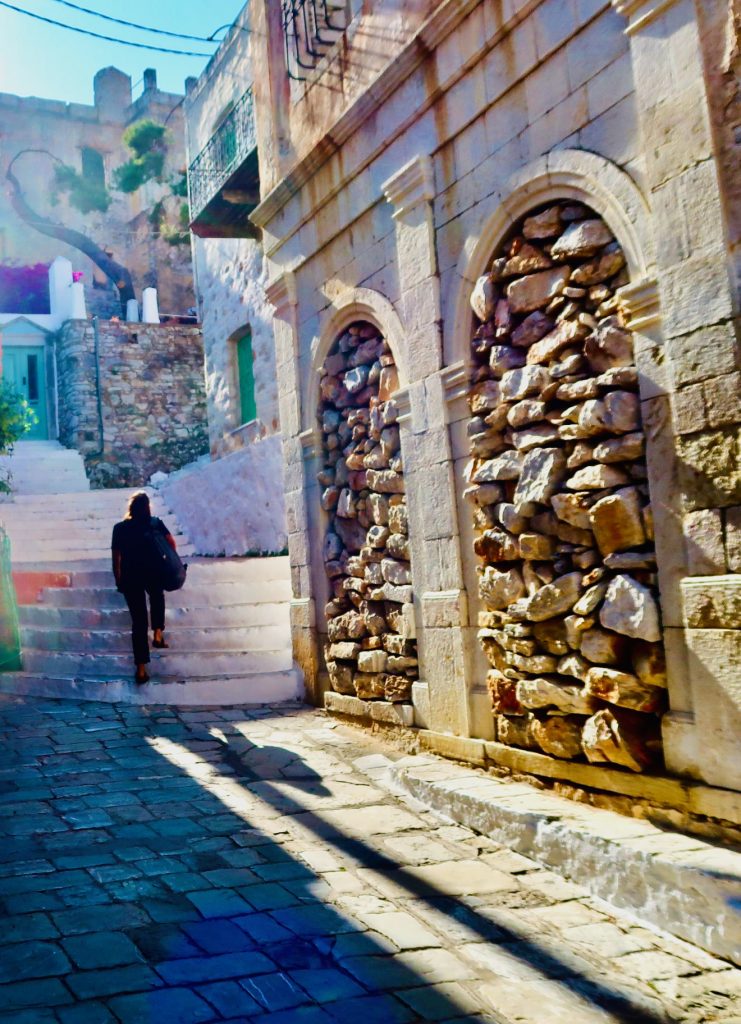
Nota leads us uphill, explaining the history of Symi as we follow.
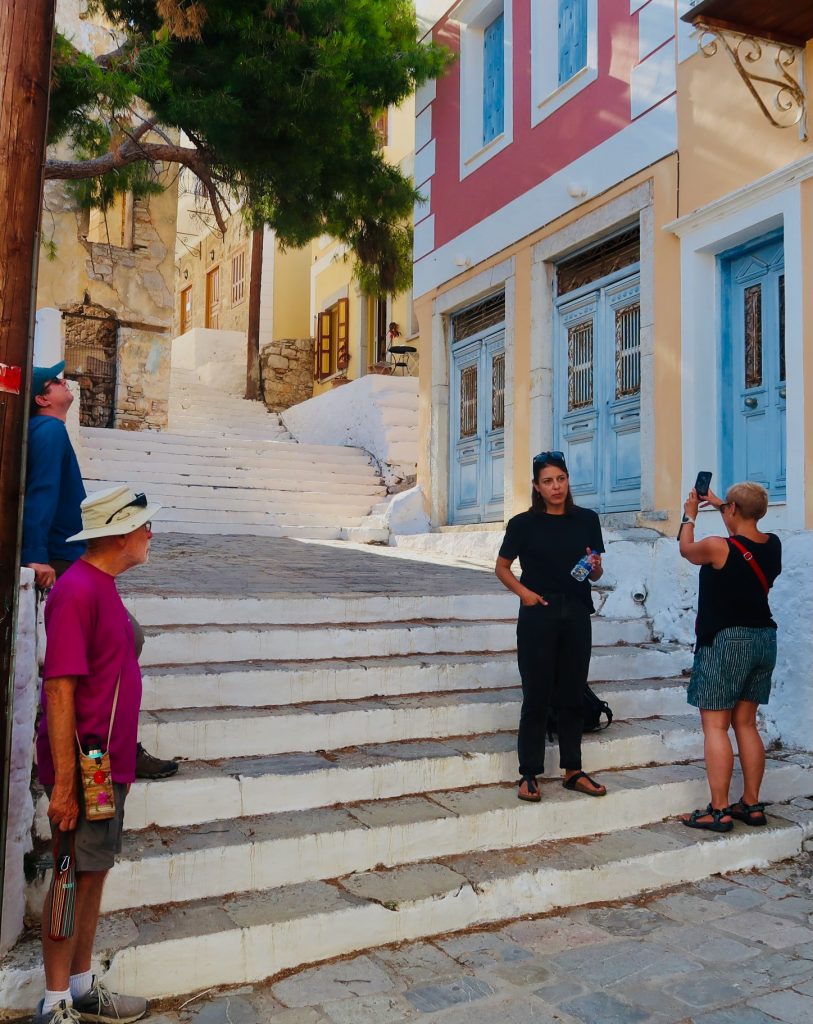
There are hundreds of steps, quite steep in parts. Deterrent for cars, Daleks, etc. And it preserves the old way of being, which is very attractive. I’m slightly out of breath as we climb higher and higher.

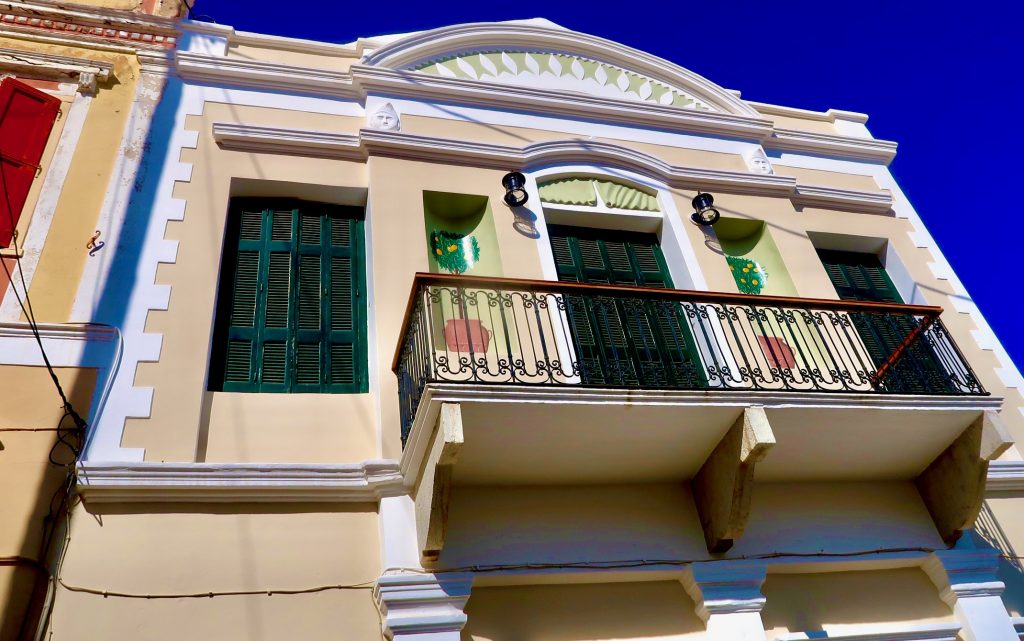
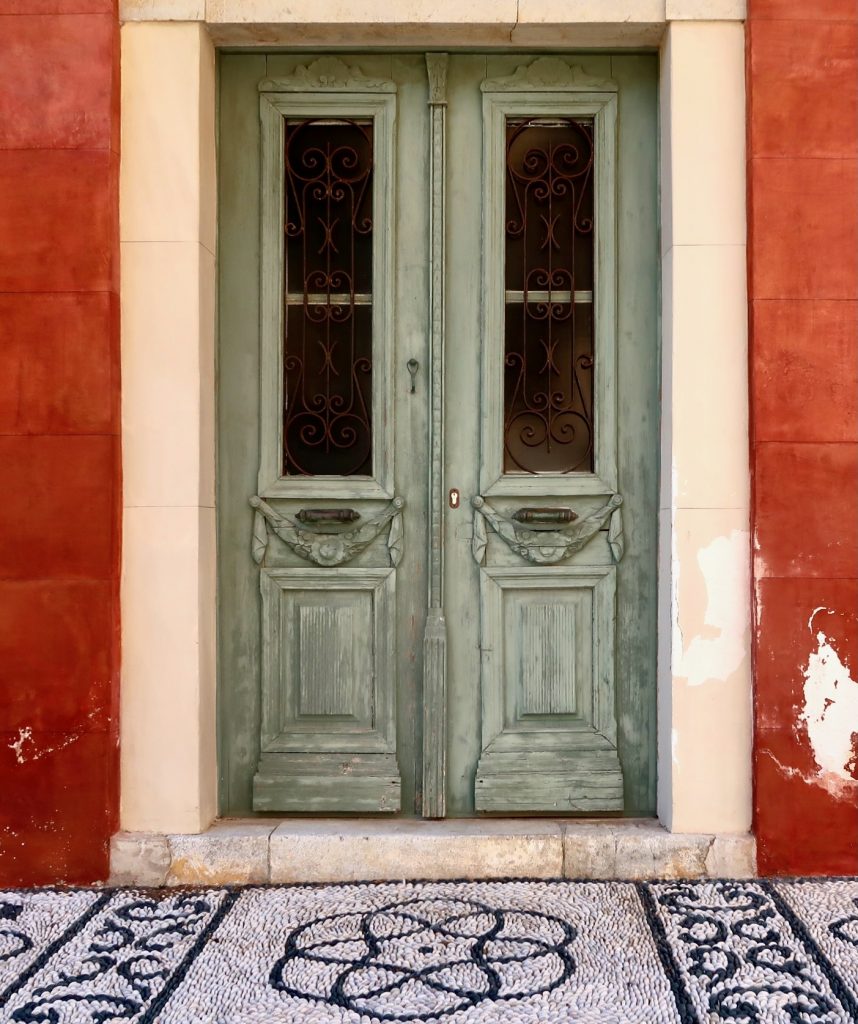

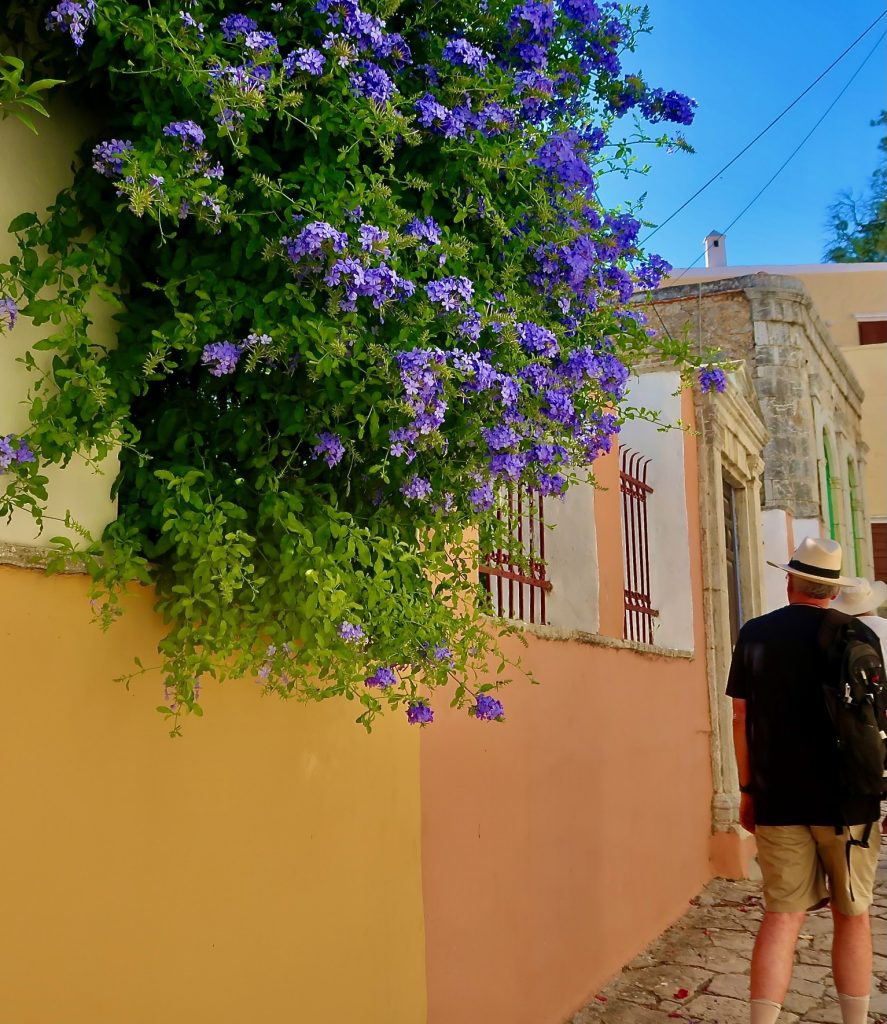
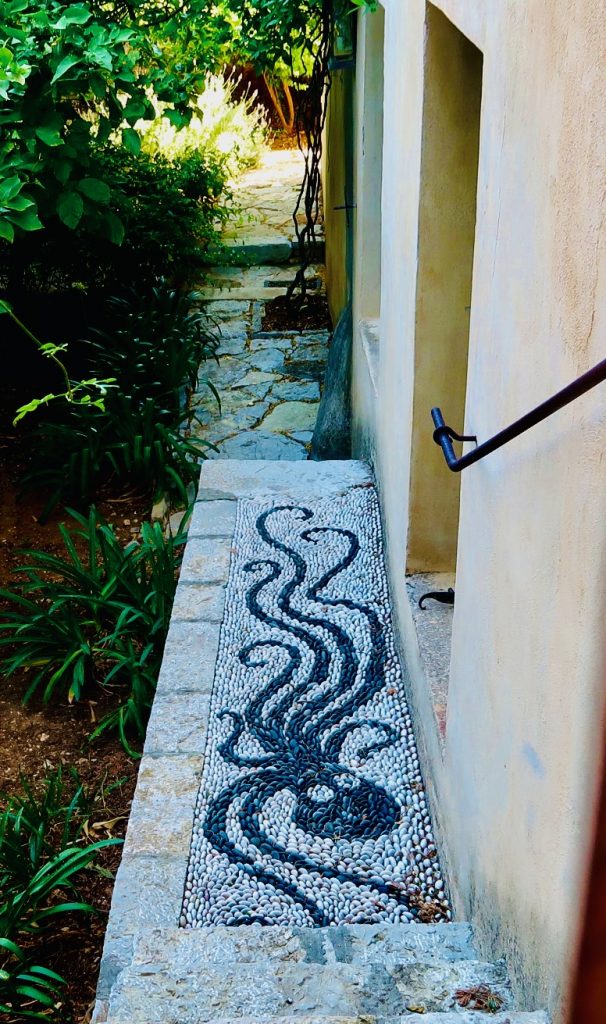

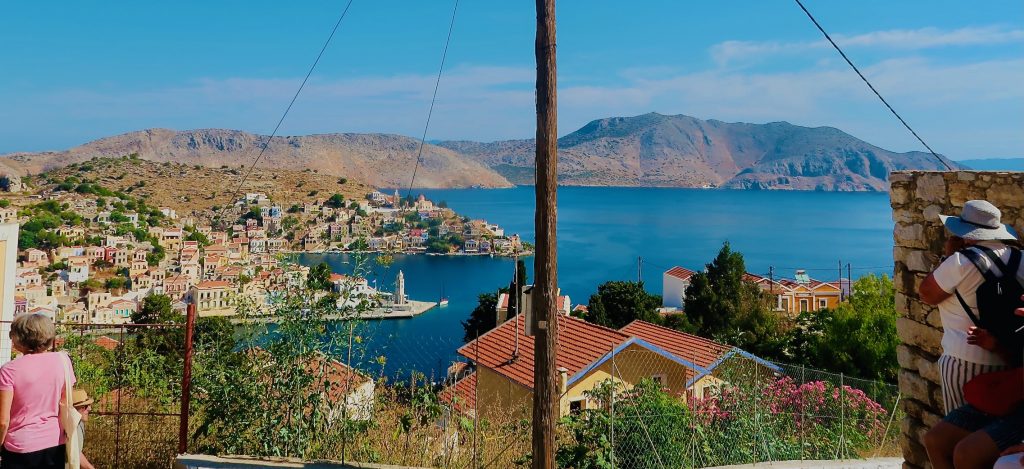

It’s time to retrace our steps. We are now also homeward bound but the double harboured site of Knidos is en route.
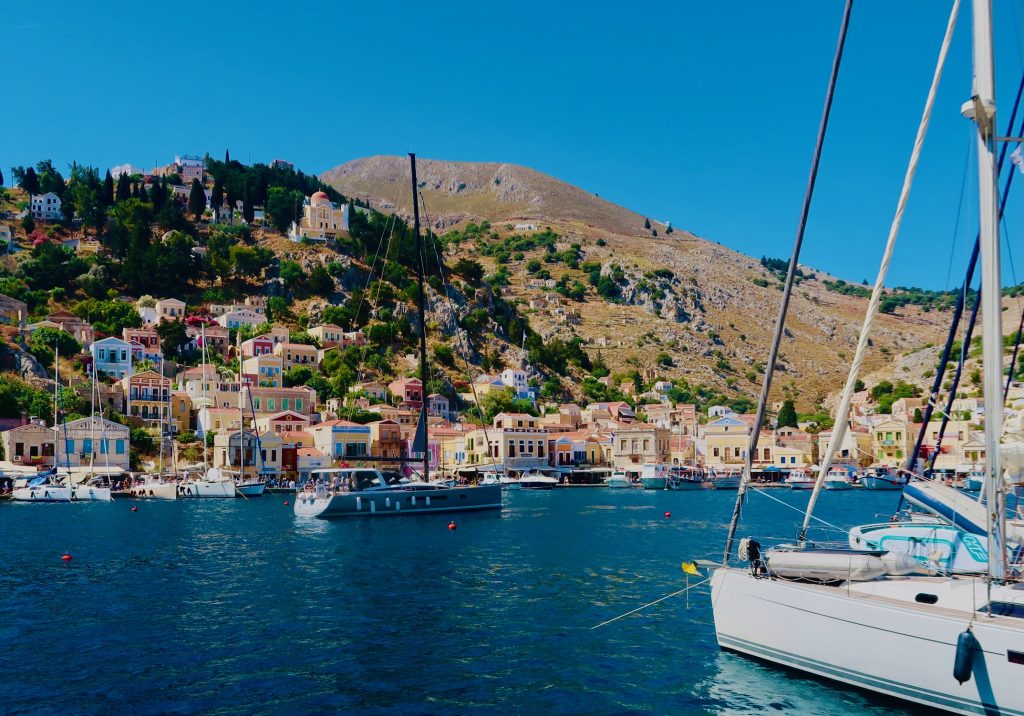
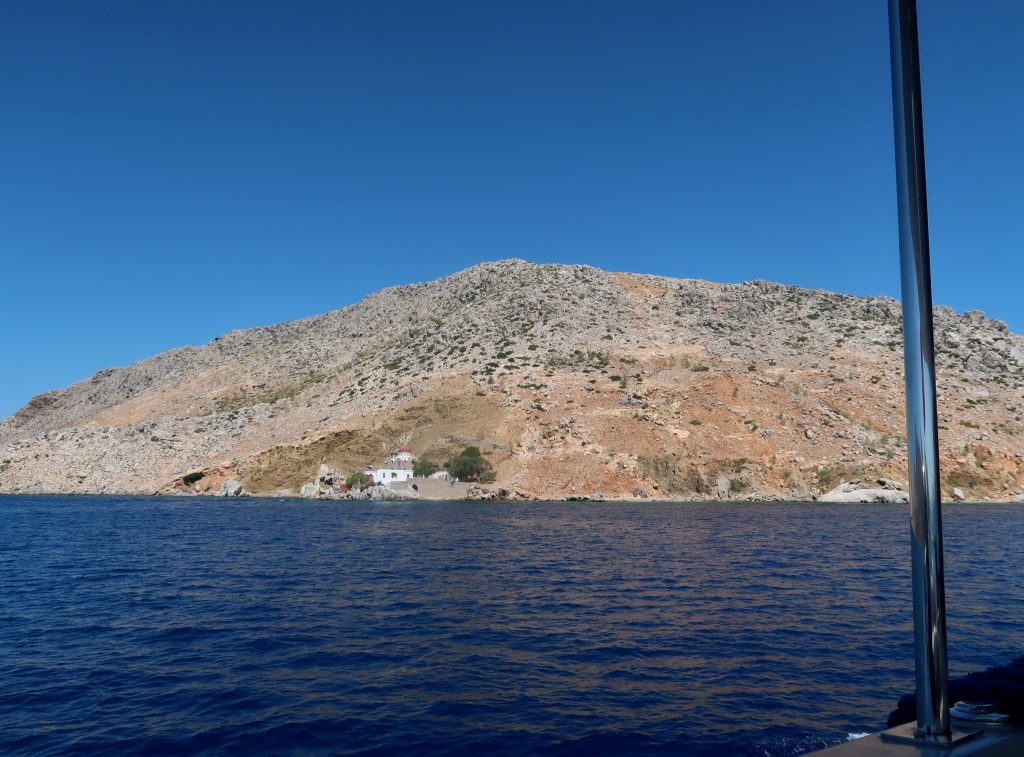
We have to make a stop at Datça as we are once again in Turkish waters and our passports have to be shown in the port. Photos are also taken and we are well and truly stamped.
The interesting thing about stopping here is that for us it’s a return visit from a time maybe seven years ago when we sailed along the Lycian coast in a similar type of boat (gulet). I’m curious to check something out. On my quest I find a shop which sells Datça almonds. They are known for their high quality and will make perfect presents.
Two of our companions, Gail and John, are eating ice creams down by the port. They look good. ‘Yes’, said Gail, ‘they are made of goat’s milk and really delicious’. She pointed out a low building with a picture of a goat on the wall. Thanks, Gail, that was a highlight of my day!
Goat’s milk has a slightly more viscous consistency when made into ice cream and I had crunchy honeycomb added. Oh my, was that the most special treat ever! I was tempted to go back for seconds but there was something more important to resolve.
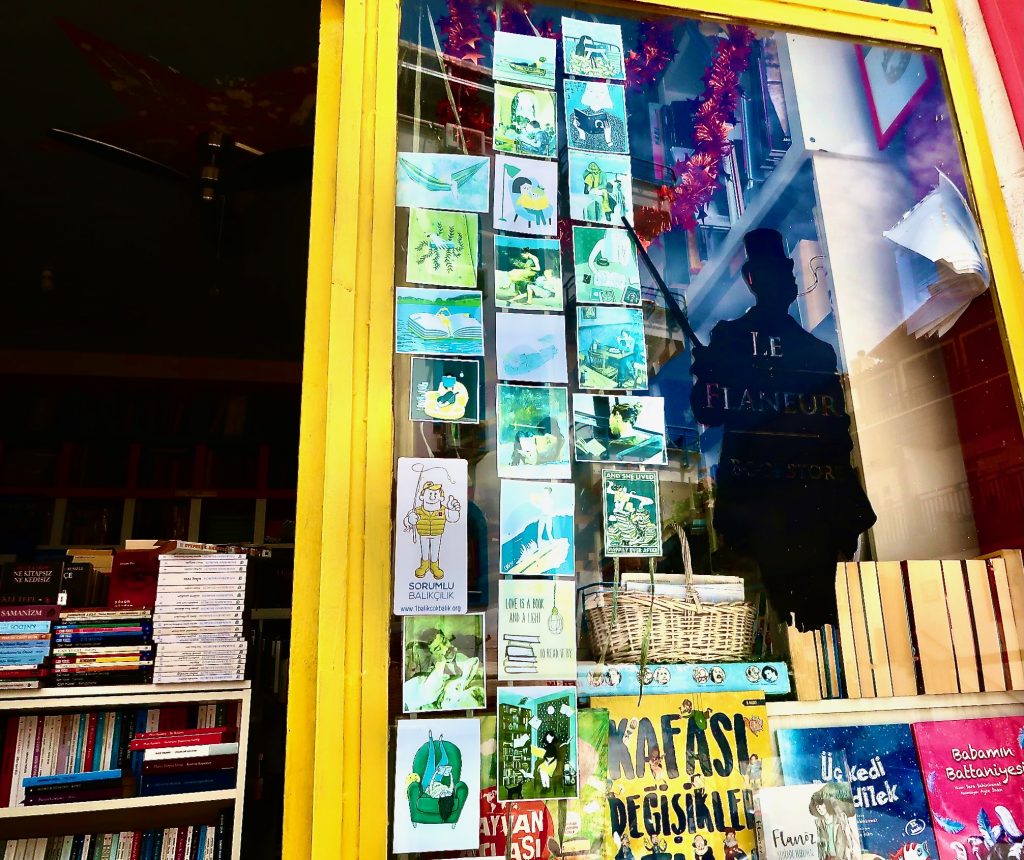
The last time we were here our guide, Andrew Wilson, pointed out a small bookshop a few minutes away from the harbour. It’s called ‘Le Flâneur’ and is owned by a very delightful couple. And it was still there! And so were they …
They sell both new and second hand books in twenty languages – we bought one in English and I bought postcards – old ones of Knidos with those wavy white edges of yesteryear. And I was absolutely so happy to see the two of them again. And because I was so happy I took a lovely photo!
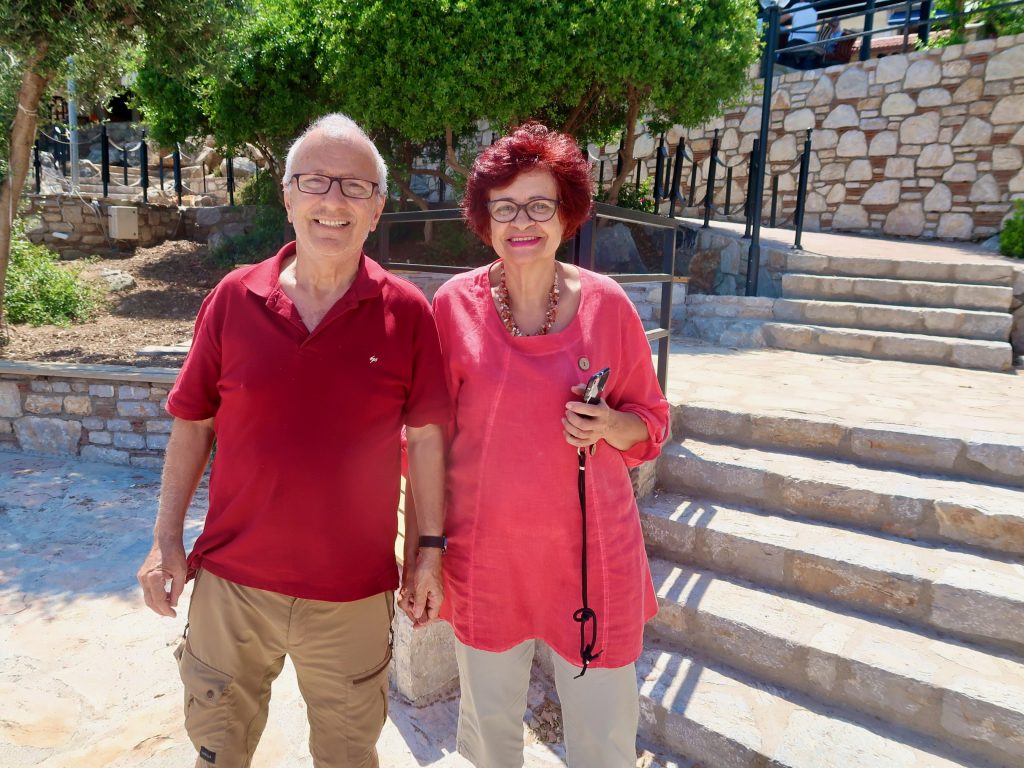
Leaving on a high note, Knidos was in our sights …
The lion of Knidos now welcomes you at the entrance to the British Museum. It is a massive sculpture made of marble and was initially found by a young archaeologist. It was part of a tomb, looking out to sea near Knidos. 150 years ago the tomb was excavated and the lion ended up being transported to the BM. To learn more there is an attractive, small book by Ian Jenkins, published by the BM.
Michael points out where the lion used to reside as we pass.

On top of the cliff at the front you can see the remains of the tomb that was excavated. I expect the lion misses his view over the Aegean …
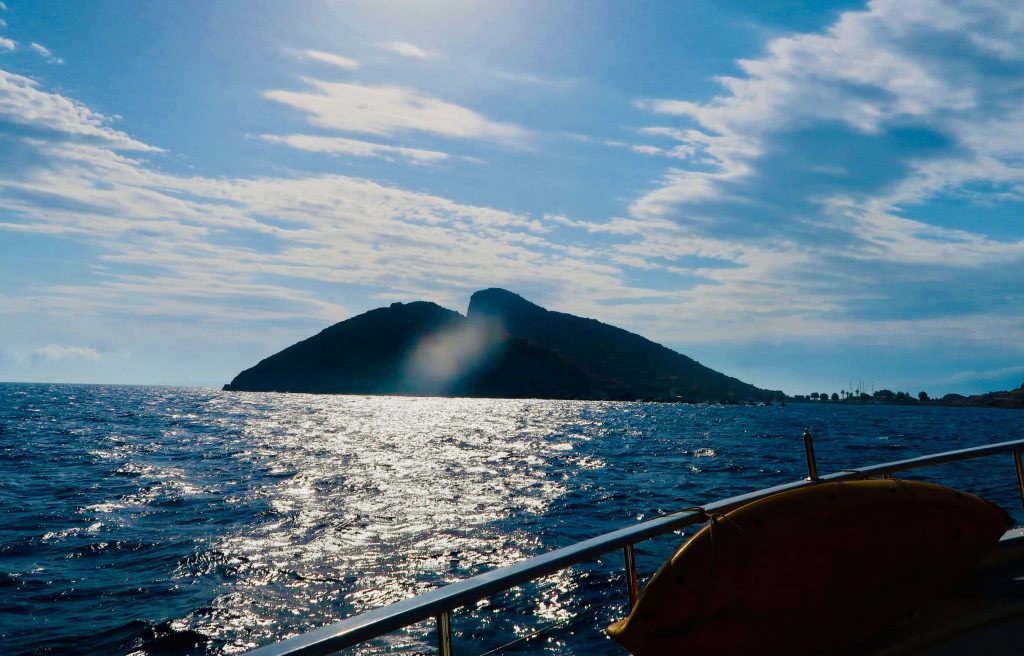
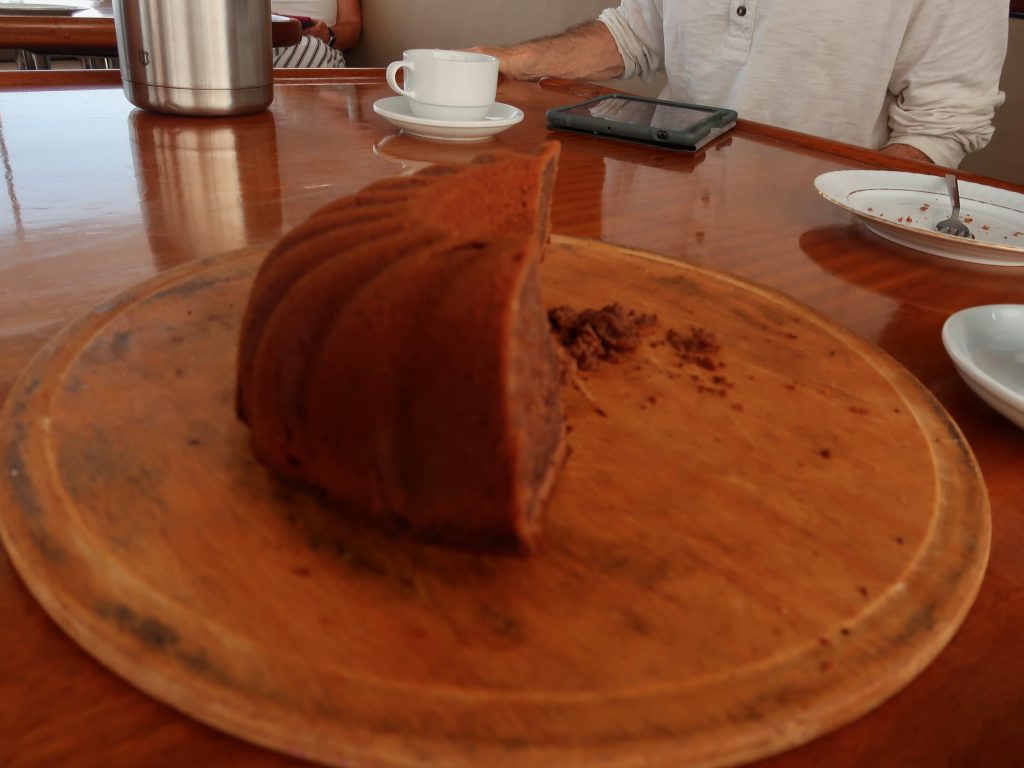
While we were getting our passports checked Gaye was making a cake which appeared at teatime and was duly demolished.
We’re in harbour with fishing boats for the night – I think the site at Knidos has been developed a lot since we were last here. I remember our group doing a Greek play in the amphitheatre last time, directed by Andrew, our guide. Ian Parmenter, a celebrity Australian cook took the main part and made it his own!
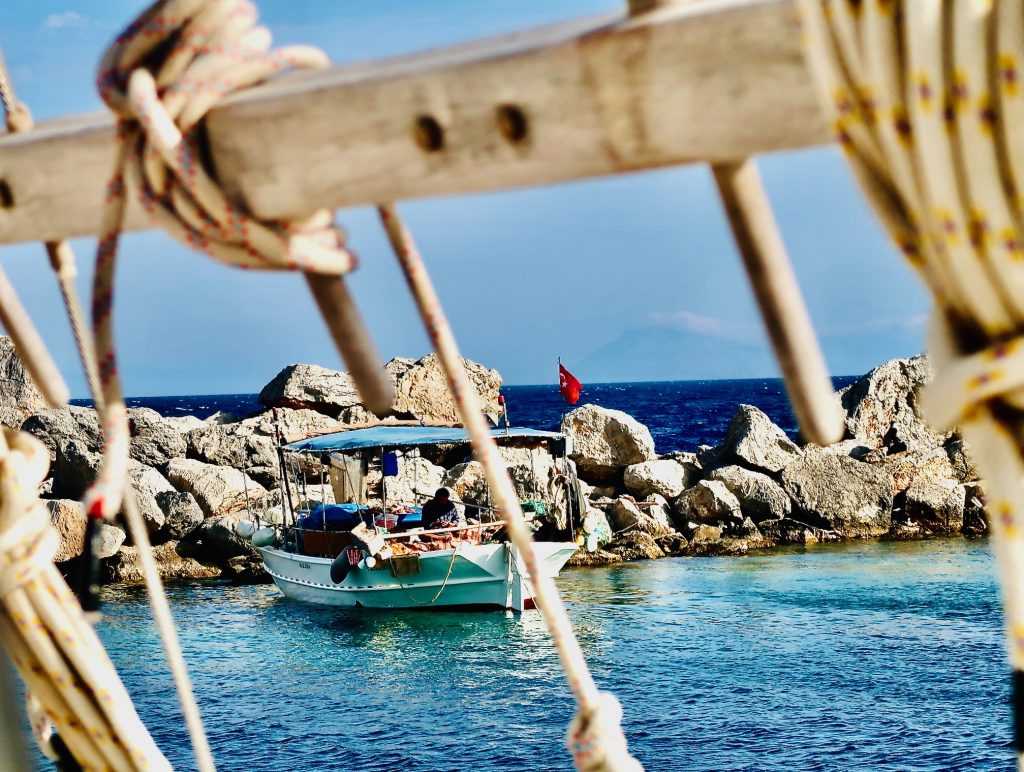
This is a spectacular location at the end of a peninsula. There has been a lot more excavation since we were last here. I didn’t take a lot of photos this time. Instead, can I direct you to my journal dated December 2014 ‘The Lycian Shore – take 2’ when I did take some good photos. It was interesting to get up to date but I was aware that the site would attract more and more tourism. But that has a positive side too. It’s a very special place.
Now we’re in Turkish waters again I’m thinking about how so much has changed since 2014 when we were last here and wonder about the outcome in both the near and distant future. It’s an unsettling time.
And we’re about to enter that world again …

As we arrive back in Bodrum, cases are being packed and we have a last night on the boat. It’s lovely to meet some of the families of the crew as they are welcomed home.
Dinner is a mix of exchanging emails and thanking Michael and Nota for being terrific guides – Nota leaves early next morning for Athens and Michael goes later on to Italy. Breaking up is always hard to do, even though we knew our companions for only two weeks but I hope we may keep up with some of them.
John and I have a day in Bodrum as the plane leaves in the evening. We put our cases in a safe place organised by Michael and having said our goodbyes, decide to visit the castle once more.
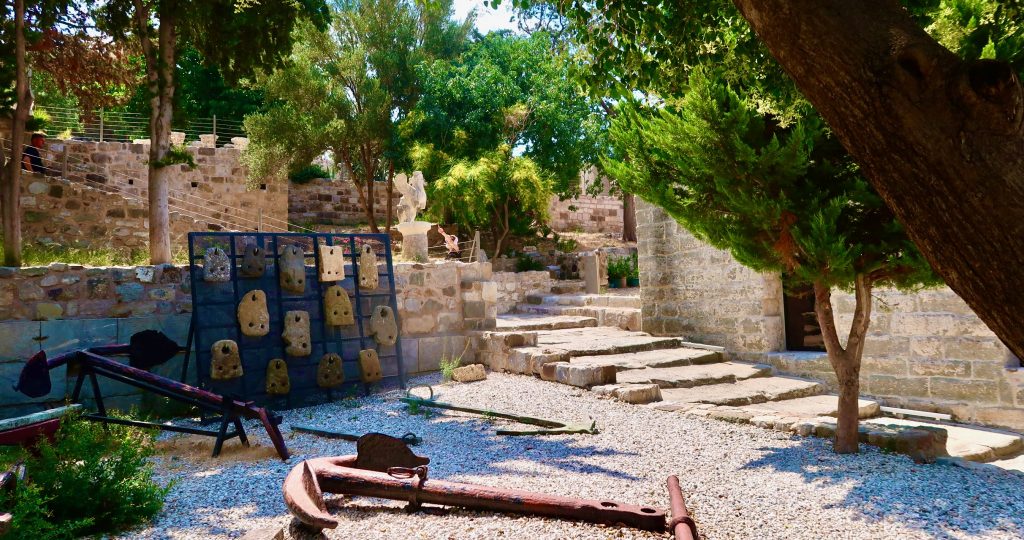
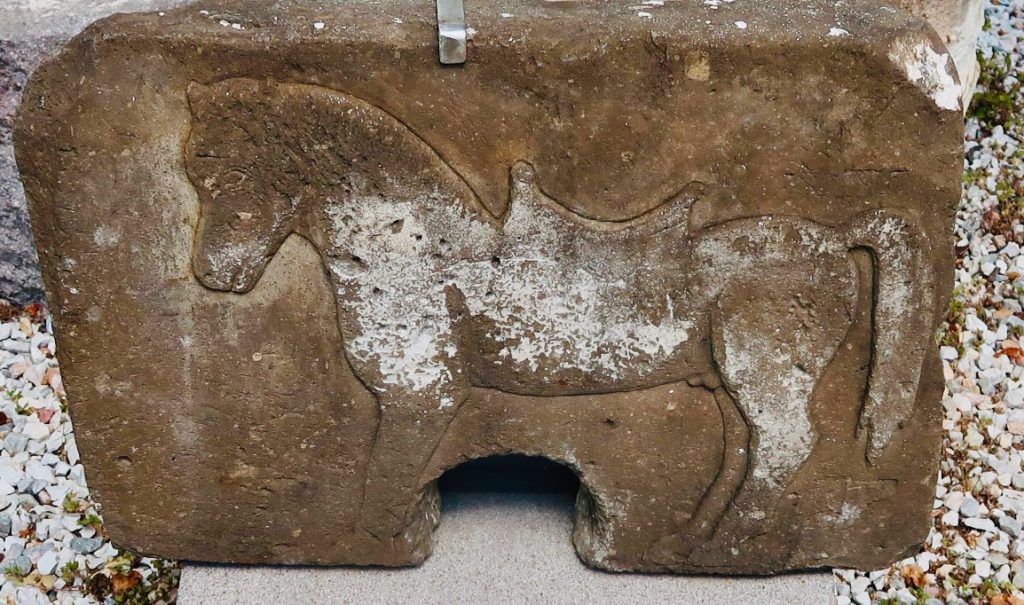

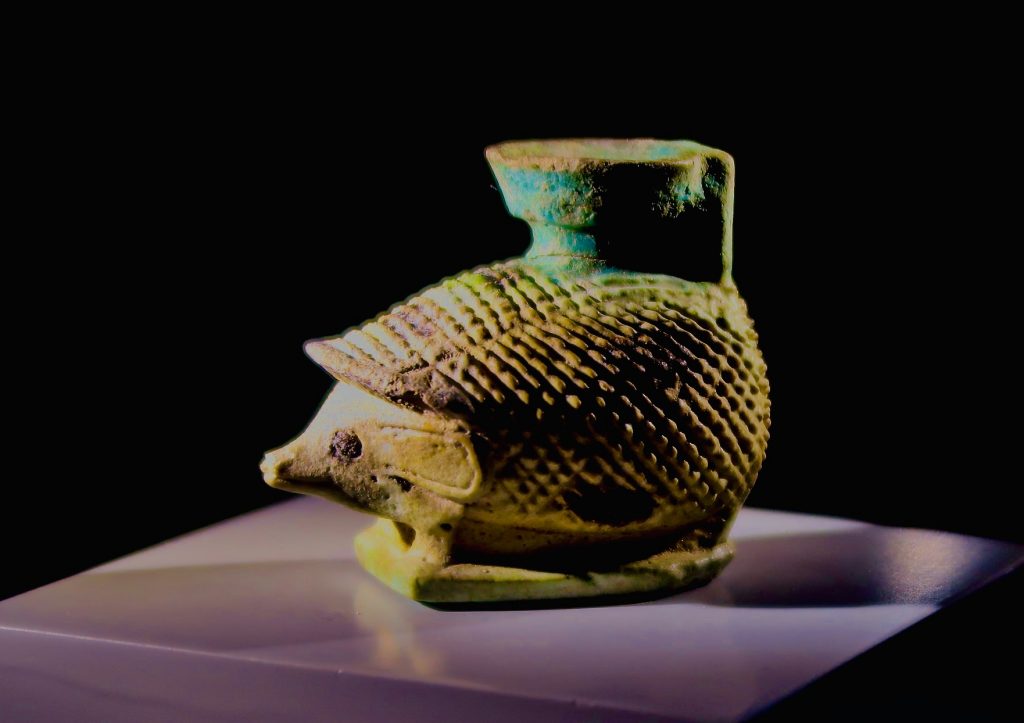

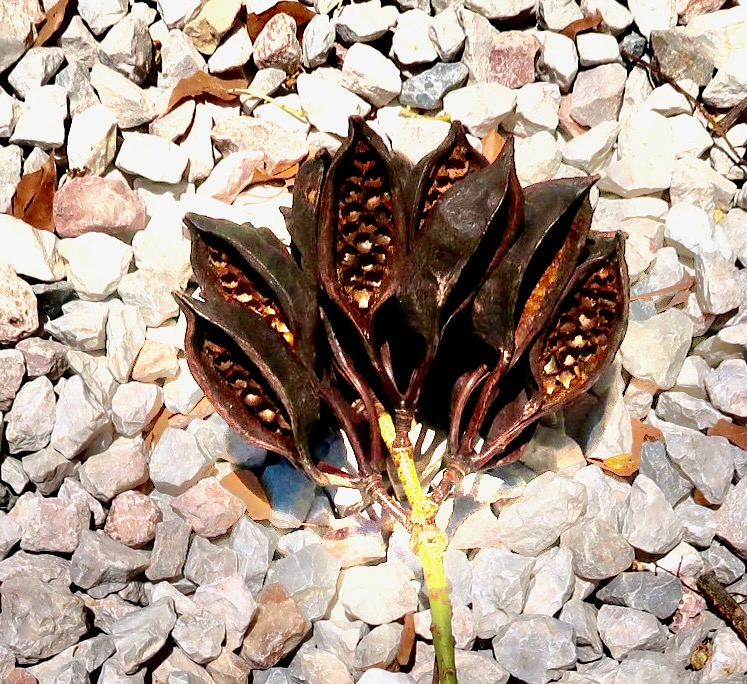
I saw these pods on the ground and wondered where they came from as there was no tree nearby. I just find them very beautiful. I’m including them as at the moment I’m watching a programme on botany – about photosynthesis and how plants grow. It’s especially relevant in the present climate.

The ancient clay pot sharing space with a naval WW1 mine. Food for thought.
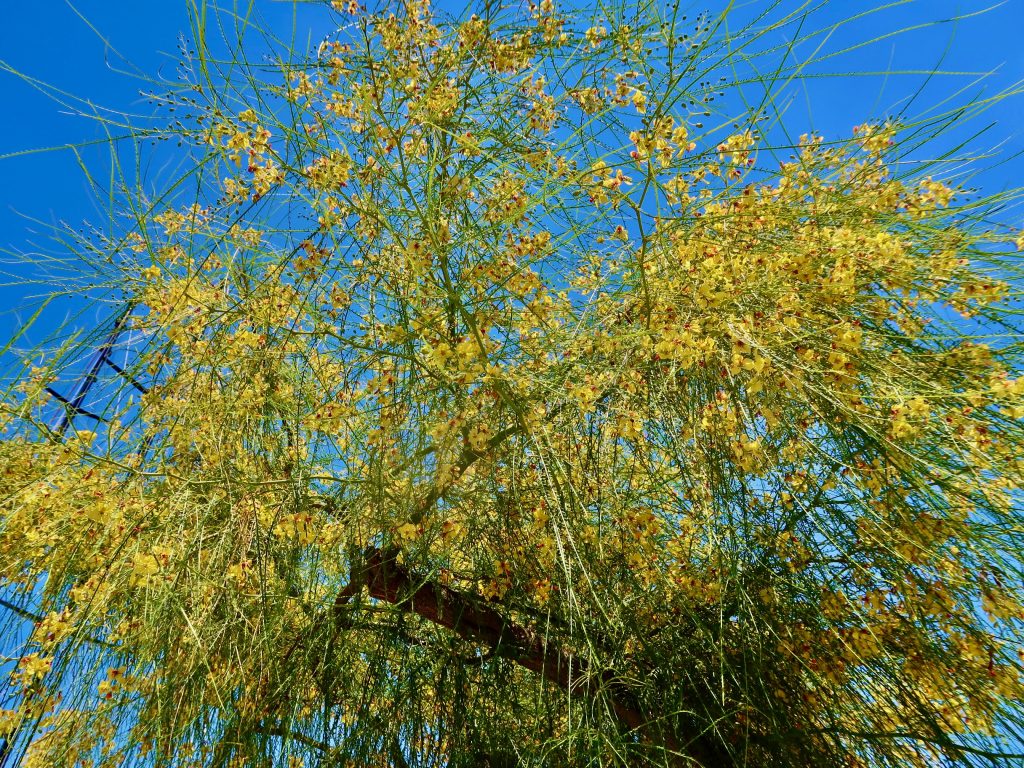
The blue and yellow colours made me think of Ukraine as we sit by the harbour with an energising drink of sage tea.
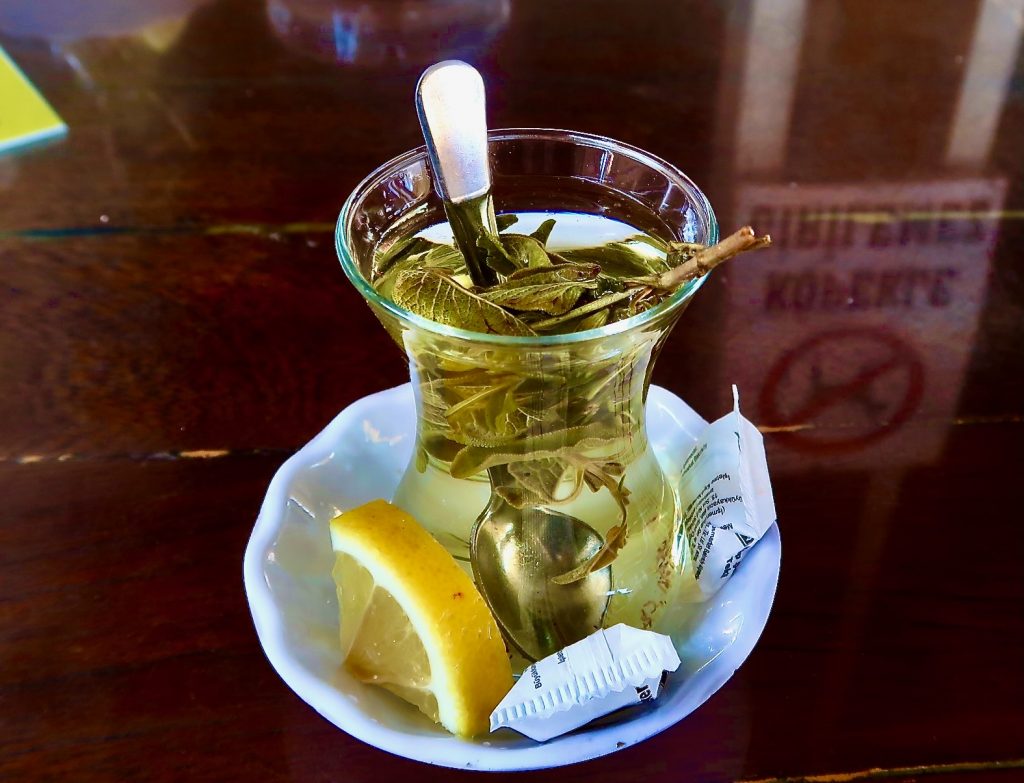
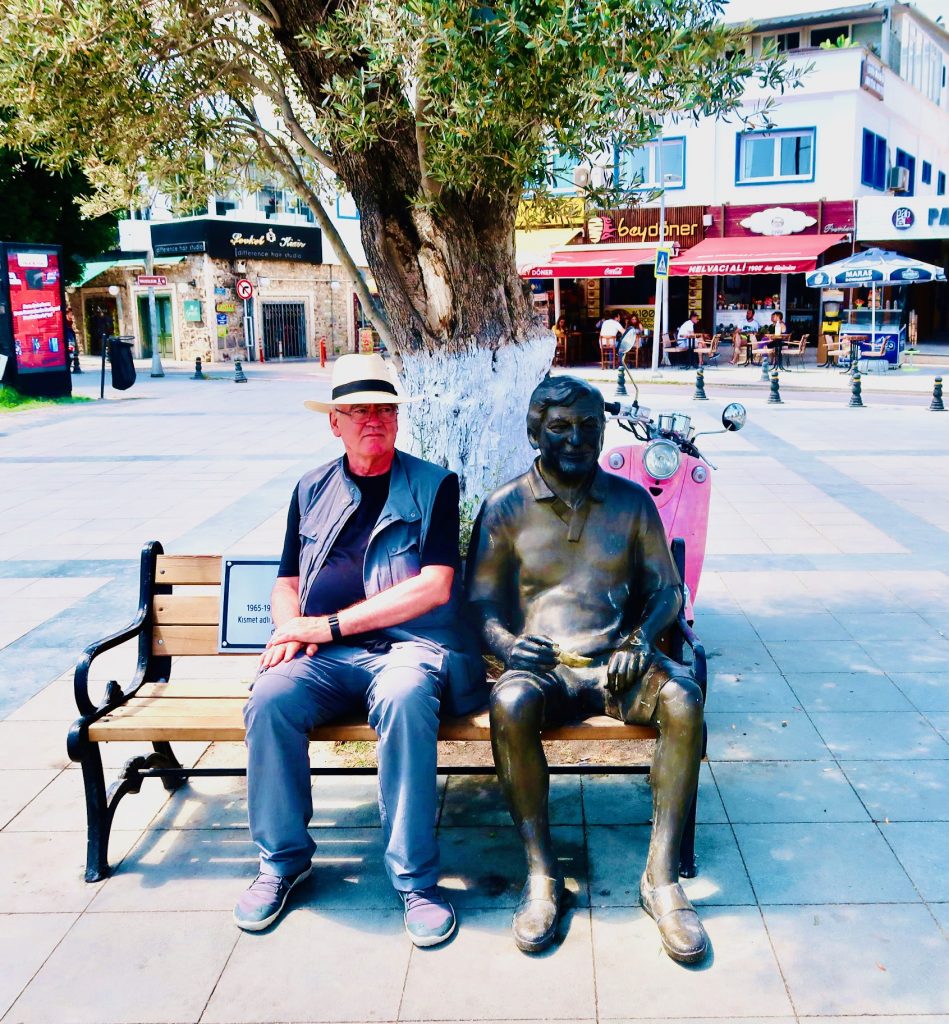
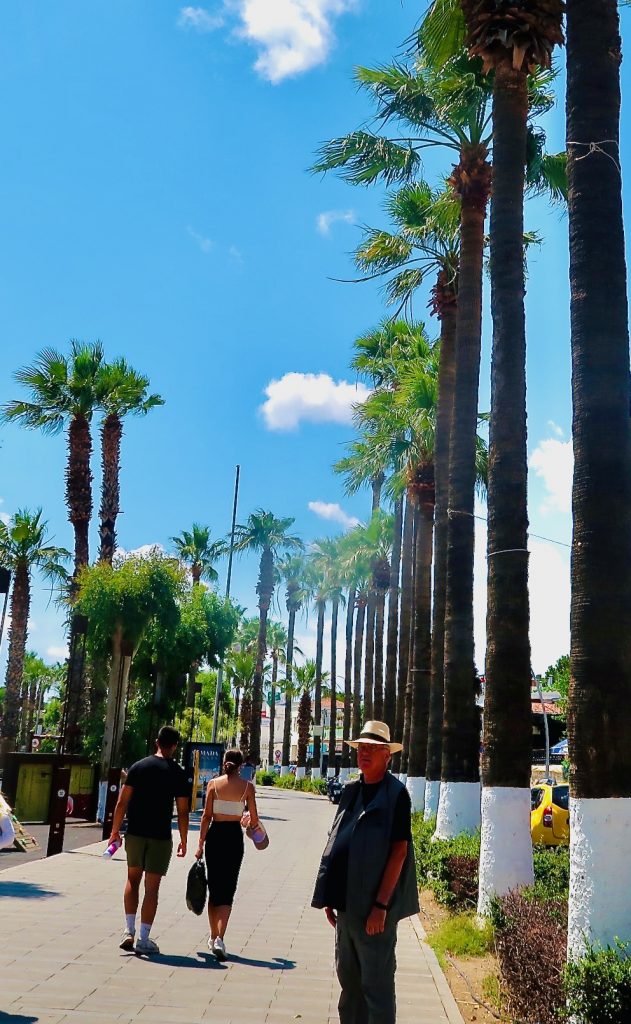
Not so fast … when we got to the airport our plane was cancelled. What to do? We ended up in a mad dash by taxi 170 kilometres through the darkening night sky of the Turkish hinterland to Dalaman, where we managed to get on a packed flight home at 1.30am in the morning.
Luckily, we had booked our flights with a company recommended by our daughter. It was Dennis and Stan at ‘Dial A Flight’ who did a sterling job in taking all the hassle out of our hands. Dennis found us flights from Gatwick to Bodrum at a late stage and Stan now got us home. And they also refunded our flight back and saved me from filling in endless forms and waiting for a refund from Easyjet. I can’t thank them enough. They were brilliant.
And that’s about it! I hope this piece might be helpful if you’re choosing to visit the Dodecanese islands. Personally, I can’t wait to go back.
